- Haneda Airport
- Okachimachi
- Shimokitazawa
- Kiso Valley
- Nozawa Onsen
- Shinanomachi
- Kumano Kodo
- Japan Journeys Style
- Things to do
- Restaurants
- Hiking and Walking
- Amusement Parks
- Animal Attractions
- Museums and Digital Art
- Parks and Gardens
- Sports and Stadiums
- Temples and Shrines
- Experiences
- Places to stay

- Destinations
- Attractions
- Things To Do

The Oldest Things to See in Tokyo: Ultimate Guide
While the historic aspects of Tokyo aren’t as immediately obvious as in some other Japanese cities, there’s plenty to see if you do a bit of digging. From old town areas (also known as Shitamachi) such as the Yanesen District to historic breweries, and ancient temples and shrines, Tokyo rewards the explorer who’s ready to go beyond the high-rises and neon centre.
While there are many old buildings in Tokyo that have been restored or rebuilt (like the three-hundred-year-old Nakajima no Ochaya teahouse which was restored recently, or the famous Sensoji Temple which was originally built in the seventh century), here we are focusing on those places that have withstood the test of time.
Historic Places in Tokyo
Here are some of the oldest things to see in Tokyo to get you started on your heritage trip through Japan’s capital.
Fujimi-Yagura Watchtower in Edo Castle (Imperial Palace)
There’s so much to see in and around the Imperial Palace so a visit to one of the most important historical places in Tokyo should be firmly on your list. While most of the areas in the palace have been restored or recreated, one of the oldest locations is the Fujimi-Yagura Watchtower in the Edo Castle area. The three-storey watchtower remained after the great fire in 1657 which destroyed the castle and stands as a testament to the Edo Castle and other watchtowers which were not rebuilt. The watchtower sits on a fifteen metre high stone wall and is a truly impressive sight. The watchtower gained its name from the fact you could once see Mount Fuji from within.
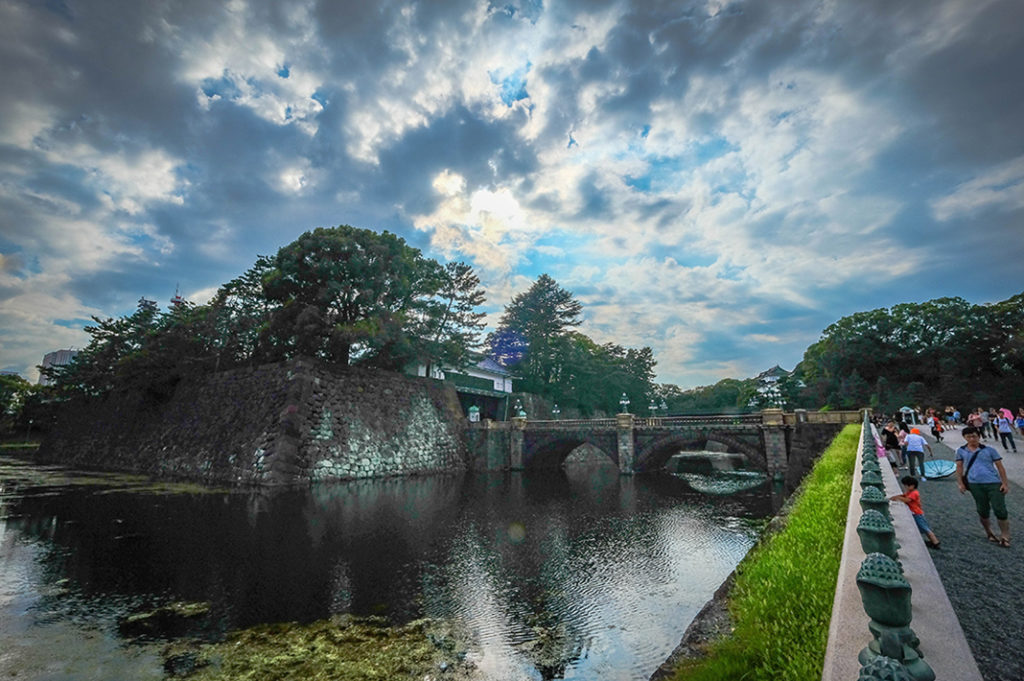
Shofuku-ji – The Oldest Temple in Tokyo
A short walk from Higashimurayama Station, you can wander the grounds of Shofukuji Temple which is thought to be the oldest building in Tokyo (dating back to 1407) and a fine example of Kamakura period architecture. The outside of the building can be visited any time but the inside can only be seen during Jizo-matsuri in November. Designated a national treasure thanks to its 5th-century Jizō hall, this is old Tokyo at its finest.
Mukojima Hyakkaen – The Oldest Tokyo Garden
More than a century old, and Tokyo’s only surviving garden from the Edo period, this garden in Sumida district is strongly associated with art and literature. This is reflected in the choice of flora within the garden which is influenced by Japanese and Chinese ancient poetry. You can find the authors and artists represented by finding the 29 stone monuments to them throughout the garden. A fine example of Japanese garden landscaping, Mukojima Hyakkaen is a peaceful place to spend some time wandering.
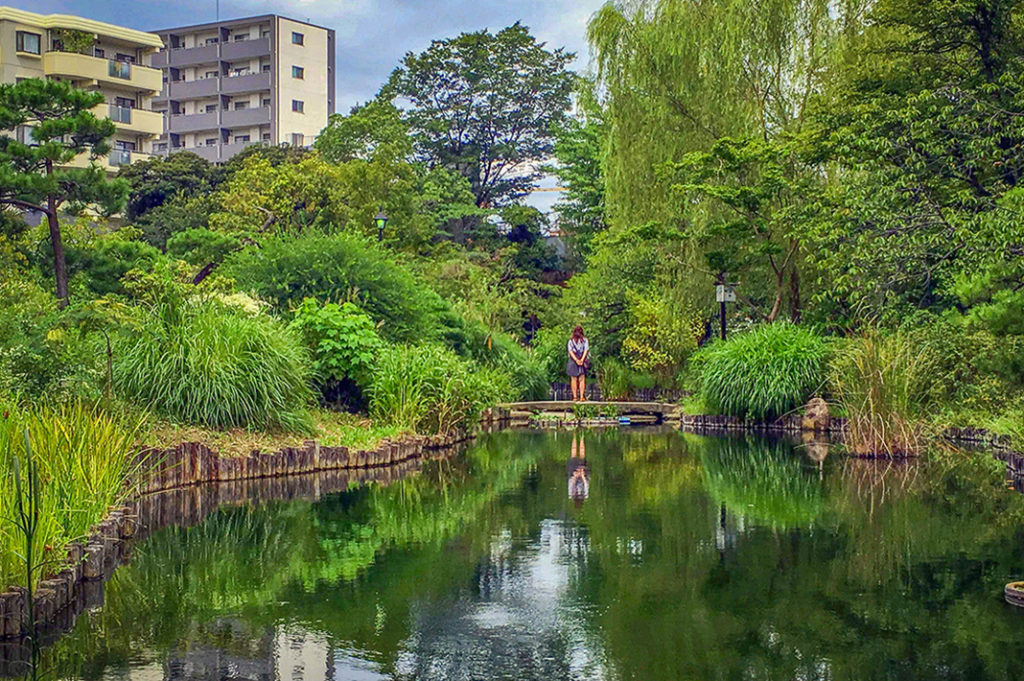
Kan’ei-ji
Found in Ueno Park, this Buddhist Temple is easy to reach and you can combine it with a visit to some of Tokyo’s best museums or a picnic. Built in 1625, Ueno Park was once all part of Kan’ei-ji Temple, and the temple itself was where the troops of the last shogun made their final stand. In fact, in the temple graveyard, you’ll find the graves of six of thirteen of the Tokugawa clan who became shogun. The oldest parts of the temple and points you’ll want to visit include Kiyomizu Kannon-do, the Five-storied Pagoda, and Toshogu Shrine. The temple is actually closer to Uguisudani Station than Ueno Station but you can walk from both.
Asakusa Shrine – Tokyo’s Oldest Shrine
Visiting Asakusa and wandering the Senso-ji Temple and Asakusa Shrine area is on most visitor’s Tokyo itineraries. While Senso-ji didn’t survive the bombings during World War II, the adjacent Asakusa Shrine and Nitenmon Gate did and have since been named Important Cultural Properties. Asakusa Shrine is a Shinto shrine and one of the most famous in the city – it was constructed in 1649 to honor the men who established and constructed the Senso-ji temple .
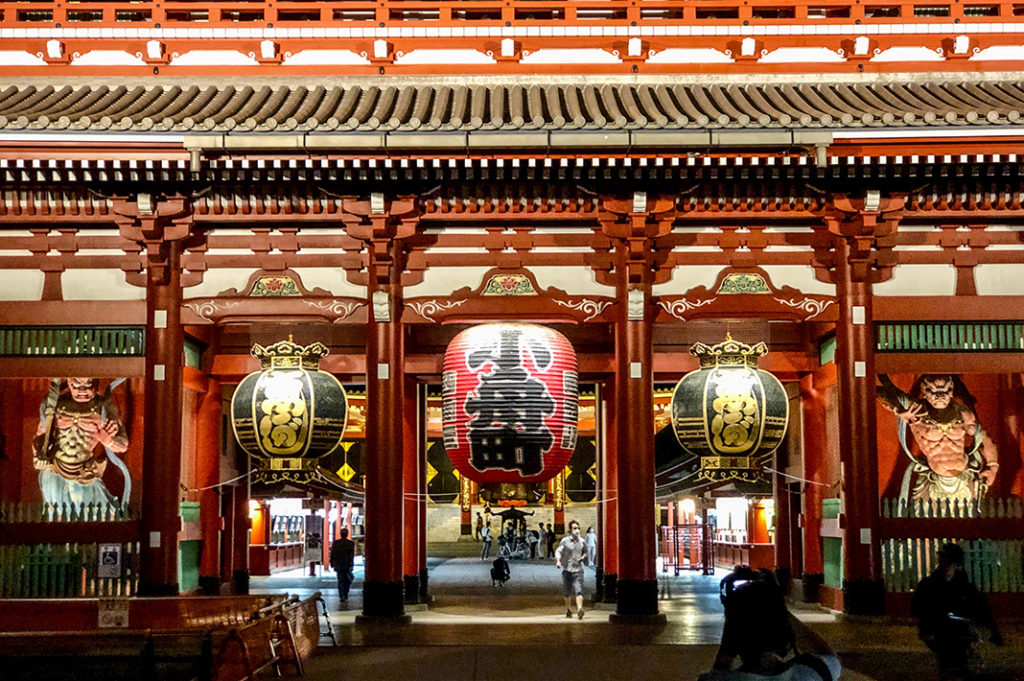
Ozawa Shuzo Brewery
Most of the older sake breweries are situated outside Tokyo but that doesn’t mean you can’t find great breweries in the capital . The oldest brewery in Tokyo can be found in the west of the city in Ome and is open for visitors and well worth a visit. It’s also surrounded by the lush Okutama Forest making for a picturesque and interesting day out with nearby hiking trails and museums. The brewery was founded in 1702 and features restaurants, a shop, and garden area with a barbecue. The brewery is free to tour but you should make reservations in advance. While there are several Japanese tours a day, the English tours are held a few times a month so it’s worth checking their website for more information. One of the oldest things to see in Tokyo and a wonderful chance to try some sake.
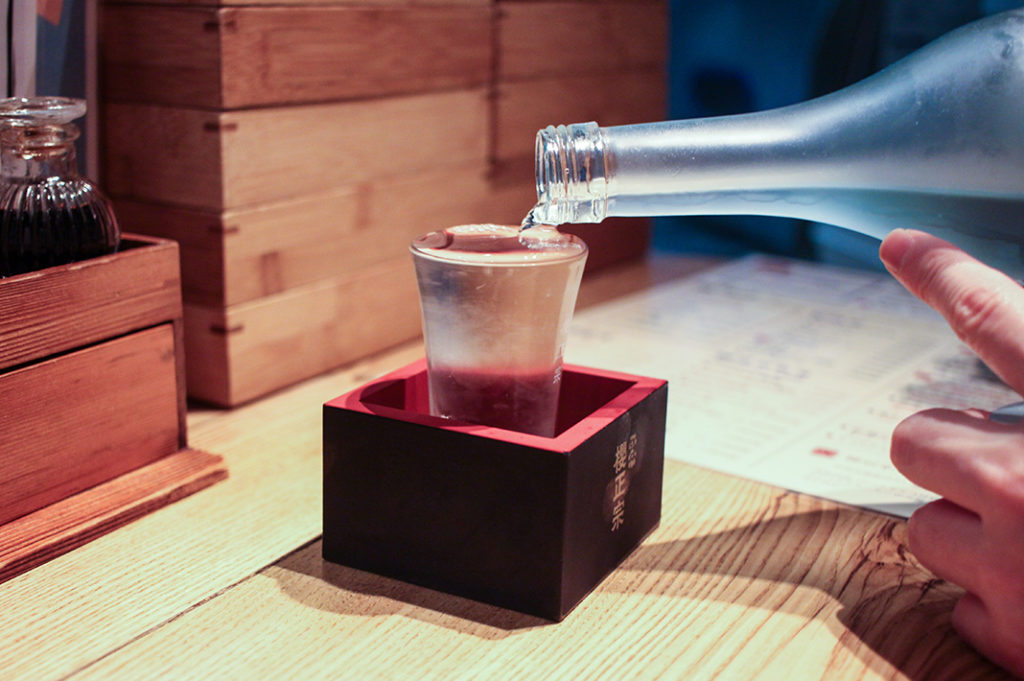
Toki no Kane – Kawagoe
Though not found in Tokyo but, rather, in neighbouring Saitama, the Bell of Time in Kawagoe makes for a wonderful short day trip. Kawagoe itself is known as ‘Little Edo’ and perfect for those who want to enjoy traditional architecture but don’t have time to visit destinations like Kyoto , Kanazawa , or Kamakura . The Bell of Time is a bell tower dating back to the Edo period and can be found on Kurazukuri Street – it’s considered to be the symbol of Kawagoe. Passing under the bell tower will also take you to Yakushi Shrine. You can visit the area by taking the Seibu-Shinjuku line to Hon-Kawagoe Station.

Post by Japan Journeys .
HISTORICAL SITES IN TOKYO: 11 PLACES TO VISIT
Tokyo, a world-famous metropolis, is a melting pot for both the traditional and the ultramodern. And this is evident in the historical sites in Tokyo. Here are some interesting places in Tokyo where you can have a glimpse of its rich history:
READ MORE: MY IMPRESSIONS OF TOKYO: “FASCINATION” IS NOT A WORD STRONG ENOUGH
Historical Sites in Tokyo – Akasaka Palace
Akasaka Palace occupies what was once an area of the Kishū Domain in the Tokugawa Period of Japan. The parcel of land was presented to the Imperial Household following the end of the Meiji Restoration. Construction of the Akasaka Palace commenced in 1899 and followed a Neo-Baroque design. Originally called Tōgū Palace, it was later on renamed when the residence of the Crown Prince was moved to it. After World War II, the Imperial Household relinquished Akasaka Palace to the Japanese government and housed several government offices. After its renovation was completed in 1974, the palace found new function as an official state guest house. In 2009, it earned recognition as a national treasure.

Historical Sites in Tokyo – Asakusa
Travel back in time in Tokyo’s Asakusa district. Asakusa has been a primary entertainment district in Tokyo. During the Tokugawa era, several kabuki theaters can be found in the district, as well as a red light area. Most of Asakusa has retained the traditional architecture and styles of Japan. It is home to four temples, including the Buddhist Sensō-ji that was rebuilt after World War II.
READ MORE: C&C’S COMPLETE QUICK GUIDE FOR THINGS TO DO IN TOKYO

Historical Sites in Tokyo – Hamarikyu Gardens
A public park in the Chūō ward of Tokyo, Hamarikyu Gardens was opened in 1946. Set at the mouth of Sumida River, it was once a villa of Tokugawa Tsunashige, younger brother of the 17 th century Shogun. Built in 1654, it came under the Shogun’s possession when Tsunashige’s son became the Shogun.

Historical Sites in Tokyo – Imperial Shrine of Yasukuni
In Chiyoda, one can find the Shinto Yasukuni Shrine that Emperor Meiji ordered to be built in 1869. The shrine commemorates the Japanese who perished in the line of duty from the 19 th century Boshin War to the 20 th century First Indochina War. Over the years, those enshrined at the Yasukuni complex included those who died in the wars during the Meiji, Taishō and Shōwa periods, convicted war criminals, non-Japanese who perished while in service of Japan, and all those who died in World War II (including those of other nationalities).

Opened in 1889, Kabuki-za is the main venue for traditional kabuki performances in Tokyo. The original wooden Kabuki-za building was destroyed in an electrical fire in 1921. Reconstruction of the theater began in 1922, retaining traditional Japanese architecture yet designed to be fireproof. While still in construction, the building once again burned down during the Great Kantō earthquake of 1923. The new building was finally completed a year later, only to be destroyed again in the World War II Allied bombings. In 1950, Kabuki-za was restored to its 1924 style. However, it was again demolished in 2010 due to issues on accessibility and structural integrity to survive earthquakes. The present theater complex was opened in 2013.

Meiji Jingū
Shibuya is home to the Meiji Jingū, a Shinto shrine ceremonially assigned to the revered spirits of Emperor Meiji and Empress Shōken (his wife). The dedication celebrates his role during the Meiji Restoration. However, one cannot find Emperor Meiji’s grave in the shrine, as it is in Fushimi-momoyama in Kyoto.

Ryōgoku Kokugikan
Also called Ryōgoku Sumo Hall, this indoor sporting arena in the Sumida ward of Tokyo is mainly used for honbasho events. The original Ryōgoku Kokugikan was built in 1909 and was the venue for sumo tournaments until 1946. After 1946, sumo tournaments took place at the Meiji Shrine grounds until 1954, when tournaments were again moved to the newly-opened Kuramae Kokugikan. The present Ryōgoku Kokugikan was opened in 1985 and has been the main venue for sumo tournaments in Tokyo ever since.

Tokyo Imperial Palace
The main residence of the Japanese Emperor, the Tokyo Imperial Palace complex includes the main palace, Imperial Family residences, museums, archives, administrative offices, grounds and gardens. The palace complex rises on what used to be the Edo Castle that the Japanese Emperor first occupied in 1868, renaming it Imperial Castle in 1869. Suffering from fire damage over the years, a new Imperial Palace Castle was built in 1888. In 1945, majority of the structures in the Imperial palace suffered destruction when the Allied forces raided Tokyo. The current main palace hall and residences were built on the western area of the Imperial Palace in the 1960s. In 1968, the eastern portion of the palace was opened to the public as the East Garden .

Tokyo Station
Originally called Chūō Teishajō or Central Station, Tokyo Station was built in 1908 in front of the Imperial Palace gardens. It opened in 1914 serving two electric trains over four platforms. In 1921, the south gates of the station witnessed the fatal stabbing of then Prime Minister Hara Takashi. Former Japanese Prime Minister Osachi Hamaguchi survived a shooting incident at the station in 1930, only to die of the wounds the following year. Most of the station suffered great damage during the firebombing raids of 1945. It was quickly reconstructed after the war and the alterations made on the structure are often blamed for the erroneous idea that it is designed after the Amsterdam Central Station.

Yanaka Cemetery
Yanaka Reien or Yanaka Cemetery is in one of the neighborhoods where you can still feel the Shitamachi atmosphere of Tokyo. Often referred to with its old name, Yanaka Bochi, it is famous for its cherry blossom-covered paths in April, as well as the five-storied pagoda ruins on site. The pagoda is recognized as a historical landmark after it was burned in 1957 during the Yanaka Five-Storied Pagoda Double-Suicide Arson Case.

One of the most famous temples in Tokyo, Zōjō-ji is the primary temple for the Jōdo-shū Chinzei Buddhist sect in the Kantō region. During the Edo period, six Tokugawa shoguns were laid to rest at the Taitoku-in Mausoleum within the Zōjō-ji grounds. These days, it is a prime example of how the old meets the new in Tokyo, with the Tokyo Tower seen standing tall behind the main hall of the temple.

Anthony Bourdain Vietnam: All Of The Restaurants Picked On Parts Unknown

Andrew Zimmern Tokyo: All Of The Restaurants Picked On Delicious Destinations

Anthony Bourdain Osaka : All Of The Restaurants Picked On No Reservations

Anthony Bourdain Sichuan: All Of The Restaurants Picked On Parts Unknown
Comments are closed.
- [do_widget_area builder-41047]
- [do_widget_area footer-1]
- [do_widget_area footer-2]
- [do_widget_area footer-3]
- [do_widget_area footer-mob]
- [do_widget_area mob-slide-menu]
- [do_widget_area sidebar-default]
- [do_widget_area slide-menu]
- [do_widget_area timed-popup]
- [do_widget id="custom_html-2"]
- [do_widget id="tbnwidget-3b63a912-2127-4f51-a91d-1183fb96c5bf"]
- [do_widget id="tbnwidget-13987752-c081-4181-8705-66e0aa39cb17"]
- [do_widget id="tbnwidget-89eab4d8-9768-4384-a65c-f2a8da4c2abd"]
- [do_widget id="tbnwidget-9da9fd42-8b81-4db1-9fea-0d57a5f763cc"]
- [do_widget id="tbnwidget-6488ca25-9916-4631-8898-5e5ef085ab41"]
- [do_widget id="tbnwidget-24f8b705-4a39-4d68-ae15-d21d5b4e896f"]
- [do_widget id="tbnwidget-7ba2cef8-cc90-4635-ae30-28855efb6598"]
- [do_widget id="zeen_stylish_posts-2"]
- [do_widget id="zeen_social_icons-2"]
- [do_widget id="text-19"]
- [do_widget id="search-2"]
- [do_widget id="search-3"]
- [do_widget id="text-3"]
- [do_widget id="text-4"]
- [do_widget id="text-11"]
- [do_widget id="text-14"]
- [do_widget id="text-15"]
- [do_widget id="text-16"]
- [do_widget id="text-17"]
- [do_widget id="nav_menu-4"]
- [do_widget id="newsletterwidget-2"]
- [do_widget id="newsletterwidget-3"]
- [do_widget id="calendar-3"]
- [do_widget id="calendar-4"]
- [do_widget id="text-18"]
- [do_widget id="nav_menu-5"]
Sightseeing Tokyo? | The 15 best historical attractions | Travel Guide
Can you imagine a more advanced city on earth than Tokyo ? In the 1600s, this place was just an irrelevant fishing village that significantly changed in the 1960s as one of the most developed cities in the world. During the Second World War, it was heavily bombed and most of the city’s buildings were destroyed. But the reconstruction was mainly focused on technology and the future. So where should you go to find out more about the history of this bustling city? In this article, I will introduce you to the 15 best attractions with a touch of historical significance.
Looking for accommodation in Tokyo? Asakusa is one of the nicest areas of the city. It still breathes the atmosphere of the past and you will find a lot of traditional Japanese hotels, so-called ryokans.

15. Meet the Lucky Cats at Gotokuji Temple
Gotokuji Temple (護国寺) is a shrine in Tokyo dedicated to the Maneki-Neko. In this Buddhist temple you will find a lot of statues of beckoning cats, also called the ‘lucky cats’. Legend has it that during the Edo period (1603-1868), a priest’s cat brought a feudal landlord to safety during a thunderstorm by beckoning to him. Once inside, sipping a cup of tea, the squire was so grateful that he decided this was the place for his family tomb. Nowadays, more and more cats can be found here, as visitors come to donate their purchased lucky cat. To visit Gotokuji Temple, go to the Setagaya district.
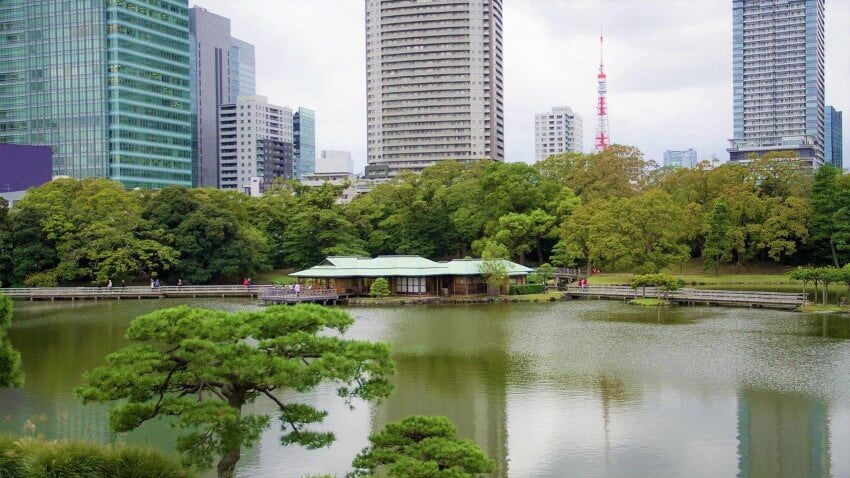
14. Visit some classic Japanese gardens
Hama Rikyu Onshi-teien (浜離宮恩賜庭園) is one of the most beautiful gardens in Tokyo. Once a residence of a feudal lord during the Edo period, it was used as a hunting ground. Nowadays, you can go for a walk or attend a Japanese tea ceremony in the tea house. This garden is located south of Tokyo Station. Another garden you can visit is the Koishikawa Korakuen (小石川後楽園). It too belongs to one of the oldest in the city and was also built for a feudal lord. Both gardens are beautiful to visit in autumn in October/November and during the blossom period in March/April.

13. Visit the Sumo museum or watch a sumo match
The Ryogoku district is the place to learn more about sumo wrestling . The sport is thought to have originated in Korea, but only really became known at the Imperial Court of Japan. Therefore, anyone visiting Japan should, if possible, experience a sumo match. Tournaments are held in various cities across the country, but the most famous stadium is in Tokyo: Ryogoku Kokugikan. For more information on tickets, visit the Ryogoku Kokugikan website .
12. The most controversial temple of Japan, the Yasukuni Temple
When Shinzo Abe resigned as Prime Minister of Japan in September 2020, he visited the Yasukuni Shrine (靖国神社). China and South Korea did not appreciate his visit. In 2013 Abe did the same and also that was against the sore leg of these countries. But why really?
In the Yasukuni Temple, north of the Imperial Palace, the victims of various wars, including the Second World War, are commemorated. But the register also contains convicted war criminals, such as the then prime minister Hideko Toji (1884-1948). He was finally sentenced to death in 1948. The 14 prominent war criminals listed in the register contributed to the Japanese occupation of China and South Korea. A visit to this temple by a politician is therefore seen by these countries as an endorsement for these crimes.

11. Visit the 1923 Great Kanto Eartquake Memorial Museum
On September 1, 1923, Tokyo was hit by one of the worst earthquakes ever. Tens of thousands of inhabitants lost their lives and a large part of the city went up in flames as a result of the force. In the Ryogoku district, close to the Edo-Tokyo Museum, a center dedicated to this great disaster, the Kanto Earthquake Memorial Museum , has been established.
The museum is not large and free to visit. Through pictures, you can see what damage this earthquake caused. You can also take a walk through Yokoamichio Park . Here you will find a number of monuments in memory of the victims. There is also a monument that commemorates the victims of the bombing of Japan during the Second World War.

10. Eat fish in the old Tsukiji or the new Toyosu fish market
Japanese are true fish lovers. They eat the craziest fish and for the poisonous pufferfish, a cook must have a special diploma to be able to prepare it. Therefore, it is not surprising that you will come across a number of fish markets here. Until 2018 you could visit the most famous and largest of the country (or the world), Tsukiji . Unfortunately, it had to close its doors, as the working conditions at the new fish market, Toyosu , have improved considerably.
So if you want to discover the fish market well, you have to get up early for that. Around 4 o’clock it opens, but also around 7 o’clock you will see plenty of activity. And don’t forget to eat a fish somewhere. At the old market in Tsukiji, you can also eat fish in the many small stores next door. For the real market, you go to Toyosu!
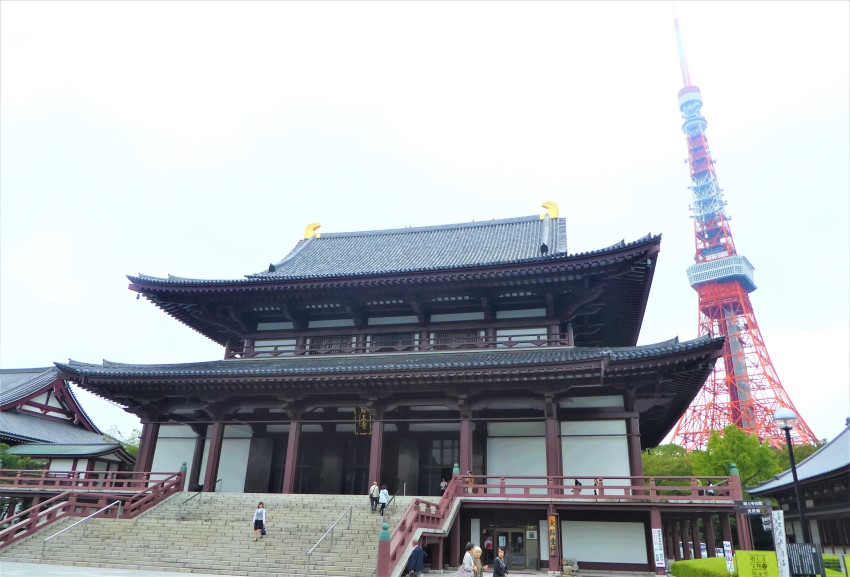
9. Enjoy the view of the city and climb the Tokyo Tower
A visit to the Zojoji Temple can be combined with Shiba Park and Tokyo Tower . The Tokyo Tower is inspired by the design of the Eiffel Tower . There are only a few differences. The Tokyo Tower is painted orange and 9 meters higher than its French brother. Also, the weight is half the weight of the Eiffel Tower.
The Tokyo Tower was built in 1958 and was the symbol for the resurrection of the Japanese economy after the Second World War and the Korean War. It serves as a television mast and can withstand heavy gusts of wind and earthquakes. And of course, you can also enjoy the view of the city from the two observation decks.
Since 2012, the Tokyo Skytree is Japan’s tallest building. Also here it is possible to have a beautiful view of the city. Of course, you have to buy a ticket for both towers to get on it. Do you want to enjoy a beautiful view over Tokyo for free? Then head to the Tokyo Metropolitan Government Buildings in the Shinjuku district. A good tip: go when it’s clear and there are no clouds around the building…

8. Go to the city’s historically most important temple: the Zojoji Temple in Shiba Park
The Zojoji Temple is a sanctuary in the Minato district. Not many tourists go here and that is a pity. Because historically, this used to be perhaps the most important temple of the city. And some members of the Tokugawa family , the former rulers of Japan, are buried here. This was also the center of Pure Land Buddhism . This movement within Buddhism is now one of the most popular in East Asia.
Would you like to know more about the Zojoji Temple and Pure Buddhism? Then read the article Zojoji Temple | Why Tokyo’s most important temple?
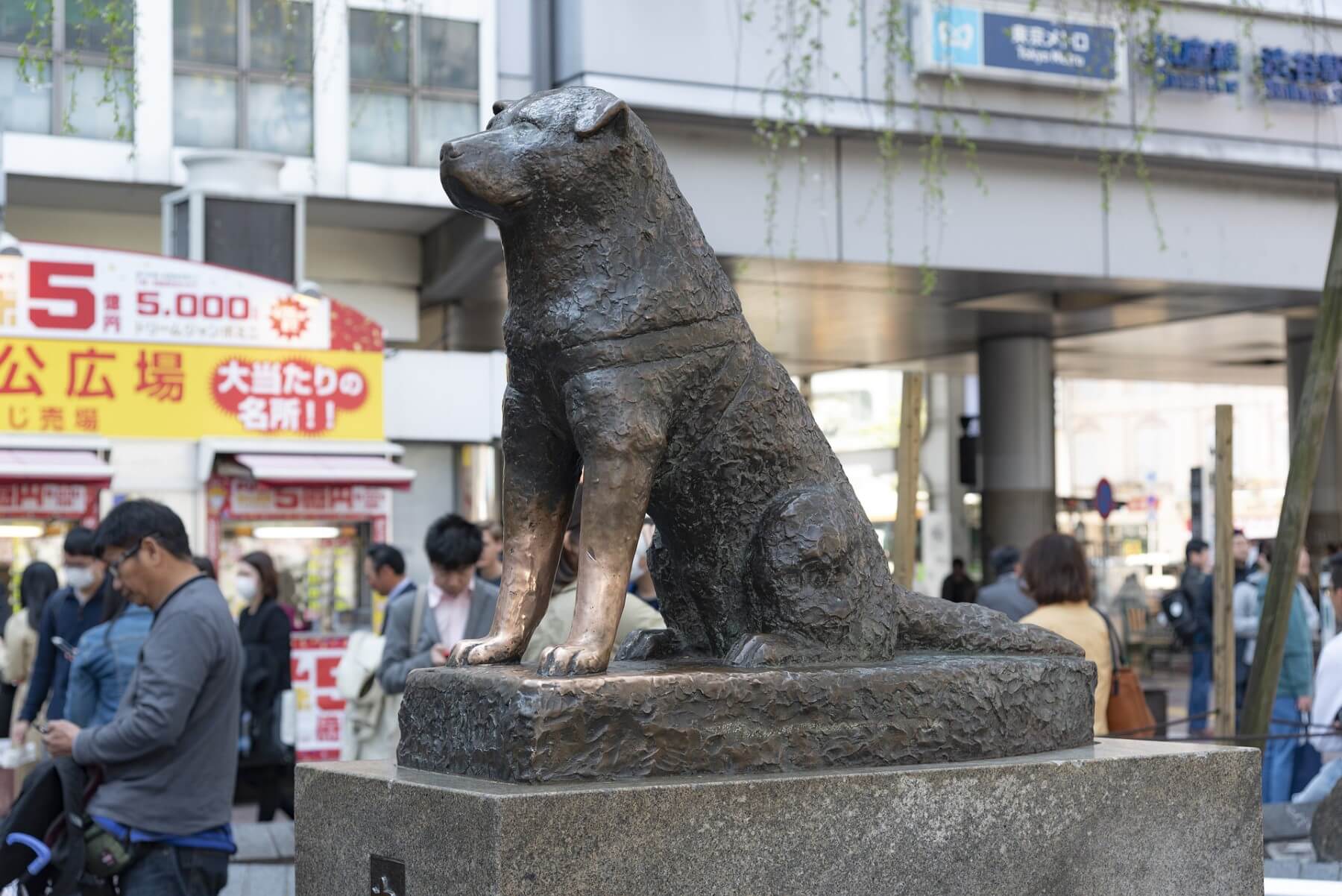
7. Walk across the busiest crossroad in the world, Shibuya Crossing and meet the dog Hachiko
The busiest intersection in the world is located in the district of Shibuya . Every hour tens of thousands of people across the crosswalks, but beware! Be back on the other side in time, before the traffic starts moving again. And don’t bump into anyone! Strange as it may sound, Shibuya Crossing is an exciting experience in itself.
But while you’re here, will you take a picture with Hachiko ? This Japanese dog of the Akita breed is considered one of the most loyal dogs in the world . He lived in the thirties of the last century and after his death, it was decided to put a bronze statue in front of him here.
Do you want to know exactly what the story of Hachiko is? Read the article Shibuya Crossroads, Tokyo | How Hachiko became the most loyal dog in the world…
6. Visit Japan’s largest museum, the National Museum of Tokyo
If you like to go to Museums, don’t skip the National Museum of Tokyo (東京国立博物館). This is the largest museum in Japan and is also one of the top 10 largest museums in the world. It consists of several buildings with various exhibitions, but the collection consists mainly of Asian art.
Examples from the large collection include antique Buddhist statues, ceramics, the traditional clothing of the samurai and weapons, costumes, and masks. You can also stroll through the gardens of the museum and enjoy a delicious cup of tea in one of the classic Japanese tea houses .

5. Walk through Ueno Park and visit Kaneiji Temple
Ueno Park (上野恩賜公園) is located in the Ueno district north of downtown Tokyo. In 1924 Emperor Yoshihito donated the park to the city. Since then, it has been one of the busiest public parks in the city.
In the months of April and May, it is Ueno Onshi Kōen, the official name of a beautiful place to enjoy the beautiful blossom. But there is more. Here you will find several statues, including the important Dutch doctor Dr. A.F. Bauduin (1820-1885), but also Ueno Zoo a Toshogu shrine, and several museums. The most famous museum is the National Museum of Tokyo .
But at the time of the Edo-shogunate (1603-1868) stood here the most important temple of Tokyo, the Kaneiji Temple . This temple was built in 1625 to defeat enemies from the northeast of the city. A large part of the current Ueno Park consisted of this temple. During the Boshin War of 1868-1869, a large part of the Kaneiji Temple was destroyed. What remains can be found north of Ueno Park.

4. Experience the city’s history in the futuristic Edo-Tokyo Museum
The best way to experience the city’s history is to visit the Edo-Tokyo Museum in the Ryogoku district. It’s housed in perhaps one of the strangest buildings you’ve ever seen. Designer was Japanese Kiyonori Kikutake (1928-2011). He can be seen as one of the most important protagonists of Metabolism . This typical Japanese style of architecture aimed to design buildings that could easily be adapted to the needs of the future. The Edo-Tokyo Museum is a good example of this.
The museum gives a good insight into the more than 400 years of history of the city of Tokyo. Feel free to take a few hours to explore it or have a guided tour with the free guides available at the entrance of the museum. They will be happy to tell you about the ups and downs of the city of Tokyo.
But if you already want to know more about it? Read the article Edo-Tokyo Museum | 400 years of history in a special museum .
Finally , the Ryogoku district east of the city center is known as the center of sumo wrestling . Don’t skip the small Sumo museum in the Ryōgoku Sumo Hall.

3. Go to the Meiji Jingu Shrine to honor Emperor Meiji
The Meiji Jingu Shrine is a sanctuary in the Harajuku district. It is surrounded by trees and a walk to this temple gives you a mystical feeling of relaxation and tranquility. An ideal moment to escape the busy city, right? The Meiji Shrine was built at the beginning of the twentieth century in honor of Emperor Meiji and his wife. It was mainly this emperor who laid the foundation for Japan as a modern society. A visit to his temple should therefore not be missed.
Would you like to know more about why Emperor Meiji was so important to Japan? Read the article Meiji Shrine, Tokyo | Tribute to Emperor Meiji in a beautiful park .

2. Visit the gardens of the Kokyo Imperial Palace in Chiyoda
The heart of the city is formed by the Kokyo Imperial Palace in Chiyoda . Since the year 1603, it has been the center of power in Japan. Then it was called the Edo Castle . Until 1868 the Tokugawa family lived here. They were for more than 250 years the most important rulers of the country. In 1868, when the system of landlords and the samurai was abolished, the emperor moved into the palace.
The Kokyo Imperial Palace is not open to visitors. However, it is possible to attend an organized tour around the palace. The Imperial Gardens can be visited free of charge a few days a week. Here you will find remnants of the former Edo Castle.
Would you like to know more about the history and backgrounds of this castle? Read all about it in the article Imperial Palace, Tokyo | Follow the route along the former Edo Castle

1. Discover the Sensoji Temple in the cozy neighborhood of Asakusa
With more than 8 million visitors a year, the Sensoji Temple is the city’s main attraction. Therefore, it can be quite crowded there, but you should definitely not skip this colorful place. It is located in the cozy Asakusa district north of downtown Tokyo. This temple is all about a mysterious golden statue of Kannon, the god of grace.
And besides visiting the temple you can also take a walk through the Nakamise Dori , the oldest street in Tokyo. Here you can find nice Japanese souvenirs and enjoy the most delicious Japanese dishes.
Would you like to know more about the history and backgrounds of this beautiful colorful temple? Then read the article Sensoji Temple Tokyo? 5 historical facts you need to know !
Of course, there is much more to experience in this large metropolis. Do you have any tips about special places in Tokyo? Then feel free to leave a message below!
Historian and Backpacker/World Traveler. In Travel4history I write about special destinations from a historical point of view. How else can you get to know and understand the world better than by learning about its history....
Leave a Comment Cancel Reply
Save my name, email, and website in this browser for the next time I comment.
This website uses cookies to improve your experience. We'll assume you're ok with this, but you can opt-out if you wish. Accept Read More

Tokyo (����, Tōkyō) is Japan's capital and the world's most populous metropolis. It is also one of Japan's 47 prefectures , consisting of 23 central city wards and multiple cities, towns and villages west of the city center. The Izu and Ogasawara Islands are also part of Tokyo.
Prior to 1868, Tokyo was known as Edo. Previously a small castle town , Edo became Japan's political center in 1603 when Tokugawa Ieyasu established his feudal government there. A few decades later, Edo had grown into one of the world's largest cities. With the Meiji Restoration of 1868, the emperor and capital moved from Kyoto to Edo, which was renamed Tokyo ("Eastern Capital"). Large parts of Tokyo were destroyed in the Great Kanto Earthquake of 1923 and the air raids of 1945.
Today, Tokyo offers a seemingly unlimited choice of shopping , entertainment, culture and dining to its visitors. The city's history can be appreciated in districts such as Asakusa and in many excellent museums , historic temples and gardens . Contrary to common perception, Tokyo also offers a number of attractive green spaces in the city center and within relatively short train rides at its outskirts.
Top attractions in Tokyo
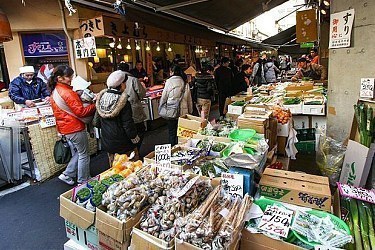
Tokyo by interest

Getting there and around
Itinerary ideas.
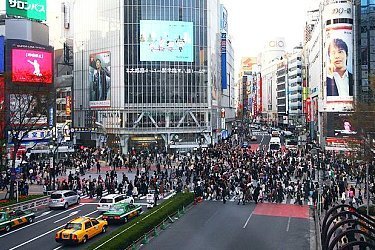
- Tranquil Meiji Shrine
- Urban exploring in Shibuya
- Shopping in Shinjuku and youth culture in Harajuku
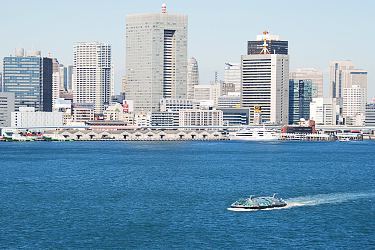
- Ancient Sensoji Temple
- Cruise down the Sumida River
- Shopping in modern Odaiba
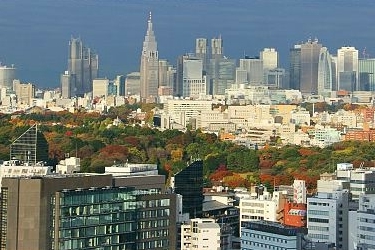
- Exploring Shinjuku's busy streets
- Relaxing in Shinjuku Gyoen
- Taking in the skyscraper district
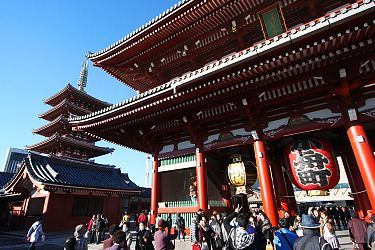
- Exploring Asakusa area
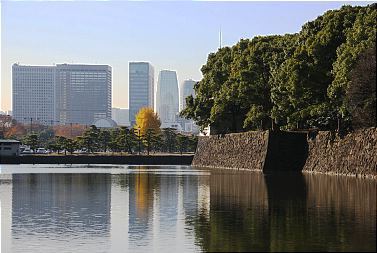
- Serene Imperial East Gardens
- Lively Ginza shopping district
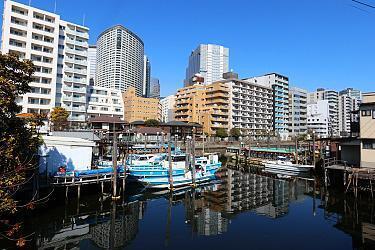
- Old-fashioned post town
- Artsy Tennozu Isle
- Waterfront walk
Questions? Ask in our forum .
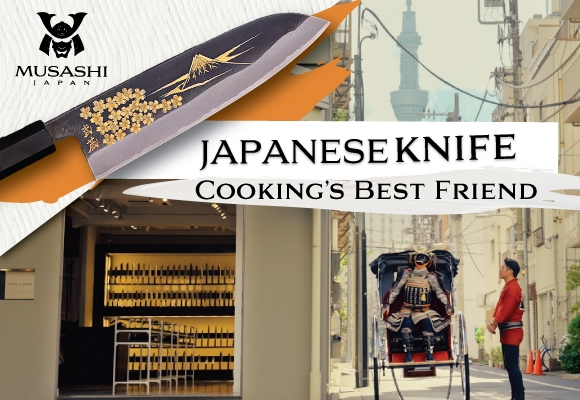
Links and Resources
Tokyo metropolitan government, hotels around tokyo, tokyo hotel guide.
How to choose the best places to stay in Tokyo
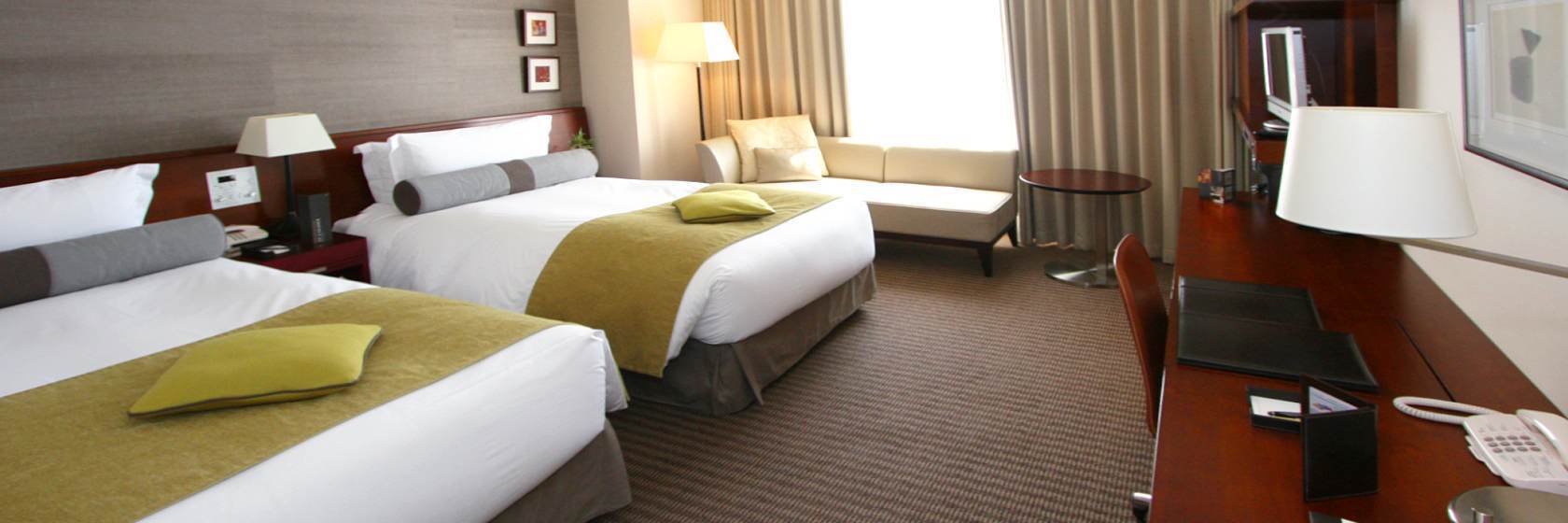
Experiences around Tokyo


The 50 most historic buildings and sites in Tokyo
Navigate forward to interact with the calendar and select a date. Press the question mark key to get the keyboard shortcuts for changing dates.
Navigate backward to interact with the calendar and select a date. Press the question mark key to get the keyboard shortcuts for changing dates.

Attractions

1 Tokyo Station
2 Imperial Palace

3 Edo-Tokyo Open Air Architectural Museum
4 shinjuku gyoen national garden, 6 yasukuni-jinja shrine, 7 state guest house akasaka palace, 9 tokyo tower, 10 meiji jingu, 11 edo-tokyo museum, 12 tsukiji hongwan-ji temple, 13 kabuki-za, 14 nezu shrine, 15 mukojima-hyakkaen gardens, 17 tokyo metropolitan government building, 19 the hakone open-air museum, 21 asakusa shrine, 22 mount takao, 23 odawara castle, 24 asakusa culture tourist information center, 25 nezu museum, 26 kanda myojin shrine, 27 roppongi, 28 hanazono shrine, 29 the university of tokyo, 30 harajuku station, 31 kiyosumi gardens, 32 fukagawa edo museum, 33 the national museum of modern art, tokyo, 34 shitamachi museum, 35 the sumida hokusai museum, 36 koishikawa botanical garden, 37 hotoku ninomiya shrine, 38 kanei-ji, 39 kyu asakura house, 40 godzilla statue, 41 shibuya city, 42 kamakura, 43 shinjuku city, 44 meguro city, 46 kanagawa, 47 edo castle ruins, 48 hie shrine, 49 sengaku-ji, 50 ueno toshogu shrine, top searches in tokyo, popular road trips from tokyo, what's the weather like in tokyo.
It depends on when you visit! We've compiled data from NASA on what the weather is like in Tokyo for each month of the year: see the links below for more information.
- Weather in Tokyo in January
- Weather in Tokyo in February
- Weather in Tokyo in March
- Weather in Tokyo in April
- Weather in Tokyo in May
- Weather in Tokyo in June
- Weather in Tokyo in July
- Weather in Tokyo in August
- Weather in Tokyo in September
- Weather in Tokyo in October
- Weather in Tokyo in November
- Weather in Tokyo in December
All road trips from Tokyo
- Tokyo to Kyoto drive
- Tokyo to Osaka drive
- Tokyo to Nikko drive
- Tokyo to Seoul drive
- Tokyo to Nagoya drive
- Tokyo to Kanazawa drive
- Tokyo to Fujikawaguchiko-machi drive
- Tokyo to Matsumoto drive
- Tokyo to Hiroshima drive
- Tokyo to Sapporo drive
- Tokyo to Karuizawa-machi drive
- Tokyo to Takayama drive
- Tokyo to Ito drive
- Tokyo to Shizuoka drive
- Tokyo to Sendai drive
- Tokyo to Hakodate drive
- Tokyo to Nagano drive
- Tokyo to Hamamatsu drive
- Tokyo to Fukuoka drive
- Tokyo to Busan drive
- Tokyo to Ise drive
- Tokyo to Nasu-machi drive
- Tokyo to Nagasaki drive
- Tokyo to Hokuto drive
- Tokyo to Himeji drive
- Tokyo to Kobe drive
- Tokyo to Niigata drive
- Tokyo to Mito drive
- Tokyo to Toyama drive
- Tokyo to Chichibu drive
Explore nearby places
All related maps of tokyo.
- Map of Tokyo
- Map of Chiyoda
- Map of Chuo
- Map of Minato
- Map of Bunkyo
- Map of Taito
- Map of Sumida
- Map of Shinjuku
- Map of Koto
- Map of Shibuya
- Map of Shinagawa
- Map of Arakawa
- Map of Meguro
- Map of Toshima
- Map of Kita
- Map of Nakano
- Map of Itabashi
- Map of Setagaya
- Map of Edogawa
- Map of Adachi
- Map of Katsushika
- Map of Suginami
- Map of Nerima
- Map of Urayasu
- Map of Kawaguchi
- Map of Toda
- Map of Ichikawa
- Map of Soka
- Map of Matsudo
- Map of Komae
Tokyo throughout the year
- Tokyo in January
- Tokyo in February
- Tokyo in March
- Tokyo in April
- Tokyo in May
- Tokyo in June
- Tokyo in July
- Tokyo in August
- Tokyo in September
- Tokyo in October
- Tokyo in November
- Tokyo in December
Looking for day-by-day itineraries in Tokyo?
Get inspired for your trip to Tokyo with our curated itineraries that are jam-packed with popular attractions everyday! Check them out here:
- 1-Day Tokyo Itinerary
- 2-Day Tokyo Itinerary
- 3-Day Tokyo Itinerary
- 4-Day Tokyo Itinerary
- 5-Day Tokyo Itinerary
Best historic buildings in nearby cities
- The most historic buildings and sites in Yokohama
- The most historic buildings and sites in Chuo
- The most historic buildings and sites in Shibuya
- The most historic buildings and sites in Chiyoda
- The most historic buildings and sites in Koto
- The most historic buildings and sites in Setagaya
- The most historic buildings and sites in Toshima
- The most historic buildings and sites in Sumida
- The most historic buildings and sites in Ota
- The most historic buildings and sites in Shinagawa
- The most historic buildings and sites in Kamakura
- The most historic buildings and sites in Meguro
- The most historic buildings and sites in Saitama
- The most historic buildings and sites in Narita
- The most historic buildings and sites in Chiba
- The most historic buildings and sites in Hakone-machi
- The most historic buildings and sites in Katsushika
Best attractions in nearby cities
- Top things to do and attractions in Yokohama
- Top things to do and attractions in Chuo
- Top things to do and attractions in Shibuya
- Top things to do and attractions in Chiyoda
- Top things to do and attractions in Koto
- Top things to do and attractions in Toshima
- Top things to do and attractions in Sumida
- Top things to do and attractions in Ota
- Top things to do and attractions in Kawasaki
- Top things to do and attractions in Kamakura
- Top things to do and attractions in Meguro
- Top things to do and attractions in Saitama
- Top things to do and attractions in Nakano
- Top things to do and attractions in Narita
- Top things to do and attractions in Edogawa
- Top things to do and attractions in Hakone-machi
- Top things to do and attractions in Nerima
- Top things to do and attractions in Kita
- Top things to do and attractions in Musashino
- Top things to do and attractions in Arakawa
- Top things to do and attractions in Mitaka
- Top things to do and attractions in Urayasu
Best restaurants in nearby cities
- Where to eat: the best restaurants in Yokohama
- Where to eat: the best restaurants in Chuo
- Where to eat: the best restaurants in Shibuya
- Where to eat: the best restaurants in Chiyoda
- Where to eat: the best restaurants in Koto
- Where to eat: the best restaurants in Setagaya
- Where to eat: the best restaurants in Toshima
- Where to eat: the best restaurants in Sumida
- Where to eat: the best restaurants in Ota
- Where to eat: the best restaurants in Shinagawa
- Where to eat: the best restaurants in Kamakura
- Where to eat: the best restaurants in Meguro
- Where to eat: the best restaurants in Saitama
- Where to eat: the best restaurants in Nakano
- Where to eat: the best restaurants in Narita
- Where to eat: the best restaurants in Chiba
- Where to eat: the best restaurants in Edogawa
- Where to eat: the best restaurants in Hakone-machi
- Where to eat: the best restaurants in Kita
- Where to eat: the best restaurants in Arakawa
- Where to eat: the best restaurants in Mitaka
- Where to eat: the best restaurants in Urayasu

- Itinerary + map in one view
- Live collaboration
- Auto-import hotels and reservations
- Optimize your route
- Offline access on mobile
- See time and distance between all your places
- Tokyo Cheapo (繁體中文)
Time Travel Tokyo: The City’s Best Old-World Districts
Tokyo is nothing if not a city of extremes and hidden delights, and while the slick inner-city neighborhoods—like Shibuya and Akihabara —are a lot of fun, they make up just half of the town. Tokyo is a metropolis that’s been through more than its fair share of structural destruction.
The WWII bombings and the Great Kanto Earthquake of 1923 demolished many of the older buildings which occupied the city center. If you head a little farther out though, you’ll find plenty of traditional pockets standing proud in their ramshackle glory. These areas are the real, authentic Tokyo, and one that’s a whole lot of fun to explore.

Positioned just northeast of Ueno Station, Yanaka is a hybrid neighborhood. These days it’s as much a home to hip cafes and unique art galleries as it is an old-timey relic, but the latter ambiance still does shine through. During the bombings of WWII, this pocket of the city managed to avoid any severe damage. This is why you’ll still see parts of pre-war Japanese architecture taking up prime real estate throughout the area.

Historically, this side of the city was known as the ‘lower’ side. It was an area for the less affluent ever since the Tokugawa shogunate designated higher grounds to aristocratic families. The title ‘Shitamachi’ (lower city) is given to this side of town—it’s a title with both literal and economic connotations. Landwise Yanaka is built on marshlands, while the ‘higher-class’ areas were built on higher land. Although in the past, this Shitamachi tag may have seemed derogatory, these days it’s a massive part of its charm. It’s where ramshackle food stands, and snack stalls are manned by friendly bāchan (grandmas). Here older folks sit and chinwag on the streets, dusty kissaten serve hand-dripped coffee, and local makers sell their wares. Don’t expect any slick department stores here.

The area has many historical attractions including the sprawling Yanaka Cemetery, which is especially stunning lined with sakura in spring, and Yanaka-Ginza, the shopping street also affectionately known as the Grandma’s Harajuku. For more info on just what to see and do in this charming pocket of the city, be sure to bookmark our guide Yanaka: Old Town Tokyo at Its Best .

Shibamata sits in the northeastern ward of Katsushika, right by the Edo River. While it’s a richly historic area, it’s one overlooked by most tourists who bypass this little time capsule of a town for the more well-trodden haunt of Asakusa .
There are two reasons why this quaint area is famous with the locals: its impressive temple and movie-star history. Let’s talk about the cinema connection first. Between 1969 and 1995, an incredibly popular Japanese film series known as Otoko wa Tsurai Yo (translated title: It’s Tough Being a Man ) ran for an impressive 48 feature films. The story followed the journey of Tora-san, a man who was unlucky in the love department. The films would always finish the same way, with Tora-san returning to his family shop right here in Shibamata. As a dedication to the great Tora-san, there’s a museum in Shibamata covering the creation of the series.

The neighborhood is still lined with traditional-style snack stores and retail stores, but the sacred Taishakuten Temple is the most impressive old-Tokyo feature. The temple was constructed in 1692. Around the area is a traditional garden complex that also features a 500-year-old pine tree, which some say looks like a dragon, so keep an eye out!
Kawagoe (Saitama)

Just a short journey outside of central Tokyo, in Saitama Prefecture, 30 or so minutes from Ikebukuro, is where you’ll find Kawagoe. The locals call this place ‘Ko-Edo’ (translation: Little Edo) because it’s just like an Edo-period (17th to 19th century) town frozen in time. This pocket of the city was once a castle town run mainly by merchants who’d do business from an impressive-looking warehouse adorned in glossy tiles and finished with delicate engravings. Many of these warehouses have managed to stand the test of time—others not so much—but it’s these historical buildings that give the area its traditional charm.

Kurazukuri Street is Kawagoe’s main street; it’s home to gracefully aging warehouses and stores selling all types of souvenirs and snacks. In 1893, a fire passed through this strip destroying several buildings, which is why you may notice that the stores feature steep tiles and fire-resistant clay on the walls. The other main street you can’t bypass is Kashiya Yokocho, aka Candy Alley. This colorful road has cute stores selling cheap, Show-era style sweets that make for excellent souvenirs. If you’re interested in diving a little deeper into this charming day-trip destination, have a read of our day-tripping guide to Kawagoe: The Little Edo .
Noge (Yokohama)

Wedged between the glitzy lights of Minato Mirai and the baseball and sports bar loving neighborhood of Kannai sits Noge. It’s a whole different side of Yokohama, and one most folks have never experienced. Noge is a boozy, bar-lined backstreet, where the locals hang after dark and that the tourists miss. The charm of Noge is its gritty, dated exterior, while it may not look like a lot from the outside, behind the closed doors are where the action is. Jazz, whiskey, wine, long nights, and lost memories are what Noge is all about.
While it is overflowing with Showa-era ambiance, there isn’t a lot to recommend in Noge in terms of sightseeing, given the fact that it’s not a neighborhood, but simply a laneway of bars. But, if you’re looking for something a little different on a night out after exploring the sights of Yokohama , here is where you’ll find it.

Most of the previously mentioned old-town haunts have been relics of less wealthy areas. However, Kagurazaka is quite the opposite. This corner of Shinjuku was once a popular entertainment district located on the outer moat of Edo Castle. It was a nightlife hub, home to geisha houses and ritzy restaurants. Stroll along the narrow backstreets, and you’ll find meticulously maintained and mysterious bars and nightlife establishments that still retain that air of sophistication.

Today the neighborhood also has an unmissable sense of French influence thanks to the French schools in the area. When it comes to getting a taste of traditional Japan—in the literal sense—Kagurazaka has options. There are plenty of high-end dining establishments located along the cobblestone alleys. But one place you shouldn’t miss is Kinozen , which opened up in 1948, making it one of the oldest sweet stores in the area—so treat yourself to something classic. For a little strolling and plenty of nostalgia, then Kagurazaka is the place to be.
- Yanaka Cemetery
- Yanaka Ginza
- Tennoji Temple
- Kawagoe Station
- Shibamata Taishakuten
- Architecture
- Featured-yanaka
- Tokyo neighborhoods
Get our Tokyo Cheapo Hacks direct to your inbox

When to See Cherry Blossoms in Japan

Tokyo Sumo Guide: When and Where to Experience Sumo Wrestling

Narita Airport Survival Guide: Transport, Amenities & Accommodation

Top Japanese Phrases You Need Before Traveling to Japan

Narita Airport to Tokyo

Where to Buy Trading Cards in Tokyo: Pokémon, Yu-Gi-Oh!, MTG & More

Tokyo's Best Airport: Flying into Narita vs. Haneda

New Video! Where to Buy Trading Cards in Tokyo
See where to go for Pokémon, Yu-Gi-Oh!, Magic: The Gathering, and other trading cards.

September 2024: 7 Events Not To Miss
Sumo, autumn flowers, festivals with floats, Tokyo Game Show, and more.

12 Must-See Fall Music Festivals
Get ready for everything from bayside raves to mountain campouts.

New Video! Okutama: A Nature Lover's Paradise in Tokyo
Riverside BBQ, rafting, sake breweries and more — all an easy day trip away.

All-Night Itinerary: Experience Tokyo After Dark
The city doesn't sleep, so why should you?

New Video! Haneda Airport Survival Guide
We give you the lowdown on all the airport amenities, accommodation, and transport options.

August 2024: 7 Tokyo Events Not To Miss
Get ready for some of the best traditional Japanese festivals, fireworks, and cosplay of the year.

5 Best Night Cruises on Tokyo Bay
Summer is here, and it's time to board a "booze cruise".

Everything You Need To Know about teamLab Planets
Now with a shiny Guinness World Record. Ticket prices go up July 22.

New Video! Climbing Mt. Fuji in 2024
Mount Fuji has introduced new rules, including trail fees and daily caps on climbers.

Ultimate Tokyo Fireworks Guide: 2024 Edition
Get your yukata and picnic basket ready — here's a round-up of festivals both big and small.

New Video! Narita Airport Survival Guide: Transport, Amenities & Accommodation
Absolutely everything you need to know before you go to Tokyo's busiest airport.

Recommended hotels located nearby

Close without accepting

Top 50 Absolutely Must-Do Things in Tokyo: Don't Miss Out the Ultimate Experience
Tokyo - a vibrant city where the past meets present in an eclectic mix of traditional history and modern trends. Renowned as the birthplace of various cultures, the city also is known to the world for its famous sightseeing spots, delicious gourmet food, and accessibility to an abundance of interesting experiences, from the olden to the modern! With so many things to do and so little time, it's no wonder first-time visitors to Japan often find it hard to plan their itineraries. We understand that you want to make the most of your trip to Tokyo, which is why we've put together a list of the top 50 must-do things in Tokyo that will ensure you get the complete "Tokyo" experience. We're confident everyone can find something that tickles their fancy and allows them to have the trip of their life! Not all of these are locations - many are just amazing experiences that everyone needs to try at least once on their Japan travels!
Don't have time to read through the list in-depth? Click here for a simple list and quick page navigation!
1. Shibuya Scramble Crossing: The busiest crossing in the world
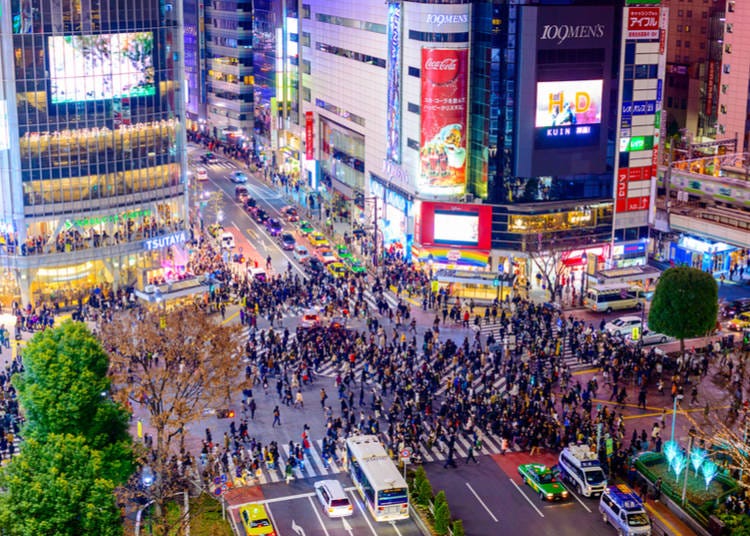
Shibuya is a popular haunt of youngsters in their teens and 20s, and for good reason. Packed to the brim with trendy shops, restaurants, clubs , and livehouses, the energetic vibe in this area is the result of its young and dynamic crowd, which in turn attracts even more like-minded youths. Beyond the demographics of its regulars, however, you'll notice that Shibuya is also home to the largest scramble crossing in the world. Once the lights turn red, all vehicles on the road come to a complete stop in order to allow pedestrians from all sides of the intersection to cross over in whatever direction they wish to go. At its peak, this can be up to 3,000 pedestrians at once! You would be hard-pressed to find a crossing anywhere else in the world that has pedestrian traffic anywhere near what this crosswalk sees on a daily basis. In recent years, this crosswalk has served as the base for seasonal events popular among the younger generation, like New Year countdowns and Halloween, whipping the usually packed streets into an even more frenzied fervor. This intersection has also been featured in plenty of films and videos - from local Japanese productions to major Hollywood blockbusters.
2. Shinjuku Kabukichō: Witness a real-life Godzilla invasion!
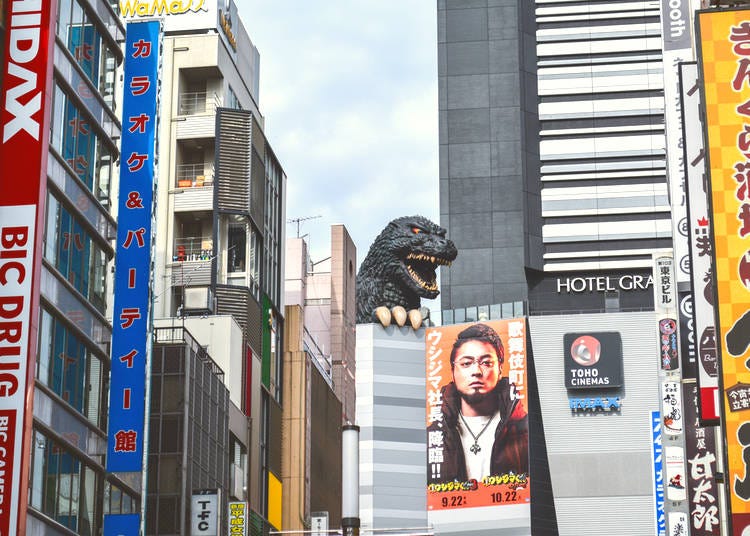
Shinjuku Toho Building officially opened in April 2015 with the largest cinema theater in Tokyo, and Shinjuku Kabukichō's Toho Cinemas is integrated within its premises as well. Perched 40 meters (about 131 feet) aboveground on the building's eighth floor rooftop terrace is a giant Godzilla head that is 12 meters (about 40 feet) tall - exactly the same dimensions it had in the first movie it appeared in! With Godzilla's head thus looming over the building, it almost seems like the monster has leapt out of the films into Shinjuku for a real-life invasion. Since photographs with this life-size Godzilla are often well-received on social networks, it goes without saying that this is an extremely popular photo spot among visitors. What's more, the head is programmed to roar at certain times of the day, so if you happen to be around the area at the right time, you'll be one of the lucky few to have the rare experience of hearing Godzilla's angry bellows echo throughout the streets of Shinjuku in person!
3. Tokyo Skyline: Taking in Tokyo's landscape from above
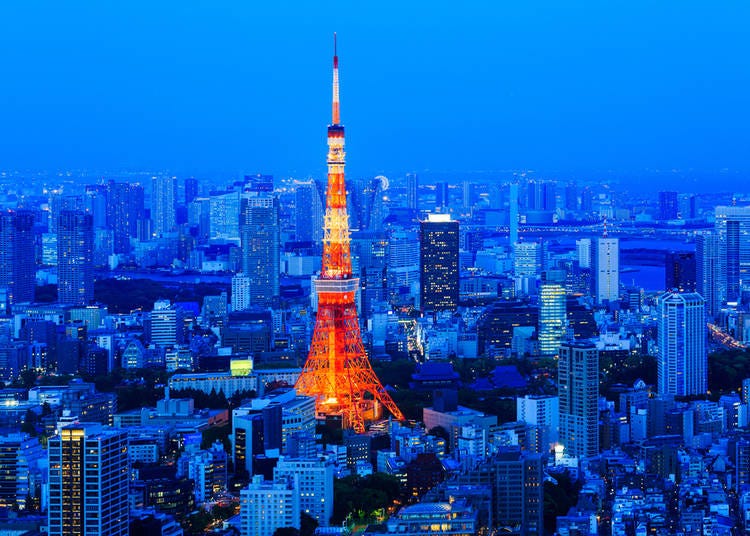
The common image many have of Tokyo - along with most other major cities - is a never ending array of skyscrapers stretching out for as far as the eye can see. While this is certainly true from the ground, viewing Tokyo from the top of one of these tall buildings is an activity that comes highly recommended by us. It can offer a great change in perspective and allow you to experience a seldom seen side to this modern metropolis. ◾Tokyo Tower You can't talk about Tokyo without also mentioning Tokyo Tower, one of the most internationally well-known landmarks of the city. Many have fallen in love with this remarkable building since it began operations in the year 1958. The tower itself contains two observatories offering panoramic views of Tokyo from a height of 150 meters (about 492 feet) for one and 250 meters (about 820 feet) for the other. At night, the tower is illuminated with spectacular colors, lighting up the Tokyo night sky and serving as its enduring symbol. ◾ Tokyo Skytree A new city icon that opened in May 2012 as a broadcasting tower and sightseeing facility, the Tokyo Skytree stands at 634 meters (about 2080 feet) tall and is the most well-known free-standing broadcasting tower in the world. The Skytree also has two observatories, one at 350 meters (about 1148 feet) aboveground and the other, 450 meters (about 1476 feet). Both offer a spectacular view of Tokyo's landscape at a glance. Once you've had your fill of the scenery, head down to the sprawling Tokyo Solamachi shopping mall at the foot of the Skytree for some good food and entertainment . ◾ Roppongi Hills Towering above Roppongi , one of Tokyo's downtown districts, is Roppongi Hills, a commercial complex that has everything you need to entertain yourself with - from museums to cinema theaters, observatories, more than 200 restaurants, and countless other establishments. On the 52nd floor is an indoor observatory called Tokyo City View that's 250 meters (about 820 feet) above sea level. There's also another indoor observatory in this building, this one called the Sky Deck, which is situated 270 meters (about 885 feet) above sea level. Both observatories offer encompassing views of the Tokyo skyline.
4. Tokyo Station: Featuring Japan's representative modern architecture
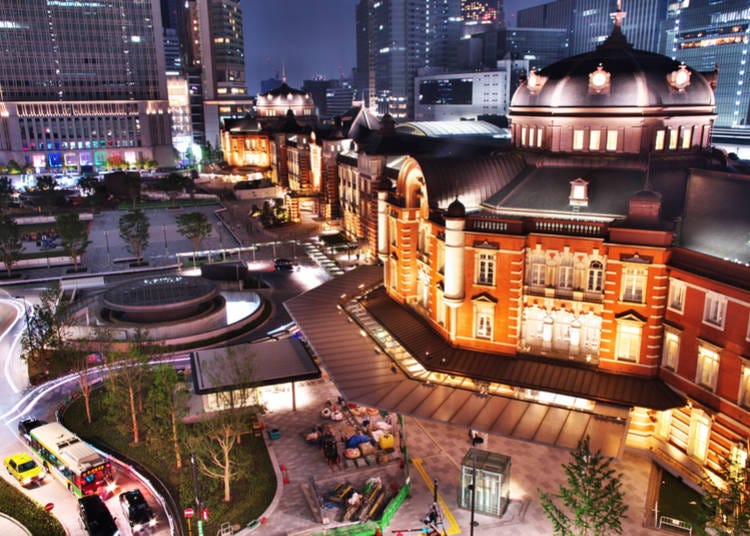
Tokyo Station , sometimes called the doorway to Tokyo, definitely qualifies as one of Tokyo's must-see tourist hot spots. Every day, about 3,700 trains pass through the busy station, which is used by a daily average of more than 760,000 passengers. Basically, you'll be finding people here all hours of the day! What we'd especially like to draw your attention to is the beautiful Red Brick Building, covered all over with about 850,000 bricks. This gorgeous station building was constructed about 100 years ago using the best technology architects had to offer during that era and is a designated national property of cultural importance. See for yourself how this tastefully designed building discharges its heavy responsibility as a transport center of Japan's capital with stalwart yet graceful endurance.
5. Rainbow Bridge: The elegant bridge that watches over Tokyo Bay
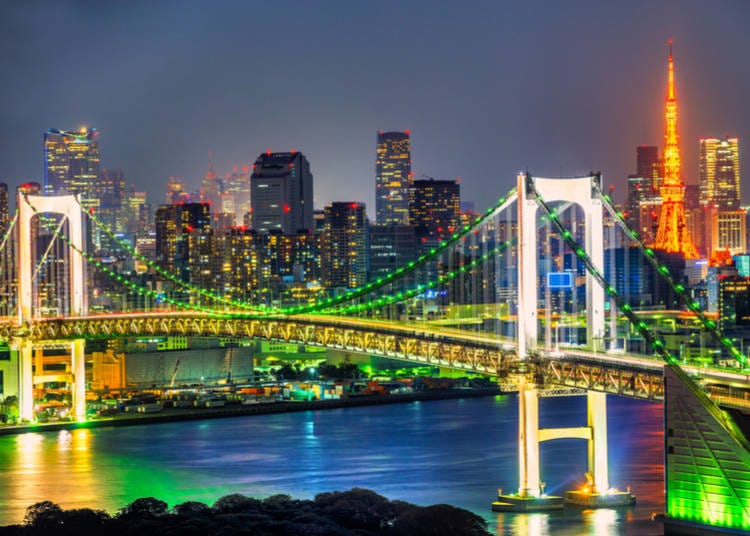
Completed in August 1993, the Rainbow Bridge is a massive suspension bridge measuring 789 meters (about 2,588 feet) in length and holds itself up 126 meters (about 413 feet) above sea level. You can hop onto the Yurikamome, a driverless transit service connecting Shuto Expressway Route 11 and Tokyo's metropolitan areas to the Odaiba area for a trip across the Rainbow Bridge. Or, if you're feeling adventurous, you can enjoy a walk across as well! This gargantuan structure hovering over Tokyo Bay is worth seeing from a distance for sure, and while it is already a sight to behold during the day, the scene around the area becomes even more impressive when sunset slips into the background. Around this time, the 444 illuminations installed on the bridge light up all at once, flooding Tokyo Bay with vivid hues and creating a breathtaking picture you won't soon forget. The lights continue to change color over time, so don't miss this fantastic scene if it's the last thing you do in Tokyo!
6. Ramen: Embark on an expedition to better understand the depths of this delectable dish
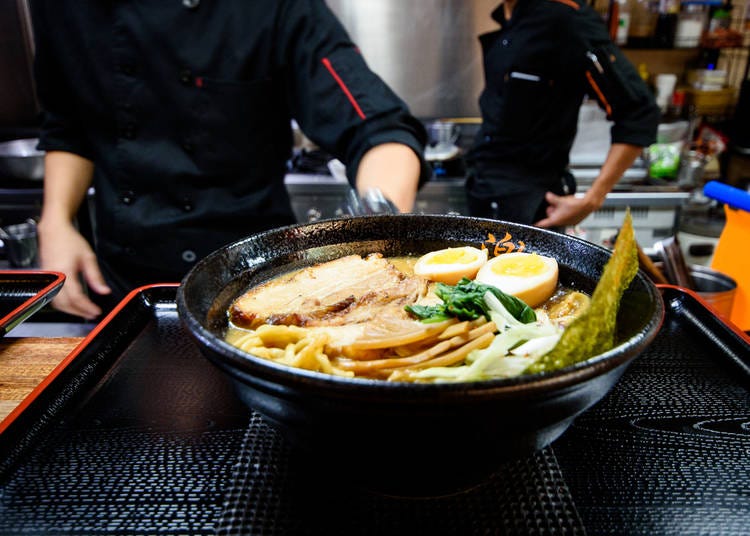
Ramen first came to Japan from China, going through further development throughout the ages to become the national dish we are familiar with now, well-loved by both local Japanese and international visitors. Many tourists make it a goal to try this dish at least once during their Tokyo trip, and we have to say it's a decision we absolutely support! Now, it's good to remember that not all ramen stores are created equal. Each store will have their own special broth that goes beyond the standard ramen flavors of shoyu (soy sauce), miso (fermented soybeans), shio (savory), or tonkotsu (pork bone). That's not all - noodle thickness, noodle toughness, soup richness, toppings, and other ingredients may influence the dish's overall taste as well. There are about 4,500 ramen shops in Tokyo alone. It certainly wouldn't be a stretch to call this city an intense battlefield between ramen titans! Right in the heart of Shinjuku , conveniently accessible from Tokyo is the Tokyo Tonkotsu Ramen Bankara - Shinjuku Kabukichō Store, a ramen restaurant renowned for the full flavor of its ramen broth. You may also have heard of Sugoi Niboshi Ramen Nagi - Shinjuku Golden Gai Main Store. This store's specialty is their unique niboshi, or dried sardines broth. If you happen to be in electronics and anime paradise Akihabara , don't pass up the chance to drop by Tanaka Soba Shop and enjoy some ramen with an exquisite soup base that was boiled with stringently selected pork bones for 60 hours! And the queue snaking out of Motenashi Kuroki, a restaurant that was featured in the Michelin Guide is the best proof of how delicious their ramen must be. These are just a small selection of ramen restaurants using their own recipe to serve up special flavored ramen for their customers. Don't be afraid to go forth and discover your own favorites!
7. Ameyoko: Treasure-hunting at Ueno's budget-priced shopping street
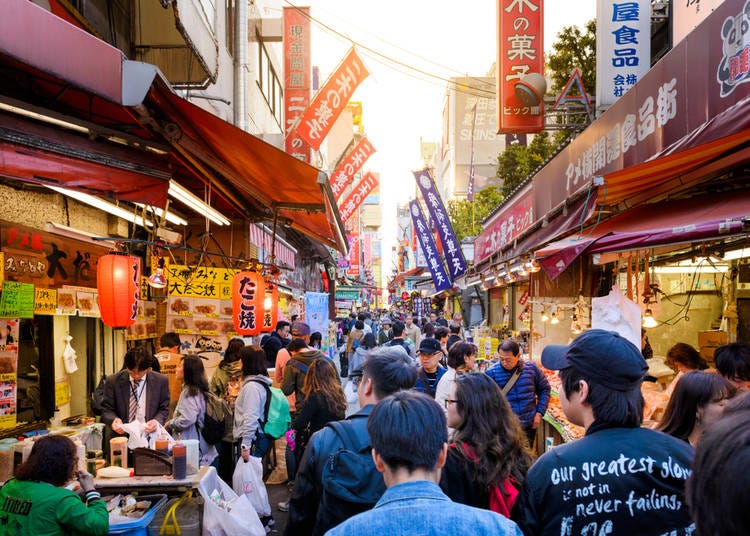
Ameyoko, or Ameya-Yokochō refers to a 500 meters (about 1,640 feet) long shopping street stretching from JR Ueno Station to Okamachi Station. It has its origins in a "black market" of illegal trading during the period after World War II when goods and necessities were in short supply. Now, the area is packed with shops selling all types of products like fresh fish, provisions, candies, food and drinks, street food, clothing, shoes, cosmetics, toys, games , and many more. You really can't understand how amusing it is to see shops of vastly different categories stacked tightly against each other until you actually behold the scene yourself. Of course, the single most attractive feature of this shopping street that draws flocks of deal-seekers to it is the low, low prices being offered for goods on sale. Some products can even be going at an incredible half-off! If you fancy yourself a competent treasure hunter, this is the THE shopping street you simply cannot miss. When you're too tired from all the walking to carry on, take a breather at Ueno Onshi Park just next-door and let nature refresh your harried senses for the next leg of your journey.
8. Harajuku Takeshita Street: Dive headfirst into Japan's kawaii (cute) subculture for an immersive local experience
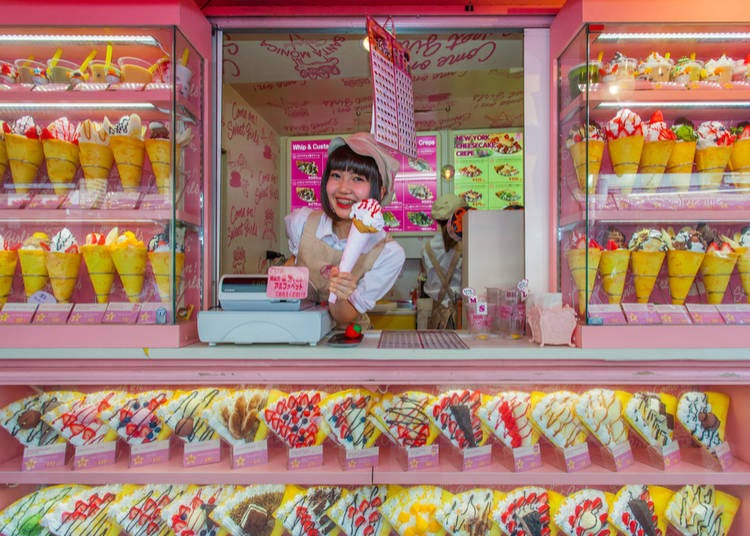
Harajuku is the favorite gathering place of many youngsters and the birthplace of many of Japan's interesting subcultures. One of it is the kawaii, or cute subculture that can be clearly seen in Takeshita Street, about 350 meters (about 1,148 feet) away from JR Harajuku Station on the main street. Lined up along the roads are clothing stores , accessories, provisions and other kawaii items designed to appeal to the hearts of young women. This is also where you can find crowds of cosplayers - fans who dress up as characters from their favorite media series - having the time of their life playing their chosen characters in public. As you meander around admiring the sights, you'll eventually pass by one or two colorful crepe or pancake stalls that look like they've walked straight out of an amusement park . Don't worry, though, because all of them taste as heavenly as they are flamboyant. Some might even venture to call these colorful treats authentic Harajuku specialty food! For the full Harajuku pop culture experience , however, step into Kawaii Monster Cafe , a cafe that embraces the fashion and culture most distinctly represented internationally by Harajuku Pop Princess Kyary Pamyu Pamyu, and bask in its unabashedly florid decor.
9. Hachiko Statue: The symbol of Shibuya
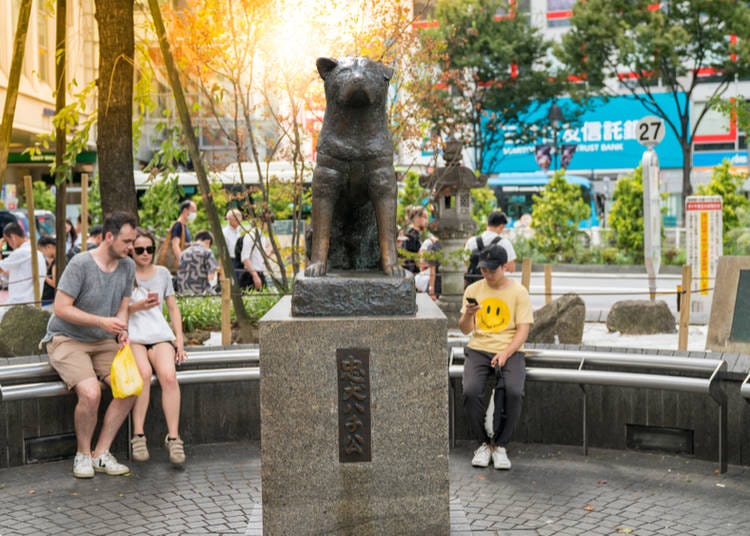
The statue of the ever-loyal Hachiko is as much a symbol of Shibuya to local Japanese as the scramble crossing is. Ever since his heartrending story was adapted into the Hollywood film, "Hachi: A Dog's Tale", even foreign visitors to Japan are now familiar with his name and history. The Shibuya Station exit nearest to the plaza where the statue is located even has the nickname of "Hachiko Exit". The plaza with the statue is a high-traffic area connected to the Shibuya scramble crossing and is often used as a landmark for meetups. So if someone tells you, "See you in front of Hachiko!", you know where to find them! Till this day, Hachiko continues to face the station's exit, loyally waiting for his master to return.
10. World Heritage Site Mount Fuji: Did you know you can see it from Tokyo too?
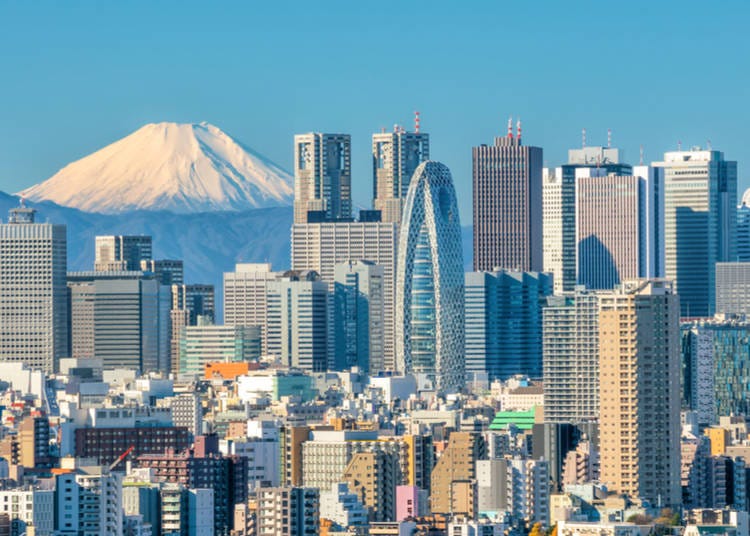
As the highest mountain in Japan with an altitude 3,776 meters (about 12,388 feet) and a registered World Heritage site , Mount Fuji 's ethereal form has captivated the hearts of many from since times of old. Did you know you can actually catch a glimpse of it from within Tokyo as well? When the sky is clear during winter , there's a very high chance that it will make an impressive appearance in the backdrop of Tokyo's skyline. Where to enjoy stunning views of Mount Fuji from within Tokyo: ●Tokyo Tower Tokyo Tower is a better choice than Tokyo Skytree if all you want to do is try to catch Mount Fuji , as it is physically closer to the mountain . ● Haneda Airport International Passenger Terminal The observation deck on the fifth floor of Haneda Airport has a "Fujimidai" viewing platform well-known for offering a fantastic view of Mount Fuji from afar. There are no tall buildings around this area, so you'll be able to gaze at the beautiful mountain peeking out from above Tama River or the tracks of the Tokyo Monorail!
11. Ginza: Luxury shopping at Japan's premium downtown district
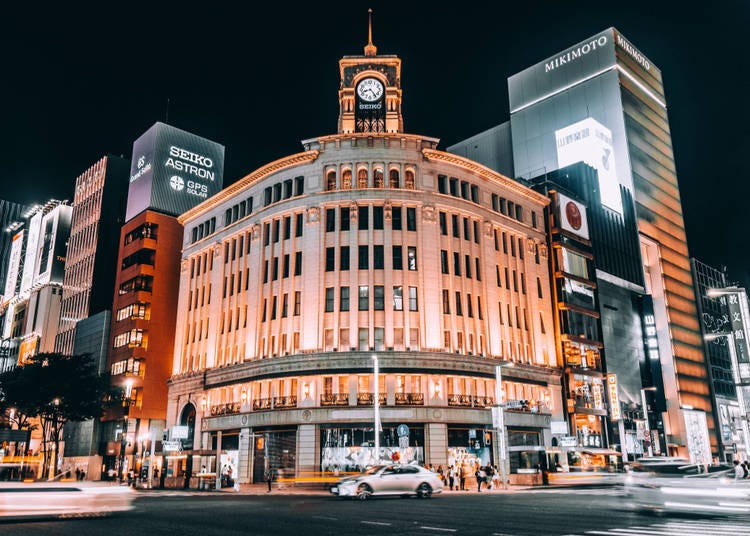
Looking to indulge in some classy architecture , high-end luxury brands, and fine dining? Ginza is the place to set your sights on. It's a good mix of old-time, traditional establishments with newer shops featuring the latest trends makes for interesting window shopping. When people think of Ginza , they usually think of major and established names like Ginza Mitsukoshi, Wako, or Matsuya Ginza , and for good reason, since these department stores have long served as symbols of Ginza to the world. Many of Ginza 's shop staff can speak foreign languages, so don't be afraid to do your shopping here even if you don't know a lick of Japanese. On Sundays, Chuō-dōri, Ginza 's main street transforms into a pedestrian's paradise, adding to the usual hustle and bustle. Wandering aimlessly down the streets of this posh downtown district will certainly be a memorable experience for first-time visitors to Japan.
12. Backstreet Bars: Travel back in time to a Tokyo of a different era
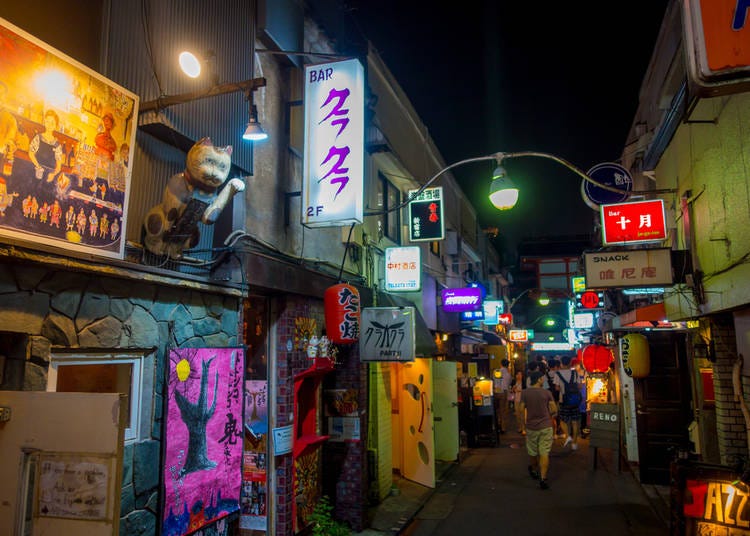
Lately, the city's backstreet bars reminiscent of Tokyo from the good old days have been seeing a resurgence in popularity among the younger crowd. The melancholic air that these alleyways exude belie the good food and even better alcohol being offered by the many holes-in-the-wall there. This is where you can find a streetscape that is uniquely Tokyo and intoxicate yourself in some good ol' human touch. ■Golden Gai In the nooks and crannies of Shinjuku Golden Gai, away from its clamor and bright neon signboards, are where you'll find alleyways of wood and timber housing more than 200 bars tightly pressed against each other. From slightly dubious joints to businesses with more mainstream appeal, this is the best way to really dive deeply into Tokyo's night life culture. The alleyways have been seeing more foreign tourist traffic in recent years and captivating more and more people with its unique charms. But don't just take our word for it - hop between a few bars and judge for yourself whether the food and drinks here live up to their hype. ■Yūrakuchō Under-Girder Yūrakuchō is mainly known to be an office district with frequent pockets of commercial spaces. Beneath the girders of the elevated train tracks stretching from Shinbashi Station (JR Line) to Yurakucho Station (JR Line) is one of these commercial spaces. The area is packed with all manners of Japanese bars , from the budget bars with Showa era-ish (1912 to 1926) decor to Yakitori Alley, a little street with bars that also have yakitori , or skewered chicken meat on their menu. Plenty of tourists visit this area as well, so this will be an easy spot for first-time international visitors to blend right in. Enjoying your food and drinks along with the slight vibrations of the girder as trains noisily pass through the tracks above is a one-of-a-kind experience you won't find anywhere else. ■Kichijōji Harmonica Alley Walk out of Kichijoji Station, which is about 15 minutes away from Shinjuku Station (JR Line), and you'll find yourself in a trendy district with a distinct flair. Right away, you'll be able to slip into narrow alleys crammed with charming bars , collectively known as Harmonica Alley. Fancy an authentic old-time Japanese bar experience? Check! Feeling like lounging in a stylish western-style pub ? They've got your back! With about 100 different little shops to choose from, it won't be difficult to find something that catches your eye - and tongue! Bar -hopping in the retro atmosphere at Harmonica Alley will be a great way to experience Tokyo as well.
13. Japanese Gardens: Beauty that is subtle yet splendid
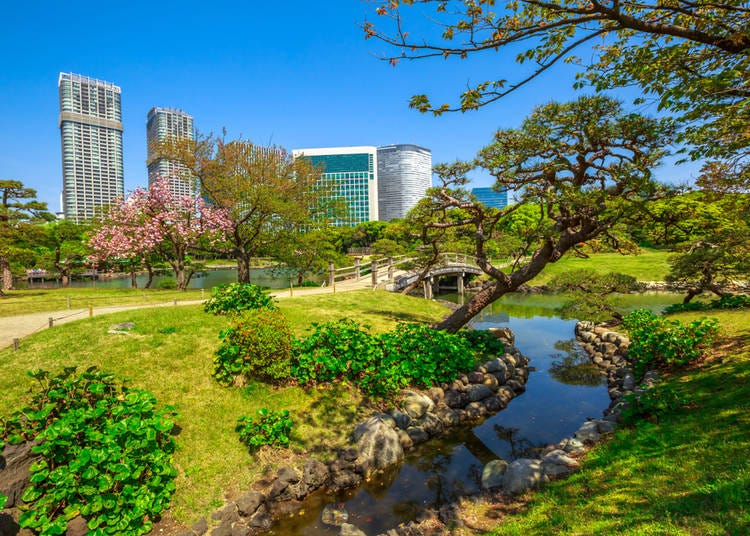
Nature isn't what most people come to Tokyo for, but you might be surprised to learn that plenty of natural sights still remain in this modern metropolis. Our recommendation for first-time visitors to Tokyo is the Japanese-style gardens . Often carefully planned and created with large spaces, bodies of water, and elevated hills in mind, you have our word that strolling through these parks that can only be found in Japan will absolutely be intriguing enough to occupy some space in your itinerary! ●Hamarikyu Gardens Created by the Tokugawa Shogun family during the Edo era (1603 to 1868), one of the more curious facts about Hamarikyu Gardens is how it used to be a duck hunting grounds for the Shogun family. The pools here are filled with water from Tokyo Bay and many people gather here to admire blooming sakura in spring or fall colors in autumn . ●Kyu Shiba Rikyu Garden A cozy little spot that contains all four major elements of a Japanese garden - water, stone, cultivated plants, and natural sights. Its historic status makes it an appealing destination for fans of the Japanese garden aesthetics. ●Rikugi-en Its large lake is this garden 's preeminent feature, and in the middle of that body of water is a raised embankment simulating a mountain and waterfall. There's also an arbor there for those desirous of a handful of rest. Viewing the garden from different angles reveals different scenes that are equally mesmerizing - really the best way to fully experience this beautiful garden !
14. Jinbōchō: The district of books and curry...wait, what?
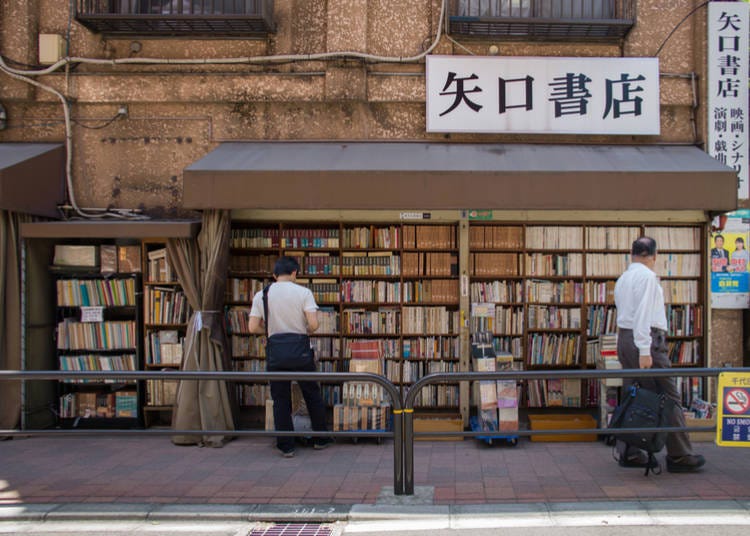
Jinbōchō has been home to many publishing houses and universities since olden times, and that sparked a bookstore boom here around the year 1877, with shops offering both new and secondhand books for sale mushrooming to cater to the growing student population. Now, the area is known as a book district. The many bookshops here deal with all sorts of subject matters - specialist books, cult classics, magazines, and some even sell movies! Just glancing around the area is enough to tickle anyone's intellectual curiosity. What about the curry , though? Well, it just so happens that curry can be easily eaten with just one hand while your other hand is holding a book that's hard to put down, right? That's why curry is highly valued in this book district and the reason the curry here is popular among locals as well. Curry Bondy is one of the restaurants in Jinbōchō that prides itself on having served up original western-style curry for years to rave reviews. Books and curry - an unorthodox pairing, to say the least. But that's also exactly why it's an activity you need to try for yourself if you manage to drop by book town Jinbōchō during your Tokyo travels!
15. Edomaezushi: Unbeatable top-grade sushi at its place of origin
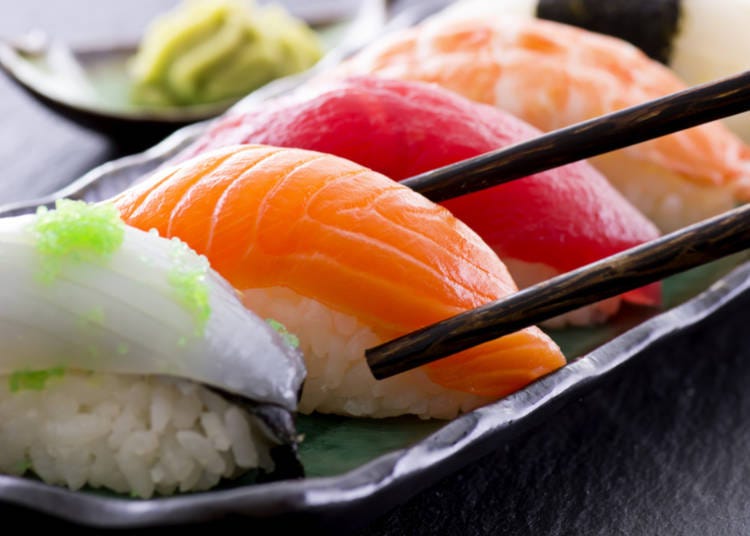
The little Japanese meal of sushi has taken the world by storm, so much so that the word " sushi " is an official entry in most English dictionaries nowadays. Since you're visiting Tokyo, why not seek out some authentic edomaezushi, or to be specific, sushi made with fresh ingredients from Tokyo Bay, for the full local experience? This is an excellent opportunity because there are plenty of sushi restaurants in Tokyo - from the high-end to the low-cost - both equally enjoyable according to your budget and preferences! Sushi Ryusuke at Ginza , for example, only procures the best quality ingredients and offers you a calm and quiet space for relishing the best Tokyo has to offer in terms of sushi . For the more budget-conscious, Edomae Sushi Hattori in Roppongi also serves up edomaezushi at incredibly reasonable prices for the crowds of tourists that flock to it.
16. Hitomakumi: Watching just one act of a Kabuki performance
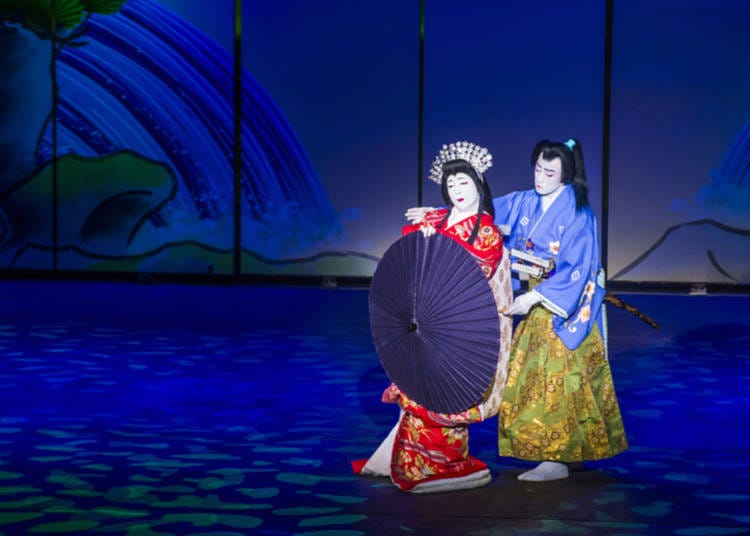
Kabuki is a traditional Japanese performing art that has gained global prestige over the years, and Ginza 's Kabuki -za Theater is where you want to go to appreciate this art in its finest form. Each performance consists of a number of acts, and to view them all you'll need to set aside at least half a day! To better fit this cultural experience into your busy itinerary, however, we highly recommend you try a hitomakumi, or single-act viewing. This will take only one to two hours depending on the act you choose to watch. Some performances have English commentary, so if that would enhance your experience, look up the show times before buying seats! Even if you eventually decide not to watch the performance, the souvenir shop and gallery are always free to enter. Be sure to make plans to visit Kabuki -za Theater - the only specialized kabuki theater in the world - for an immersive Japanese cultural experience.
17. Kappabashi-dōri: Professional kitchenware and plastic food samples galore
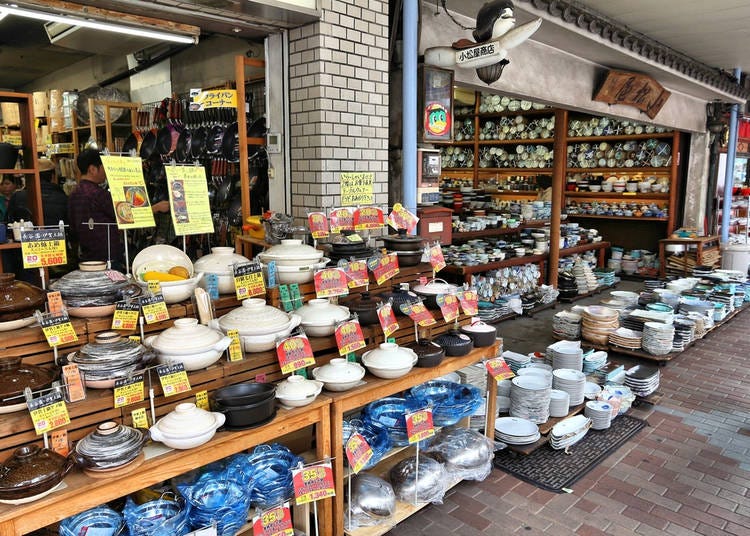
Here's something that's not quite the standard tourist fare. Kappabashi-dōri is the best utensils town in Japan, with about 190 specialized shops dealing with professional-use items that are indispensable to a complete restaurant kitchen, like cookware and eating utensils - all proudly displayed in huge stacks outside the shops alongside signboards often used by restaurants. This street shows yet another side to Tokyo that stands out from most of the rest. Local Japanese master chefs are regular patrons of the area as there are plenty of shops here selling a wide variety of Japanese kitchen knives and utensils. The town is also known for producing plastic sample foods that look just like their real counterparts. For a fun exercise, mix-and-match these sample foods and see if you can create a meal that you've never seen before! Besides what we've already mentioned, you can also find a battalion of amusing souvenirs that are uniquely Japanese, like sushi earrings and Japanese confectionery magnets!
18. Cruise Ships: Gaze at a slightly different Tokyo from atop its waters
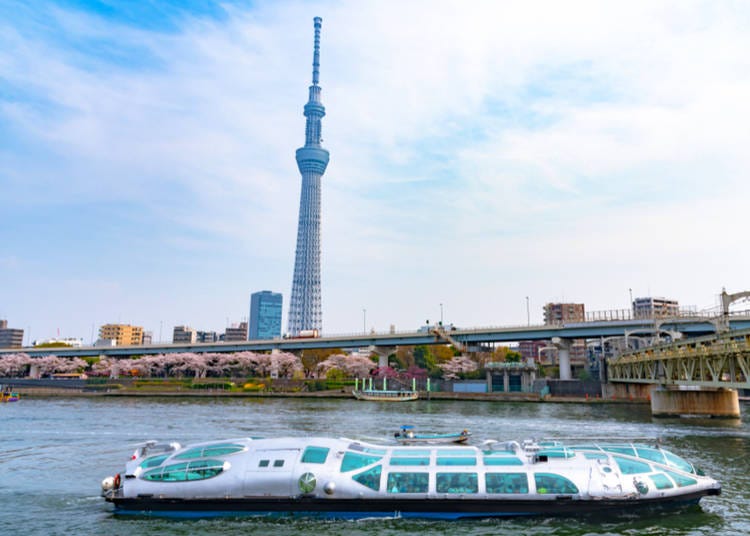
There are plenty of cruise ships and water-buses operating on the waters of Tokyo. Although trains and buses are the more convenient forms of transport on land, try out one of these water vehicles to look at familiar sights of Tokyo from a completely different point of view! ●Tokyo Bay Cruise Courses for this route will take you through Tokyo Bay under the symbolic Rainbow Bridge, where you'll catch a glimpse of Odaiba from the sea. Enjoy a snazzy lunch or dinner on board the restaurant ship Symphony while taking in the sights of a slightly different Tokyo! ●Sumidagawa Cruise This cruise takes you from Asakusa to Tokyo Bay on a water-bus, passing by landmark sites like Tokyo's new symbolic SkyTree and the Edo era legacy Hamarikyu Gardens in quick succession for a full sightseeing experience that's easy on your time. ●Yakatabune Yakatabune means "house-shaped boat", and this is an apt name for a ship that was built with a house-like roof and traditional tatami mat rooms, where the passengers on board go to relish their meals and the occasional banquet. The ship served as a sightseeing ship during the Edo era, and the distinct olden air it still gives off is something worth experiencing at least once. ●Nouryousen Cruise Similar to the Tokyo Bay Cruise, this booze cruise happens in the evenings from early summer , departing from Takeshiba Terminal. Guests are treated to an all-you-can-drink event while the large liner slowly makes its way in a large circle around Tokyo Bay. (Insider tip: wear a yukata and get a discount!)
19. Hanami: Intoxicating yourself with breathtaking views of beautiful sakura flowers
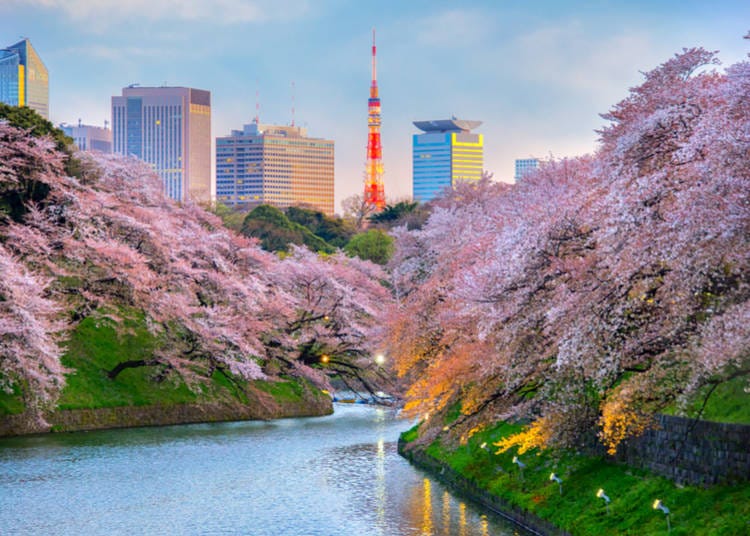
Sakura, or cherry blossoms add a beautiful shade of pink to Japan every spring , so if you're visiting during this season , be sure to include a session or two of hanami, or sakura viewing into your plans! Well-known sakura spots will be painted pink and teeming with appreciative sakura admirers. Whether you prefer to look at the pretty petals under a clear, blue sky during the day or framed by electrifying illuminations at night, there's something for every preference here as well. Shinjuku Gyoen National Gardenb@> This national park is easily accessible from Tokyo's metropolitan areas, and its large premises contain about 65 different species of sakura and an estimated 1,100 sakura trees. This is an easy spot for some casual sakura viewing for sure! ● Ueno Park A well-known sakura spot since the 16th century, the park also houses cultural buildings like a museum and zoo on its grounds, making it a suitable venue for family outings. ●Chidorigafuchi Located northwest of the imperial palace, Chidorigafuchi is where you can stroll down a street lined with about 1,000 sakura trees on both sides. The reflection of these sakura trees on the river 's waters is a sight worth checking out as well.
20. Life-size Gundam: The new icon of Odaiba!
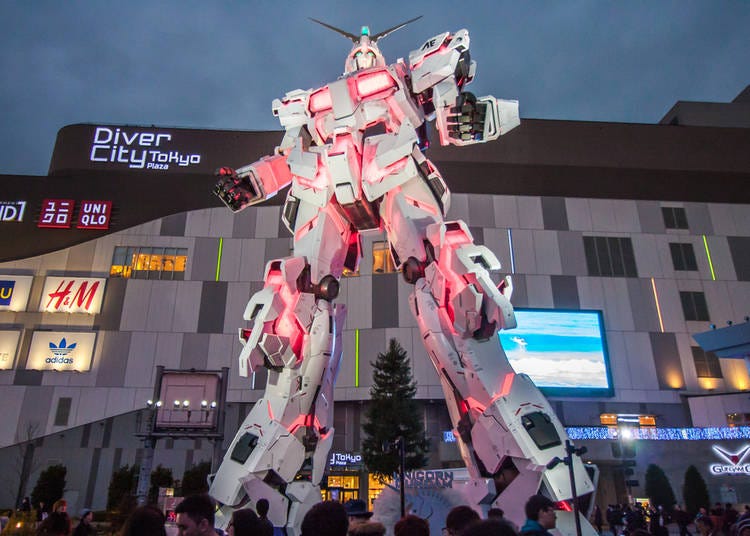
"Mobile Suit Gundam" is a sci-fi Japanese media series that has loyal fans of all ages from around the world, and many of them aspire to make a trip to the Gundam Base Tokyo, an integrated facility found inside Odaiba 's Diver City Tokyo with Gundam plastic models as their main draw. The life-size Unicorn Gundam just outside the building that was recently built also attracts plenty of eyeballs from fans and regular tourists alike. Depending on the time of the day you're there, the mobile suit may also change forms or be lighted up, so whether you're a fan of the series or not, it's an amazing sight worth seeing with your own eyes if you're around the area for sure.
21. Peak Hour Rush: Hop on a fully-packed commuter train during morning rush hour - yes, really!

Tokyo's peak hour commuter trains hold the infamous national record for the highest human congestion rates - rates that are considered the highest in the world as well. Passenger capacity can go up to 200% during peak hours and this intense scrambling doesn't ease up for a sustained period of time. However, one of the identifying features of Japanese trains is that no matter how crowded they may be, the carriages are always peaceful and quiet. The bemusing sight of large groups of men in suits quietly and expressionlessly holding on to the handrails as they ride to their destinations must be quite an unusual sight for visitors both from other parts of Japan and the rest of the world. Since you're in Tokyo, it would behoove you to get an up close and personal look at this unique facet of Japanese culture by stepping into a peak hour train and experiencing the crunch for yourself. That is, if it's something you would want to do, of course!
22. Meiji Shrine: A solemn spiritual experience that makes you forget the commotion of city life
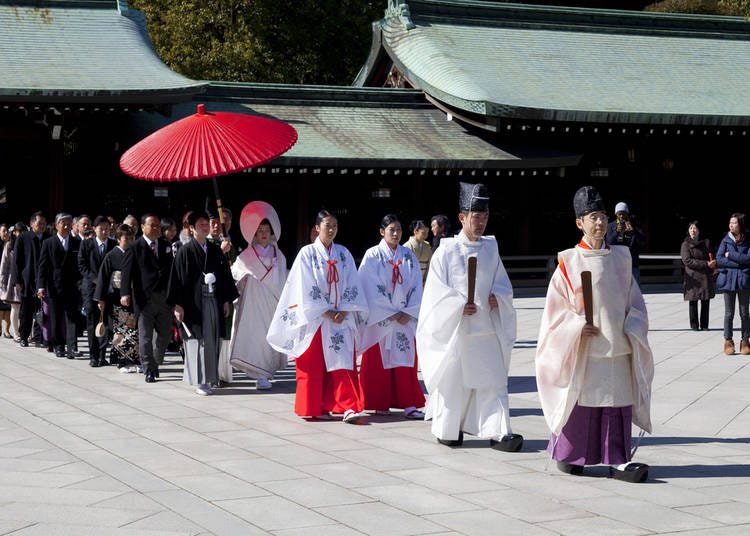
Meiji Shrine was established in the year 1920 by Emperor Meiji enshrining his wife, Empress Shōken. Its spacious premises teem with lush greenery, making it an oasis in the city. In Japan, there is a custom called hatsumōde where people journey to a temple for the first time during a new year to pray for good luck for the year ahead. Meiji Shrine holds the record for the most number of hatsumōde visitors at 10 million, marking it as the most popular temple for hatsumō in Japan. Passing through the giant wooden torii, or temple gateway, settles your mood and envelopes your temple pilgrimage in an air of mystique. After paying your respects, feel free to obtain a wishing wooden tablet and protective charm, or try to divine your luck by drawing lots. If you're there at the right time on the weekends, you may even get to see a traditional wedding being held near Meiji Shrine 's main building. This may be your only chance during the trip to see how Japanese weddings and carried out, and hopefully catch a glimpse of the beautiful bride in traditional garb as well!
23. Omotenashi: Japanese-style service that's full of warm hospitality

During the bidding for Tokyo Olympics, omotenashi, or Japanese hospitality that prides itself on going above and beyond for guests, was a subject oft brought up. It is the Japanese way to always consider the feelings of the other party before deciding on a course of action. Being meticulously mindful of others is a custom that is basically ingrained in every Japanese person's cultural DNA. As such, some of the service local Japanese have come to view as normal may pleasantly surprise foreign visitors. Now, that's the kind of omotenashi we're hoping you'll get to experience! It's nothing grand or dramatic - perhaps as simple as a warm greeting by a convenience store staff who goes on to separate your purchases into two bags for hot and cold items. Careful consideration of even minor details that will contribute to a more pleasant daily life can be said to be the bedrock of Japanese culture. So don't forget to get out there and enjoy this unique brand of Japanese hospitality as you work through your Tokyo travel plans!
24. Ueno Zoo: Have a date with the adorable pandas here!
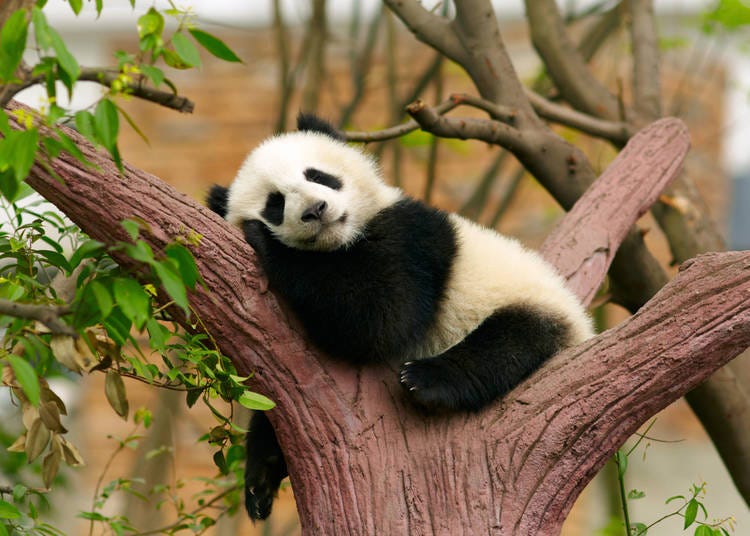
Ueno Zoo is known throughout Japan as the " zoo with pandas" ever since the first one arrived from China in 1972. Did you know that it was also the first zoo to open in Japan? The large grounds are split into east and west sections and about 450 species are being kept here, with a total head count of about 3,000 animals in all! Exotic animals like the Aye-aye are popular among visitors since they can't be seen anywhere else. Can't get your fill of the giant panda's adorable antics? Look around for shops in the zoo or around the Ueno Station area for panda souvenirs, sweets , and other related merchandise that you can buy home for daily appreciation!
25. 100 Yen Shops: High quality daily necessities at rock bottom prices
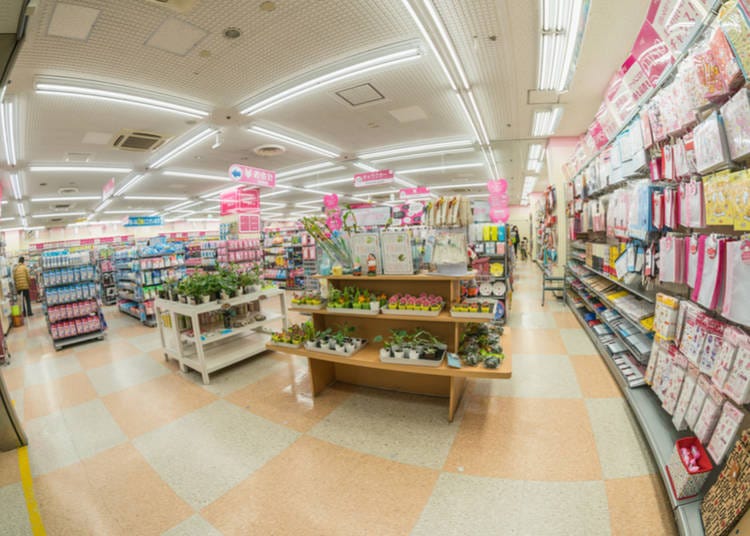
You'll find a lot of 100 yen shops everywhere around Tokyo, selling all sorts of essential goods. Wildly popular among local Japanese for being a one-stop shop for daily necessities, these shops have recently garnered a large following among foreign tourists as well. And it helps that their Japanese-style products, from writing paper to stickers, mugs, folding fans, plush toys, and others are perfect to bring home as made-in-Japan souvenirs as well. This is where you'll also find plenty of surprisingly high quality convenience goods like makeup items and stationery products for sale at incredibly low prices!
26. Sumo Wrestling: The national sport of Japan!
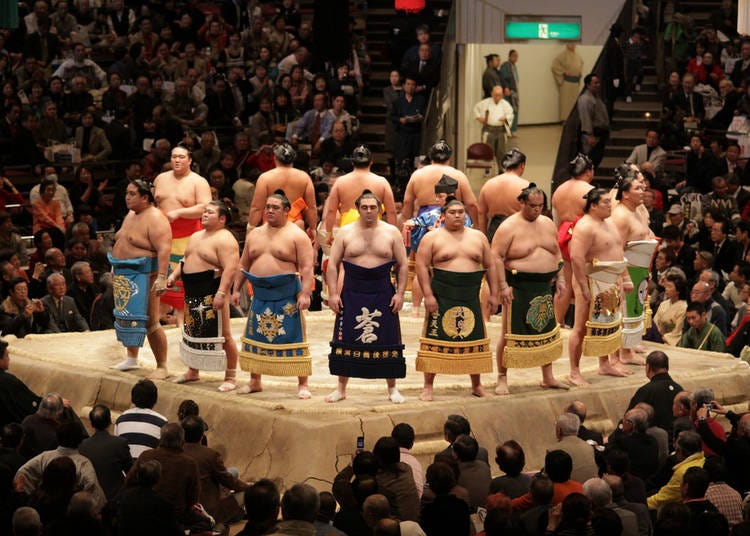
Sumo is both a Shinto event and Japan's national sport, and the sacred sanctuary of this activity - Ryōgoku Kokugikan, or Ryōgoku Sumo Hall - is located in Ryōgoku, Tokyo. The imposing building is impossible to miss after exiting from the train station. This is the stadium where honbasho, or official sumo tournaments are held in the months of January, May, and September after the wrestlers have done their annual tours around the country. Fans flock to the arena on those months, adding an air of festive cheer to the area with their fervent support of the sport. Watching rikishi, or sumo wrestlers clash against each other atop the sumo ring for dominance is the highlight of each tournament, and this is the only place where you can get to feel that infectious excitement in person!
27. Tsukishima: Best place for monjayaki (pan-fried batter) from historical restaurants
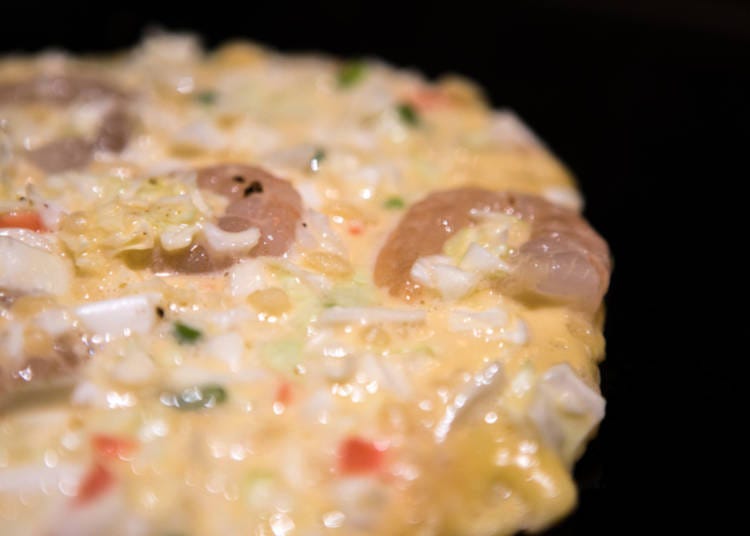
Each region in Japan has a local specialty food that it is most well-known for, and Tokyo's soul food is none other than the versatile monjayaki, or pan-fried batter! Made of wheat flour and finely chopped cabbages, the dough is dissolved in water and poured out on a griddle, then shaped with a spatula and seasoned with sauce until cooked. Toppings can include seafood , cheese, mochi (sticky rice cake ) - basically anything you want. The ability to customize the batter to suit your palate is what has endeared this dish to many locals from past to present, and the ability to personally cook the batter on the griddle has added to its fun and appeal! Tsukishima's central ward in particular has the name "Tsukishima Monjayaki Street" with over 70 shops offering this tasty treat. Each shop has a distinct style and flavor that sets it apart from the rest, so we're certain you'll discover your favorite while strolling down this street for sure!
28. Geisha Makeover: Spruce up your holiday photo album!
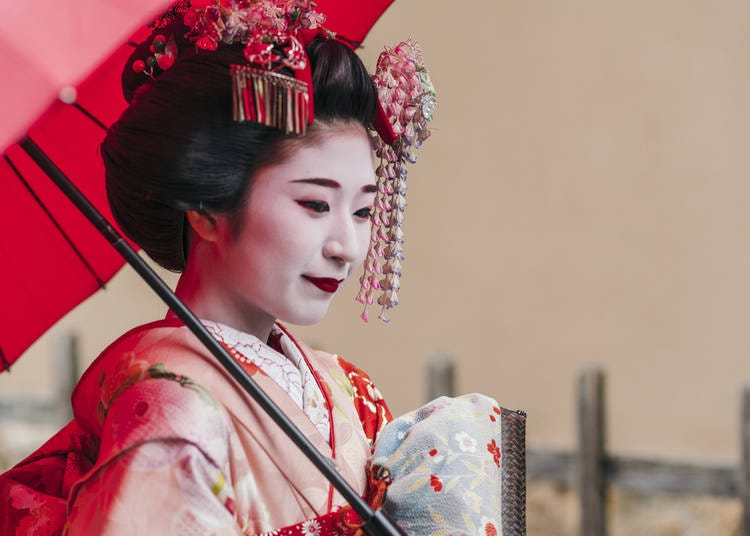
The term geisha was coined during the Edo era, and it refers to female entertainers who are skilled in singing, dancing, the shamisen musical instrument, or other traditional arts . Japan's geisha population has declined significantly compared to its peak during early Showa (1920s), but there are still quite a number of practicing geisha around. The entertainment district where they operate is called the hanamachi (flower street) and hanamachi can be found in a number of places in Tokyo, namely Mukaishima, Shinbashi , Asakusa , Akasaka, Kagurazaka , and others. You may catch a glimpse of a geisha or two in one of these hanamachi if luck is on your side! Japan Culture Experience Tours Yumenoya or Studio Nanairo in Asakusa offer makeover packages where they dress you up as a full-fledged geisha for the perfect photo of your Tokyo trip that's sure to bring back fond memories.
29. Unagi Kabayaki: Savor traditional broiled eel loved by locals since the Edo era
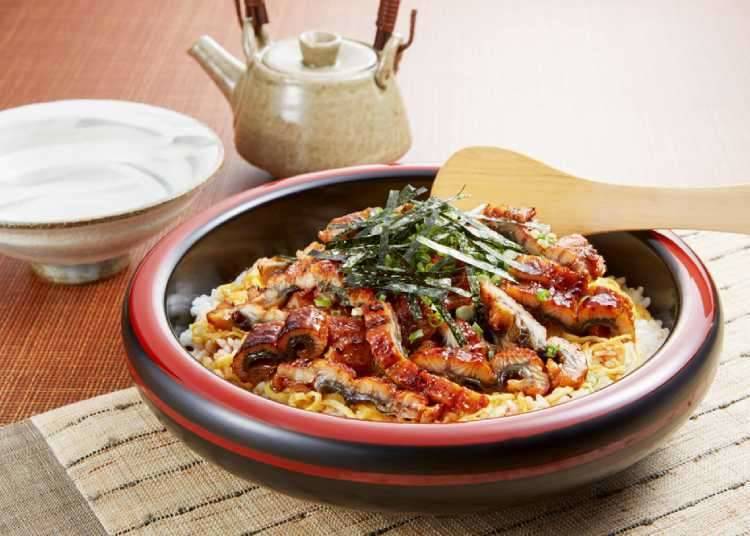
Eel has been used as a food ingredient in Japan since times immemorial. Residents of Tokyo during the Edo era especially loved unagi kabayaki, a preparation of eel that's been deboned and broiled over a grill with a special soy-based sweet sauce. Marine life - including eels - caught fresh from the waters around Edo (former name of Tokyo) came to be called edomae - this is a historical phrase that many Japanese are familiar with. These pieces of broiled eel go well with plain rice in the form of "Unadon (eel rice bowl)" or "Unajū (eel rice box)", and even modern Japanese consider such dishes to be energizing delicacies, so much so that it's considered tradition to eat eel during the Day of the Ox, which is the start of the summer season . We would love for you to be able to try this tasty eel dish with its sweet-and-salty sauce specially made with a shoyu (soy sauce) and mirin (sweet rice wine) base.
30. Yanesen (Yanaka / Nezu / Sendagi): Appreciating Japan elegance from an older time
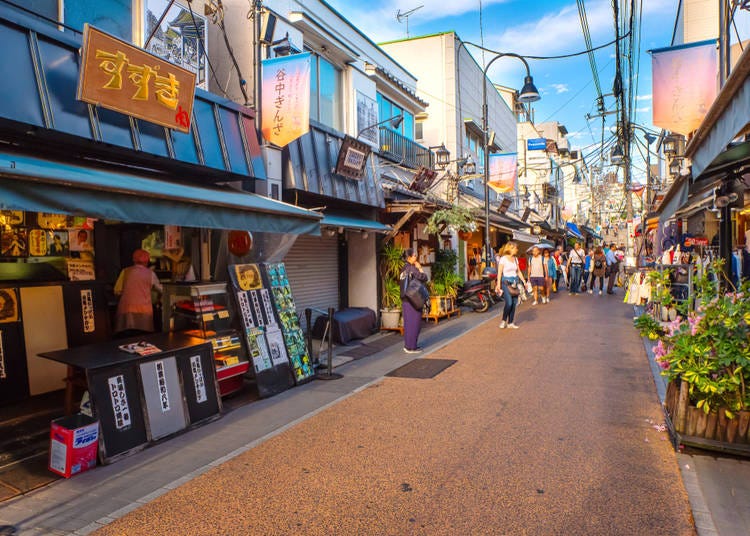
Yanesen refers to the lower town area between the eastern edge of Bunkyō Ward to the western edge of Taitō Ward in Tokyo. It encompasses through areas with historic flavor - Yanaka, Nezu, and Sendagi, taking its moniker from the first syllable of each name. Because of the abundance of slopes, alleys, and shrines in this area, it's a popular site for visitors yearning to experience a little bit of Japan from an older time. In fact, there are more than 100 shrines scattered about everywhere here! Despite usually being grouped together, each of these areas have their own distinct vibe. For example, Yanaka is also known as a cat town; Nezu is where the Shogun's house used to be; and Yasunori Kawabata, Ogai Mori, Natsume Sōseki, and many other novelists called Sendagi home. One of our top recommendations for activities in the area is the Yanaka Ginza Shopping Street where there are about 70 shops packed together in very close quarters. Experience the effusive cries of lower town merchants trying to drum up business as you walk around the street doing your shopping!
31. Zen Meditation: Cultivating a Zen-like spirit is easier than you think!
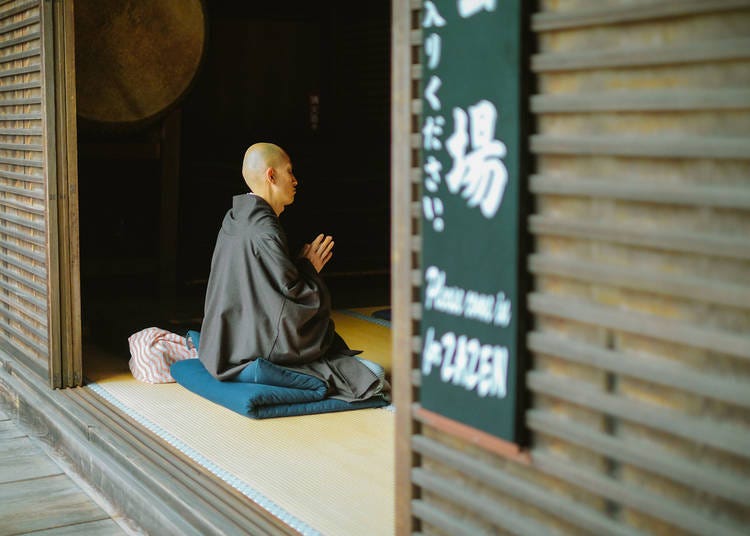
"Zen" is a mentality that has been passed down in Japan from olden times. This refers to a state where someone has eliminated all distractions and is fully focused on a single matter. It is trained by throwing one's entire being into a single activity, whether it be food, cleaning, or something else. So when one drinks tea in a state of zen, the activity is called sadō, or way of tea. When writing in a state of zen, the activity is called shodō, or way of writing. The most famous activity connected to cultivating the zen spirit, however, is the zazen, which literally means "seated zen". As its name suggests, this is an activity where someone trains themself to meditate singlemindedly while sitting down cross-legged. Many temples in Tokyo offer zazen sessions for everyone to experience what it's like. For first-timers to Tokyo wanting to take part in something like this, we recommend going to Shibuya Hiroo's Kōrin-in Temple or Shinjuku Kabukichō's Chōkō-ji Temple , due to their ease of access. Straighten your posture, remove unnecessary thoughts from your mind, and sit down meditatively. As you take the chance to look within, you'll find that facing the person you are inside is always going to be time well spent. You'll be taught how to cross your legs and some breathing techniques, so don't hesitate to go for a session if you're interested! Maybe there's a new side of you waiting to be discovered!
32. Robot Restaurant: Kabukichō's brand new uncommon visitor spot
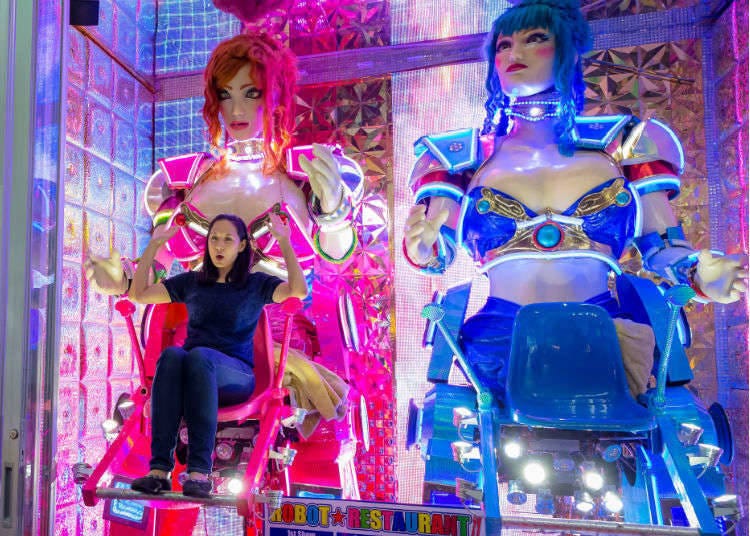
Robot Restaurant 's popularity as a night spot providing entertainment has steadily increased since it opened in Shinjuku 's Kabukichō in the year 2012. A large robot sits right next to the shop's entrance, and once you enter the shop proper, it's like you've been transported to a different world altogether. The shop is said to have cost a whopping 10 billion yen to build. On the third floor is a lounge surrounded by scintillating neon lights, where you can order drinks or purchase souvenirs. The main attraction here, however, is the stage on the basement level. Robots (of course), dancers, and other performers take the stage here day after day, where storytelling, shows , and even parades are held from time to time. The entrance fee is 8,000 yen, and if you make a reservation ahead of time, you can also get to enjoy some sushi along with the show . This ultimate entertainment venue has been visited by world-famous film directors and actors. If you're in the mood for something completely different, you can't go wrong with the Robot Restaurant!
33. Fireworks: A Japanese summer tradition
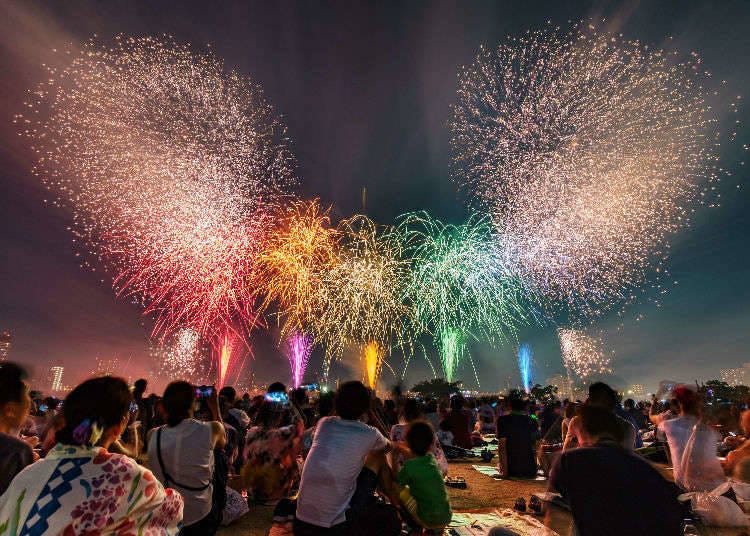
Japan's fireworks technology is lauded as one of the best in the world. The beautiful and delicate round arches that light up the night sky are mesmerizingly memorable. Fireworks displays are held mainly during the months of July and August each year in Tokyo, and this is a major summer event many plan for. If you happen to be in Japan during the summer season , we would highly recommend you seek out and take part in a fireworks display show to see for yourself why these pyrotechnics have captured the hearts of so many despite their fleeting nature . ▪️Sumidagawa Fireworks Festival About 20,000 fireworks will be blasted into the sky by the time the night is over, above the appreciative eyes of about 750,000 visitors. This is a large-scale fireworks event where foremost pyrotechnicians of the Kanto region compete with each other on skill and technique. ▪️Adachi no Hanabi This event is the earliest for Tokyo's fireworks festivals. About 13,600 fireworks will be fired in an hour. The main highlight of this event is the world's first "double Niagara" style of fireworks, amongst others. ▪️Exciting Fireworks - Edogawa Fireworks Festival A fireworks festival that will be held simultaneously at Tokyo's Edogawa Ward and Chiba Prefecture 's Ichikawa City. Made up of eight different themes, each with its own background music, fireworks are blasted off in tune with the music, painting the night sky with vivid hues.
34. Asakusa: Feel like an old Japanese soul as you stroll down its traditional streets
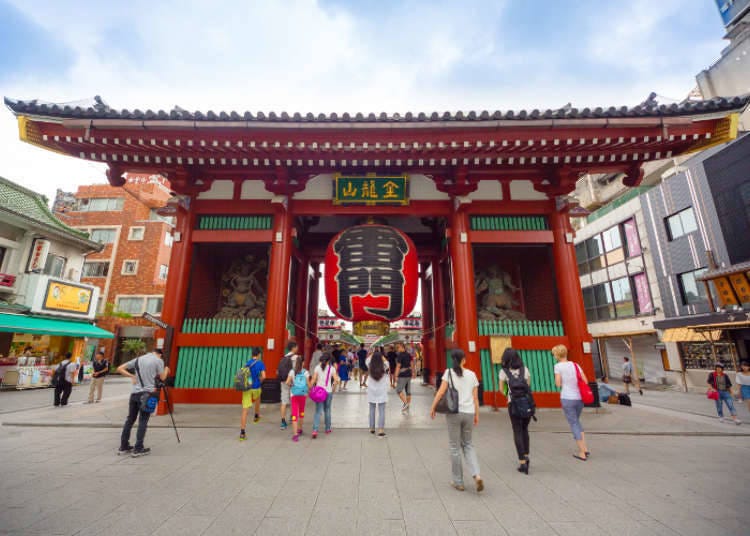
Asakusa prospered during the Edo era which started in 1603 when Ieyasu Tokugawa ruled over Japan, and Sensō-ji Temple was the center of activities back then. It's therefore no surprise to find that many buildings here are still oozing with traditional charm. Asakusa 's symbol has always been the large lantern hanging outside one of Sensō-ji's entrance gates, Kaminarimon. The shopping street that leads from this gate to Sensō-ji proper sells traditional souvenirs of all sorts. Enjoy some good old Japanese gourmet food as you immerse yourself in the Japanese vibe during your stroll here. Besides new year's hatsumōde temple visit, the temple is often abuzz with festivities passed down since the Edo era, like Sanja Matsuri in spring , Hōzuki Market in summer , Tori-no-Ichi in autumn , and Hagoita Market in winter . With so many relics from the past still being held in high regard, it's no wonder Asakusa is one of Japan's top tourist destinations for those seeking to come into contact with a more traditional side of Tokyo. Also consider dropping by Hanayashiki Amusement Park , an establishment with a history of more than 160 years where popular entertainment like rakugo (Japanese sit-down comedy) and stage plays are being held. It's your best bet for a dramatic tale about human nature in the area for sure!
35. Moe: Understanding this unique subculture by visiting the top three anime meccas of Japan
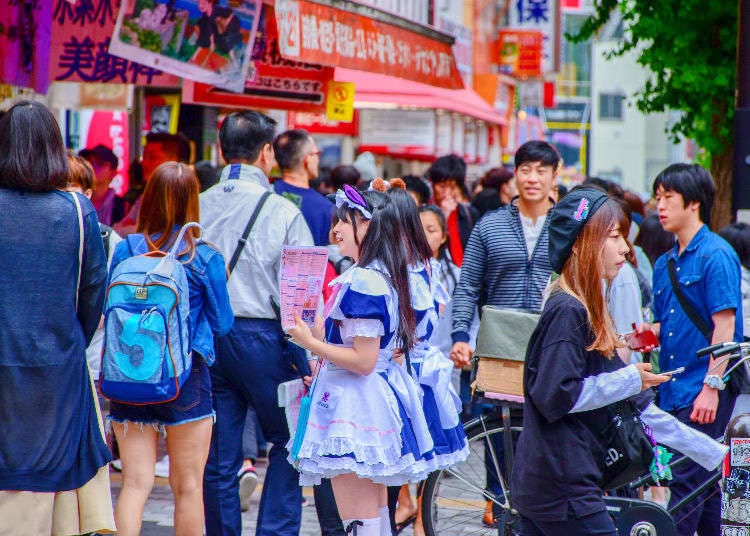
Anime has come a long way and is now fully developed as a uniquely Japanese subculture, and there are plenty of so-called anime mecca to be found within the Tokyo region for fans eager to make a pilgrimage. If you're a fan of Japanese anime , manga (comics), or video games , you won't want to miss making a trip down to Akihabara , Ikebukuro , or Nakano. The abundance of shops catering to fans of all inclinations is bound to further ignite your passion for the hobby! ● Akihabara This area has developed as an electronics haven since times past, and has earned the reputation for being a street of "otaku (diehard fan) culture" with its focus on anime , manga , video games , idol culture, maid cafes , and other curious subcultures. There are rows and rows of specialized stores retailing goods related to anime , manga , and video games here, and confident cosplayers strutting through the streets all day and night is a common sight as well. ● Ikebukuro Ikebukuro is home to one of the few large-scale terminal stations in Tokyo that sees the third highest daily ridership in the world. East of that station is what is commonly called eastern Ikebukuro , and the street cutting through this area is known as "Maiden Road". It is believed the main reason behind this name is because the area features more goods and items that especially appeal to the female crowd as opposed to the more male-oriented product lineups in Akihabara . Whether you're a lady who's a huge fan of anime or someone who proclaims to be fujōshi (referring to female fans of manga or anime who are support male homosexual relationships between characters - especially for characters considered bishōnen, or pretty boys), there are plenty of shops here offering anime goods and dōjinshi (fanzines) of all sorts that will surely tickle your fancies. Once you're tired, hop into one of the specialty restaurants nearby, like a butler cafe to rest and recharge. Animate Sunshine - chock full of cosplay shops and cafes - is the landmark building of the area. ●Nakano The northern area of Nakano is especially characteristic with its subculture specialty stores. At its central is the Nakano Broadway, where you can shop for out-of-print collectibles and the latest and greatest trends taking the world by storm all in the same location. What this means is that you'll have a great deal of fun doing your shopping here whether you consider yourself a subculture fan or not! If you do consider yourself an otaku, then all the more you should consider making a trip down to lose yourself in the dazzling array of shops catering to fans such as yourself. You may even find that one item you've nearly given up on because of how long ago it was put on the market. More than anything else, this is a great place to have fun deepening your knowledge on otaku culture in.
36. Toyosu Market: The new kitchen of Tokyo
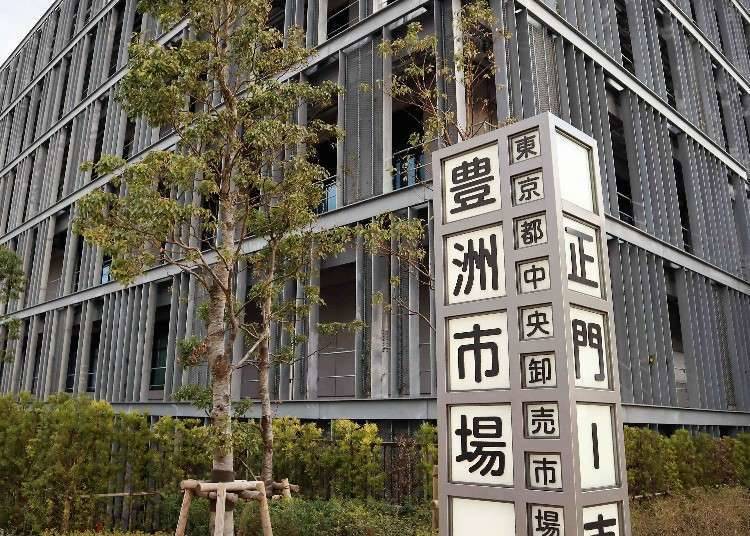
Toyosu Market opened for business in October 2018. The market is equipped to facilitate negotiations between suppliers and restaurants or retail stores, wholesalers, intermediate wholesalers and other industry professionals. It also offers an observation tour for visitors that allows them to enjoy the sights and sounds (and smells!) of the market from different perspectives. If you're an early waker, you may even be able to observe the intense tuna auctions held in the early mornings. In Uogashiyokochō, a large shopping street with about 70 shops hawking their wares, you can enjoy fresh seafood while checking out incredibly unusual ingredients and cooking utensils that aren't available for sale at Toyosu Market.
37. Mount Takao: Get in touch with Japan's lush nature as you hike up to the mountaintop
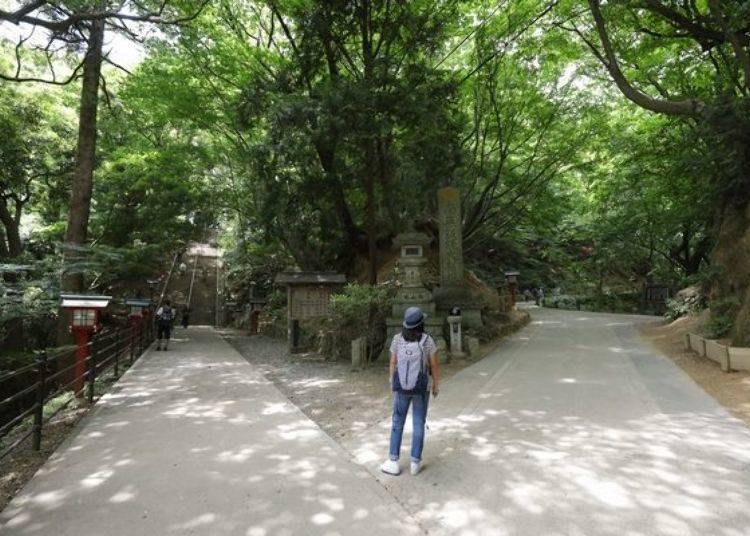
Mount Takao is a relatively small mountain standing at 600 meters (about 1,968 feet) above sea level and is just an hour's train ride from Tokyo. Don't let its small stature fool you, though. Mount Takao is a popular mountain where about 2.5 million visitors enjoy mountain hiking every year. In the travel guidebook published by Michelin, it debut with three stars in 2007 with a "must-see!" caption. There are a few routes that can take you up to the mountaintop in about two hours. If you take the cable car or chair lift to the middle of the mountain before starting on your trek, that means you'll reach the top in just an hour! On clear days, Mount Fuji is visible from the peak of Mount Takao . This is an excellent place to get away from the busy city and get in touch with Japan's lush and beautiful nature .
38. Shimokitazawa: Expose yourself to the latest trends in Japanese subculture
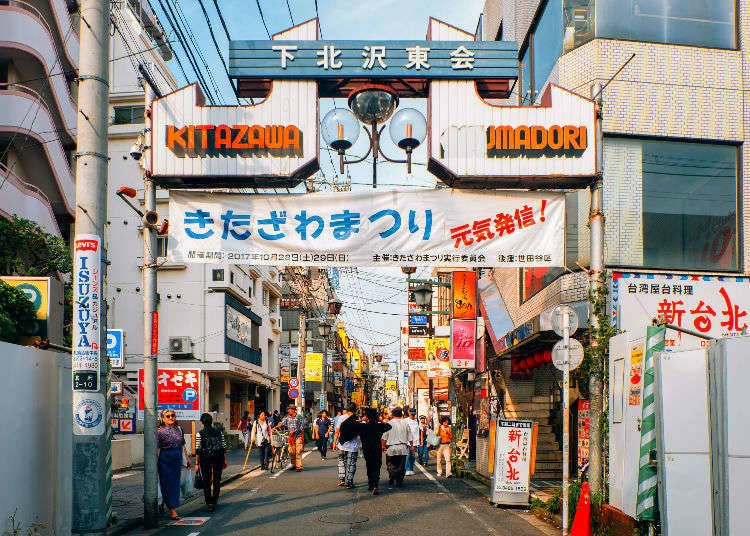
With easy access from popular Tokyo areas like Shibuya , Shinjuku , and Kichijōji, many youngsters are fond of gathering at Shimokitazawa . The town is, in a nutshell, a town of subculture. To be more specific, this is a town of music, stage plays, and traditional garb where lively commercial areas and serene residential buildings co-exist on the same street and it is known to be the source of many new trends and cultures. From tightly packed provision shops to charming little cafes , Shimokitazawa is known as one of Tokyo's finest streets for traditional clothes. The area is also lined with plenty of livehouses, large stage theaters, and smaller theaters where events are held on a regular basis. As a town with a high percentage of subculture focus, it may actually understand the current trends of Tokyo a lot better than the more general districts like Shibuya or Shinjuku !
39. Sunshine Aquarium: Is that penguin flying?!
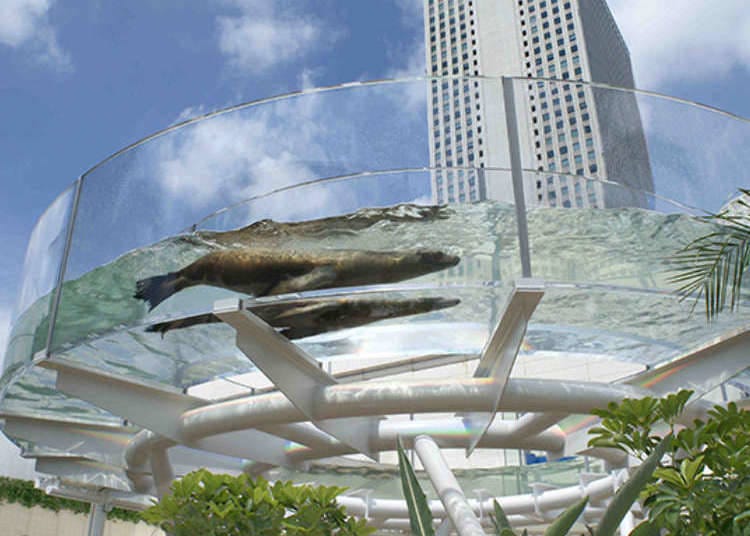
Sunshine City is a landmark shopping complex of Ikebukuro consisting of many different commercial facilities, a planetarium, an observatory deck, and an amazing urban high-rise aquarium on its rooftop (about 40 meters, or 131 feet above ground) called Sunshine Aquarium that's the first of its kind in Japan. Divided into three major areas - Sky Journey, Waterfront Journey, and Ocean Journey - the aquarium is home to about 750 species, and you'll be able to meet more than 37,000 individual animals like fish, dolphins, and otters. One of its most popular attractions is a large outdoors water tank area called "Sky Penguins". As they swim about in their tanks above you, it almost seems like they're flying through the air from building to building, making it a great spot for a memorable photograph.
40. Tokyo Dome City: From sports to entertainment, the Dome has got you covered
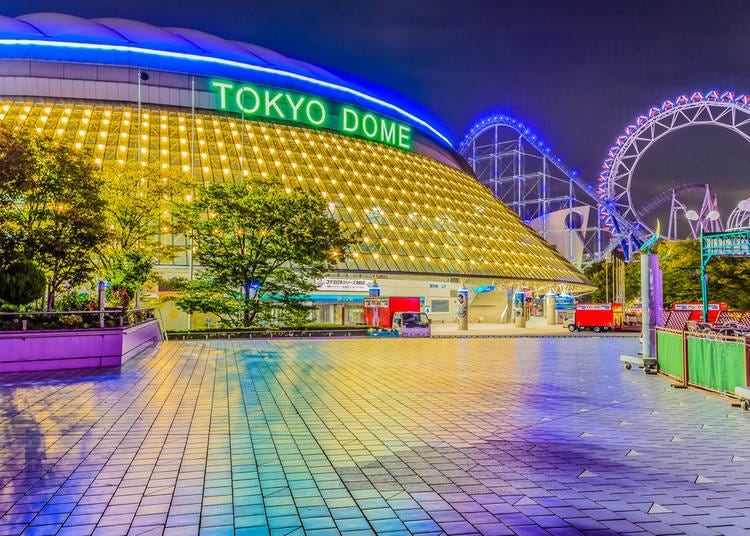
If you happen to be a sports fan, then we highly recommend you make a trip down to Suidōbashi / Kōrakuen Station. Ever heard of the Tokyo Dome? This is the home ground of Japan's representative baseball team, Yomiuri Giants, and you baseball matches are held at the Dome from spring to autumn . When the stadium is taking a breather from exciting sporting activities, it's also used for other more cultural events like concerts of well-known artistes. Kōrakuen Hall nearby is a gathering place for martial arts enthusiasts where thrilling boxing or professional wrestling matches are being held virtually every day. The area is surrounded by shopping centers, hotels , amusement parks , and other commercial facilities, so Tokyo Dome City is known as an urban entertainment center by the locals and people from all walks of life visit the area regularly.
41. Sanrio Puroland: A magical place for you to meet that mascot character who originated in Japan!
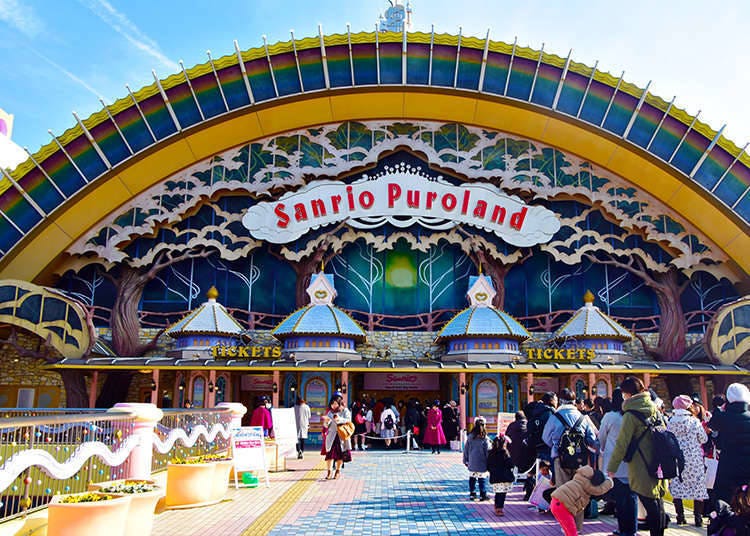
Yes, we're talking about popular mascot characters like Hello Kitty and My Melody! Sanrio Puroland is a theme park that offers visitors a chance to meet their favorite Sanrio mascot characters in real-life. Easily accessible from the Tokyo metropolitan areas, the place is always filled to the brim with families and tourists on weekends and holidays. The four-storey high indoor theme park offers and endless stream of interesting attractions, character shows , parades, and many other exciting activities. The most important part is that there's a good chance you can meet your favorite mascot characters like Hello Kitty, My Melody, Pompompurin, and others in real life! With countless restaurants and original merchandise stores everywhere in the theme park , you'll likely have little problem finding something to do for a one-day trip here.
42. Tokyo Disneyland and DisneySea: The theme park of dreams beloved by the world
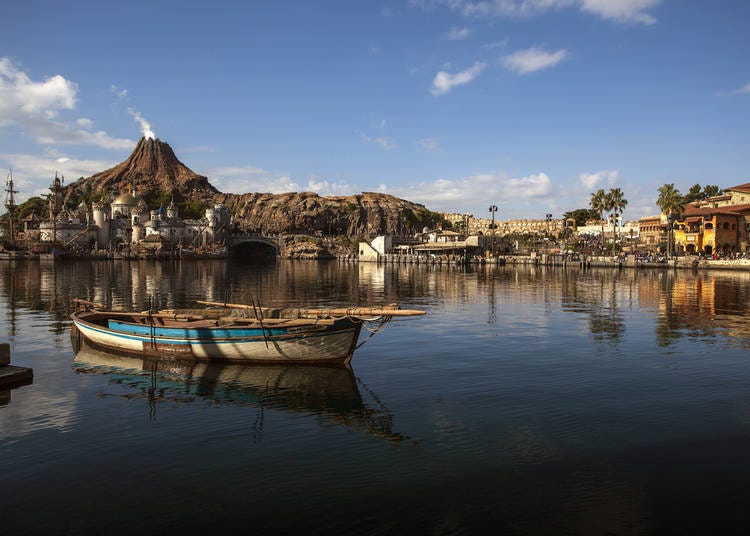
Tokyo Disneyland needs no introduction. The kingdom of dreams and magic opened its doors in 1983 and followed up with an adjoining Tokyo DisneySea in 2001, taking inspiration from folklore and legends of the sea around the world. More than 30 million people visit the two theme parks every year. In the vicinity is the Tokyo Disney Resort which includes Disney-themed hotels as well as major shopping malls like Ikspiari, turning the large area they cover into a magical Disney world. It takes only about an hour by train from the Tokyo metropolitan area to reach and is an excellent choice to consider for a day trip. Anyone, from young to old, can let the magic of Walt Disney's world of dreams enrich their Tokyo travels!
43. Ghibli Museum: Leap into the world of Studio Ghibli, producer of classic Japanese animation films
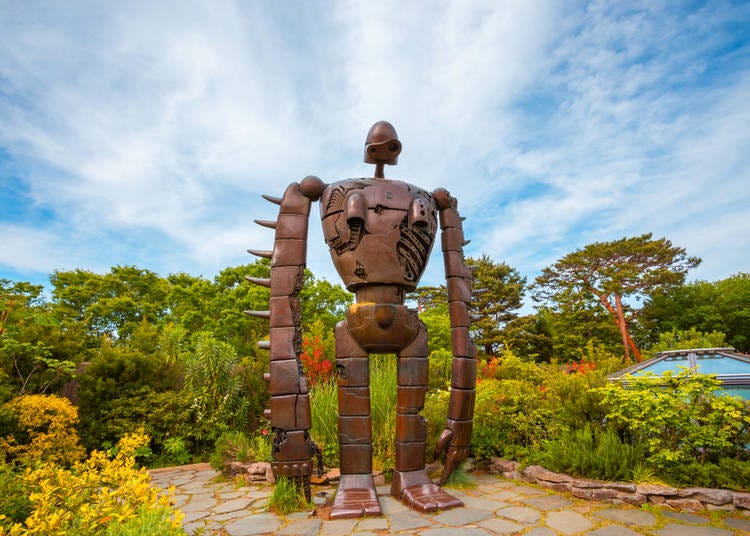
My Neighbor Totoro, Princess Mononoke, Spirited Away - these are just a few titles of the long list of classic Japanese animation feature films made by Studio Ghibli that have seen global success, and Ghibli Museum in Mitaka, Tokyo is where you can throw yourself completely into the mystical world of Ghibli. Permanent exhibits include a showcase of the animation production process, a video room playing an original short film that can only be seen in the museum , the Cat Bus, Robot Soldier, and many other fixtures that showcase Ghibli originals that have captivated the hearts of many around the world.
44. Ōedo Onsen Monogatari: Most popular day-trip bathing facility with an olden Edo era decor
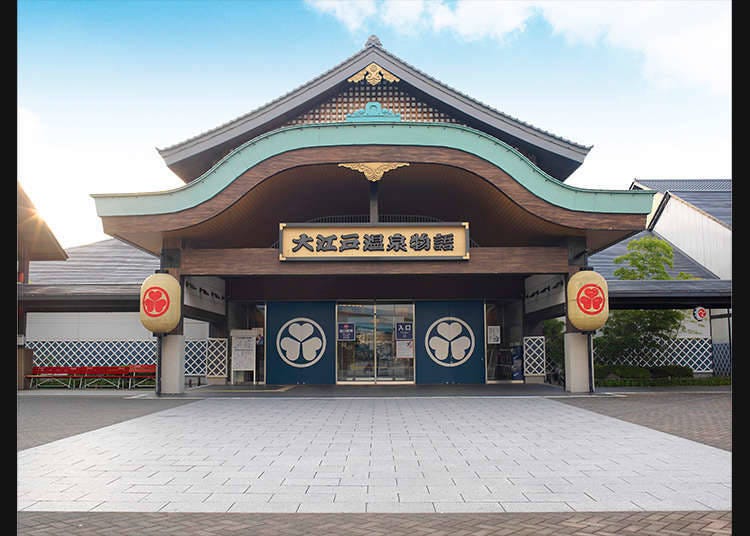
The largest onsen , or hot spring , complex in Japan located in Tokyo's Odaiba goes by the name of Ōedo Onsen Monogatari . The facility boasts 13 different types of onsen , including a natural onsen using water that wells up from 1,400 meters (about 4,593 feet) deep underground, an open-air onsen , feet onsen , and other special baths. The soaking isn't the only thing that attracts visitors to the place, though. It's especially popular among tourists for offering the opportunity to don a Japanese yukata, or summer kimono for a taste of Japan's traditional culture . The facility is about 2,314 square meters or 24,908 square feet wide and contains a Japanese garden with feet soaking areas for you to enjoy the onsen experience without taking off your yukata. In the building is an area that reproduces an Edo era street - an era that started in 1603. This is also where you'll find Japanese food , Korean cuisine, and a variety of other food shops along with shopping corners and beauty salons. You can entertain yourself for an entire day here and still feel refreshed and recharged by the end of it, ready to embark on yet another chapter of your Tokyo trip!
45. Nippara Limestone Caves: A mystical and intoxicating nature walk
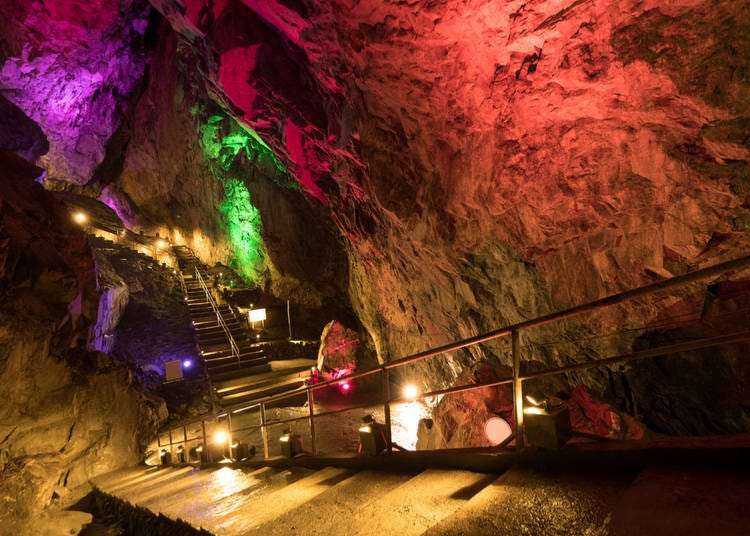
These limestone caves are located in Okutama, a two-hour drive away from the metropolitan area, and is surrounded by beautiful natural sights - a complete change from the concrete jungles of Tokyo. The caves are formed when rain and other things wear down limestone ground over a long and sustained period of time, until they grind out an empty cavity big enough for humans to walk through. Nippara's caves are considered one of Japan's seven greatest limestone caves and is a designated natural property of Tokyo. As you walk deeper into the caves, you'll find that it's being lit up by a slew of colorful illuminations, adding to its mystical air. Countless tourists specially make a trip here for photo opportunities because of that. In the deepest part of the cave is a statue of the goddess Kannon, who is said to answer prayers from those seeking a romantic partner.
46. Food, Glorious Food: They taste as good as they look!
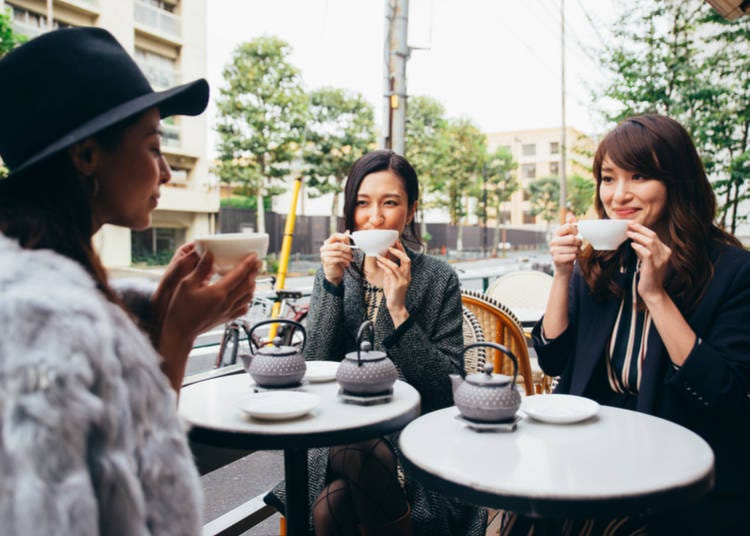
Photogenic food that look good and taste better is all the rage among youngsters in Tokyo right now. And who can blame them? Posting photos of these perfectly pretty gourmet dishes will earn anyone major social network points, after all! Here are three fancy restaurants with the finest food that you can enjoy looking at, taking photos of, and eating, of course! ■ELLE cafe The signature item here is the "Smoothie Bonbon", which is prepared with seasonal fruits and luxurious whipped soy milk. Its charming looks and tasty sweetness has captured the hearts of many a lady. As only a limited amount is sold in all three of their stores in Aoyama, Roppongi Hills, and Ginza Six, we highly recommend that you make a special trip down to any one of them to give this great dessert a go. ■Shiro-Hige’s Cream Puff Factory Located a short five minutes walk from the Setagaya-Daita Station on the Odakyu line, Shiro-Hige’s Cream Puff Factory is known among Studio Ghibli fans for their Totoro-shaped cream puffs that are stuffed with all sorts of fillings - standard custard, chocolate cream, raspberry and cream cheese - you name it, they've probably got it! The decor is based on a western-style mansion that seems to have walked right out of a Ghibli film, and there are plenty of Ghibli goods available for sale as well. This is a must-visit for fans of the studio for sure! ・Address: 5 Chome-3-1 Daita, Setagaya City, Tokyo 155-0033 / TEL: 03-5787-6221 / Hours: 10:30AM - 7PM ■ Harajuku Electrical Chamber of Commerce The "Lightbulb Soda" from Harajuku Electrical Chamber of Commerce in trendy Harajuku has exploded in popularity lately. Originally from South Korea, it's the unique idea of serving a soda drink in a lightbulb-shaped container. Ladies who enjoy pursuing the latest fashion are especially enamored by this drink. It helps that it's very photogenic as well, and any photos of this interesting drink is bound to stir up plenty of discussion among your friends on social networks. ・Address: Jingumae 3-20-10, Sukigara Building B1, Shibuya , Tokyo 150-0001 / TEL: 03-6434-5074 / Hours: 11AM - 7PM
47. Christmas Illuminations: A new type of tourist hot spot in Tokyo during winter
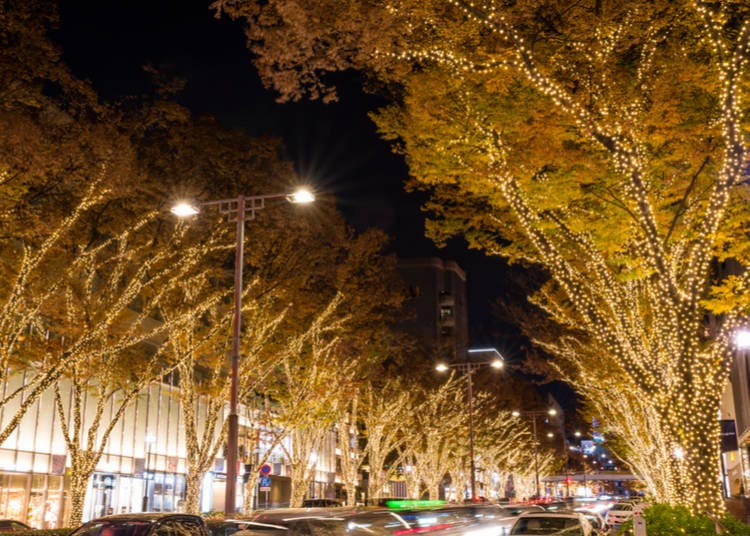
There's a recent trend in Japan lately of installing illuminations during the Christmas season . At night, when all these illuminations are lit up, the usual drab scenery transforms into something else altogether and is a sight to behold. Perhaps the most well-known area is the road with zelkova trees between Shibuya 's Jingū Bashi intersection to Omotesandō intersection. This stretch of road is about one kilometer (about 3,280 feet) long and the 150 zelkova trees planted on both sides of the road will be decorated with 900,000 LED lightbulbs, enveloping the area in a warm glow of mystical delight. Needless to say, opportunities for good photographs abound. If you're visiting Japan during Christmas season , definitely pen this down as something to see during the night!
48. Ekiben: Try out station lunchboxes from train stations all over Japan!
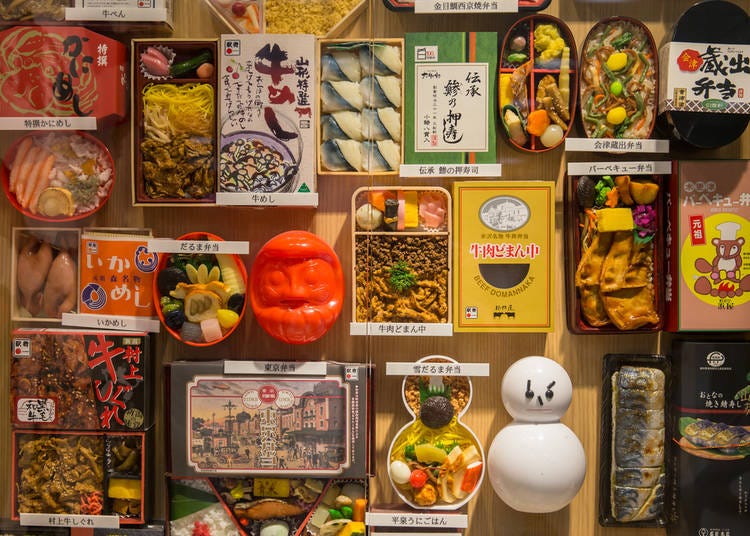
Bento , or lunchboxes, has traveled around the world and gained equal footing with ramen and sushi as one of Japan's representative food in recent years. It offers a balanced and nutritional meal at a bargain and is ever so pleasant to look at with its neat layout and complementary colors. We're not going to recommend just any bento to you here, though. What we'd like you to really try is an "ekiben", or train station lunchbox! These are available at Tokyo Station as well as major stations in other regions. Freshly prepared with local regional specialty foods, it's an excellent way for you to experience the flavors of different regions all over Japan without too much legwork. Unwrapping an ekiben for the first time can be a moving experience, and it's something you have to try at least once during your trip.
49. Tokyo National Museum: Admiring Japan's national treasures and important cultural assets
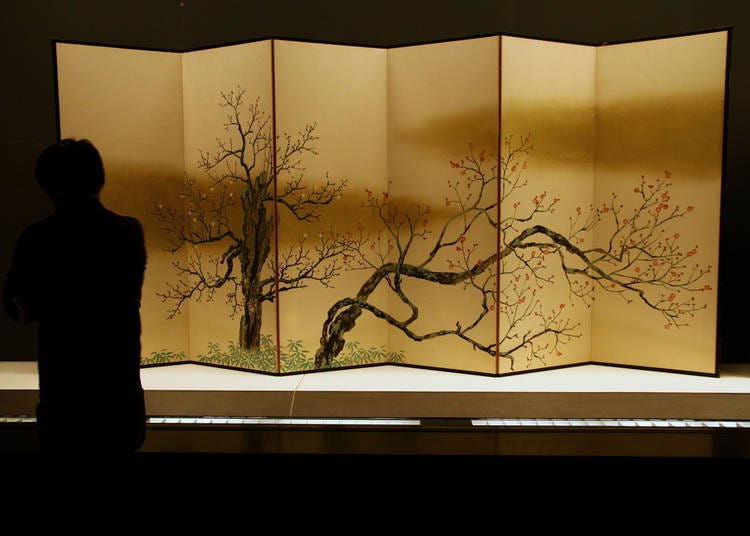
Tokyo National Museum was established in the year 1872 and is the oldest museum in Japan. It consists of a few galleries, most notable of which are the main gallery, Asian gallery, Heisei gallery, and Horyuji Treasures, and collectively they house the most expansive collection of artifacts and curio in Japan. Some 87 of those items are considered national treasures, while 634 others are designated as important cultural assets. Each gallery provides its own guided tour that is also available in English. It will be difficult to finish viewing everything in one visit, so it may be better to zero in on the galleries that interest you the most. In the basement level, you'll find a museum shop that sells interesting trinkets and stationery that are designed to look like collectibles, affording you an opportunity to bring a piece of Japanese history back home with you.
50. Samurai Makeover: The full, no-holds barred Japanese traditional cultural experience
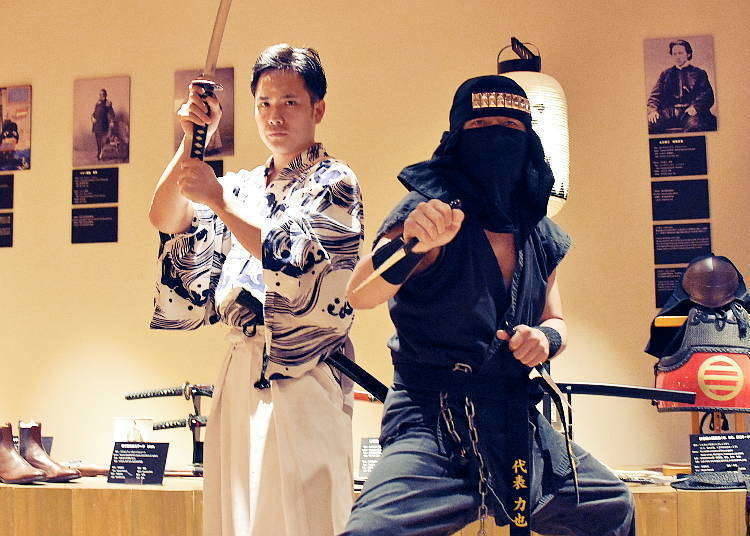
Unfortunately, we have to clear something up first: There are no samurais in modern Japan anymore. Nevertheless, it's entirely possible to get in touch with this feudal culture in its native country, and that's what we recommend for your trip as well! If the idea of viewing Japanese swords, armor, and sword technique performances up close appeals to you, then the Samurai Museum in Shinjuku is where you want to be. This is also where you can dress up as a samurai and take pictures of your temporary new station in life. For Japanese sword affinicados, a visit or two to Seiyudo in Ginza or Ryōgoku's Japanese Sword Museum is probably in order as well. These are all places where you can admire the beauty of genuine Japanese swords and turn your experience of donning Japanese armor into a cherished memory.
1. Shibuya Scramble Crossing 2. Shinjuku Kabukichō 3. Tokyo Skyline 4. Tokyo Station 5. Rainbow Bridge 6. Ramen 7. Ameyoko 8. Harajuku Takeshita Street 9. Hachiko Statue 10. World Heritage Site Mount Fuji ・ Take me to numbers 1-10 11. Ginza 12. Backstreet Bars 13. Japanese Gardens 14. Jinbōchō 15. Edomaezushi 16. Hitomakumi 17. Kappabashi-dōri 18. Cruise Ships 19. Hanami 20. Life-size Gundam ・ Take me to numbers 11-20 21. Peak Hour Rush 22. Meiji Shrine 23. Omotenashi 24. Ueno Zoo 25. 100 Yen Shops 26. Sumo Wrestling 27. Tsukishima 28. Geisha Makeover 29. Unagi Kabayaki 30. Yanesen ・ Take me to numbers 21-30 31. Zen Meditation 32. Robot Restaurant 33. Fireworks 34. Asakusa 35. Moe 36. Toyosu Market 37. Mount Takao 38. Shimokitazawa 39. Sunshine Aquarium 40. Tokyo Dome City ・ Take me to numbers 31-40 41. Sanrio Puroland 42. Tokyo Disneyland and DisneySea 43. Ghibli Museum 44. Ōedo Onsen Monogatari 45. Nippara Limestone Caves 46. Food, Glorious Food 47. Christmas Illuminations 48. Ekiben 49. Tokyo National Museum 50. Samurai Makeover ・ Take me to numbers 41-50
- Category Other Sightseeing
- How To: Sightseeing
Share this article.

Recommended places for you

Shinjuku Gyoen National Garden

Ameyoko Shopping Street
Old Towns (Shitamachi)

TOKYO SKYTREE®
Ryogoku / TOKYO SKYTREE(R)

The Tokyo Station Marunouchi Building
Tokyo Station

Nezu Shrine

Senso-ji Temple

Essential for Summer Travel! Find Your Perfect Japanese Sunscreen at Loft (2024)

The Samurai Restaurant: An Insane, Energetic Night of Music and Lights
by: Cassandra Lord

Sweet Treats of Summer 2024: Must-Try Seasonal Frozen Treats found at 7-Eleven Japan

Shibuya Levels Up: Exclusive Food and Experiences at the New Shibuya Sakura Stage (Opened July 25)
by: Miyu Shimada

Experience the Magic: Mt. Fuji and Lake Kawaguchi Fireworks Festival (August)

Tokyo Summer Festivals: Bon Odori, Digital Festivals, and Theme Park Events for August 2024
by: Kaori Kimura
Inspiration for Accommodations

Stunning Tokyo Tower View Hotels: Enjoy Spectacular Scenery from Your Private Space

Family-Friendly Hotels with Free Shuttle to Disneyland: Convenient Access for a Magical Stay

Charming Hakone Hotels with Mt. Fuji View: Enjoy Stunning Scenery from Your Private Space

Convenient Tokyo Hotels with Airport Shuttle: Ideal for Families and Heavy Luggage

Convenient Asakusa Hotels with Kitchens: Ideal for Extended Family Visits

Experience Luxury: Hakone's 10 Best Five-Star Accommodations

Enjoy Mt. Fuji Autumn Leaves! Top Hotels Near the Popular Autumn Leaves Corridor

Experience Hakone Fall Foliage from Your Room with Stunning Views
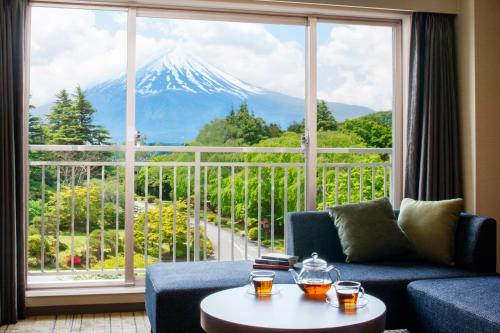
Enjoy Mt. Fuji from the Comfort of Your Room! Recommended Ryokan with Mt. Fuji View

Experience Luxury at Mt. Fuji Resort Hotels! Best Extended Stay Options for Families

Japan Doesn't Have to be Expensive! How to Budget for a Family Trip to Japan (& Tips From Travelers)
by: Dara Robinson

Tokyo Roppongi|Roppongi Station Area Map & Sightseeing Information

Guide to traveling Japan with kids: Advice and tips from a parent in Tokyo!

Explore Marunouchi: Half-Day Tokyo Itinerary to Old Shoguns’ Lodgings at Edo Castle and the Imperial Palace

Essential Tokyo: The Complete Guide to Ikebukuro Station

Explore a Magical Indoor Forest with teamLab's Latest Collaborative Illumination
- #best ramen tokyo
- #what to buy in ameyoko
- #what to bring to japan
- #new years in tokyo
- #best izakaya shinjuku
- #things to do tokyo
- #japanese nail trends
- #what to do in odaiba
- #onsen tattoo friendly tokyo
- #best sushi ginza
- #japanese convenience store snacks
- #best yakiniku shibuya
- #japanese fashion culture
- #best japanese soft drinks
Must Visit Historical Places in Tokyo
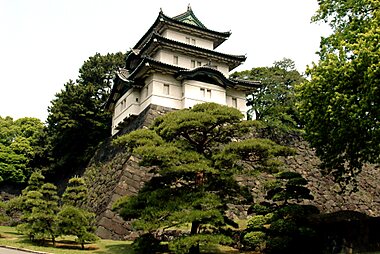
Tokyo Imperial Palace
The stunning residence of the Japanese emperor located on the former site of Edo Castle.
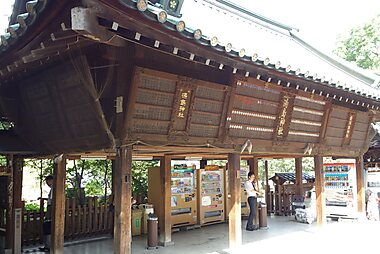
Yushima Tenmangū
One of Tokyo's many beautiful shrines. This one's history reaches back to the 5th century AD.
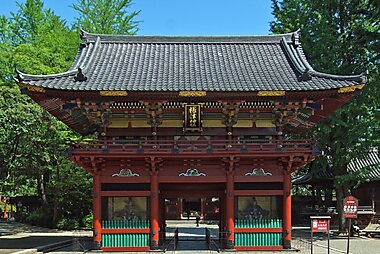
Nezu Shrine
Nezu Shrine is a Shinto shrine located in the Bunkyō ward of Tokyo, Japan.
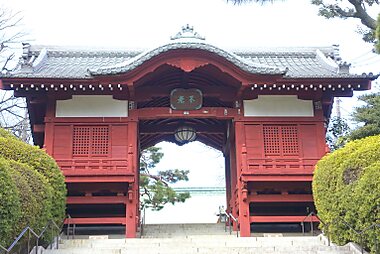
Gokoku-ji is a Shingon Buddhist temple in Tokyo's Bunkyō.
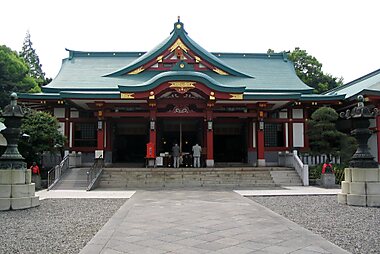
Dating back to the 14th century, this picturesque Shinto shrine was destroyed during WWII and reconstructed in the following years.
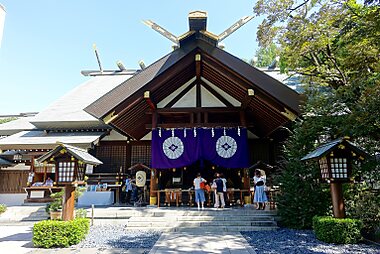
Tokyo-daijingu
This Shinto shrine (called Tokyo daijingu by the locals) is wildly popular with the Japanese, who come here to pray for happiness in…

Shibamata Taishakuten Temple
Daikyō-ji, popularly known as Shibamata Taishakuten, is a Nichiren-shū Buddhist temple in Katsushika, Tokyo, Japan.
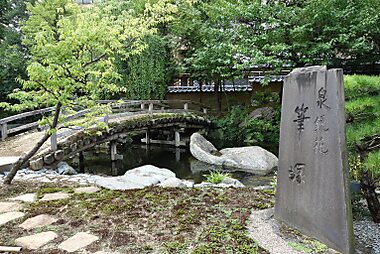
Yushimaseido Temple
Yushima Seidō, is a Confucian temple in Yushima, Bunkyō, Tokyo, Japan.
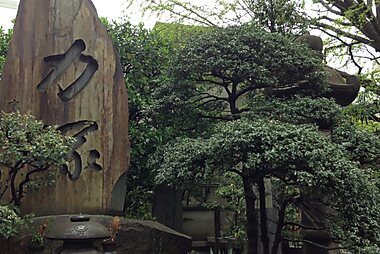
Ekoin Temple
Ekō-in, also known as Honjo Ekō-in, is a Pure Land Buddhist temple in Ryōgoku, Tokyo.
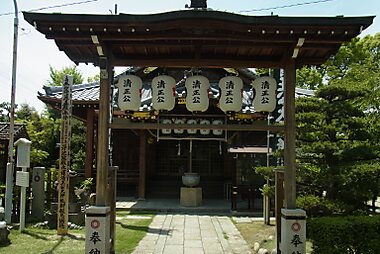
Myōgyō-ji Temple
This Buddhist temple features not only beautiful architecture, but it's also closely related to Japanese ghost stories - find out why!
Sygic Travel - A Travel Guide in Your Pocket

More interesting places
- Privacy Policy
- STOCK 360° TRAVEL VIDEOS
Tell us more about yourself: Take our user survey now!
10 Essential Museums To Visit In Tokyo
Explore the city's best locations for art, science and history.

Whether a resident or a tourist, don't leave Tokyo without visiting these truly essential museums.
Tokyo is home to some of the most remarkable art, film, science, history and culture spots in the world, which often means that you can find local and national museums spread out across every area of the city — so choosing where to go may be a challenge. To help you narrow down your must-see, must-go spots, we’ve narrowed down Tokyo’s long roster of museums to the following 10 essentials. Locals, you have no excuse for not having visited those. Visitors, whether you’ll be in Tokyo for just a few days or longer, make sure you stop by at least half of these. Now let’s get started!
1. National Museum of Nature and Science
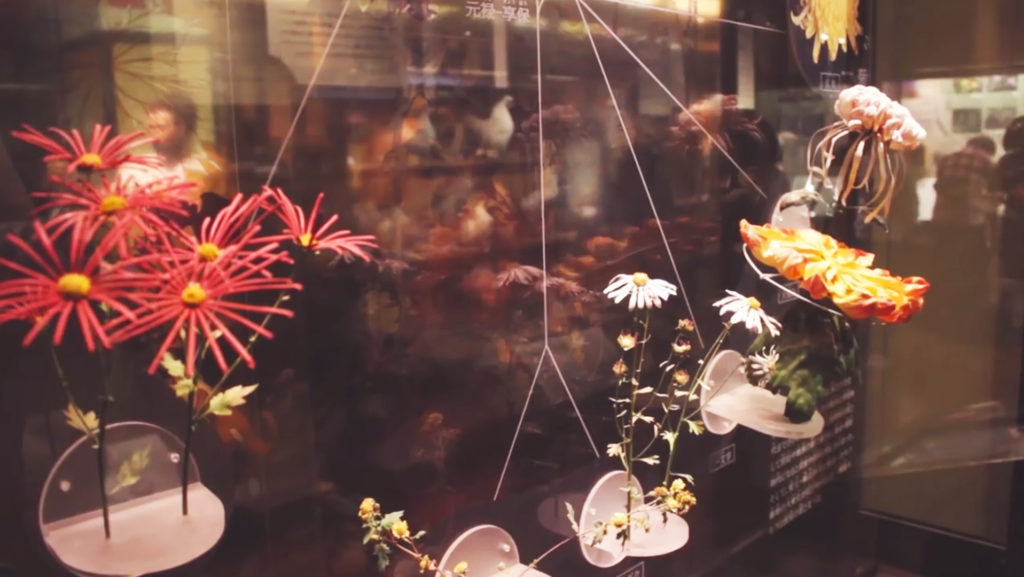
Nestled in the eastern corner of Ueno Park, the National Museum of Nature and Science is a must-see for anyone interested in natural and technological history. The facility is huge, and has an impressive collection of flora and fossils, which are beautifully displayed throughout the entire building. The museum also celebrates technological advancement, and displays a range of tools, instruments, literature and objects that have been used to preserve and study the world around us. Why not take a nice stroll through Ueno Park and pop in for an afternoon of wonderment? Look for the enormous (and adorable) blue whale statue next to the entrance.
Hours: 9 a.m.-5 p.m. Sunday to Monday; 9 a.m.-8 p.m. Saturday to Friday Address: 7-20 Ueno Park, Taito-ku Admission: ¥620 (Adults), Free for high-school students and younger
2. Tokyo National Museum
A post shared by 野田和俊 (@jimpoet1971) on Dec 18, 2017 at 3:33am PST
Also located in Ueno Park, Tokyo National Museum is one of Japan’s oldest and most celebrated museums in Japan. Opened in 1872, the museum displays a wide range of artworks, antiquities and artefacts from both Japan and other countries in East-Asia. It particularly specializes in art, archeological objects and historical documents, and holds around 110,000 items (89 of which are national treasures). Tokyo National Museum is recommended for anyone with a particular love for Japanese and East-Asian culture and history.
Hours: 9:30 a.m-5 p.m. Tuesday to Sunday (closed Mondays) Address: 13-9 Ueno Park, Taito-ku Admission: ¥620 (Adults), ¥410 (University Students), Free for High/Junior High/Elementary School Students, people under 18 and over 70
3. Suntory Museum of Art
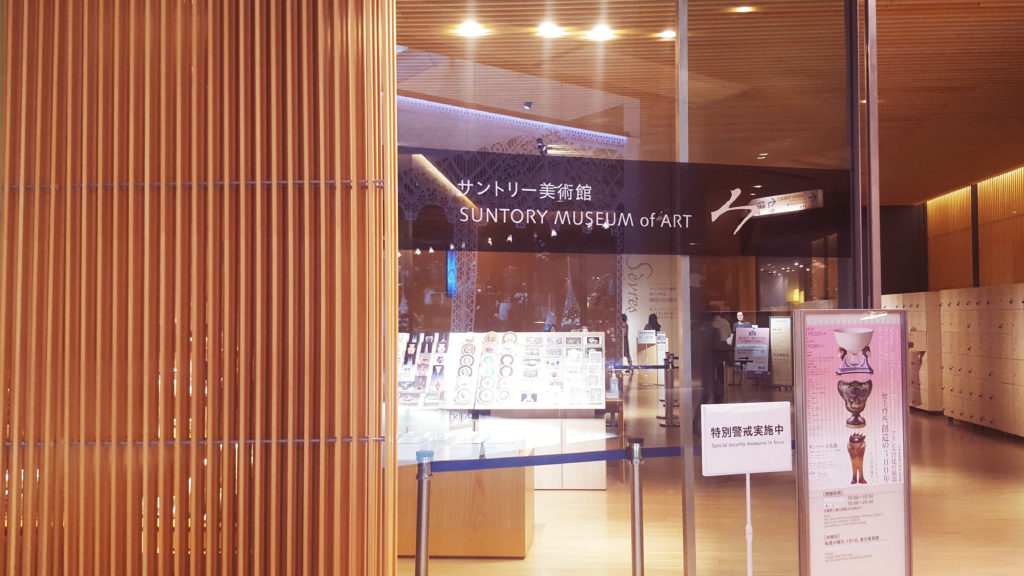
Located on the third floor of Tokyo Midtown, Suntory Museum of Art has been around since 1961 and proudly maintains a theme of celebrating “Art in Life.” The current collection consists of over 3000 articles, with each piece themed to have a close connection with Japanese life. Though the museum has no permanent exhibitions, it houses a range of paintings, lacquerware, ceramics, glass and other items — and of course special exhibitions throughout the year. Uniquely, the museum also offers traditional tea ceremonies every other Thursday in its Genchoan Tea Ceremony Room.
Hours: 10 a.m.-6 p.m. Sunday to Thursday; 10 a.m.-8 p.m. Friday-Saturday. Address: 9-7-4, Akasaka, Minato-ku Admission: Varies by exhibition. Free admission for junior high students and under.
4. The Japan Folk Crafts Museum
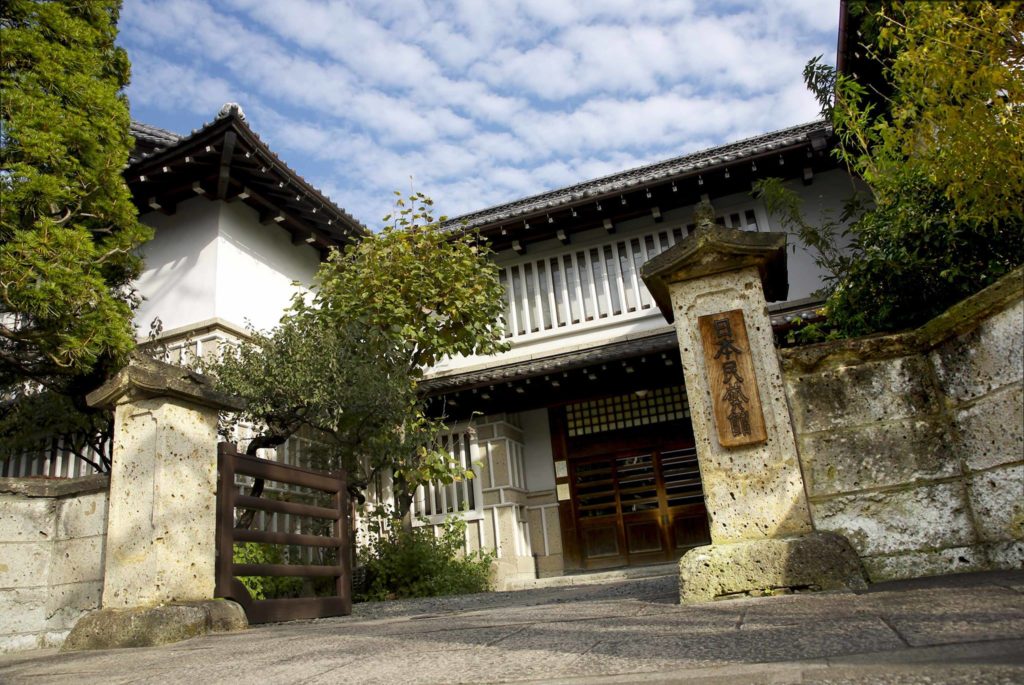
Opened by Soetsu Yanagi in 1936, the Japan Folk Crafts Museum is the ultimate location to celebrate mingei (folk crafts). The museum’s collection is made up of around 17,000 craft works, including textiles, woodwork, paintings and other crafts. It also houses a range of works from Okinawa, the Korean Peninsula, China and Taiwan.
Hours: 10 a.m.-5 p.m. Address: 4-3-33, Komaba, Meguro-ku Admission: ¥1,100 (Adults), ¥600 (Universities & high school students), ¥200 (Junior high & elementary school students)
5. Taro Okamoto Memorial Museum
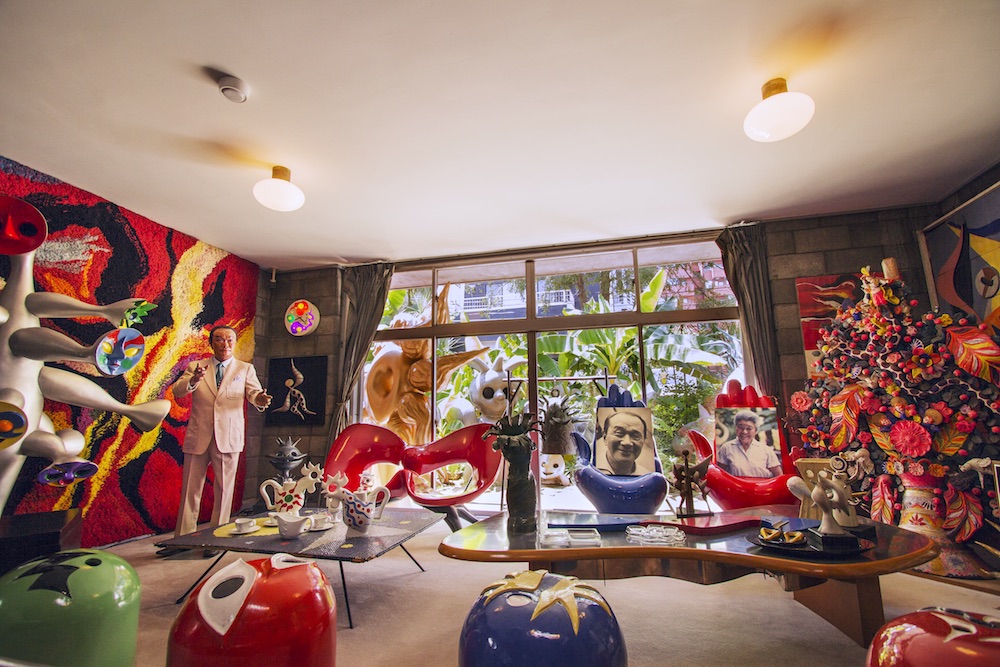
The Taro Okamoto Memorial Museum celebrates the work of avant-garde painter and sculptor Taro Okamoto. After Okamoto’s death in 1996, his home and studio were turned into the museum in order to display his art and share his creations with the public. Visitors can see exactly where Taro Okamoto lived and worked. The museum houses a wide range of Okamoto’s work, including sculptures and paintings, as well as a shop on the first floor where visitors can purchase various books and goods inspired by Okamoto’s works.
Hours: 10 a.m.-6 p.m. Address: 6-1-19, Minami-Aoyama, Minato-ku Admission: ¥620 (General), ¥310 (Elementary School Children)
6. Bunkamura Museum of Art
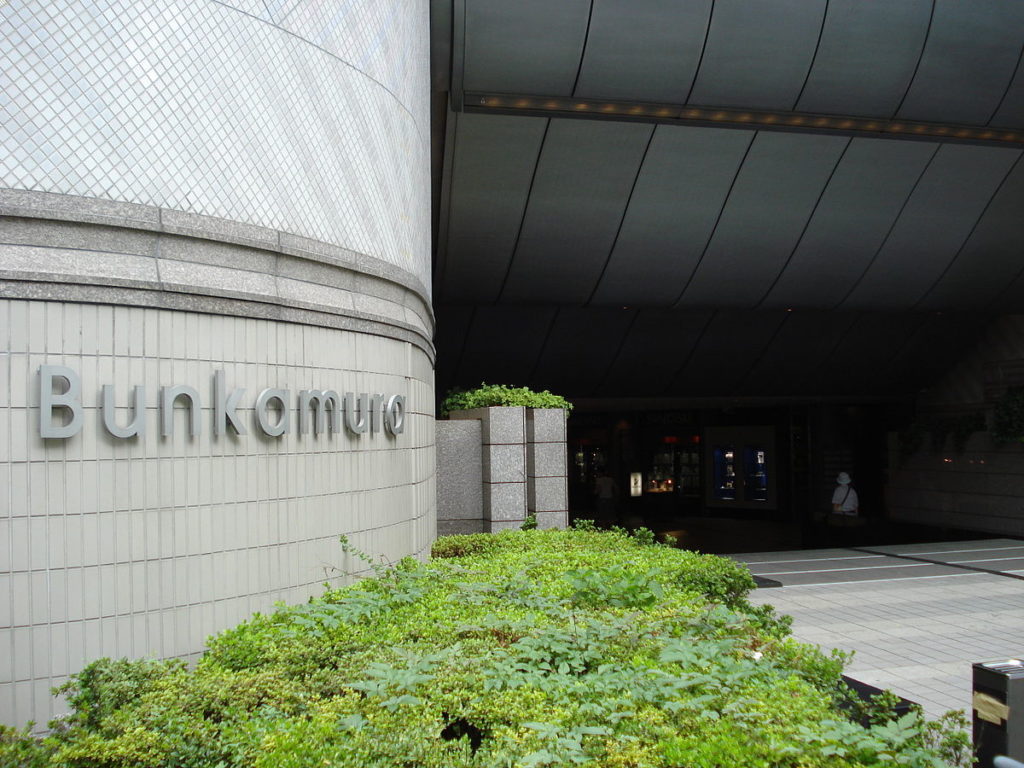
Located a 12-minute walk from Shibuya station, Bunkamura is a museum, theatre, concert hall and cinema all rolled into one. The museum gives its visitors the ability to indulge in a wide range of artistic and cultural experiences all within the same location. Opened in 1989, Bunkamura exists as a ‘cultural complex’ celebrating art, performance, music and film. The museum receives around 2.8 million visitors per year and is an excellent destination for art and film lovers.
Hours: from 10 a.m. (closing times vary between the museum’s facilities) Address: 2-24-1 Dogenzaka, Shibuya-ku Admission: Varies per exhibition
7. National Museum of Emerging Science and Innovation (Miraikan)
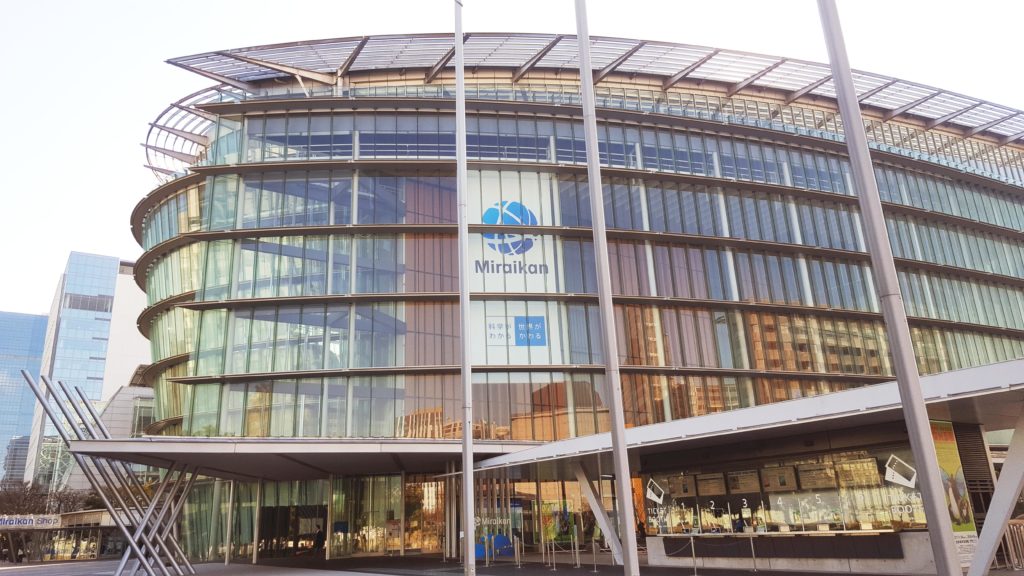
The National Museum of Emerging Science and Innovation — otherwise known as Miraikan — can be found in Odaiba, just a 15-minute walk from Daiba and Tokyo Teleport stations. This museum celebrates new technology and cutting-edge innovation and science. Opened in 2001, Miraikan was created to develop a greater understanding of science and technology, and to aid in Japan’s goal of becoming an increasingly scientifically and technologically creative nation. This museum is a must-see for anyone interested in emerging science and technological advancement.
Hours: 10 a.m.-5 p.m. Address: 2-3-6 Aomi, Koto-ku Admission: ¥620 (Adults), ¥210 (18 years old and under)
8. Amuse Museum
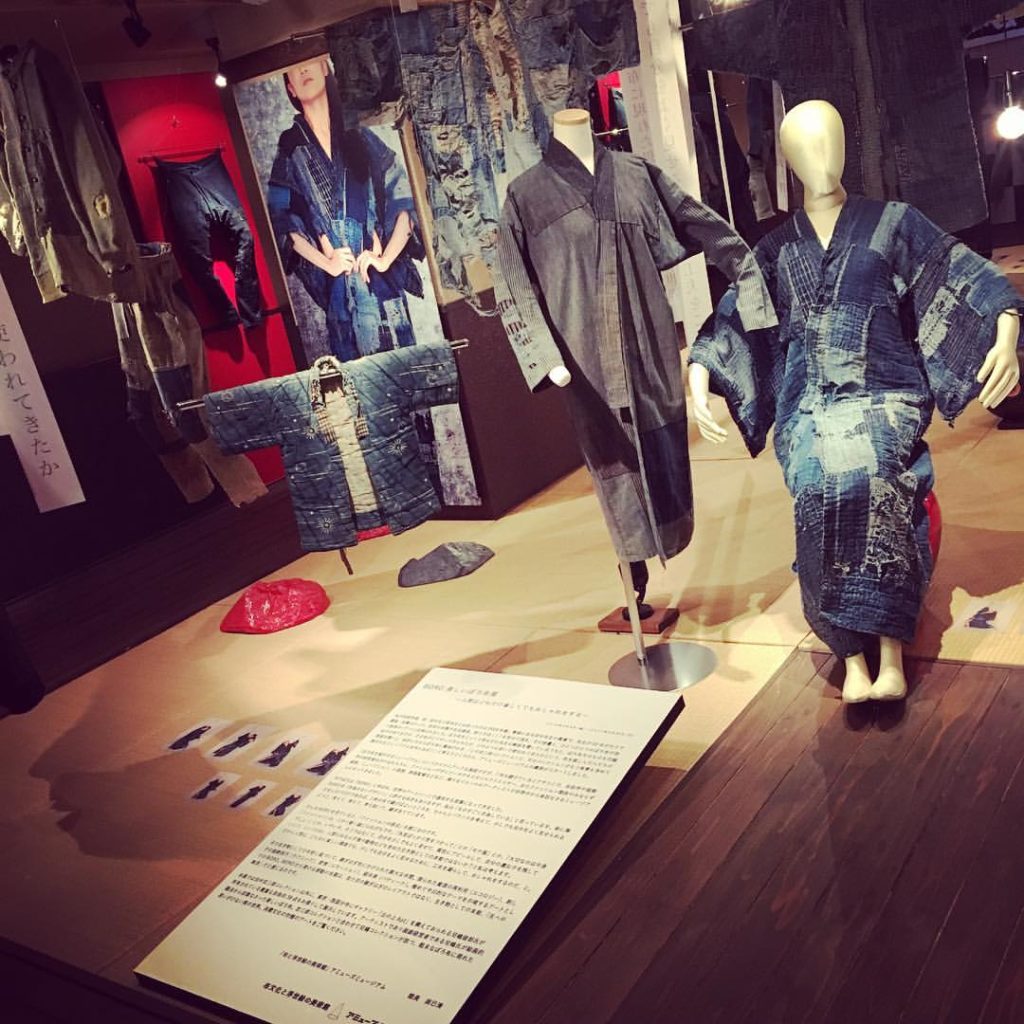
Only five-hundred meters from Asakusa Station, Amuse Museum is an art and cultural facility dedicated to celebrating an ethos of “harmony, beauty and technology.” Amuse describes itself as a ‘live’ museum, specializing in textiles, graphics and designs influenced by Japanese traditional culture. The museum’s permanent exhibition, ‘BORO’, is a collection of textiles and patched clothing, some of which date back to the Edo period. These pieces are simple, and have been passed down through generations, each piece being mended through the application of patches of cloth, thus celebrating Yuyo no bi (beauty of practicality).
Hours: 10 a.m.-6 p.m. (closed Mondays) Address: 2-34-3, Asakusa, Taito-ku Admission: ¥1,080 (Adults), ¥864 (University & High school students), ¥540 (Junior high and elementary school students)
9. Ghibli Museum
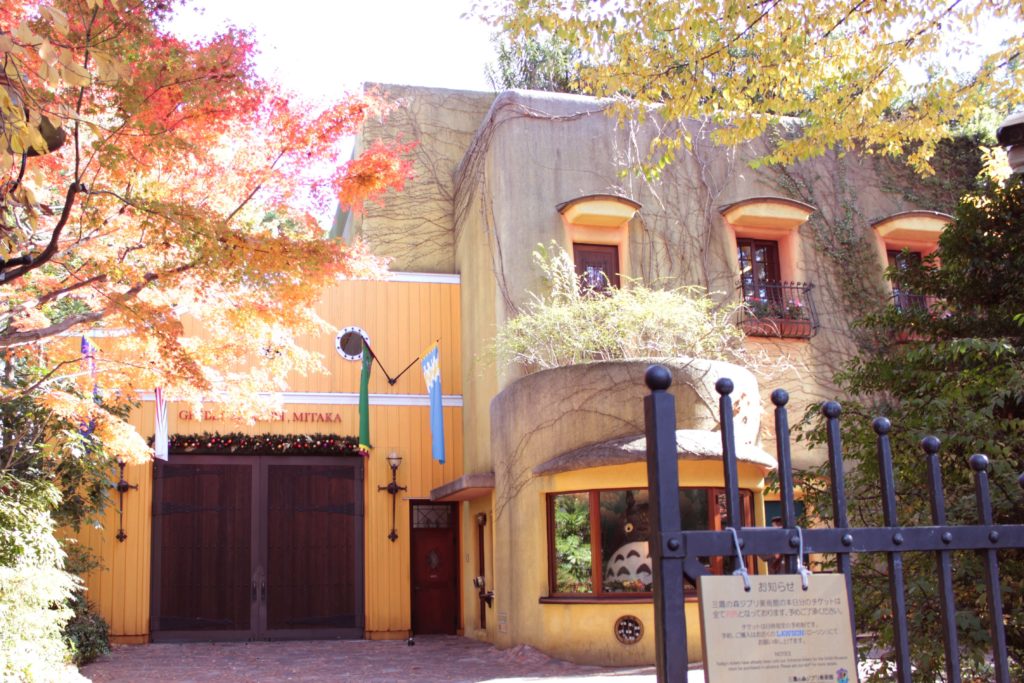
Regardless of whether you’re a fan of anime, art, and film or not, the Ghibli Museum is a must-see! Just over a 15-minute walk from Mitaka Station, the museum is an enchanting facility celebrating the history and works of Studio Ghibli, the company behind some of the world’s most renowned anime works (Totoro, Spirited Away, Princess Mononoke — to name just the very basic). Expect to spend a few hours perusing the beautiful collection of original drawings and concepts, watching the exclusive animated short in the museum’s adorable cinema, and exploring the rooftop garden where you’ll find the five-meter-tall Robot Solider from Laputa Castle in the Sky. Keep in mind, however, this museum is immensely popular and you can buy tickets only in advance. See more about that here .
Hours: 10 a.m.-6 p.m. (closed most Tuesdays) Address: 1-1-83 Simorenjaku, Mitaka-shi Admission: ¥1,000 (Adults), ¥700 (Age 13-18), ¥400 (Age 7-12), ¥100 (Age 4-6). Tickets sold in advance only.
10. Edo-Tokyo Tatemono En
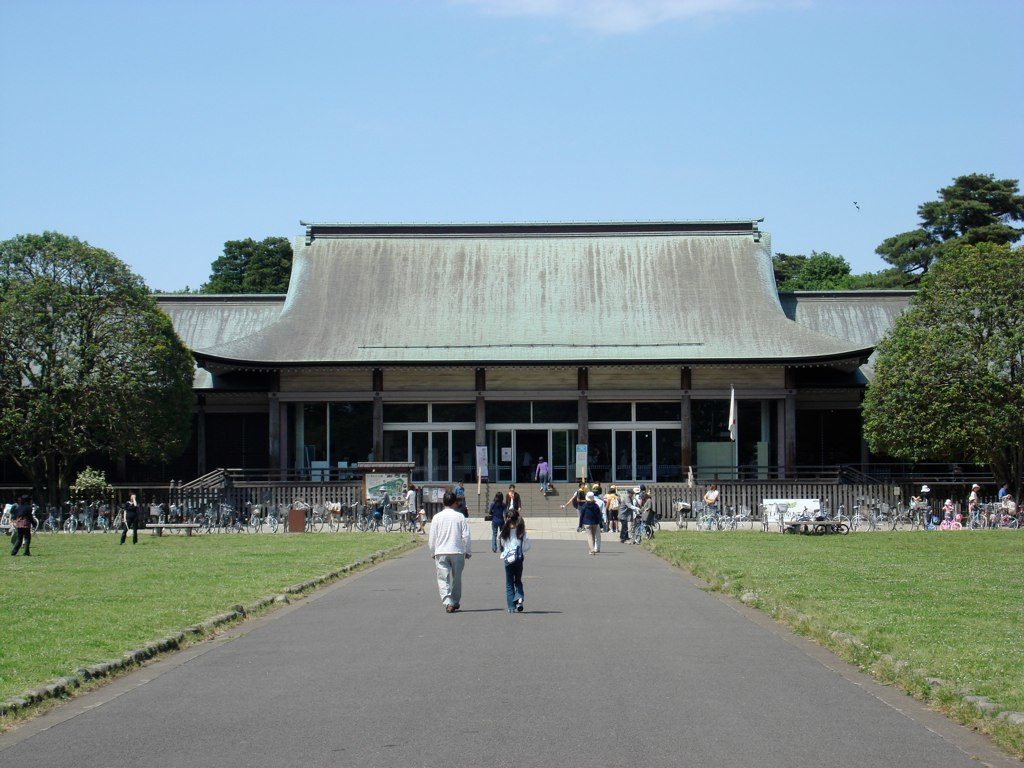
This open-air museum was established in 1993 to reconstruct, preserve and exhibit historical buildings so that they may be enjoyed for generations to come. These buildings range in age from early Edo period to post-World War II and you can feel the then-vibes by entering each house and building and exploring the indoors. From a Meiji-style police box to a photo studio from the Showa era, this open-air museum makes you feel almost as if you were on a time travel exploration. The facility also hosts various cultural events throughout the year, including its annual summer festival in August and New Year’s event in January.
Hours: April-September: 9:30 a.m.-5:30 p.m., October-March: 9:30 a.m.-4:30 p.m. Closed Mondays and New Year holidays. Address: 3-7-1 Sakuracho, Koganei-shi, Tokyo (inside Koganei Park) Admission: ¥400 (Adults), ¥320 (College students), Free from elementary school children and younger
Leave a Reply Cancel reply
Your email address will not be published. Required fields are marked *
Save my name, email, and website in this browser for the next time I comment.
This site is protected by reCAPTCHA and the Google Privacy Policy and Terms of Service apply.
This Week(End)
Tokyo events for september 2024.
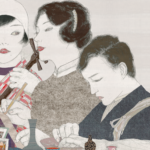
Up and Coming Artists
Komogomo art market.
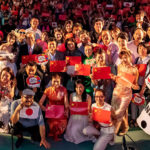
Pandastic Times
China festival 2024.
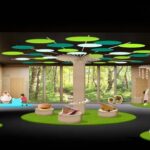
Wagashi No Mori

The Land Before Time
Giant dinosaur exhibition 2024.
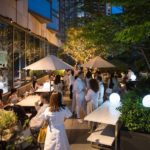
Dress Code: All-White Cocktail
Grand hyatt tokyo's soiree blanche, 50 ways to see, feel and taste tokyo.

Your Guide To The Best Things To Do In Tokyo!
Other articles by christy anne.

5 Convenient and Well-Stocked Tokyo Health Food Stores

Shinrin-Yoku: The Japanese Art Of Forest Bathing

10 Easy Japanese Gift Ideas For This Valentine’s Day

Leaving Tokyo: Where To Donate And Sell Your Furniture

Surviving A Tokyo Microapartment Is Possible (If You Get Creative)
Contribute To Savvy Tokyo
Share your voice with savvy tokyo’s readers.
@savvytokyo What convenient apps do you use living in Tokyo?💧📲 #mymizu #freewater #lifeintokyo #lifeinjapan #ecofriendly ♬ やってみよう - WANIMA
Related Articles You Might Like
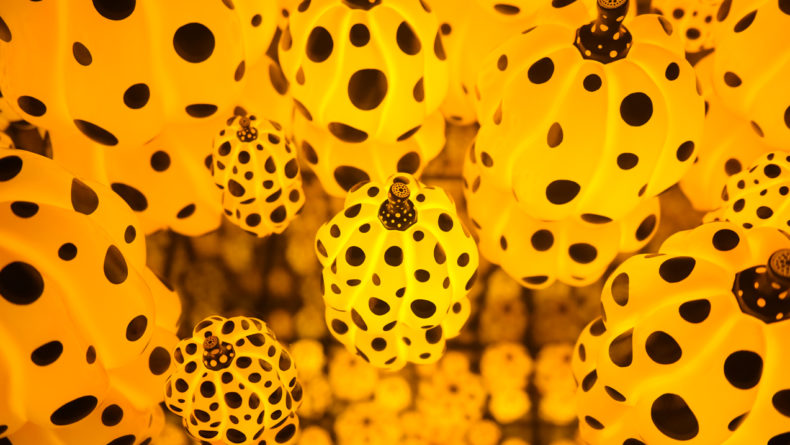
Yayoi Kusama Museum: A Permanent Place For The Artist’s Eternal Soul
Kusama’s legendary art is now available for viewing in Tokyo, and it’s here to stay.
By Nano Betts
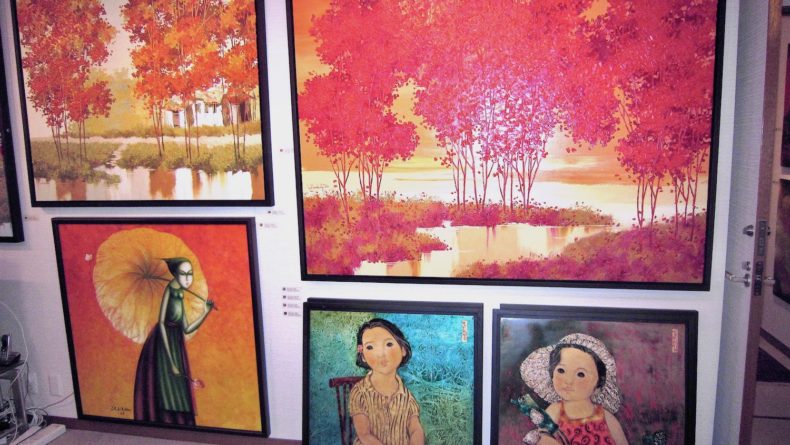
Toriizaka Art Gallery: Supporting Communities Through Art
A home-style gallery with a cause.
By Kathryn Wortley
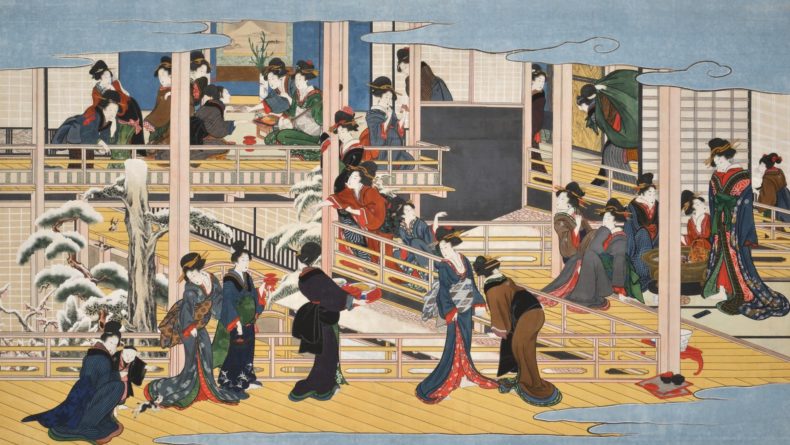
11 Facts About The Ukiyo-e Master Kitagawa Utamaro
Nearly two centuries after Kitagawa Utamaro's artworks were first introduced to the world, the mysterious man behind Japan's most famous bijinga (ukiyo-e portraits of beauties),...
By Alexandra Hongo
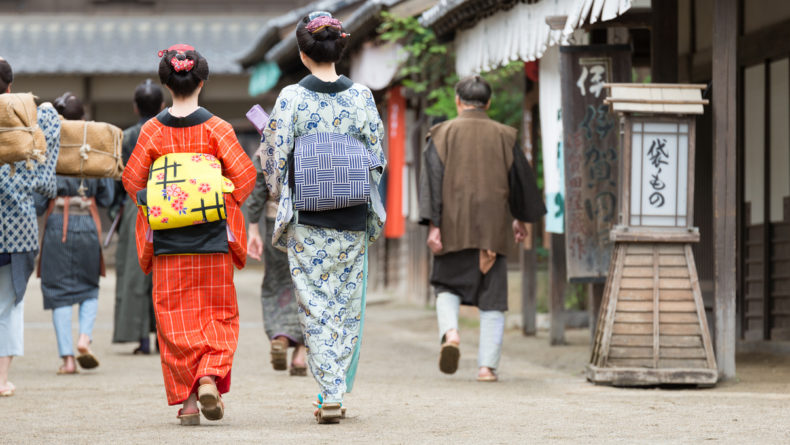
A Guide To Tokyo’s Top Historical Museums
From Edo to Samurai, Meiji to modern, Tokyo’s rich array of museums can help you uncover Japan’s fascinating history.
By Anna Jamieson

Culture Travel
Hidden Wonders
Culture History
The Oldest Things to See in Tokyo: Ultimate Guide
Here are some of the oldest things to see in Tokyo to get you started on your heritage trip through Japan’s capital.
While the historic aspects of Tokyo aren’t as immediately obvious as in some other Japanese cities, there’s plenty to see if you do a bit of digging. From old town areas (also known as Shitamachi) such as the Yanesen District to historic breweries, and ancient temples and shrines, Tokyo rewards the explorer who’s ready to go beyond the high-rises and neon centre.
While there are many old buildings in Tokyo that have been restored or rebuilt (like the three-hundred-year-old Nakajima no Ochaya teahouse which was restored recently, or the famous Sensoji Temple which was originally built in the seventh century), here we are focusing on those places that have withstood the test of time.
Historic Places in Tokyo
Fujimi-yagura watchtower in edo castle (imperial palace).
There’s so much to see in and around the Imperial Palace so a visit to one of the most important historical places in Tokyo should be firmly on your list. While most of the areas in the palace have been restored or recreated, one of the oldest locations is the Fujimi-Yagura Watchtower in the Edo Castle area. The three-storey watchtower remained after the great fire in 1657 which destroyed the castle and stands as a testament to the Edo Castle and other watchtowers which were not rebuilt. The watchtower sits on a fifteen metre high stone wall and is a truly impressive sight. The watchtower gained its name from the fact you could once see Mount Fuji from within.

(You can read the rest of the article at this link . This article was first published by Team JJ on November 11, 2021. Check here for deeper and unique insights into visiting Japan, including wellness, travel, cuisine and more. Find us on Instagram and on Facebook .)
Author: Team JJ

You may like
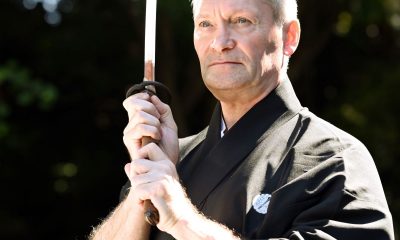
INTERVIEW | Empowering Swordsmiths of a New Generation

INTERVIEW | Japanese Swords Face Challenges, Says Expert

INTERVIEW | Assassin's Creed Shadows: How Research Can Elevate Historical Fiction

INTERVIEW | Yasuke and Assassin's Creed Shadows: A Japanese Historian's Perspective
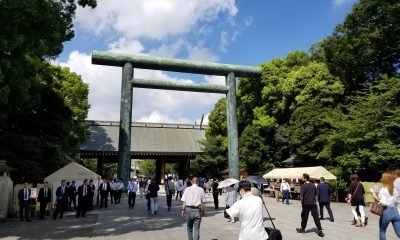
Yasukuni Shrine, on the Anniversary of the War's End, a Symbol of Reflection
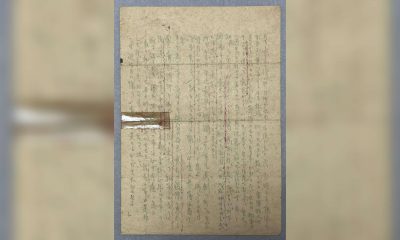
Iwo Jima Letters: Silent Voices Carried Through Time
You must be logged in to post a comment Login
You must be logged in to post a comment.
- Best Time to Visit Tokyo
- Events & Festivals in Tokyo
- How To Reach Tokyo
- Restaurants in Tokyo
- Things To Do in Tokyo
- Tokyo Itineraries
- Tokyo Tours
- Tokyo Hotels
Historical Destinations in Tokyo
- Things To Do In Tokyo
Top Historical Places in Tokyo
Are you looking to explore the history of Tokyo through the ages? There are a number of historical destinations in Tokyo including the time-honored buildings, monuments, palaces, and parks where you can learn about the glorious past of Tokyo. The presence of these historical sites and museums will take you on a walk through Tokyo ‘s rich history. If you are willing to have an in-depth historical information about Tokyo, we recommend that you take a wonderful guided tour to cover the major historical attractions. Also, check the opening and closing time for each so that you can organize your time. Make sure that you go through the complete list of historical places in Tokyo for a great trip!
Let's witness the history of Tokyo with these top historical places - monuments and landmarks:
Meiji Jingu Shrine

Religious Site, Landmark, Historical Site
Tokyo Imperial Palace
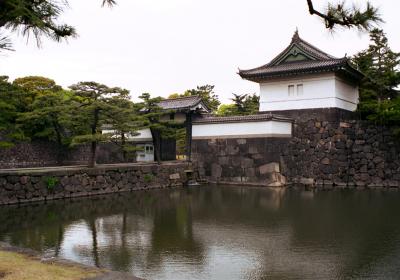
Art Museum, Museum, Garden, Historical Site
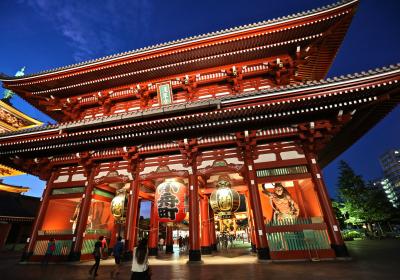
Street Market, Neighborhoods , Old Town
Tokyo Metropolitan Government Building

Architecture , Heritage Building

Entertainment, Performance, Theatre, Architecture
Hanazono Jinja Shrine
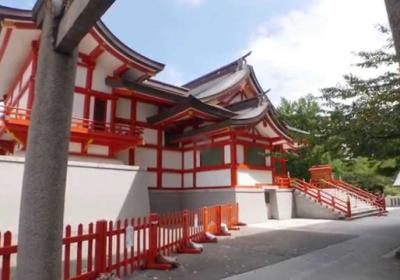
Religious Site, Historical Site, Architecture
Kanda Myojin
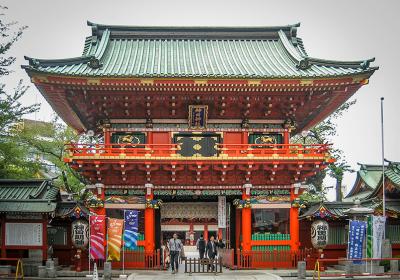
Religious Site, Temple, Historical Site
Hatoyama Hall
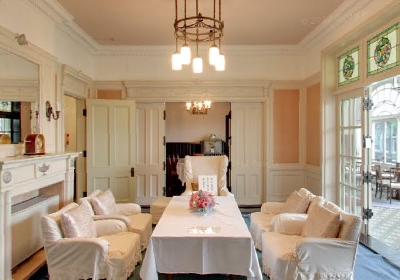
Architecture , Heritage Building, Hall
Gundam Front Tokyo
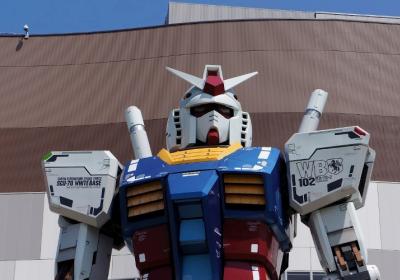
Theme Park, Statue, Entertainment
Godzilla Statue

Grave Of Hachiko

Yutaka Ozaki Monument
Memorial, Monument
Ultraman Statue -tbs
Kiyonori Kikutake - Sky House
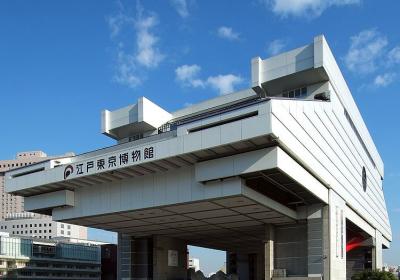
Historical Site, Architecture

The Akasaka Imperial Property
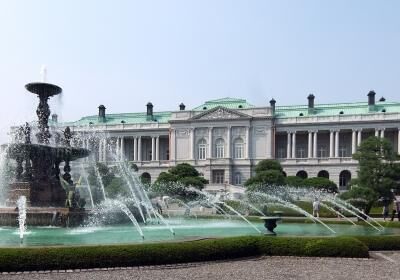
Historical Tours
- Local Culture & Education Tours in Tokyo
- Private Sightseeing Tours in Tokyo
- History & Heritage Tours in Tokyo
- Day Trips in Tokyo
- Luxury Tours in Tokyo
- South Africa
- Afghanistan
- North Korea
- Adventure + Outdoors
- Amusement Parks
- Backpacking Trips
- Boating + Cruises
- Budget Travel
- Bus + Train Travel
- Coasts + Islands
- Country Trips
- Fall Vacations
- Family Vacations
- Green Travel
- Heritage + History
- Honeymoons + Romance
- Inspiration + Guide
- Landmarks + Attractions
- LGBT Travel
- Markets + Bazaars
- National Parks + Reserves
- Nature + Wildlife
- Parks + Gardens
- Pets + Animals
- Photography
- Airlines + Airports
- Budgeting + Currency
- Business Travel
- Celebrity Travel
- Customs + Immigration
- Deals + Rewards
- Family Travel
- Hotels + Resorts
- Luggage + Packing Tips
- Offbeat News
- Photography Tips
- Responsible Travel
- Solo Travel
- Tech + Gear
- Travel Etiquette
- Travel Warnings
- Bars + Clubs
- Celebrity Chefs
- Restaurants + Cafés
- Wine + Vineyards
- Beach Hotels
- Boutique Hotels
- Hotel Openings
- Hotel Reviews
- Luxury Hotels
- Mountain + Ski Resorts
- Spa Resorts
- Vacation Rentals
- Asia Cruises
- European Cruises
- Festivals + Events
- Museums + Galleries
- Style + Design
- Travel’s Best
- Hotel with Agoda.com
- Hotel with Booking.com

7 days in Hawaii itinerary. How to spend Hawaii itinerary 1…
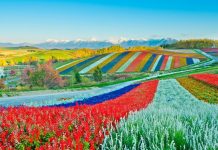
19+ must-see & best places to visit in Hokkaido

Hawaii travel blog — The fullest Hawaii travel guide for first-timers

Bohol blog. The ultimate guide to the island of Bohol

The complete Seoul subway guide: How to use, lines, fares for…

How much does it cost to travel to Korea? Tips on…

The ultimate guide to NETS FlashPay Card: What is it, how…

How much will it cost to go to Singapore? Tips on…

13 best, most famous & popular bubble tea in Taiwan

Where to eat in Penang? 17 best places to eat &…

Best bubble tea in Taiwan — Top 11 most famous &…

29+ must-try foods in Thailand

11+ best homestays in Kuala Lumpur near famous tourist attractions

Mövenpick Resort Kuredhivaru Maldives reviews. The detailed review of my vacation…

Hyatt Regency Danang Resort and Spa reviews. The resort is highly…

+7 luxury resorts you must stay in Danang, Vietnam

10 must-know things for your best first time European river cruise

Top 3 best luxury cruises in Halong Bay, Vietnam

Cherry blossom festival Korea 2024 — Top 5 cherry blossom festivals…

- Ghibli museum blog — The fullest Ghibli museum guide for first-timers

Kyoto festival — Top 10 best events & most famous festivals…

National Palace Museum Taipei blog — What to see in National…

Japanese waterfall — Top 10 most beautiful waterfalls in Japan in…

19+ most beautiful towns in Europe every tourist need to visit…

Georgia travel photos — 20+ captivating photos show Georgia is heaven…

Explore Damnoen Floating Market — The oldest floating market of Thailand

Visiting Fenghuang Ancient Town — One of the most charming ancient…

Mekong Delta travel blog — Beyond rivers of Southwestern Vietnam

14 reasons why you should travel when you are young

Shigaraki Tanuki – An animal symbol of good luck in Japan

Living in the charms of cave houses in Andalucia, Southern Spain

20+ jaw-dropping tiny homes around the world
Top places to visit in tokyo — 15+ most famous, must-visit & best places to visit in tokyo.
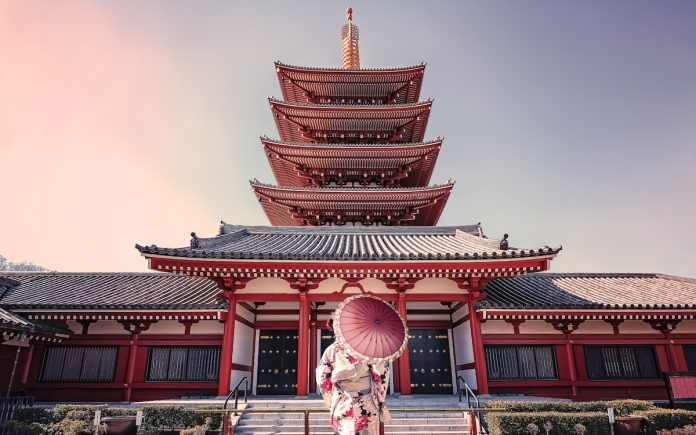
Tokyo is famous for its countless landscapes, historical sites, monumental architectural works, bustling shopping centers or beautiful peaceful green parks. Besides, Tokyo is also the cultural and historical center of Japan with traditional museums, historical temples, shrines or areas with unique cultural features. So, where should I visit in Tokyo, where to visit in Tokyo? Let’s check out our top rated 15+ famous places to visit in Tokyo, must visit places in Tokyo, top places to visit in Tokyo, best places to visit in Tokyo and beautiful places to visit in Tokyo as follows!
- Tokyo itinerary 5 days. Where to go, what to do, how to spend 5 days in Tokyo for the first-timers?
- Tokyo best parks — 10+ best & most beautiful parks in tokyo
- Cherry blossom Tokyo 2024 forecast — 14 best places to see cherry blossoms in Tokyo
- Ikebukuro blog — 7+ best places to go & top fun things to do in Ikebukuro
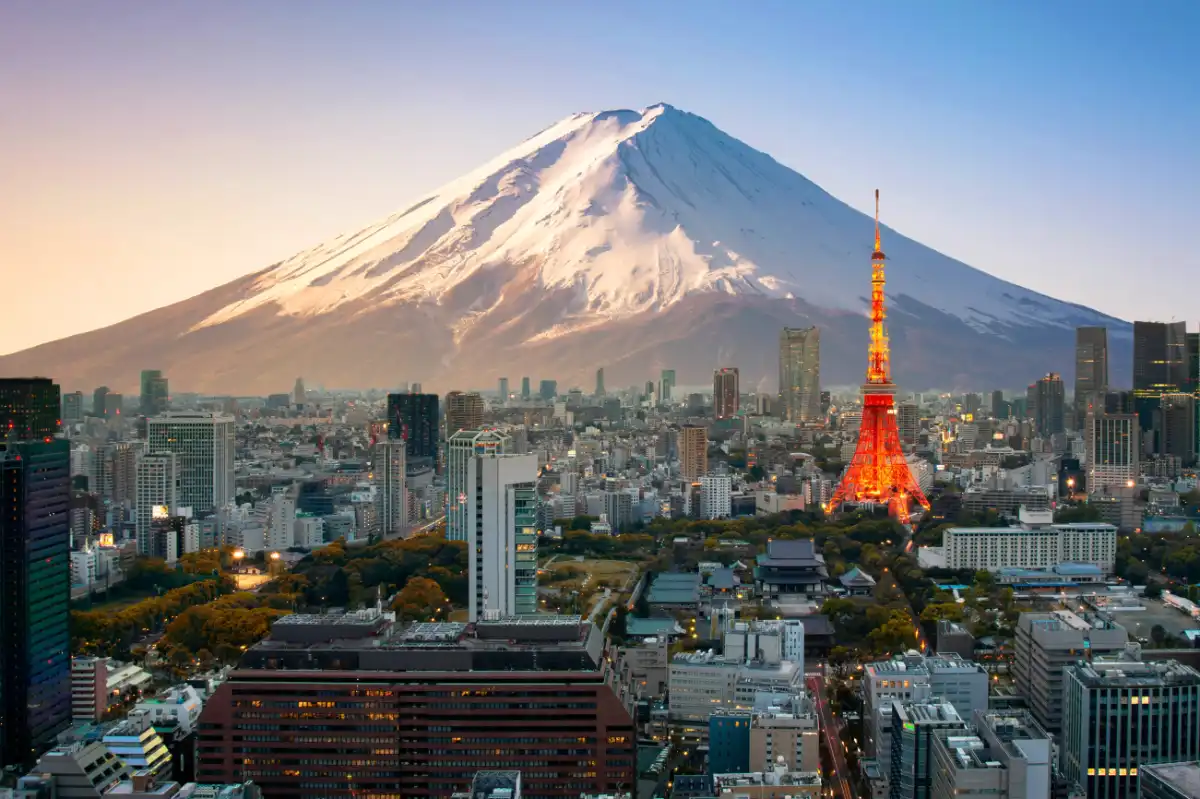
There are many must-see and interesting places to go hidden inside Tokyo city that not all tourists know about. If you are planning to visit Tokyo city, let’s explore the top 15+ tourist attractions in Tokyo with us. Surely this will be great suggestions to help you fully explore the beauty and culture of Tokyo!
Meiji Shrine (# best places to visit in tokyo)
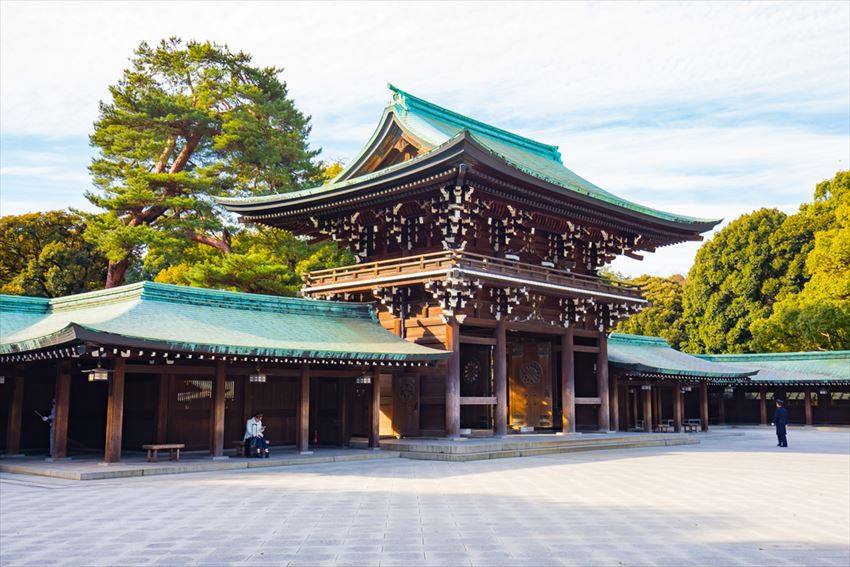
Located near Harajuku Station, next to the quiet and peaceful woods is the very sacred land of Meiji Shrine. This is Tokyo’s most famous Shinto shrine. Meiji Shrine is a place dedicated to worshiping Emperor Meiji – the late 19th century emperor of Japan and his wife Empress Shoken. Pass through the large shrine torii gate and walk for about 15 minutes, you will see the main hall. You must wash your hands and mouth before entering the temple and follow the traditional worship ritual “bow twice, clap twice and bow again”. After clapping, you can say your wish. Meiji Shrine is very simple and pure, not colorful or flashy like other temples or shrines in Tokyo. The 12m high entrance gate is made from a 1,500-year-old cypress tree.
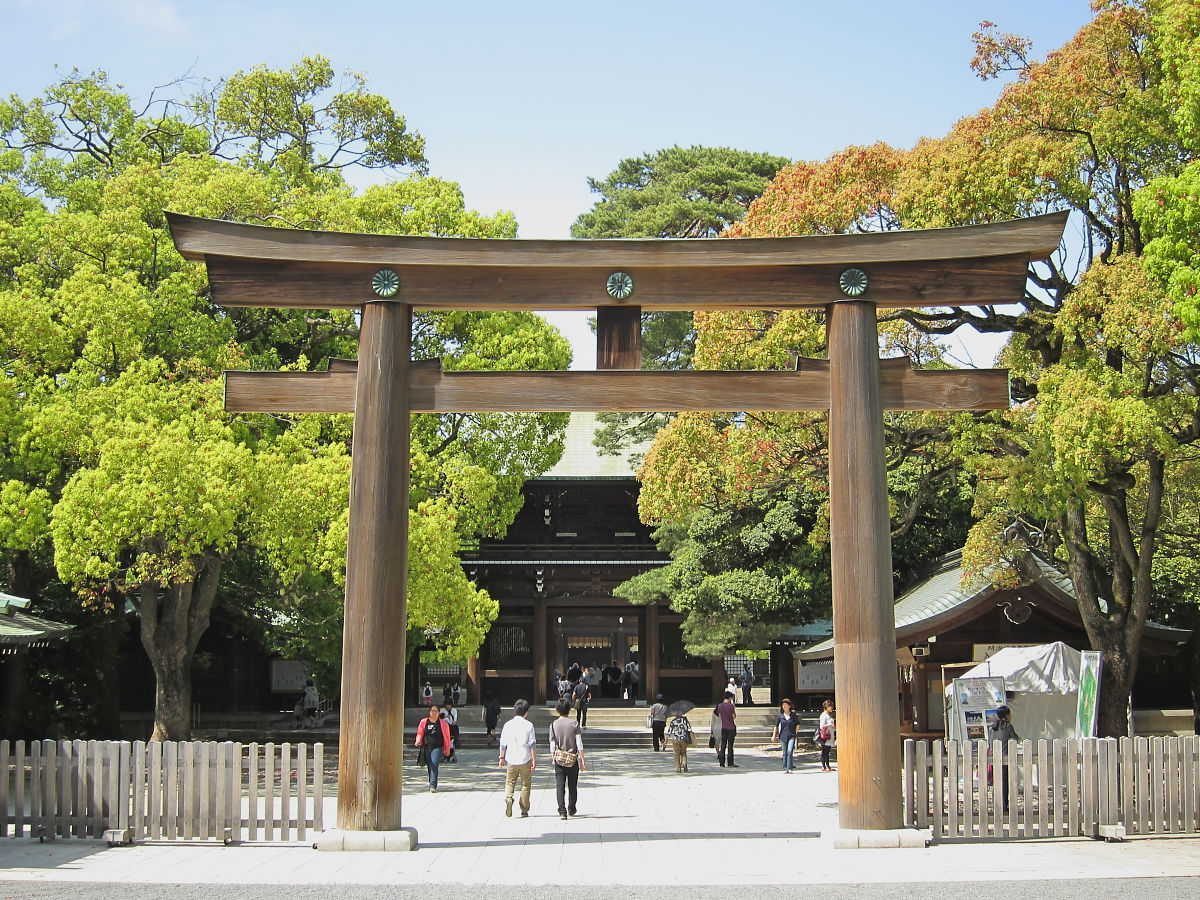
If you come here on Sunday morning, you will see a traditional Japanese wedding procession. The bride wears a white kimono and hood, the groom wears a formal black robe. They walked together under red parasols, Shinto priests leading and guests following behind.

- Address: 1-1 Yoyogikamizonocho, Shibuya City, Tokyo 151-8557, Japan
- Hours: 5:20 AM–5:20 PM
Tsukiji & Toyosu Markets (# must visit places in tokyo)
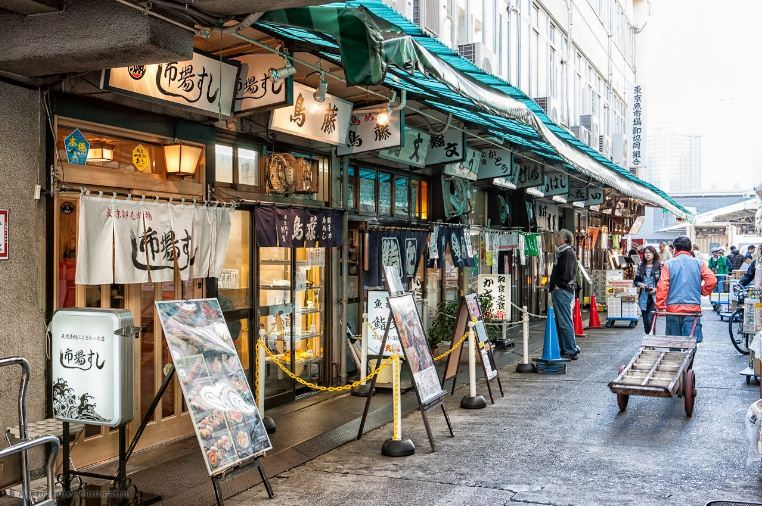
Tsukiji Fish Market along with Toyosu markets are the busiest and largest fish markets in the world. Tsukiji Fish Market with an area of over 220,000 square meters and 1677 stalls, attracting many tourists. You will be able to explore firsthand the giant fish market that provides fresh ingredients for Japanese people who love fish. A variety of fish are brought here from all over Japan. In the area outside the market there are retail stores where you can buy souvenirs and fresh fish.
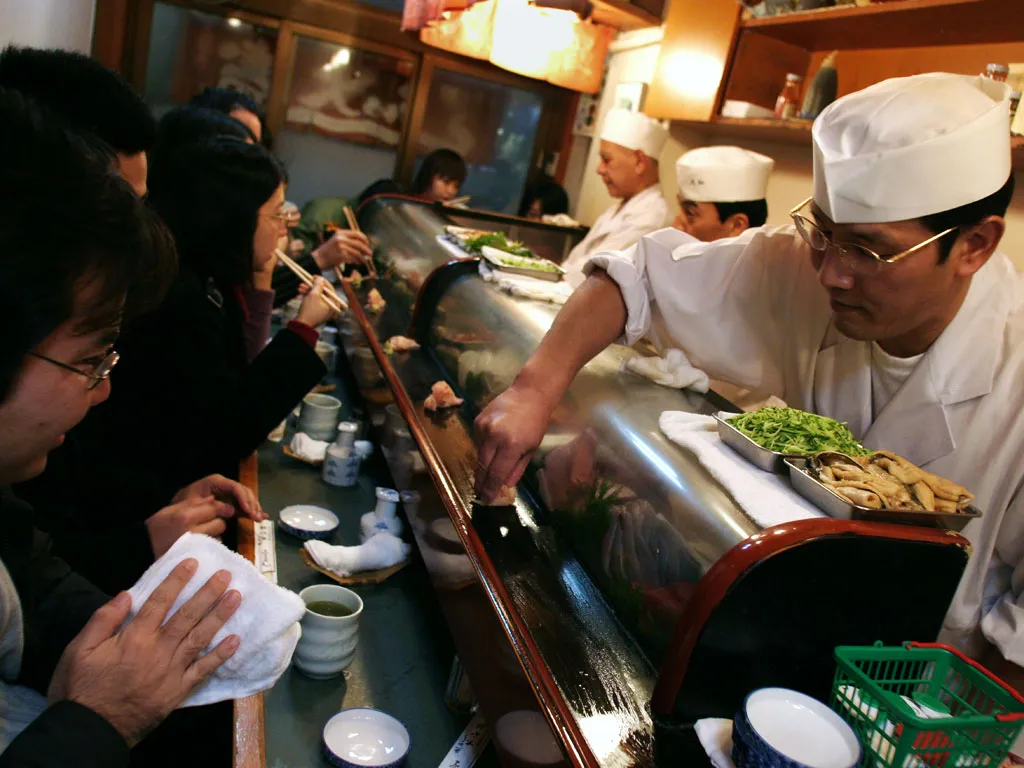
Tsukiji Fish Market (Address: 4 Chome-13 Tsukiji, Chuo City, Tokyo 104-0045, Japan) is also famous for a restaurant open in the morning and lunch with fresh seafood dishes, especially delicious Sushi. Remember to enjoy sushi, Chawanmushi, miso soup… at very reasonable prices right outside the market.
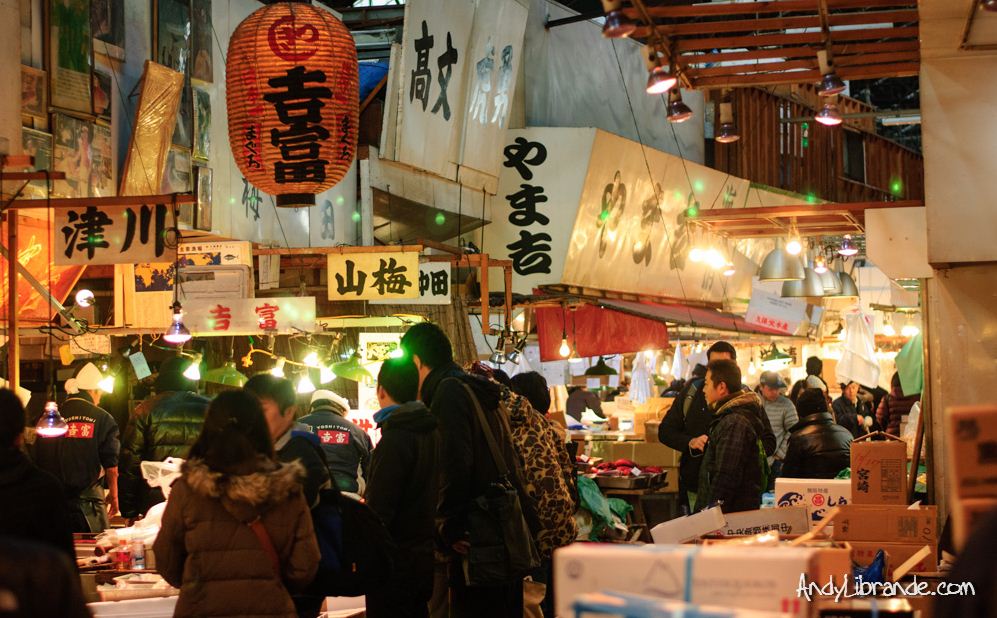
If you want to witness a tuna auction, go to Toyosu fish market (Address: 6 Chome-6-1 Toyosu, Koto City, Tokyo 135-0061, Japan/Hours: 5am to 5pm; Wednesday, Sunday: Closed) early in the morning (previously this tuna auction was held at Tsukiji). Look for a sign that says “guest entrance”. Once inside the main market, you will see giant frozen tuna neatly lined up for inspection and sale, then the fish are hooked and dragged away. This is a safe area where you can watch them auction and buy fish live (a process that starts at 6:30 am every day). A clanging bell will signal that an auction has begun. This is an interesting destination that any tourist cannot miss when coming to Toyosu fish market.
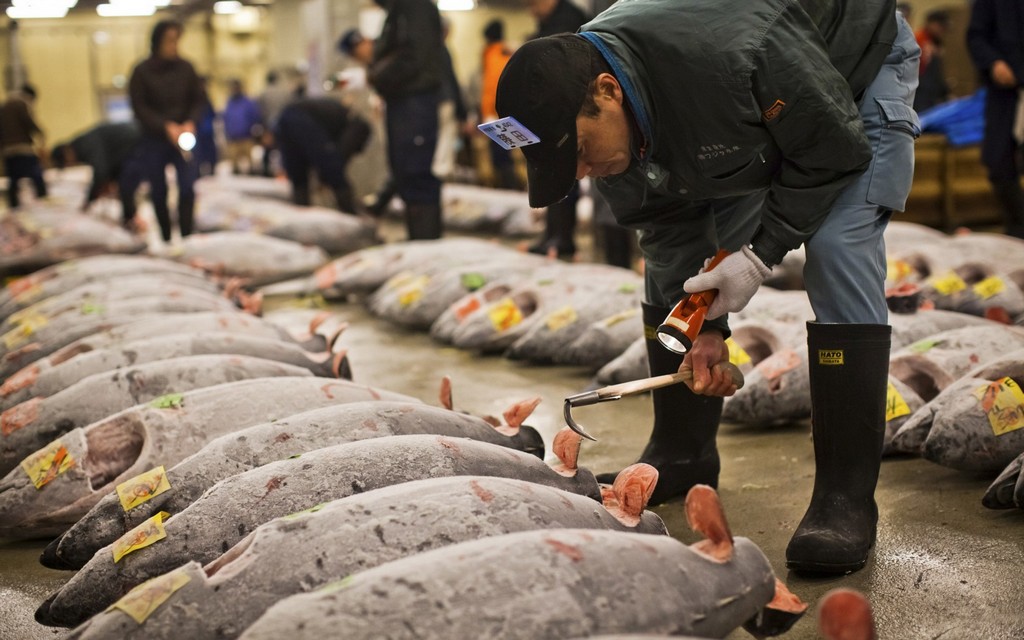
Yoyogi Park (# best places to see in tokyo)
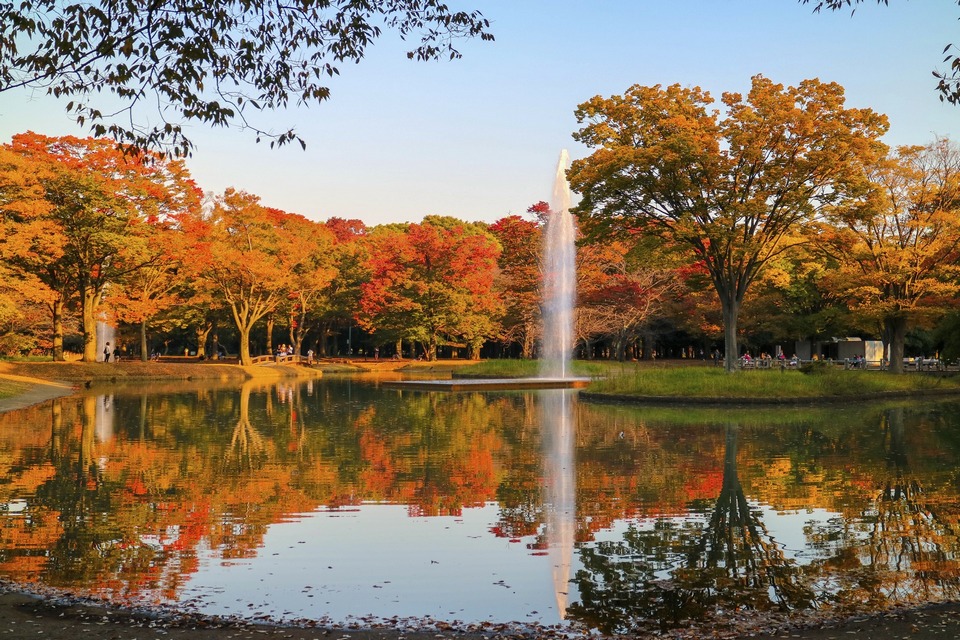
Right in the heart of the crowded, noisy city of Tokyo, quiet Yoyogi Park is a place where many people love to have fun, meet, organize dancing, play plays… You can also see young women in costumes in very strange styles such as colorful long socks, short skirts, sandals… or groups dressed in Gothic Lolitas and costume play styles (they are fans of comic books and they also dress up as characters that they love)… In general, this is where you can express your ego in every way, it is always encouraged no matter how “crazy”.
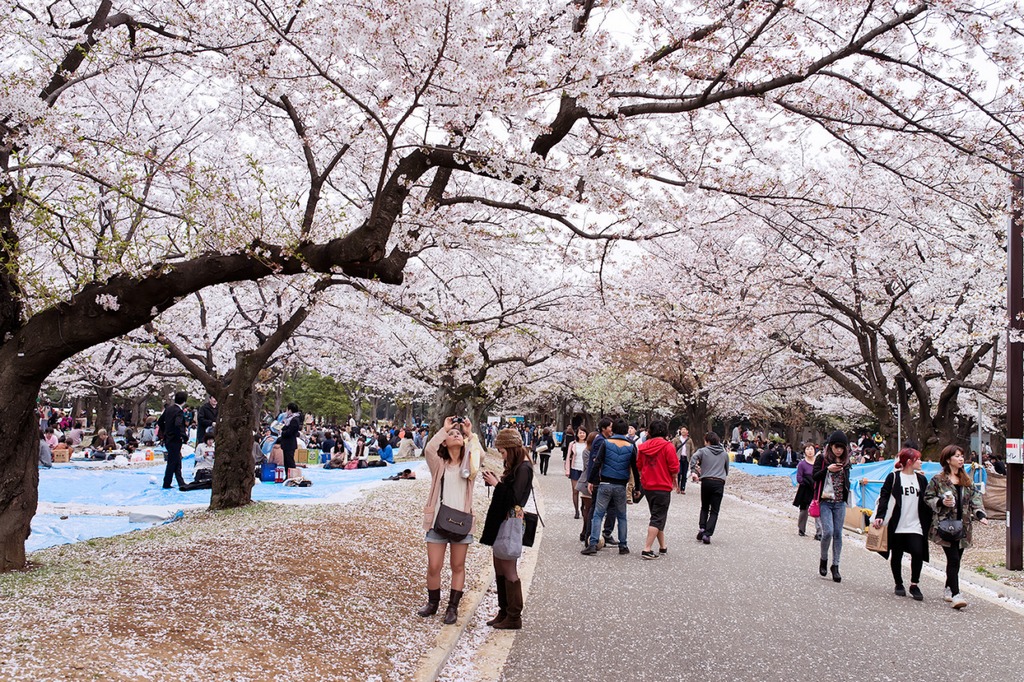
If you don’t like noisy, bustling activities, you can go to the north and west areas of Yoyogi Park. To explore the scenery here, you can rent bicycles and horse-drawn carriages for a few hundred yen or enjoy a glass of ice cream or beer in a tent… This park is open from dawn to dusk, welcoming many Japanese and foreign tourists.
- Address: 2-1 Yoyogikamizonocho, Shibuya City, Tokyo 151-0052, Japan
- Hours: Open 24 hours
Shinjuku Gyoen National Garden (# top places to visit in tokyo)
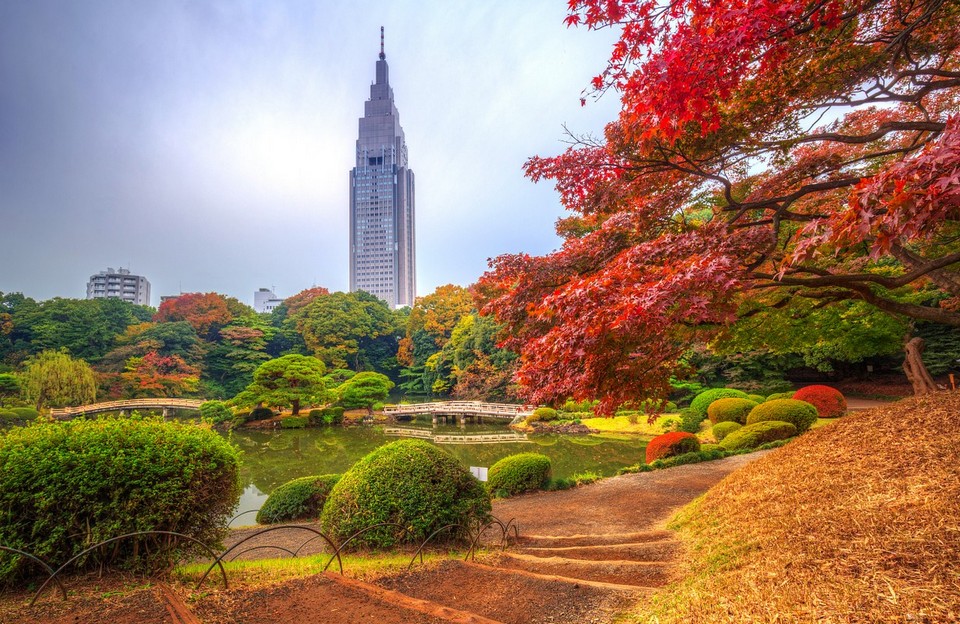
Shinjuku Gyoen National Garden is one of Tokyo’s most beautiful green spaces. There are 3 main gardens here: the English garden, the French garden and the traditional Japanese garden, and especially there is a garden named Mother and Child Woods. The most beautiful season in this national park is late March and early April when cherry blossoms bloom everywhere. On this occasion, the national garden not only has Japanese people but also many tourists from all over come here to eat, drink and see cherry blossoms. This is a traditional spring activity in Japan.
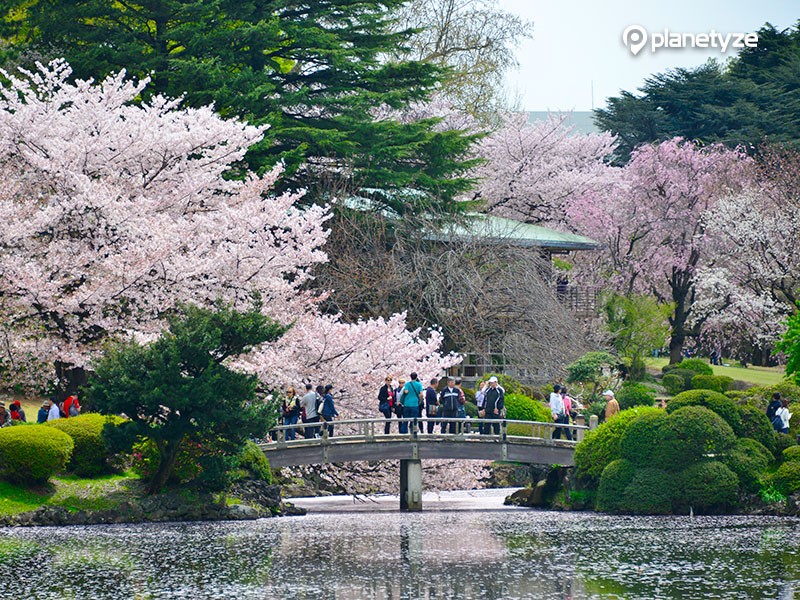
Shinjuku Gyoen National Garden is an ideal place for you to sit and relax, temporarily forgetting the busyness and rush of Tokyo city. Going for a walk, having a picnic or finding one of the tea shops or snack shops in the natural space is truly wonderful.
- Address: 11 Naitomachi, Shinjuku City, Tokyo 160-0014, Japan
- Hours: 9 AM–4 PM
Ryogoku Kokugikan National Sumo Arena (# best places to see in tokyo)
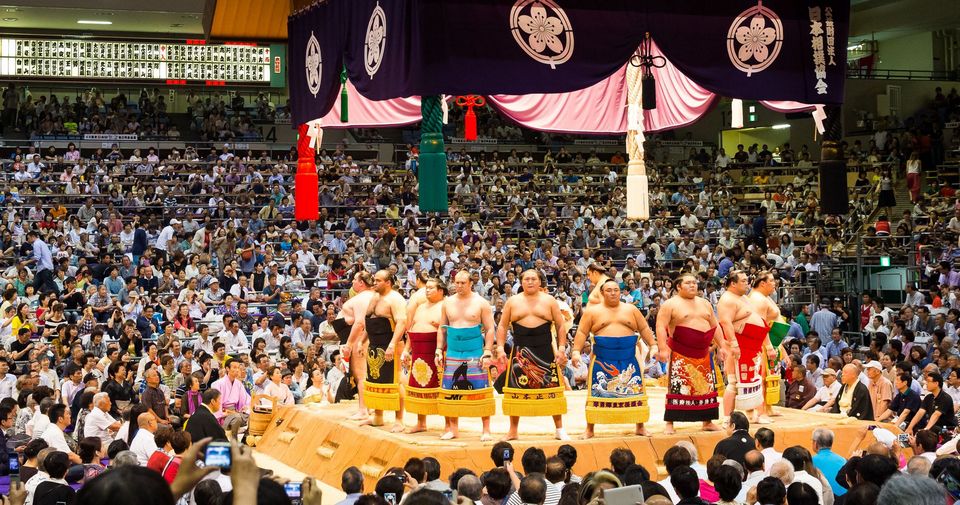
Japan is also famous for its image of Sumo wrestlers. If you visit Tokyo during the sumo tournament (usually lasting 15 days in January, May and September every year), go to Ryogoku Kokugikan – Tokyo National Sumo Arena. Big Sumo tournaments always attract many people to watch. The ticket office opens at 8am, and competitions start from 9am until evening.
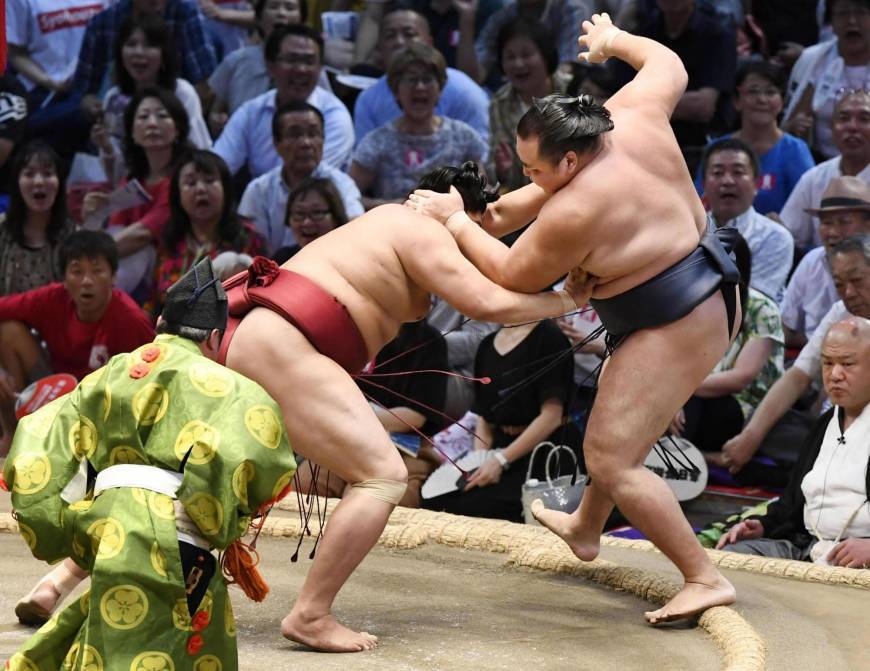
If unlucky you don’t come at the right time for the Sumo tournament, you can visit the Sumo trainers and see a bit of the real life of Sumo wrestlers or get some guidance on how to practice sumo. Sumo trainers often gather in the Ryogoku area, Tokyo where wrestlers live and practice. Some training zones are open to the public and visitors can see their morning training session. Not only can you see the dynamic and powerful exercises of sumo wrestlers here, but you can also learn about Japanese traditions and discipline.
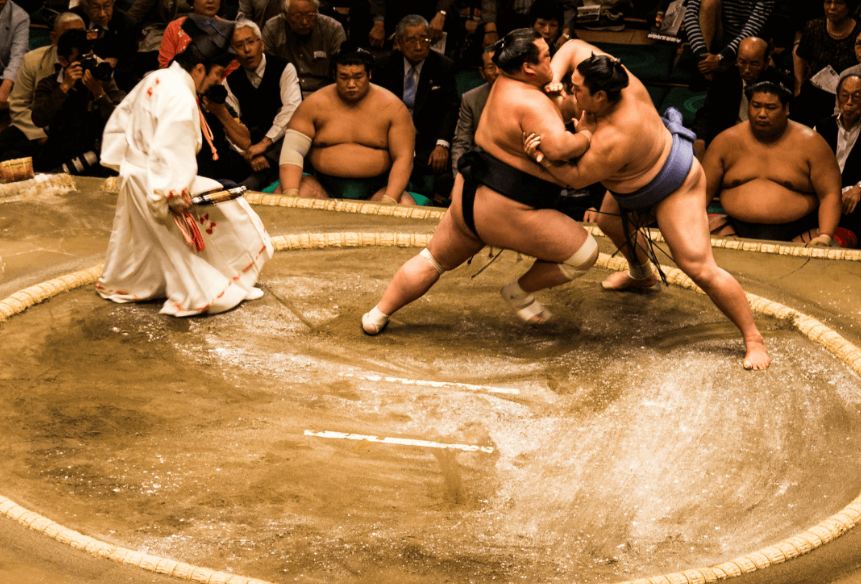
- Address: 1 Chome-3-28 Yokoami, Sumida City, Tokyo 130-0015, Japan
Yayoi Kusama Museum
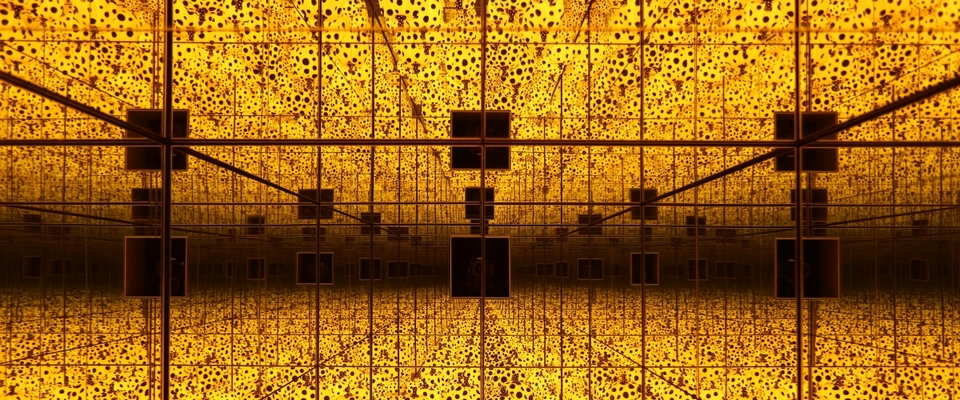
Fans of artist Yayoi Kusama – who is famous for her polka art (polka dots) can enjoy her exhibition at the Yayoi Kusama museum. The museum is a 5-storey white building, where works from her creative journey, as well as her vast artistic legacy over more than seven decades, are kept. Visitors will be able to immerse themselves in a unique, Avant Garde-style space with bizarre pumpkins, endless mirrors and magical polka dots. The museum is extremely popular and it is difficult to get admission tickets, so you must book your tickets before coming.
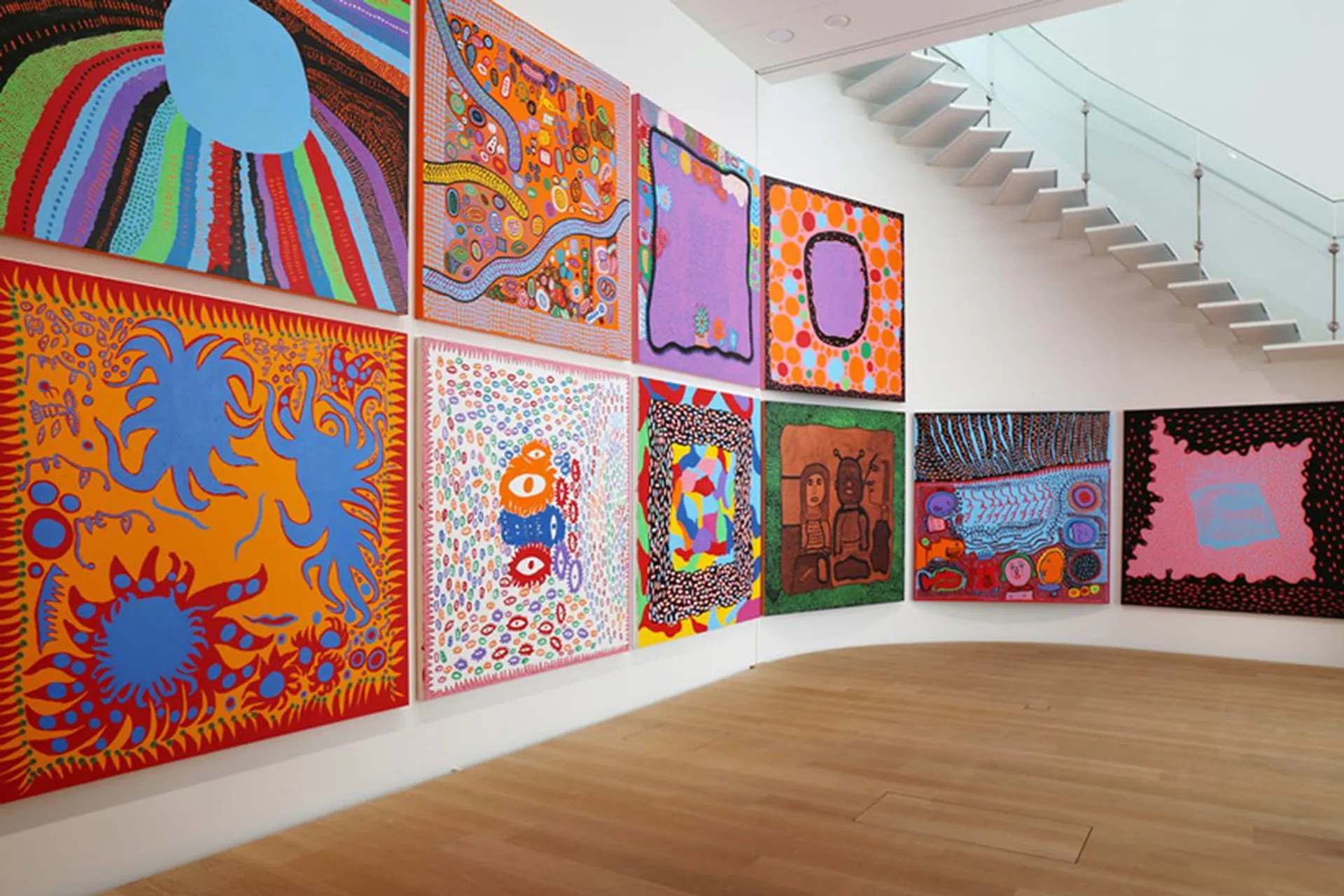
- Address: 107 Bentencho, Shinjuku City, Tokyo 162-0851, Japan
- Hours: 11 AM–5:30 PM/Monday, Tuesday, Wednesday: Closed
Tokyo Imperial Palace
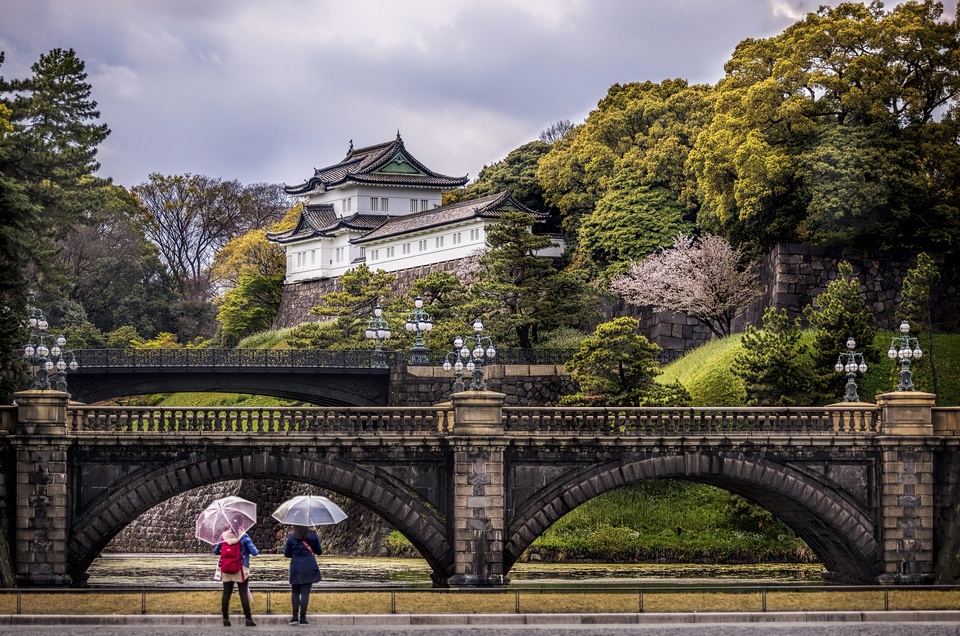
A popular tourist destination in Tokyo’s Marunouchi district is the Imperial Palace with its beautiful 17th-century gardens surrounded by walls and moats. The Tokyo Imperial Palace is the main residence of the Emperor of Japan. Inside the Palace there are administrative buildings, royal living areas and a historical museum. The Palace’s architecture still bears the traditional style from the Edo period. Next to the Palace is the East Higashi-Gyoen Garden.
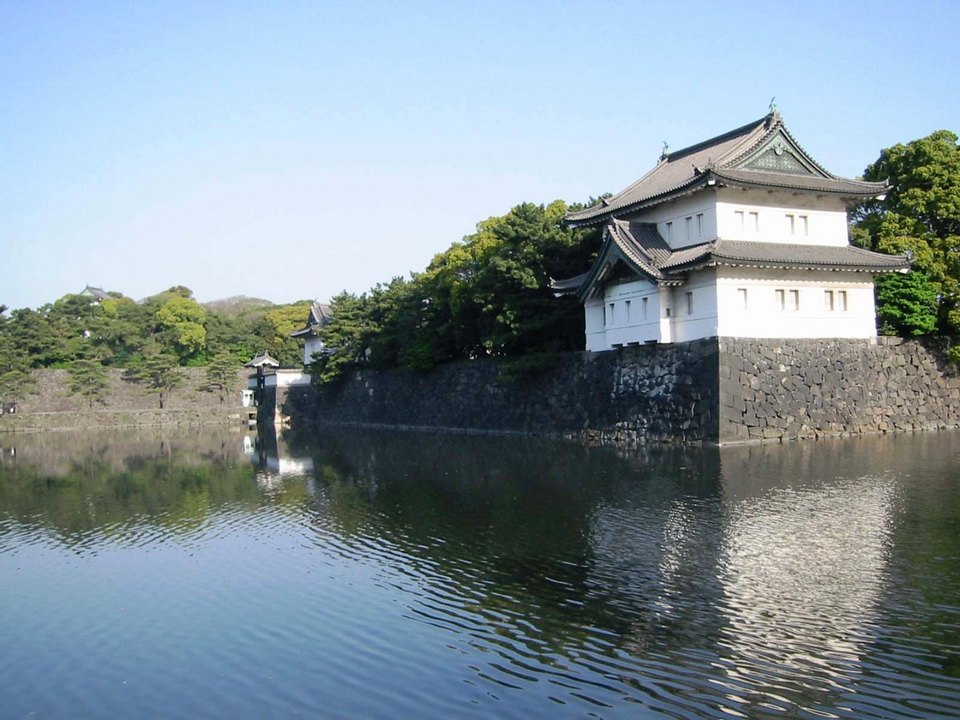
Except on January 2 (the Emperor wishes a Happy New Year to the public) and December 23 (the Emperor’s Birthday), the palace buildings and inner gardens are not open to the public. Only on both days can visitors enter the inner palace grounds and see members of the Royal Family on the balcony.
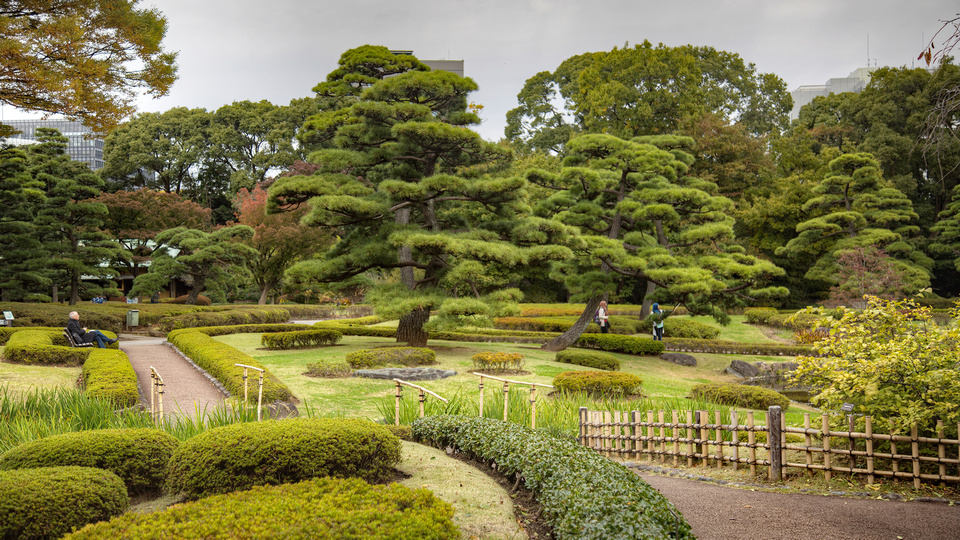
- Address: 1-1 Chiyoda, Chiyoda City, Tokyo 100-8111, Japan
- Hours: 9–11:15 AM, 1:30–2:45 PM/Monday, Sunday: Closed
National Museum of Nature and Science
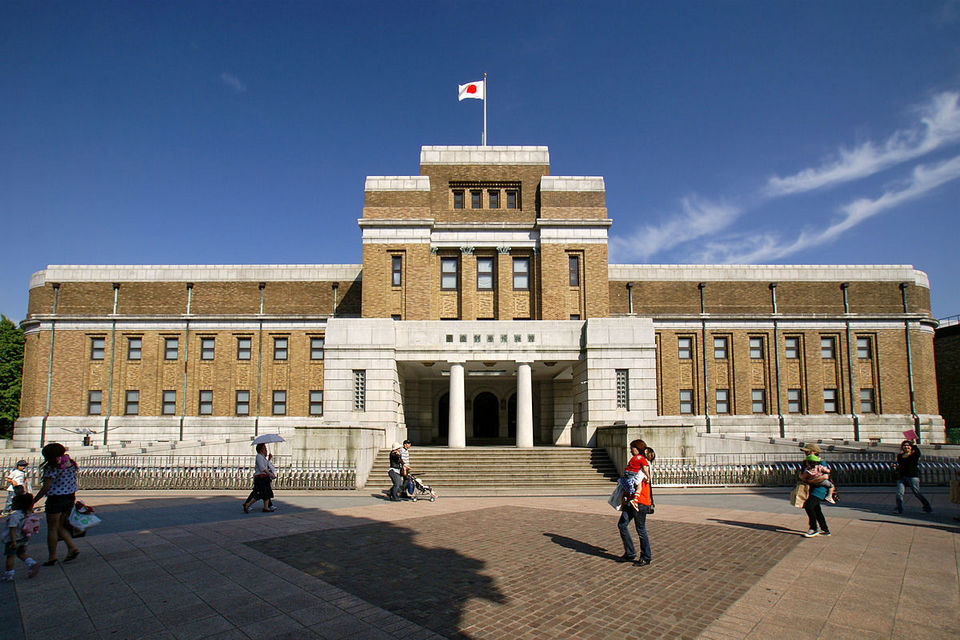
Located in Tokyo’s Ueno Park, the National Museum of Nature and Science (Kokuritsu Kagaku Hakubutsukan) was established in 1871 and is one of Japan’s oldest museums. Currently, the museum has been completely renovated and modernized. It is home to a huge collection of documents related to natural history and science, including many fascinating interactive displays on space development, nuclear energy and transportation, allowing visitors to unique insight into Japan’s culture, history, nature, and latest scientific and technological advances.

A prominent tourist attraction is the Japan Gallery (Nihonkan) which includes many exhibits on prehistoric creatures and the history of the Japanese people, including traditional customs and costumes, while the Global Gallery (Chikyūkan) has many cool science and technology displays, including robots and vintage cars. There will certainly be many new and interesting things that you will experience when visiting this National Museum of Science and Nature.

- Address: 7-20 Uenokoen, Taito City, Tokyo 110-8718, Japan
- Hours: 9 AM–5 PM/Monday: Closed
Ueno Park and Zoo
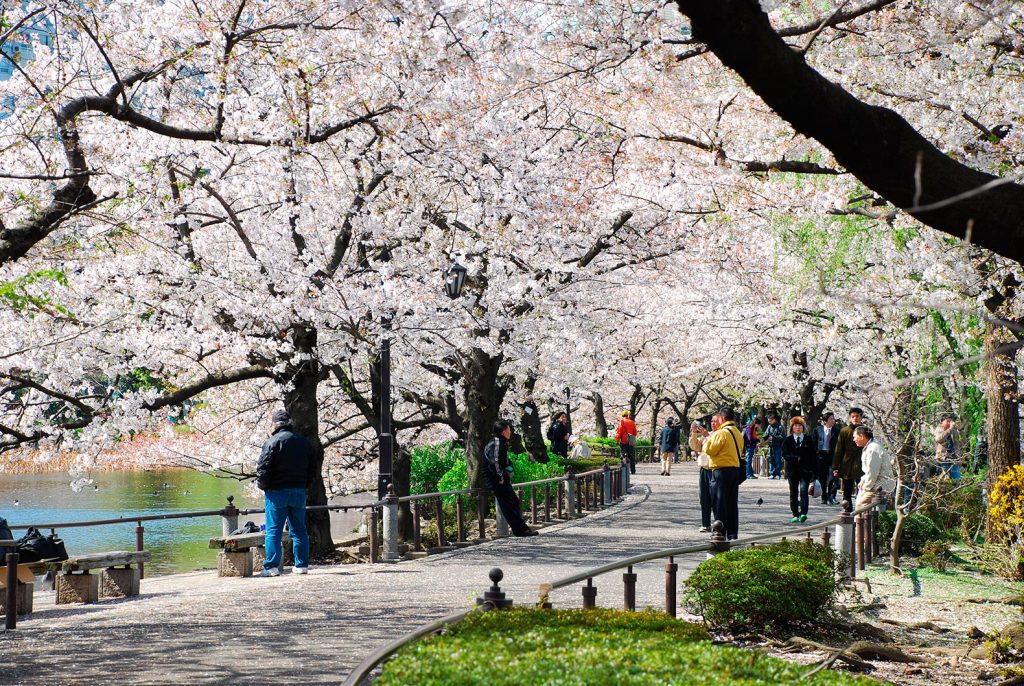
A green paradise in the heart of bustling Tokyo, Ueno Park is the city’s largest green space and one of Tokyo’s most popular tourist attractions. In addition to the peaceful atmosphere and beautiful landscape here, Ueno Park also has countless temples and museums for you to visit and explore. You can rent a small boat across Shinobazu pond to a small island with Bentendo Temple; Visit the ancient Toshogu Shrine built in the 17th century, with 256 unique bronze and stone lanterns or walk around Ueno Park Zoo. This is Japan’s oldest zoo, famous for its pandas imported from China. There is also the Aqua-Zoo aquarium, one of the largest aquariums in Asia, which is also a very interesting place worth visiting.
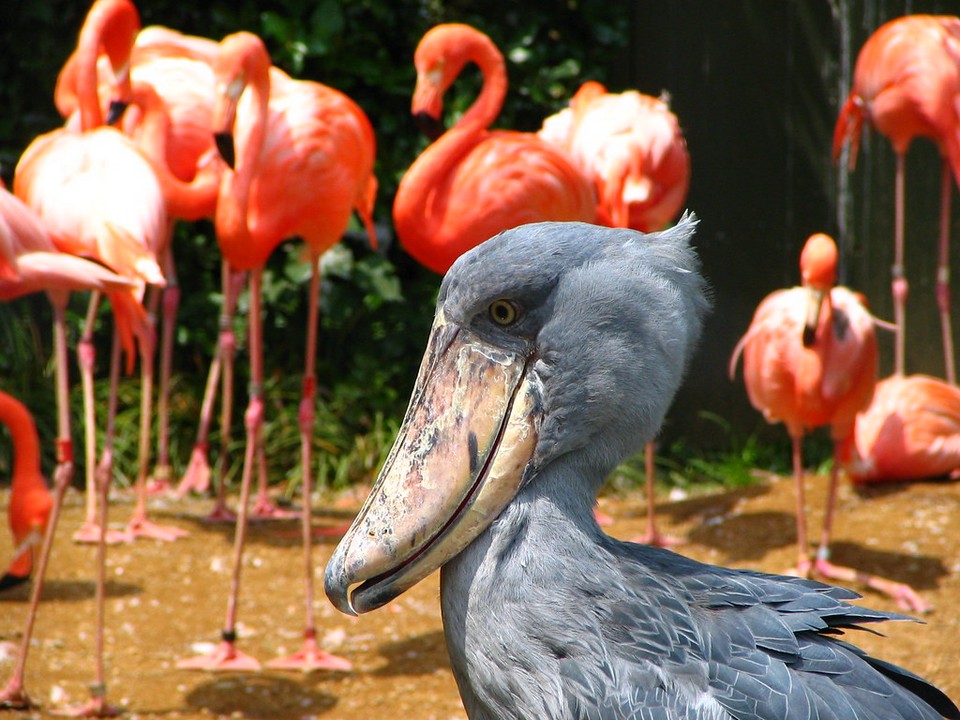
- Address: 9-83 Uenokoen, Taito City, Tokyo 110-8711, Japan
- Hours: (Ueno Zoo): 9:30 AM–5 PM/Monday: Closed
Tokyo Skytree
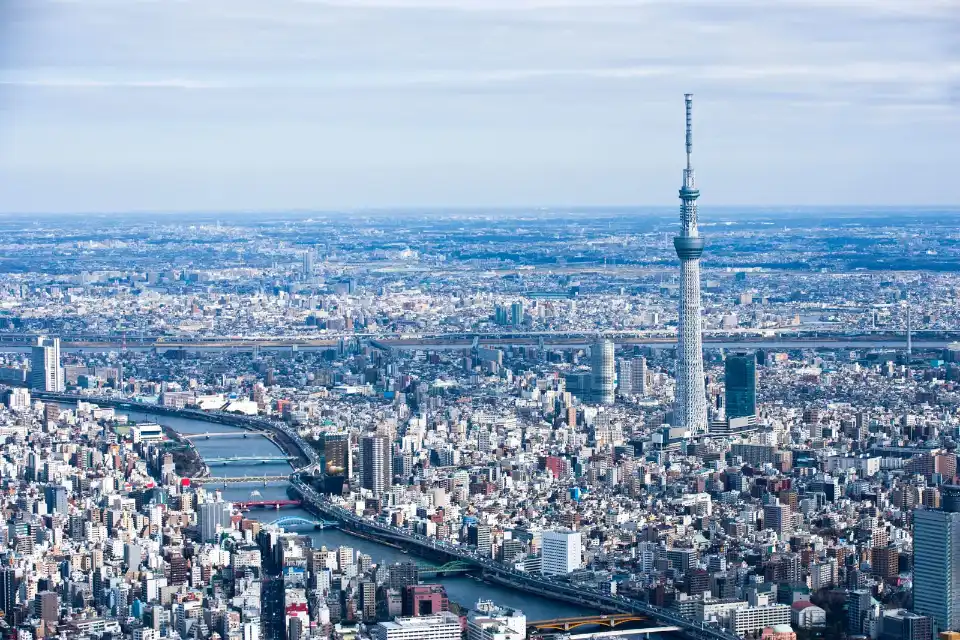
One of Tokyo’s famous landmarks and new attractions is the 634-meter-tall Tokyo Skytree, the tallest tower in Japan and the tallest freestanding tower in the world. This is the main observation and communication tower for the Kanto area, Sumida district of Minato city. The image of the tower resembles a giant rocket and spacecraft.
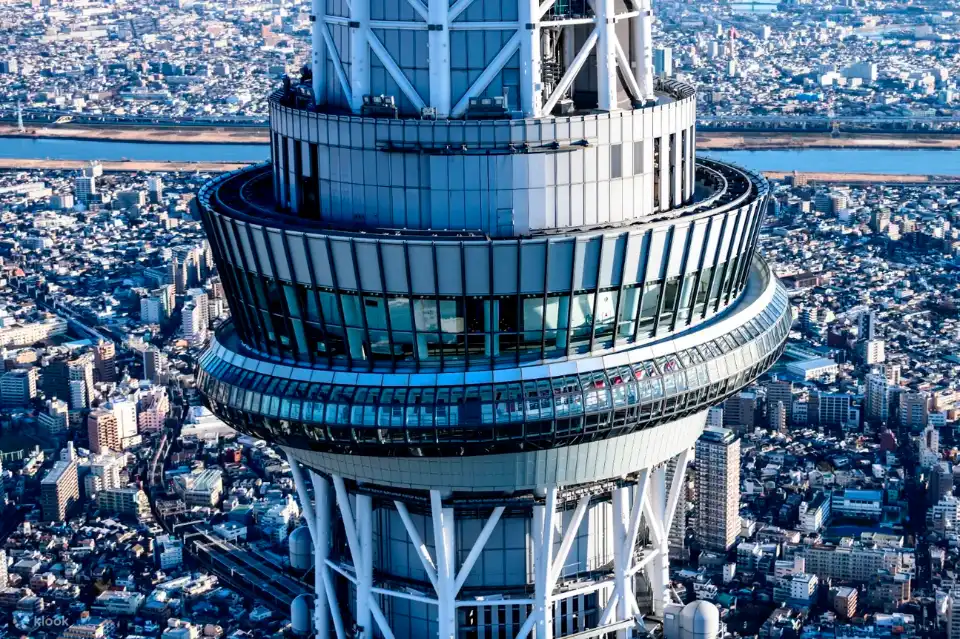
Tokyo Skytree opened in 2012 and quickly became one of the city’s most popular tourist attractions thanks to its incredible panoramic views from its restaurant and observation deck. The tower’s base is designed in the form of a massive tripod. The tower has two observation decks, Tembo Deck and Tembo Gallery, which have breathtaking views of the Tokyo skyline. One observatory is at an altitude of 350 meters, and another is at an altitude of 450 meters. On the observatory there is a unique glass spiral walkway and transparent glass floor for the brave and strong.
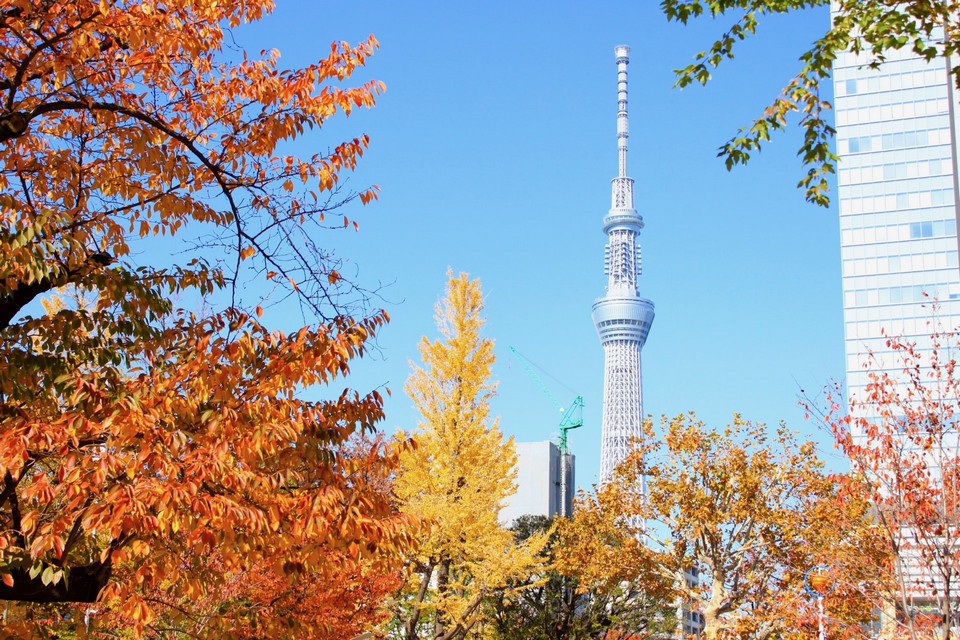
Below Tokyo Skytree is a shopping mall, with many restaurants, cafes and unique souvenir shops that you can visit.
- Address: 1 Chome-1-2 Oshiage, Sumida City, Tokyo 131-0045, Japan
- Hours: 10 AM–9 PM
Tokyo Tower
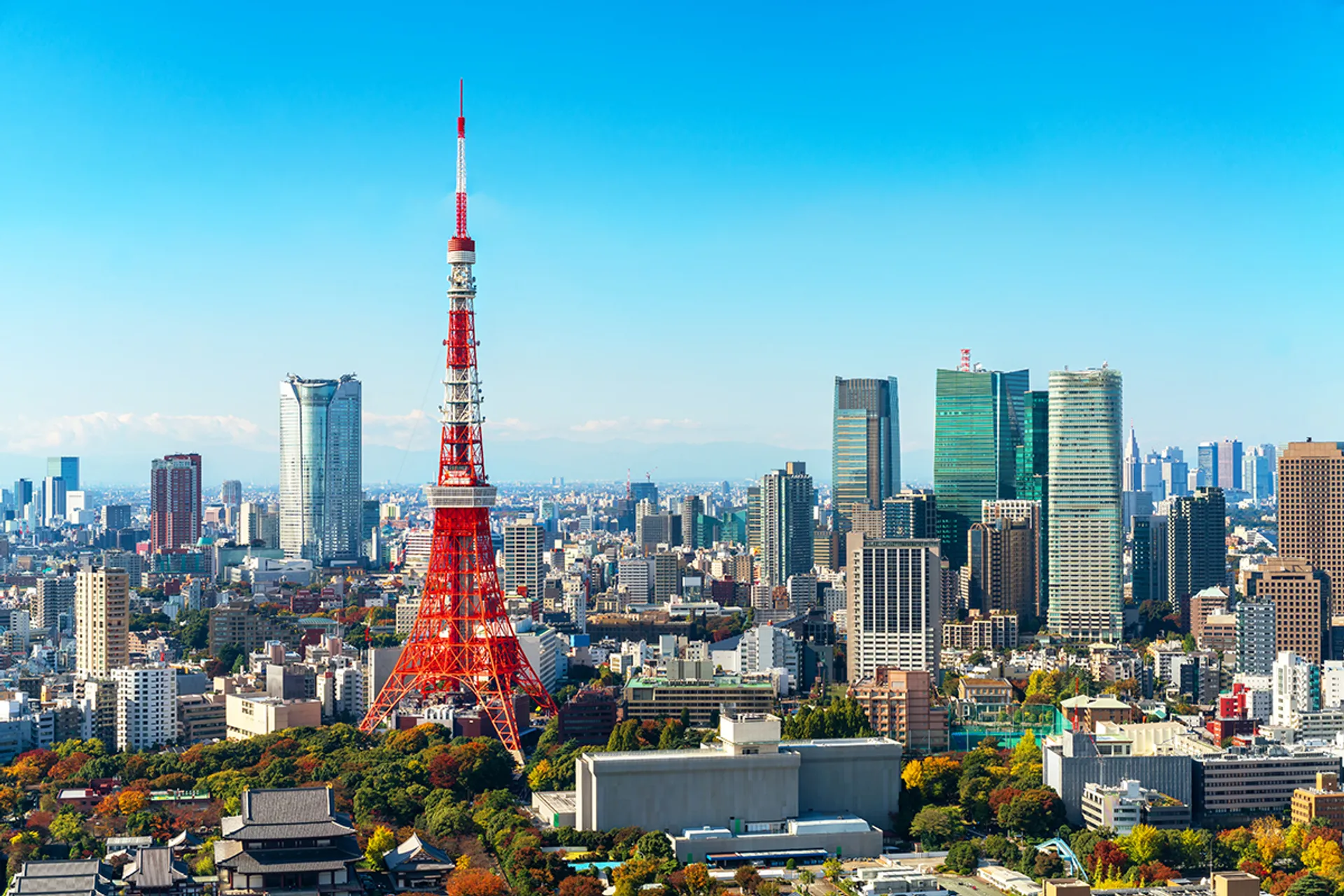
With a height of 332.5 meters (1,091 ft), Tokyo Tower is the second tallest man-made structure in Japan, right after the Tokyo Skytree tower mentioned above. Known as the Eiffel Tower of Asia – Tokyo Tower in Japan is one of the tallest steel structure towers in the world, where you can admire the complete and splendid panoramic view of the sunrise city. This tower was completed in 1958 as a symbol of the rebirth of Japan’s economic power.

Tokyo Tower is also the main observation and communications tower. There are 3 observatories. Large observatory on the first floor, located at an altitude of 145m, visitors can relax at the coffee shop “Café La Tour” while admiring the scenery outside. Observation deck 2 is at a height of 150m with many shops selling products of “Noppon”, the mascot of Tokyo Tower, and also has an observation guide board. There is a special private observatory at an altitude of 250 meters, which can be accessed by purchasing a ticket at the large observatory on the 2nd floor. At this observatory, you can zoom in to observe the surrounding skyscrapers and views of Tokyo city.
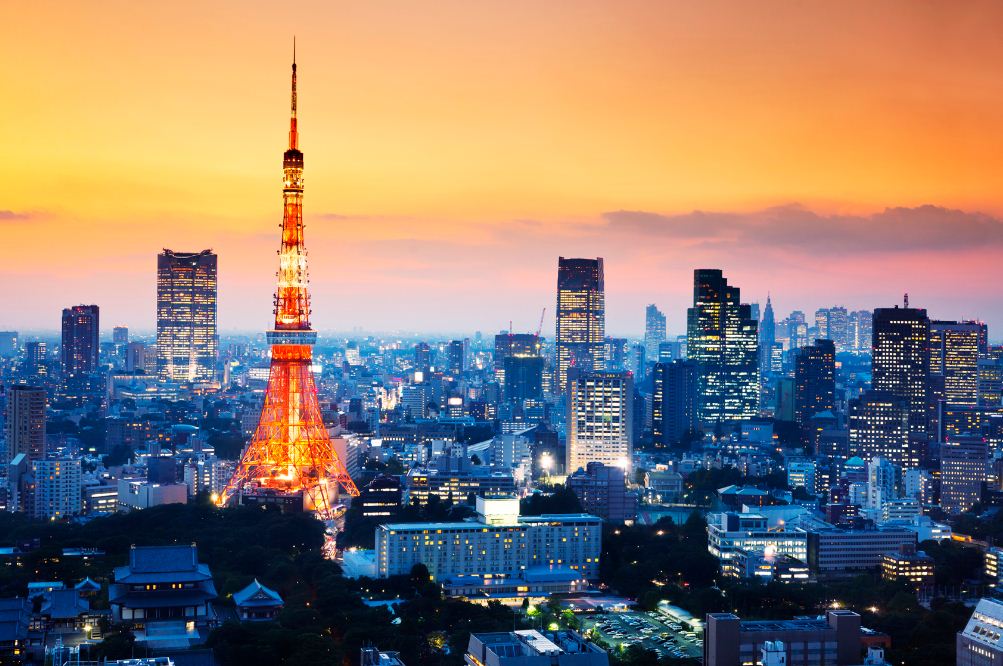
- Address: 4 Chome-2-8 Shibakoen, Minato City, Tokyo 105-0011, Japan
- Hours: 9 AM–10:30 PM
Kabuki-za Theater, Ginza

When talking about traditional Japanese theatre art, we think of Kabuki. The Kabukiza Theater in Ginza is famous and widely known as a typical Kabuki theater in Japan. Indeed, only here in Kabukiza can you enjoy Kabuki theater during a year in Japan. Based on medieval theatrical forms, with high drama and burlesque including song and dance, the theater’s performances are popular with tourists and Japanese alike.
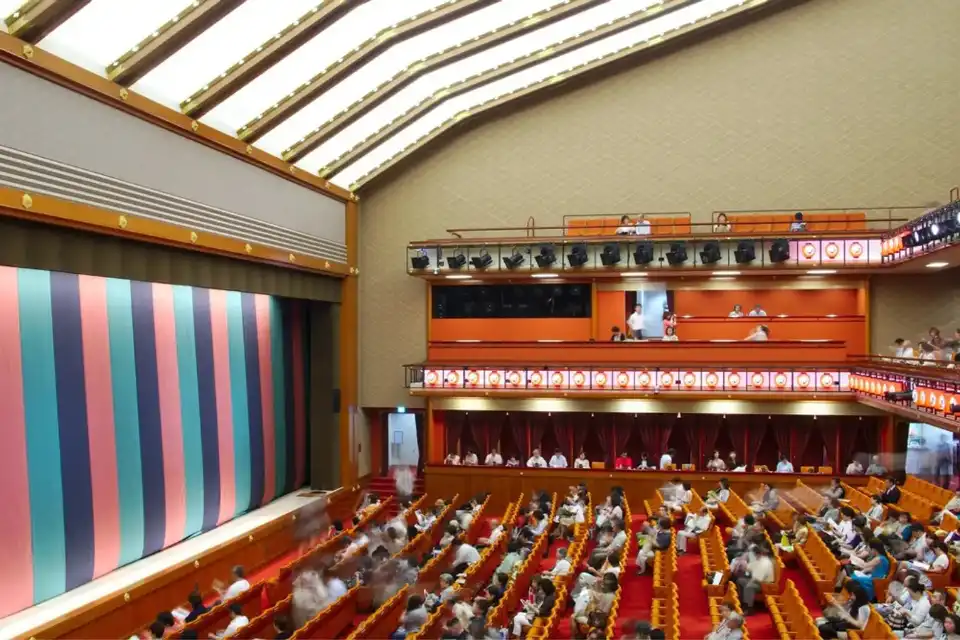
Kabukiza is the only dedicated Kabuki theater in the world. The auditorium has 4 floors and 1,964 seats. There are also many accompanying services for enjoying Kabuki theater. There are headphones that give instructions on props, costumes, plot summaries and role introductions for each scene on stage. With subtitle instructions, you can read the dialogue in the play through a dedicated screen. There are also on-site dining services, where you can enjoy sushi or boxed lunches behind the curtain while the play is on.
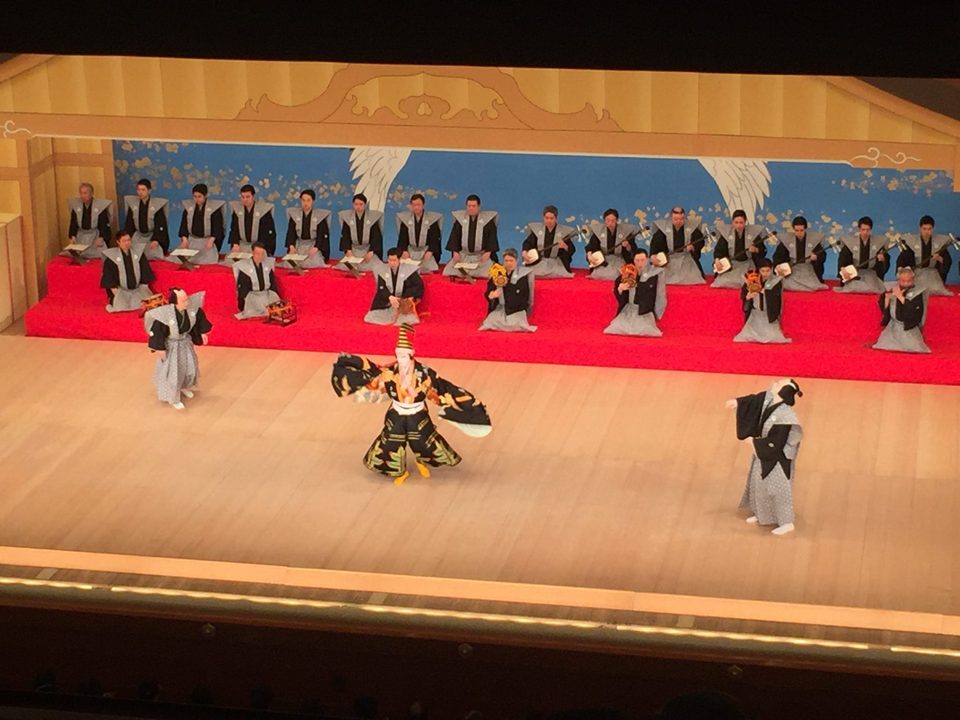
- Address: 4 Chome-12-15 Ginza, Chuo City, Tokyo 104-0061, Japan
Odaiba is a small neighborhood located on a large artificial island in Tokyo Bay, Japan, across the Rainbow Bridge from central Tokyo. This is the center of great entertainment, architecture and cuisine in the city. You can find everything you like here, from museums to beaches, the Statue of Liberty, and amusement parks. Whether you are traveling with children, family or friends, there are sure to be many fun experiences here.
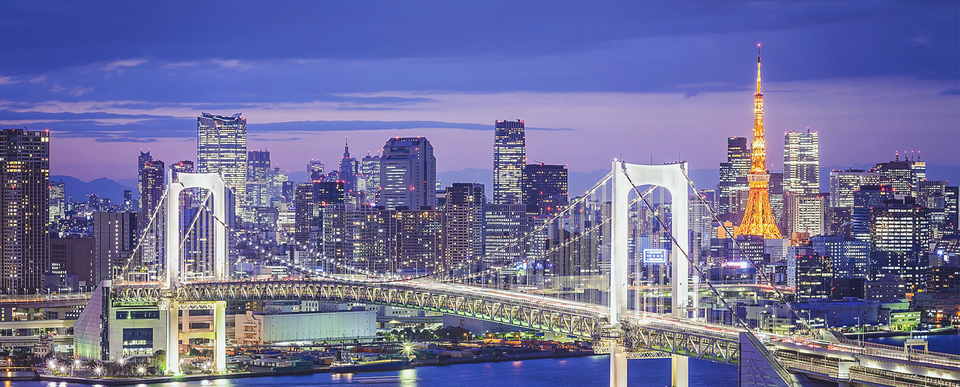
There are many attractions in Odaiba. Nippon Kagaku Mirai-kan Museum, which introduces pioneering techniques through exhibitions, gives visitors exposure and the opportunity to learn more about science and technology. Lego Land Discovery Tokyo Center is a place for the whole family to enjoy countless fascinating projects made from Lego toy blocks. Odaiba-kaihin Park has a model of the American Statue of Liberty and is also considered a symbol of Odaiba. Madame Tussauds Tokyo wax museum displays many life-sized wax statues, images of world famous figures such as Hollywood stars and sports players.

In addition, on the island there is also the Divercity Tokyo Plaza commercial complex, Decks Tokyo Beach shopping mall, and Daiba Itchome Shotengai shopping complex to help visitors freely visit and shop for anything they want.
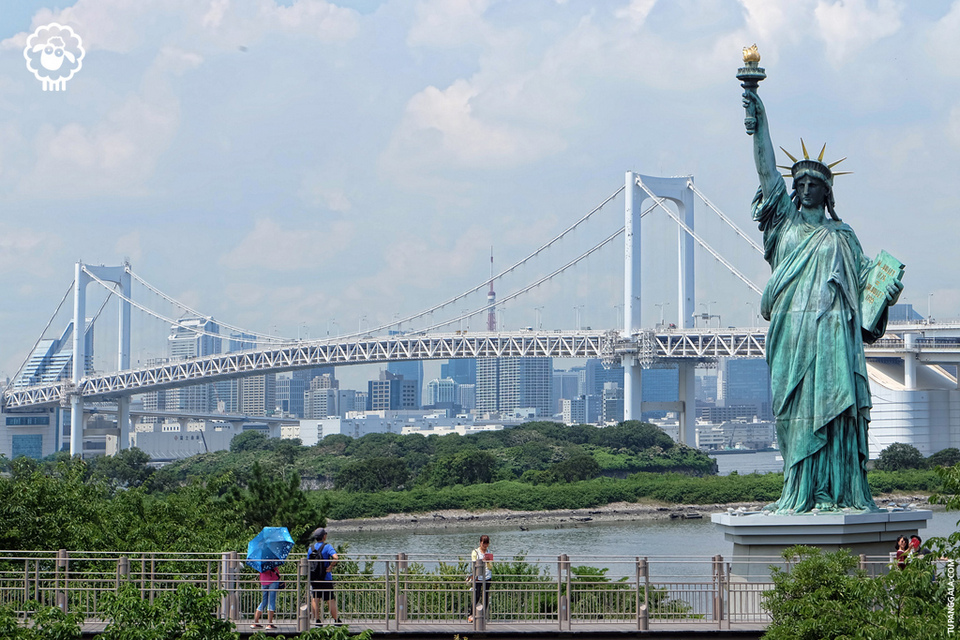
If you want to relax with exciting games, come to Palette Town, a large entertainment center with many areas such as: shopping area designed in the style of 18th century European townhouses “Venus Fort”, Indoor game center “Tokyo Leisureland”, theme park driving experience “MEGA WEB”…
Isn’t it wonderful? Whatever you want to do, you will find it when you visit Odaiba. Make sure this place is on your trip!
Tokyo Disneyland and DisneySea
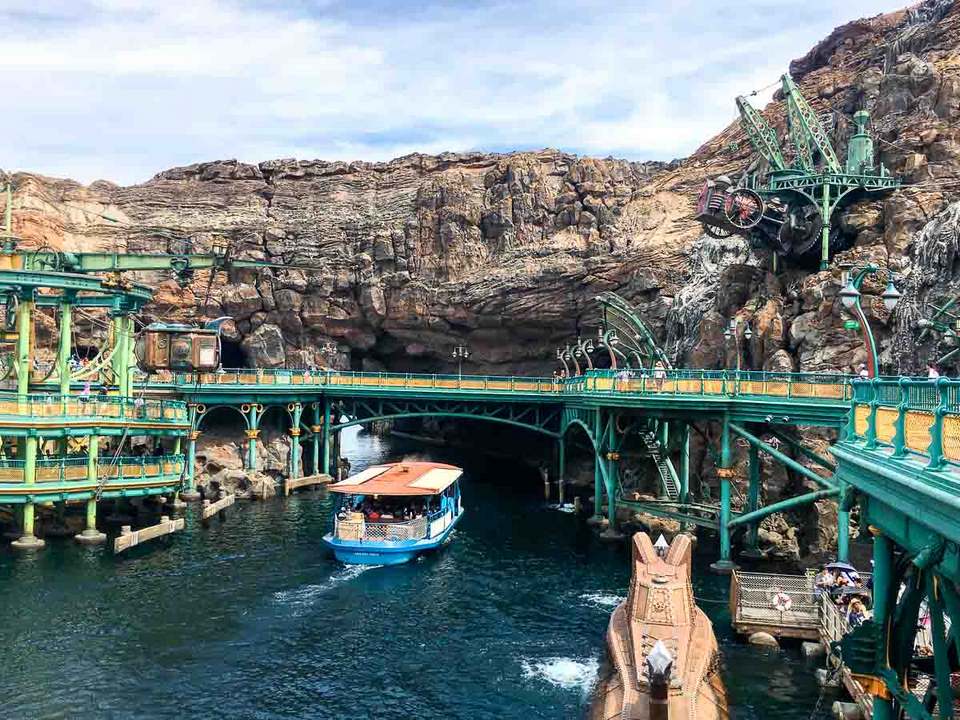
Tokyo Disneyland is a 115-acre park based on the films produced by Walt Disney. Inspired by the myths and legends of the sea, Tokyo DisneySea is made up of seven themed ports: Mediterranean Harbour, Mysterious Island, Mermaid Lagoon, Arabian Coast, Lost River Delta, Port Discovery and American Waterfront. You will find yourself lost in cartoon paradise with familiar characters from childhood. This is definitely the most popular destination for children when coming to Tokyo as well as those who want a ticket to return to their childhood.
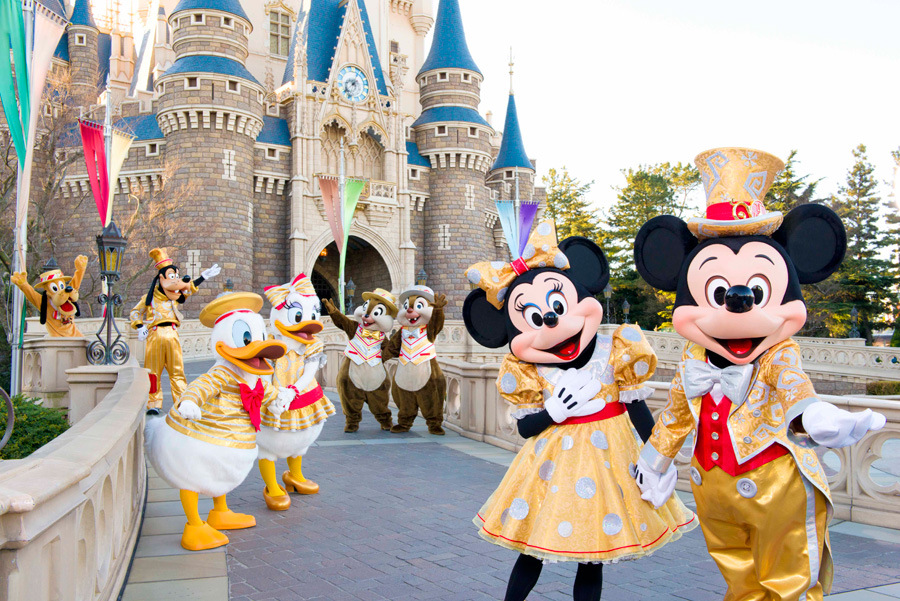
Address: 1-13 Maihama, Urayasu, Chiba 279-8511, Japan
Akihabara Electric Town
Akihabara is the largest town that collects all kinds of electronic devices in the world. You will find the world’s leading technology products here.
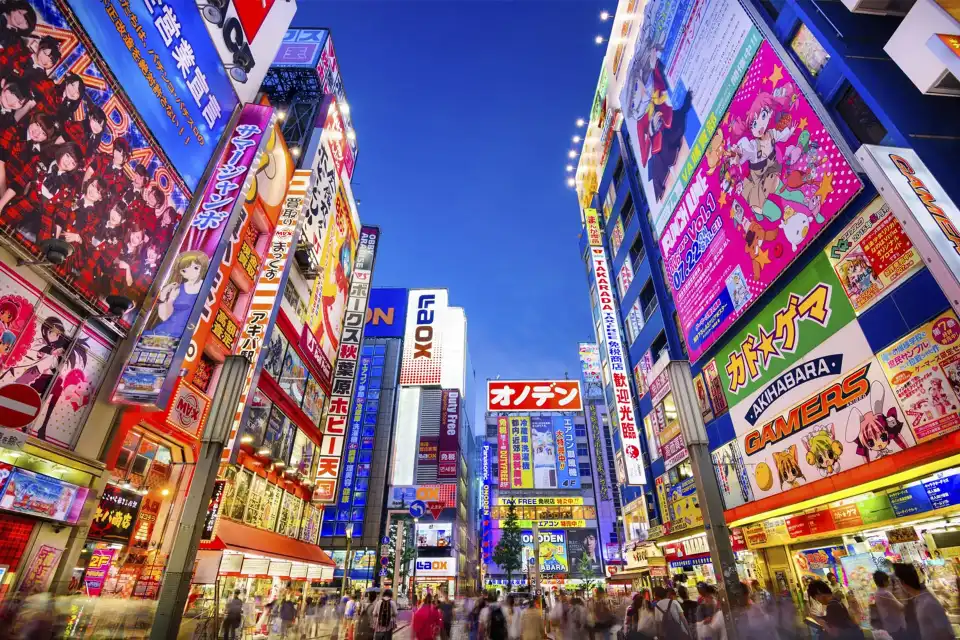
The sales staff here are fluent in many languages and are always enthusiastic to advise tourists. You can find any type of electronic parts and accessories you want or even watch employees assemble a smartphone right in front of you. If you are knowledgeable and love technology, this will be a very interesting destination for you in Tokyo.
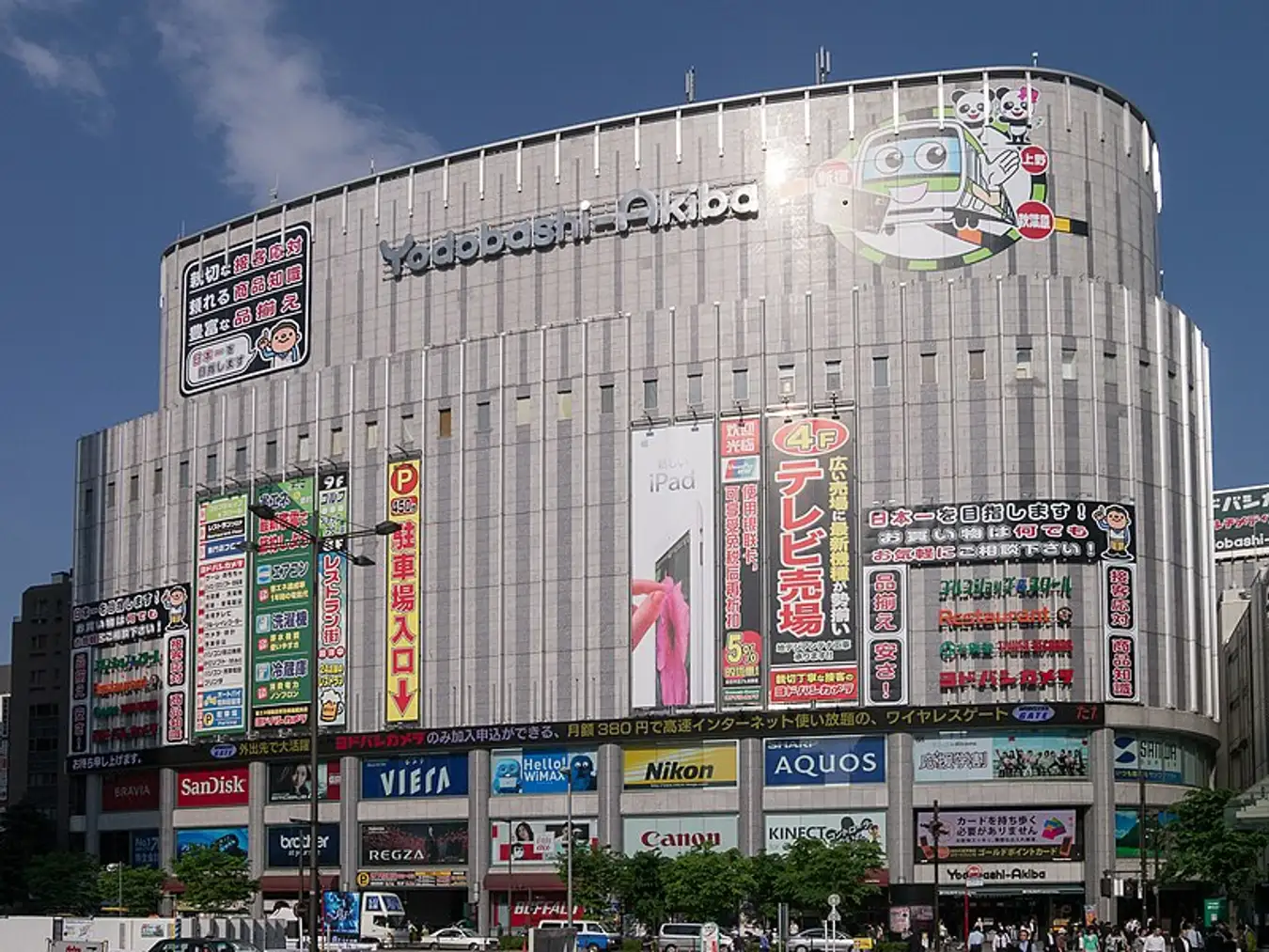
The above places are extremely interesting and attractive in Tokyo. If you are planning to travel to Tokyo in the near future, try to visit and experience them. Surely these places will bring you a great time!
Some best day tours, trips, activities and transfer services, tickets in, to and from Tokyo you can refer to
- Private Narita International Airport Transfers (NRT) for Tokyo 23 Wards, Hakone, or Karuizawa
- Private Haneda International Airport Transfers (HND) for Tokyo 23 Wards, Hakone, or Karuizawa
- Airport Limousine Bus Transfers from/to Narita and Haneda International Airport (Free Wifi Onboard)
- Tokyo Amazing Sightseeing Bus Day Tour
- Tokyo Highlights Private Day Tour
- Nikko Day Tour from Tokyo
- Mt Fuji & Hakone Day Tour: Lake Ashi & Ropeway Day Trip from Tokyo
- Nikko Cultural Day Tour from Tokyo
- Tokyo Subway Ticket (24, 48, or 72 Hours)
- Tokyo Skyliner and Tokyo Subway Ticket
- Shuttle Bus Transfers (One Way/Round Trip) from Shinjuku/Ikebukuro to Tokyo Disneyland or Tokyo DisneySea
- Tokyo Disney Resort Park Ticket
- Klook Pass Greater Tokyo
- SHIBUYA SKY Ticket
- Warner Bros. Studio Tour Tokyo – The Making of Harry Potter Ticket
- Skyliner Narita Airport Express Ticket
- TeamLab Planets Ticket
- TOKYO SKYTREE® Ticket
- Limousine Bus Narita or Haneda Airport to Tokyo
- Skyliner Narita Airport Express With Tokyo Subway Ticket
- JR Tokyo Wide Pass
- Sky Hop-on and Hop-off Bus Pass
- 4G Prepaid Sim Card (JP Airports Pick Up) for Japan
- 4G WiFi (BKK and DMK Airport Pick Up) for Japan (Unlimited Data)
- JR Pass for Whole Japan (7, 14, or 21 Days)
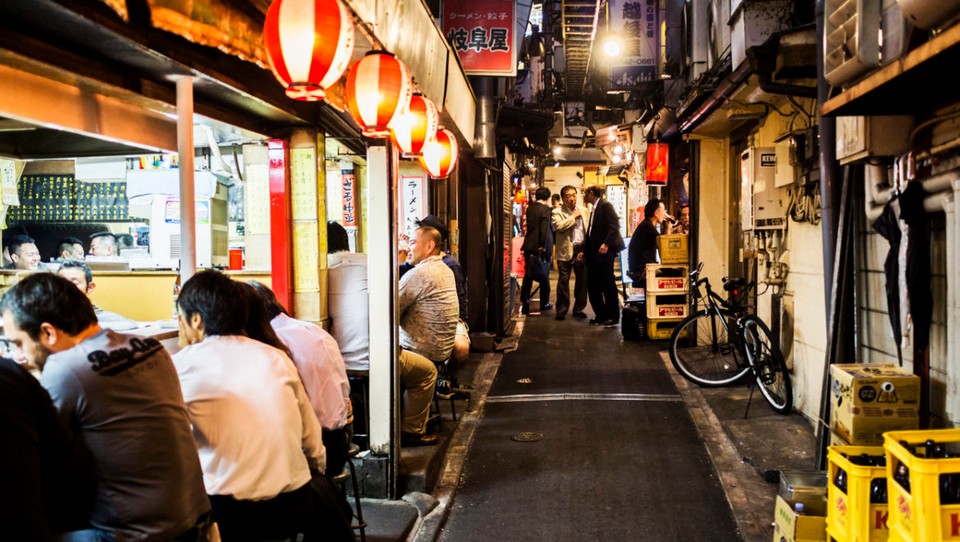
Are you looking for more Tokyo travel guide and top things to do in Tokyo: Tours, activities, attractions and other things? Read more: Tokyo itinerary 3 days — What to do in Tokyo in 3 days?
Related articles
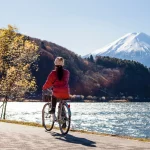
RELATED ARTICLES MORE FROM AUTHOR
7 days in hawaii itinerary. how to spend hawaii itinerary 1 week for independent travelers.
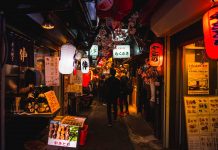
Suggested Tokyo travel itinerary 3 days. How to spend 3 days in Tokyo on a budget
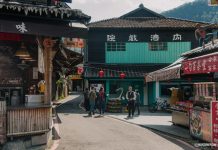
Where to go in Hsinchu? 14 famous attractions, best places to visit in Hsinchu
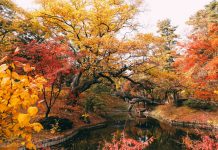
21+ best places to visit Korea in autumn
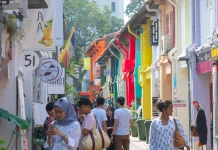
Suggested Singapore Malaysia itinerary 6 days to visit Singapore & Kuala Lumpur

Singapore Malaysia itinerary 5 days — What to do & suggested 5 days 4 nights Singapore Malaysia itinerary
Editor picks.

7 days in Hawaii itinerary. How to spend Hawaii itinerary 1...

POPULAR POSTS

What to buy in USA? — 17+ must buy in USA...

What to buy in Korea? — Top +23 cheap, famous &...

Must buy souvenir in Taiwan — Top 17+ most famous, cheap...
Popular category.
- Inspiration + Guide 1524
- Trip Inspiration 468
- Food + Drink 223
- Thailand 216
- Coasts + Islands 200
- South Korea 179
- Vietnam 172
- Travel Photos 144
- Work for Us
- Terms & Conditions
- Privacy Policy
Tokyo Attractions: 10 Best Things to Do & Places to Visit in Tokyo (for First Timer)
Welcome to Tokyo , the bustling capital city of Japan ! Tokyo, a vibrant blend of ancient traditions and modern marvels, serves as a paradise for shoppers and a hub of diverse cultures, making it an ideal destination for families with top 10 things to do in Tokyo . In Tokyo , first-time visitors are spoiled for choice with a multitude of Tokyo tourist attractions . Historical sites like Senso-ji Temple , Meiji Shrine , and the Imperial Palace are perfect for day explorations, alongside Ueno Park and a myriad of diverse museums.
Known as a shopping haven , Tokyo boasts numerous districts such as Akihabara, Ginza, and Shibuya's Omotesando, offering round-the-clock shopping experiences. Evenings unveil a different charm as visitors can wander through these unique districts and ascend iconic landmarks like Tokyo Tower, Tokyo Skytree, Shibuya Sky, and Roppongi Hills for panoramic city views.
With countless Tokyo tourist attractions to choose from, planning your first Tokyo trip can be overwhelming. This best places to visit in Tokyo for first timers involves everything you need when you travel to Tokyo . For newcomers, a well-planned 2-day Tokyo itinerary allows a glimpse into Tokyo's rich tapestry of offerings, ensuring a memorable and immersive introduction to this dynamic city.
Content Preview
Tokyo Tourist Attractions Map
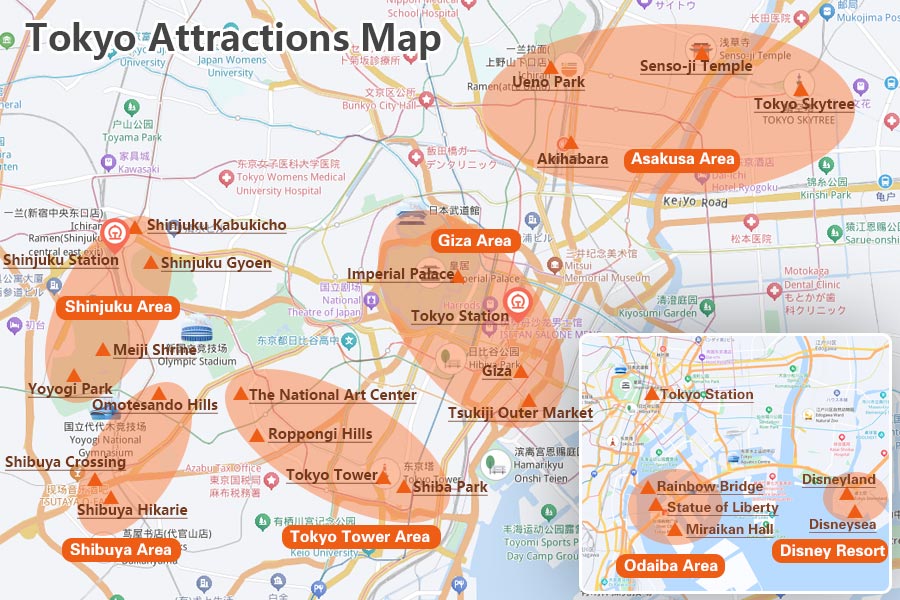
1. Explore Senso-ji Temple: Discover Tradition and Seek Omamori
Sensō-ji Temple , also known as Asakusa Temple , is one of the oldest temples in Tokyo . Founded in 628 AD , it has a rich history and is a must-visit destination for many tourists coming to Tokyo for the first time. The temple's architecture, sculptures, and traditional festivals showcase the rich traditions of Japanese culture. Located in the heart of Tokyo, the temple is easily accessible by subway or bus.
4 Days Japan Tour Package: From Tokyo to Mount Fuji Tour
Highlights of Sensō-ji Temple
- Kaminarimon Gate: The temple's iconic gate, featuring a giant red lantern, is one of Tokyo's most recognizable landmarks.
- Nakamise-dori Shopping Street: A long shopping street lined with shops selling traditional Japanese snacks, souvenirs, and more.
- Main Hall: The main hall of the temple houses a statue of the goddess Kannon.
- Five-story Pagoda: The tallest structure in the temple complex, made entirely of wood.
Fun Things to Do in Tokyo Senso-ji Temple
- Worship at the Main Hall : Pay your respects to the goddess Kannon and soak in the temple's serene atmosphere.
- Make a Wish : Toss coins into the offertory boxes and make a wish for good fortune and health.
- Try Your Luck : Draw an omikuji (fortune-telling paper) to see what the future holds.
- Take a Rickshaw Ride : Experience traditional Japanese culture as you're pulled through the streets by a rickshaw driver.
- Dress in Kimono : Rent a kimono and capture unforgettable photos against the temple's backdrop.
- Savor Local Cuisine : Indulge in delicious Japanese dishes like tempura, sushi, and unagi (eel) at nearby restaurants.
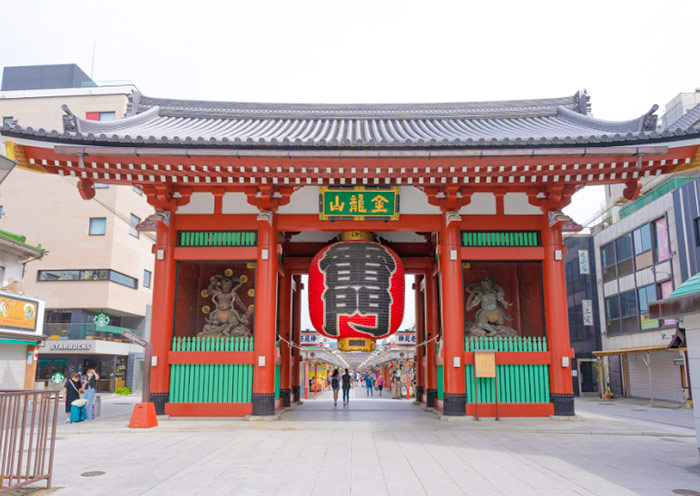
Nearby Attractions
- Sumida Park: A large park along the Sumida River, offering stunning views of the Tokyo skyline.
- Tokyo Skytree: The tallest self-supporting tower in the world, offering panoramic views of Tokyo .
Tips for Your First Visit in Tokyo Senso-ji Temple
- Best Time to Visit: Early morning or late afternoon can be less crowded.
- Respectful Attire: While not strictly enforced, dressing modestly is appreciated.
- Photography: While taking photos is generally allowed, be mindful of respectful behavior, especially inside the main hall.
6 Days Japan Highlights Tour with Mt. Fuji & Hakone Onsen (Hot Spring Tour)
2. Enjoy Roppongi and the Iconic Tokyo Tower Views
Roppongi is a vibrant district in Tokyo renowned for its upscale shopping, fine dining, and electrifying nightlife. But what truly sets it apart is the stunning panoramic view of the city, including the iconic Tokyo Tower .
The Tokyo Tower, built in 1958, standing at 333 meters (1,092 feet) tall, is a prominent landmark in Tokyo, Japan . The tower's design was inspired by the Eiffel Tower in Paris, with its distinctive orange and white color scheme.
Must-Visit Spots for Breathtaking Views:
Tokyo City View Observation Deck : Located at the top of Roppongi Hills Mori Tower, this indoor observation deck offers unparalleled 360-degree views of Tokyo . You can see the Tokyo Tower in all its glory, along with other landmarks like the Rainbow Bridge and Tokyo Skytree.
Outdoor Terraces at Roppongi Hills : For a more open-air experience, head to the outdoor terraces around the Mori Tower. You'll find plenty of spots to relax and enjoy the cityscape, with Tokyo Tower as the star of the show.
Walk to Tokyo Tower: Take a leisurely walk from Roppongi to Tokyo Tower, a landmark that offers breathtaking views of the city. Capture photos of the tower from various angles as you approach it.
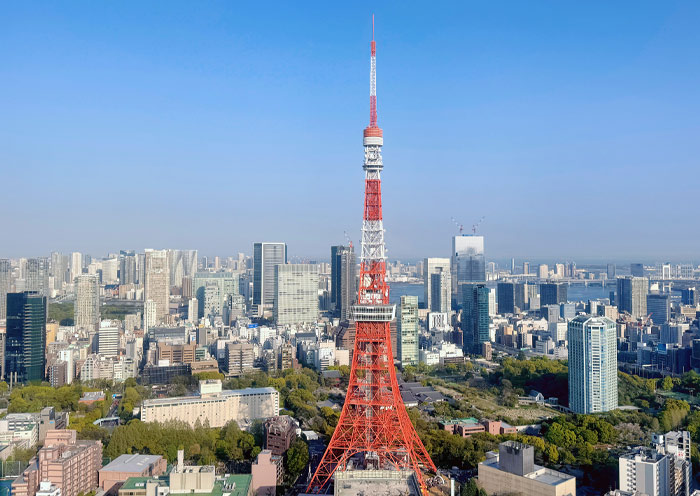
Beyond the Views: Exploring Roppongi
While the views are undoubtedly a highlight, Roppongi offers much more:
- Shopping: From high-end fashion boutiques to trendy concept stores, Roppongi caters to diverse tastes.
- Dining: Indulge in world-class cuisine, from Michelin-starred restaurants to casual eateries.
- Nightlife: Experience Tokyo's vibrant nightlife with a wide range of bars, clubs, and live music venues.
- Art and Culture: Visit the Mori Art Museum for contemporary art exhibitions or explore the surrounding galleries.
Whether you're seeking a romantic evening, a fun night out with friends, or a family-friendly outing, Roppongi has something for everyone. Its combination of stunning views, diverse attractions, and convenient location make it a must-visit destination in Tokyo for first timers.
10 Days Japan Spring Tour - Sakura Cherry Blossom Tour to Tokyo, Mt. Fuji, Kyoto & Osaka
3. Visit Meiji Shrine: Experience a Traditional Shinto Wedding
Meiji Shrine is one of Tokyo's most iconic and revered spiritual sites, dedicated to Emperor Meiji and Empress Shoken. Beyond its serene atmosphere and stunning natural surroundings, the shrine is also renowned for hosting traditional Shinto weddings.
Witnessing a Shinto Wedding
Attending a Shinto wedding at Meiji Shrine is a truly unique experience. These ceremonies are steeped in tradition, and witnessing one can provide a profound insight into Japanese culture.
- Wedding Procession: The bridal procession is a sight to behold. The bride and groom, dressed in traditional attire, are accompanied by attendants and shrine maidens. The couple often carries a white umbrella as a symbol of purity.
- Ceremony: The ceremony itself is solemn and filled with ritual. While the specifics are private, you can appreciate the beauty and reverence of the occasion.
- Photography: It's important to be respectful during the ceremony. While taking photos is allowed, it's essential to maintain a quiet and respectful demeanor.
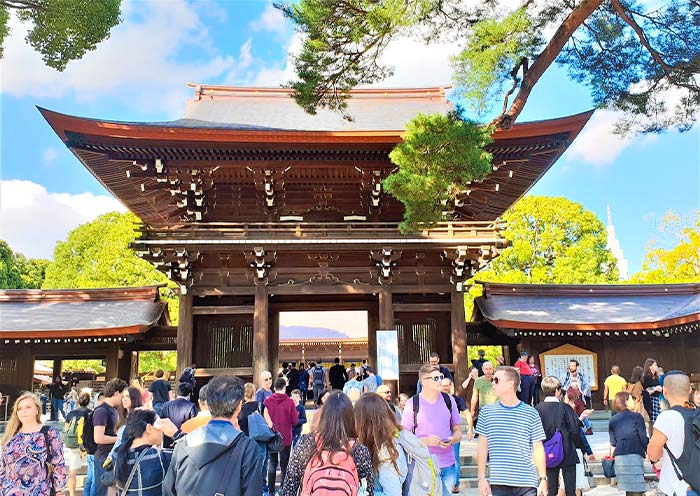
Beyond the Weddings: Exploring Meiji Shrine
Even if you don't have the chance to see a wedding, Meiji Shrine is a must-visit destination.
- Walk through the iconic Torii gate: This massive wooden gate marks the entrance to the shrine and is a popular photo spot.
- Immerse yourself in the forest: Meiji Shrine is surrounded by a lush forest, creating a peaceful atmosphere. Take a leisurely stroll and enjoy the fresh air.
- Visit the main shrine: Pay your respects at the main shrine dedicated to Emperor Meiji and Empress Shoken.
- Discover the Inner Garden: This beautiful garden is a hidden gem within the shrine grounds.
- See the Sake and Wine Barrels: Unique offerings from breweries across Japan are displayed as a tribute.
Witnessing a Shinto wedding at Meiji Shrine is a truly special experience that offers a glimpse into Japan's rich cultural heritage. Whether you're fortunate enough to see a ceremony or simply exploring the serene grounds, Meiji Shrine is a must-visit for any traveler to Tokyo .
7 Days Japan Essential Tour: Tokyo Kyoto Nara Osaka (Basic Golden Route)
4. Dive into Akihabara’s Anime and Otaku Culture
Akihabara is a popular and vibrant district in Central Tokyo that has become a global epicenter for anime, manga, video games, and electronics. It's a paradise for otaku, fans of Japanese pop culture.
Things to Do in Akihabara
Explore Anime and Manga Stores : Akihabara is home to countless stores offering a vast array of anime and manga merchandise, from figurines and trading cards to exclusive limited editions.
Visit Maid Cafes: Experience the unique phenomenon of maid cafes, where waitresses dressed as maids provide themed service and entertainment.
Enjoy Arcade Games: Step into a world of nostalgia with classic and modern arcade games at various gaming centers.
Collect Figures and Merchandise : Find rare and limited edition figures, plushies, and other anime-related merchandise.
Discover Electronic Gadgets: From the latest smartphones to cutting-edge technology, Akihabara offers a shopper's paradise for electronics enthusiasts.
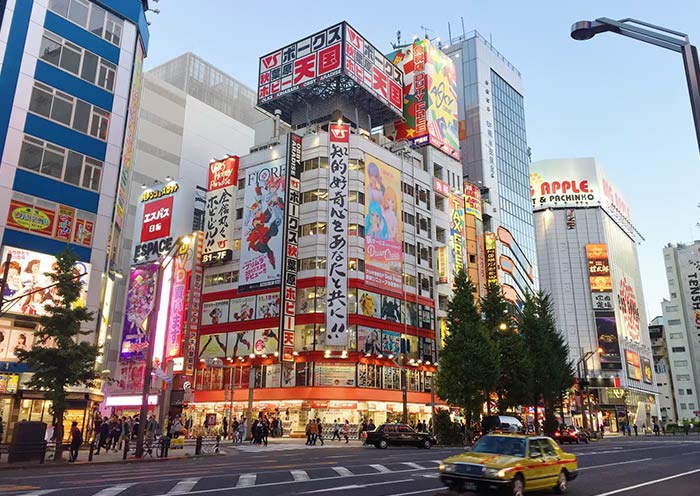
Must-Visit Spots in Akihabara
- Animate Akihabara: A massive store with a vast selection of anime merchandise, from figures to apparel.
- Pop Life Department M's: Offers a diverse range of anime goods, including cosplay costumes and doujinshi (self-published comics).
- HEY (Hirose Entertainment Yard) Taito: A large arcade complex with classic and modern games.
- GiGO Akihabara Building 3 & 1: Another big arcade with a variety of games and prize machines.
- Super Potato: A retro gaming paradise with vintage consoles and games.
- BicCamera AKIBA Store: A major electronics retailer with a wide range of products.
- Don Quijote Akihabara: A discount store with a mix of everything from anime goods to electronics and food.
- Akihabara Radio Kaikan: A landmark building with various shops offering anime, games, electronics, and more.
8 Days Classic Japan Tour with Mt. Fuji - Tokyo, Hakone, Kyoto, Nara & Osaka
5. Discover Shibuya: The Famous Crossing and Shibuya SKY
Shibuya is a vibrant district in Tokyo synonymous with youth culture, fashion, and entertainment. Its iconic crossing and the breathtaking Shibuya SKY observatory are just two of the many reasons to visit.
The Iconic Shibuya Crossing
No visit to Shibuya is complete without experiencing the world-famous Shibuya Crossing . This bustling pedestrian intersection is a spectacle to behold, with thousands of people crossing simultaneously at the green light. It's a must-see for any visitor to Tokyo .
Soaring High with Shibuya SKY
For a bird's-eye view of the city, head to Shibuya SKY. Located at the top of Shibuya Scramble Square , this observation deck on the 45th floor offers breathtaking panoramic views of Tokyo, including the iconic Shibuya Crossing. It's the perfect spot to capture stunning photos of sunset and soak in the city's vibrant atmosphere.
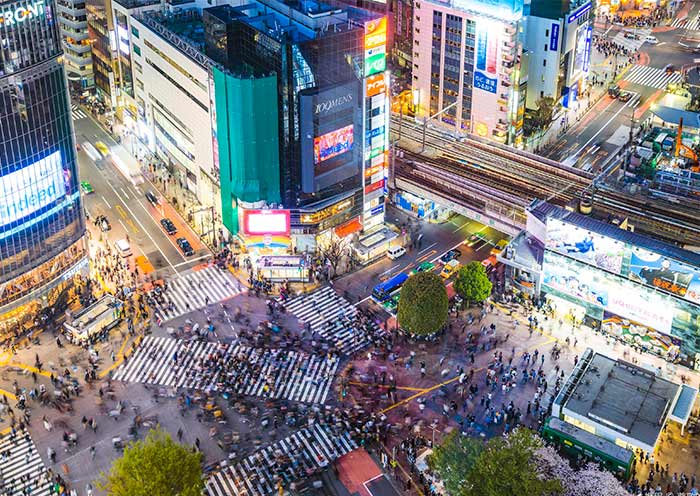
Beyond the Crossing and the Sky
Hachiko Statue : Pay homage to the famous Hachiko Statue located near the Exit A8 of Shibuya Station, a symbol of loyalty and devotion. Learn about the heartwarming story of Hachiko, the loyal Akita dog.
Shibuya 109 : Visit Shibuya 109, a popular department store known for its trendy fashion boutiques and unique shopping experience. Girls may be crazy for its various cloths, shoes, bags and decorations.
Shibuya is a place where you can feel the pulse of Tokyo . Its energy, diversity, and iconic landmarks make it a must-visit destination for any traveler.
5 Days Japan Group Tour: Tokyo Kyoto Small Group Tour
6. Experience the Vibrant Nightlife of Shinjuku’s Kabukicho
Located just hundreds meters away from the Shinjuku Station, Kabukicho is the heart of Shinjuku's nightlife, a dazzling maze of neon lights, bustling crowds, and endless entertainment options.
Immerse Yourself in Kabukicho's Nightlife
- Golden Gai: This narrow alleyway is packed with tiny bars, each with its own unique charm. Perfect for bar hopping and experiencing authentic Japanese nightlife.
- Robot Restaurant: Experience a mind-blowing, over-the-top show featuring robots, dancers, and special effects.
- Izakaya Hopping: Enjoy a casual night out at an izakaya, a traditional Japanese pub offering a variety of drinks and small dishes.
- Live Music Venues: Discover hidden gems with live music performances, ranging from jazz and rock to indie bands.
- Host and Hostess Clubs: While this is a unique cultural experience, it's important to be aware of the potential costs and cultural nuances.
- Karaoke Bars: Belt out your favorite tunes with friends at one of Kabukicho's many karaoke establishments.
- Gaming Arcades: Relive your childhood or discover the latest gaming trends at the numerous arcades.
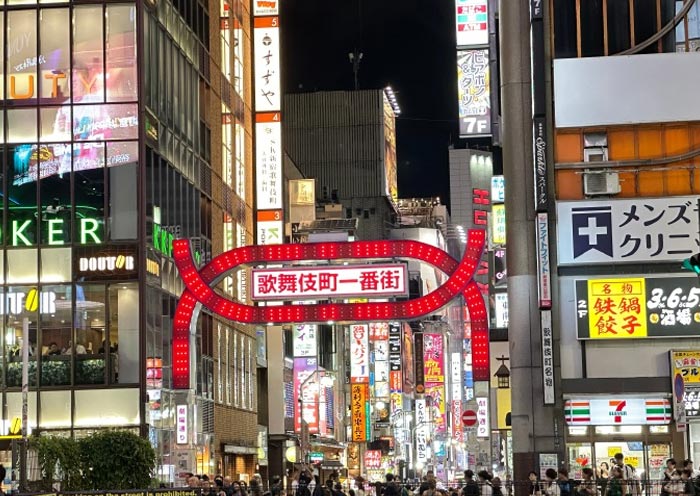
Tips for Exploring Kabukicho
Safety First : While Kabukicho is generally safe, it's advisable to exercise caution and be aware of your surroundings, especially in crowded areas and late at night.
Respectful Behavior : Be mindful of local customs and avoid causing disturbances.
Budget Wisely : Drinks and entertainment can add up quickly, so set a budget.
Consider a Guided Tour : If you're unsure about navigating the area, consider joining a guided tour.
Kabukicho is a place where anything can happen. It's a sensory overload of sights, sounds, and experiences. Whether you're looking for a wild night out or a more subdued evening, Kabukicho has something to offer everyone.
10 Days Japan Discovery Tour with Hiroshima, Kurashiki, Kobe (Small Group)
7. Stroll Through Ueno Park: Museums and Cherry Blossoms in Spring
Ueno Park is a sprawling green oasis in the heart of Tokyo , offering a delightful escape from the city's hustle and bustle. Renowned for its stunning cherry blossom displays in spring, Ueno Park also boasts a rich cultural heritage with numerous museums and historical sites. It is located 3 kilometers away from Senso-ji Temple, and worth to visit for first timers.
A Cherry Blossom Spectacle from March to April
Every spring, Ueno Park transforms into a breathtaking sea of pink as thousands of cherry trees burst into bloom. Join the locals for hanami (cherry blossom viewing) picnics, enjoy leisurely walks under the blossoming canopy, or simply relax on a bench and soak in the enchanting atmosphere.
A Symphony of Art and History
Ueno Park is home to a cluster of world-class museums, making it a cultural hub. Explore the collections of art, history, and science at:
- Tokyo National Museum: Japan's largest museum, showcasing a vast array of artifacts.
- National Museum of Western Art: Houses an impressive collection of Western art.
- National Science Museum: Immerse yourself in the world of science and technology.
- Tokyo Metropolitan Art Museum: Discover contemporary Japanese art.
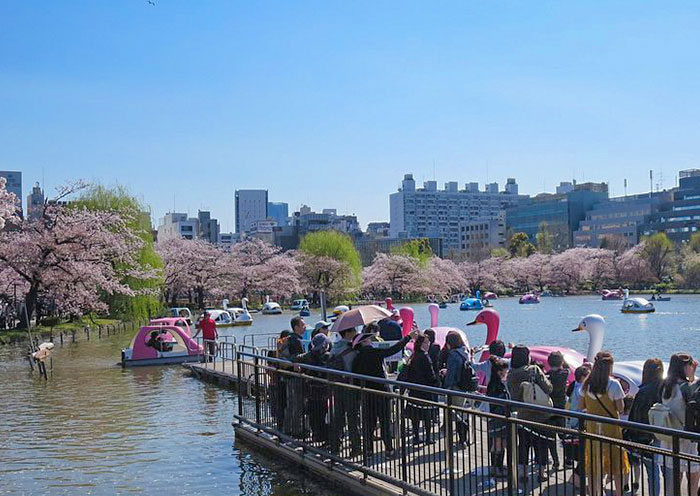
Other Attractions in Ueno Park
Beyond the museums and cherry blossoms , Ueno Park offers other enjoyable activities:
- Ueno Zoo: Home to a variety of animals, including pandas.
- Shinobazu Pond: Relax by the pond and enjoy the scenic beauty, especially during summer, when the lotus blooms.
- Ueno Toshogu Shrine: A lesser-known gem nestled within the expansive Ueno Park. While it might not be as famous as its namesake in Nikko, it still offers a captivating glimpse into Japan's Edo period architecture and history.
Ueno Park is a versatile destination that caters to diverse interests. Whether you're seeking cultural enrichment, a relaxing stroll, or a vibrant outdoor experience, this park has something to offer everyone.
10 Days Japan Cherry Blossom Tour 2025: Most Popular Sakura Tour in Small Group
8. Shop and Dine in the Ginza District
Ginza is Tokyo's epitome of elegance and sophistication. Known for its upscale shopping, fine dining, and iconic landmarks, it's a must-visit for those seeking a taste of high-end luxury.
Indulge in Luxury Shopping
Ginza is a shopper's paradise, boasting a plethora of world-renowned fashion brands, jewelry stores, and department stores. Explore the flagship stores of Chanel, Louis Vuitton, and other luxury labels, or discover unique Japanese fashion brands.
- Flagship Stores : Indulge in the world of luxury with flagship stores from renowned fashion houses like Chanel, Louis Vuitton, and Hermès.
- Department Stores : Explore the iconic department stores of Mitsukoshi and Matsuya, offering a wide range of products from fashion to home goods.
- Unique Boutiques : Discover hidden gems among the countless boutiques lining the streets, featuring both established and emerging designers.
Savor Exquisite Cuisine
Ginza is a culinary haven, offering a diverse range of dining experiences. From Michelin-starred restaurants to traditional Japanese cuisine, there's something to satisfy every palate. Indulge in exquisite sushi, savor tender wagyu beef, or enjoy afternoon tea at a luxurious hotel.
- Fine Dining : Experience the pinnacle of Japanese cuisine with world-renowned sushi, kaiseki, and tempura restaurants.
- Casual Dining : Enjoy a more relaxed atmosphere at stylish cafes, bistros, and ramen shops.
- Sweet Treats : Satisfy your sweet tooth with exquisite pastries, cakes, and ice cream from renowned patisseries.
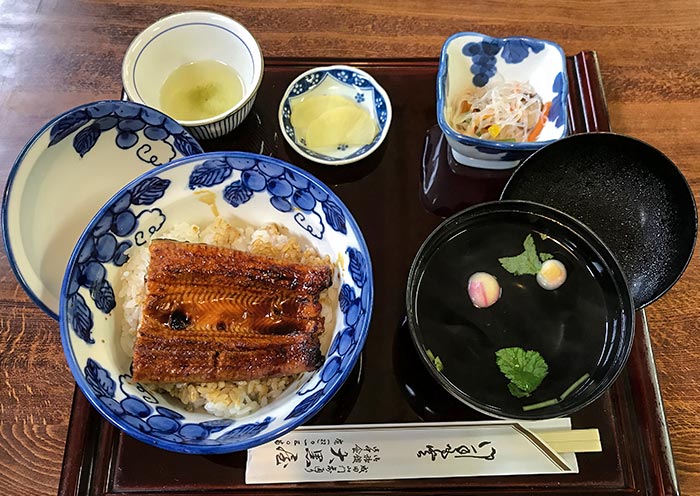
Explore Ginza's Landmarks
While shopping and dining are the main attractions, Ginza also offers several iconic landmarks:
Kabuki-za Theatre : Experience the traditional art of kabuki, a form of Japanese classical theater.
Ginza Wako Clock Tower : A symbol of Ginza, this clock tower is a popular meeting spot.
7 Days Japan Golden Route Tour in Small Group
9. Have Fun at Tokyo Disney Resort - A Magical Adventure for the Whole Family
Tokyo Disney Resort is a magical destination that offers two incredible theme parks: Tokyo Disneyland and Tokyo DisneySea. With its enchanting atmosphere, thrilling rides, and beloved characters, it's the perfect place to create unforgettable memories with your family.
Must-Do Experiences
Meet Your Favorite Characters : Encounter iconic Disney characters like Mickey Mouse, Minnie Mouse, and Donald Duck.
Thrill Rides : Experience the adrenaline rush on exciting attractions like Space Mountain and Splash Mountain.
Parades and Shows : Be amazed by the colorful parades and captivating shows featuring beloved characters.
Immerse Yourself in Fantasyland : Wander through the whimsical Fantasyland and feel like a fairytale character.
Enjoy Delicious Treats: Indulge in sweet and savory treats inspired by Disney movies.
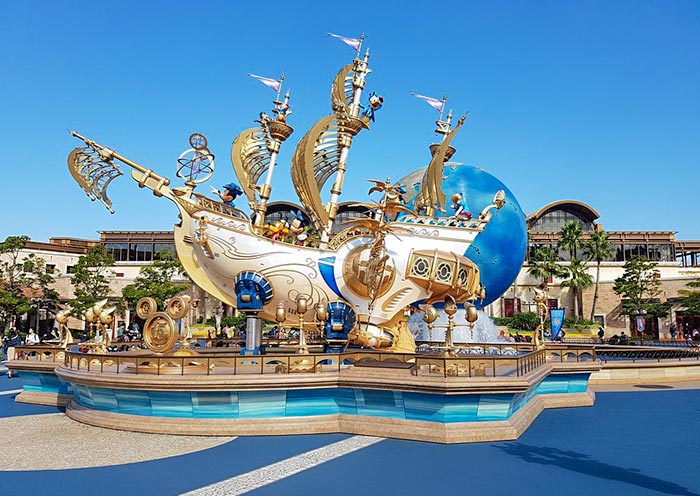
Kid-Friendly Attractions:
Fantasyland : This enchanting land is perfect for younger children with gentle rides and character meet-and-greets.
Toontown : Meet Mickey Mouse and his friends in their playful neighborhood.
It's a Small World : A classic boat ride with catchy tunes and colorful dolls.
Tips for a Magical Family Vacation
- Plan Ahead : Purchase tickets in advance and consider using the Disney Resort Line for easy transportation.
- Choose the Right Time : Visit during off-peak seasons in summer and winter for shorter wait times.
- Utilize Fastpass : Take advantage of the Fastpass system to reduce wait times for popular attractions.
- Pack Essentials : Bring sunscreen, hats, and comfortable shoes.
- Capture the Magic : Take plenty of photos and videos to cherish your memories.
Both Tokyo Disneyland and Tokyo DisneySea offer something for everyone in the family. With careful planning and a little magic, you're sure to create unforgettable memories that will last a lifetime.
7 Days Japan Family Tour with Kids - From Tokyo Disneyland to Kyoto, Nara & Osaka
10. Explore the Futuristic Odaiba District
Odaiba is a futuristic man-made island in Tokyo Bay, known for its entertainment complexes, shopping centers, and iconic landmarks.
Must-See Attractions
- Miraikan : National Museum of Emerging Science and Innovation: Immerse yourself in the world of science and technology with interactive exhibits.
- Odaiba Seaside Park : Enjoy stunning views of Tokyo Bay, relax on the beach, or take a leisurely stroll along the waterfront.
- Rainbow Bridge : Capture iconic photos of this architectural marvel connecting Odaiba to the mainland.
- Giant Gundam Statue : For anime and robot enthusiasts, this towering statue is a must-see.
- Aqua City Odaiba : A large shopping mall with a variety of shops, restaurants, and entertainment options.
- Palette Town : Enjoy amusement rides, shopping, and dining at this entertainment complex.
Things to Do in Odaiba
- Take a Ferry Cruise : Enjoy panoramic views of Tokyo Bay and the city skyline.
- Visit the Statue of Liberty : A replica of the original statue stands in Odaiba.
- Enjoy the Beach : Relax on the artificial beach and soak up the sun.
- Experience Virtual Reality : Immerse yourself in virtual worlds at various entertainment venues.
- Indulge in Shopping and Dining : Discover a wide range of shops and restaurants to suit every taste.
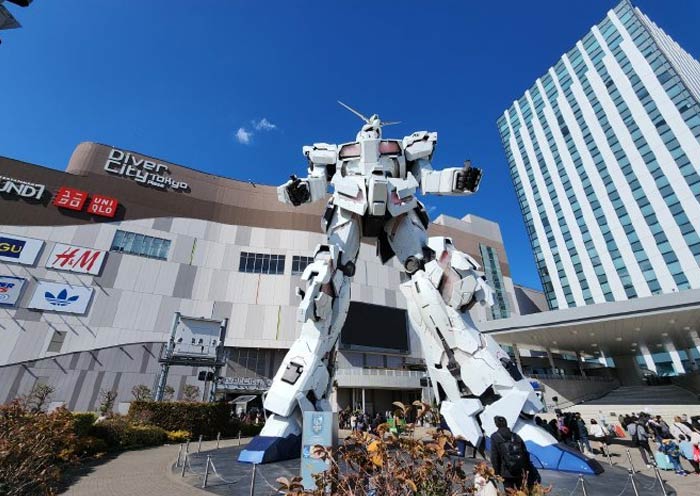
How to Get There
- Yurikamome Line : This elevated train offers stunning views of Tokyo Bay and provides direct access to Odaiba.
- Rainbow Bridge : You can walk or cycle across the Rainbow Bridge for a unique experience.
Odaiba is a perfect destination for a day trip or a longer stay. Its blend of futuristic attractions, stunning waterfront views, and convenient location make it a must-visit for any Tokyo traveler.
10 Days Japan Tour: New Golden Route with Hiroshima & Uji (Osaka to Tokyo)
How Many Days to Spend in Tokyo for First Timers? Suggested Itinerary
Related Article: How to Plan a Trip to Tokyo
For Family Fun: 2 Days of Magic and Adventure
- Day 1: Explore the vibrant Shibuya Crossing, visit the historic Meiji Shrine and Senso-ji Temple, and indulge in fresh seafood at the Tsukiji Outer Market. End the day with a shopping spree at Akihabara, the ultimate hub for anime, manga, and electronics.
- Day 2: Immerse in Disney magic at Tokyo Disneyland or DisneySea. Let loose and enjoy the rides, shows, and character meet-and-greets.
10 Days Best Japan Tour for Family - From Tokyo Disneyland to Universal Studios Japan
For Teenagers: 2 Days of Culture and Cool
- Day 1: Start with a dose of history and culture at the bustling Senso-ji Temple and Ueno Park, exploring its museums and serene atmosphere. Afterward, immerse yourself in the modern world at Tokyo Skytree and the electric energy of Akihabara.
- Day 2: Experience the youthful energy of Shibuya Crossing, pay respects at the serene Meiji Shrine, and dive into the electrifying nightlife of Shinjuku's Kabukicho.
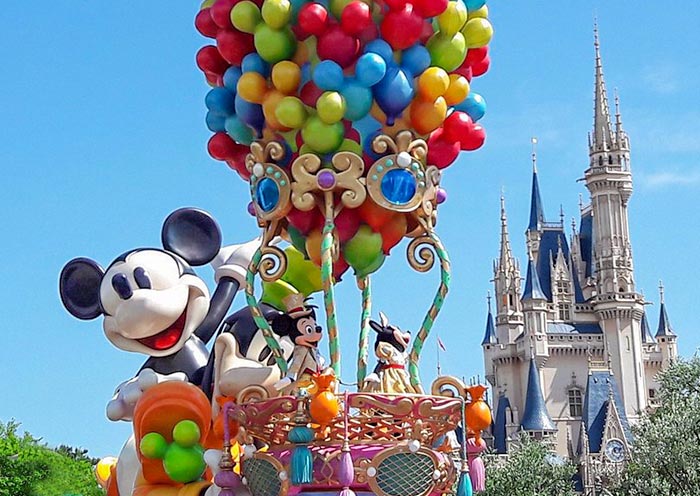
For Cherry Blossom Lovers: 2 Days of Sakura Bliss
- Day 1: Immerse yourself in the beauty of cherry blossoms at Meiji Shrine and nearby Yoyogi Park. Continue to explore the historic Senso-ji Temple and relax by the Sumida River.
- Day 2: Visit the Imperial Palace and enjoy the stunning cherry blossom view along Chidorigafuchi moat. Afterward, climb Tokyo Tower for panoramic city views and end the day with a shopping spree in Ginza.
Travel to Tokyo with Asia Odyssey Travel (AOT)
Immerse yourself in the dynamic blend of modernity and tradition in Japan's bustling capital, where vibrant city life coexists with historic landmarks, neon-lit streets, and diverse neighborhoods. With years of experience guiding travelers through Asia, AOT is your ideal partner to tailor a journey that fits your preferences.
Useful Tokyo Travel Guide: 10 Best Things to Do in Tokyo , Tokyo Itineraries (1-4 days), How to Plan a Trip to Tokyo , Tokyo Toursit Maps , Tokyo to Mount Fuji , Tokyo to Hakone , Things to Do in Hakone , Tokyo Cherry Blossom Viewing Spot .
Tour Packages: AOT offers specialized Tokyo tours that can be customized to include cultural experiences like tea ceremonies and kimono fittings, ensuring a deeply personal and immersive experience. Whether you're planning a budget journey , a cherry blossoms tour , an autumn tour , or a family holiday , AOT crafts itineraries delve deeply into the heart of Kyoto's heritage.
Embark on a journey of discovery with Asia Odyssey Travel and experience the unique blend of ancient traditions and modern conveniences in Tokyo. Contact us today to begin crafting your unforgettable Tokyo adventure.
If you have any questions about this article, please contact us by submitting the following form and we'll immediately get back to you.
Ask Us for More Information
Related Travel Articles
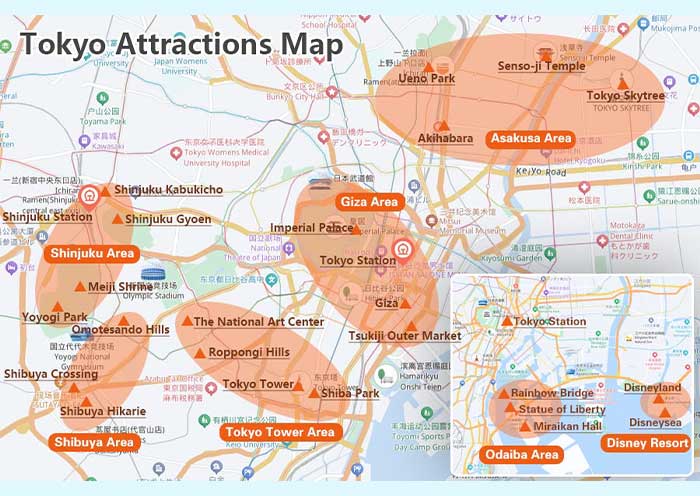
Sign Up Today
Start your 14 day free trial today

History Hit Story of England: Making of a Nation
10 Significant Historic Sites in Japan
Japan, the land of the rising sun, is home to stunning temples, monuments, and castles. here's our pick of sites you shouldn't miss when paying a visit..

Lucy Davidson
30 may 2024, @lucejuiceluce.
Japan’s long history embraces a vast breadth of art, culture and architecture. Across the country there are thousands of shrines, temples, and castles which date back hundreds of years, situated amidst picturesque landscapes. All year round, travellers make pilgrimages to the country’s remarkable historic sites as a way of learning about Japanese culture and history. Here’s our pick of 10 essential historic sites in Japan.

1. Meiji Jingu
Meiji Jingu is a sacred shrine to Emperor Meiji, modern Japan’s first emperor following the fall of the Samurais , and his wife, Empress Shoken. Made up of three sections, Meiji Jingu consists of a series of shrine buildings, inner and outer gardens, and a Meiji Memorial Picture Gallery. Visitors can enter the Meiji Jingu through two of Japan’s largest gates, or ‘tori’, which date back over 1,700 years and bear the imperial seal.
Visiting Meiji Jingu is a very peaceful experience and one imbued with a great sense of the Japanese culture, particularly when traditional tea ceremonies or one of the many wedding ceremonies held there takes place. It’s an experience in great contrast to the rest of the buzzing city of Tokyo where Meiji Jingu resides.

2. Yasukuni Shrine
The Yasukuni Shrine was originally established in 1869 by the first emperor of modern Japan, Emperor Meiji, in honour of those who fought and died for the country.
Approximately 2,500,000 names are enshrined at Yasukuni, amongst them the casualties of wars since 1853, including the Boshin War, the Seinan War, the Sino-Japanese and Russo-Japanese wars, World War I , the Manchurian Incident, the China Incident, and World War Two , known in Japan as the Greater East Asian War. The Yasukuni Shrine is part of a six hectare precinct and the shrine itself is surrounded by statues and commemorations to other victims such as war widows, kamikaze pilots, and animals.

3. The Hiroshima Peace Memorial
The Hiroshima Peace Memorial, also known as the A-Bomb Dome or the Genbaku Dome, in Hiroshima , Japan, was the only building in the city which survived following the first ever explosion of an atomic bomb . On 6 August 1945, US forces dropped an atomic bomb on the Japanese city of Hiroshima. It was the first ever use of the ‘A-bomb’.
Originally constructed in 1915, the Hiroshima Peace Memorial building is a domed structure which served as an office building for businesses as well as the Japanese government during the war. Today, the Hiroshima Peace Memorial building forms part of the Hiroshima Peace Memorial Park which also includes a museum. It is also a UNESCO World Heritage site .

4. Sensoji Temple
The Sensoji Temple is a Buddhist temple in Tokyo in Japan. Whilst the original structure of the Sensoji Temple is thought to have been built in 628 AD, making it the oldest one of its kind in the city, most of this burned down during World War Two. The current temple was rebuilt following the war.
Sensoji Temple is dedicated to Kannon-Bosatsu, the goddess of mercy, whose statue is housed here, although it is not on display. Legend says that the original Sensoji Temple was founded after this statue was caught by two fishermen in 628 AD. Today, the Sensoji Temple is one of Tokyo’s most popular attractions.

5. The Edo Tokyo Museum
The Edo Tokyo Museum in Tokyo in Japan chronicles the history of the city, which was originally known as Edo. Split into three sections, one devoted to Edo, another to Tokyo, and the last named the ‘Comprehensive History Zone’, the Edo Tokyo Museum has over 2,500 artefacts and objects charting the history of Edo and Tokyo, from social aspects to the political and the economic.
English routes run through the museum and it offers a great insight into Tokyo and Japan’s history. One of its more popular exhibits is its reconstruction of the original Nihonbashi Bridge, through which one enters the Edo Tokyo Museum.

6. Tokyo National Museum
The Tokyo National Museum (Tokyo Kokuritsu Hakubutsukan) houses national treasures from Japan and around the Far East and Asia.
Its archaeological finds range from Japanese artwork and archaeological pieces to artefacts from Egypt and India . It also has a collection known as the Horyuji Treasures, made up of over 300 pieces of Buddhist art. The exhibits at the Tokyo National Museum are arranged by category.

7. Kiyomizudera
Kiyomizudera or Kiyomizu-dera is a famous UNESCO-listed Buddhist temple in Kyoto, Japan. The first temple of Kiyomizudera was founded in 780 AD during the Heian period and designated an imperial temple in 805 AD, although much of this was destroyed and rebuilt in the 1630s, including the Main Hall. The Main Hall at Kiyomizudera is renowned for hanging over a steep cliff.
Each part of Kiyomizudera is dedicated to a different Buddhist deity. The oldest surviving parts of Kiyomizudera date back to the seventeenth century and include the Niomon Gate and the Unatodome stable.

8. The Nagasaki Peace Park
The Nagasaki Peace Park commemorates the atomic bombing of this Japanese city by American forces in World War Two. This occurred on 9 August 1945, three days after the bombing of Hiroshima. Approximately 74,000 people were killed and 30% of the city was devastated, with many more suffering the effects of radiation poising many decades later.
Today, the Nagasaki Peace Park houses several monuments relating to this event, including one marking the site of the bomb’s hypocentre.

9. Todai-ji
The largest wooden building in the world, the temple of Todai-ji, or ‘Great Eastern Temple’, is the Japanese headquarters of the Kegon school of Buddhism. Located in the capital Nara, the main buildings of the Todai-ji temple complex were constructed between 745 and 752 BC under Emperor Shōmu, a devout Buddhist, marking the adoption of Buddhism as state religion.
Today, Todai-ji is home to many precious cultural treasures linked to the temple, whilst also remaining a place of Buddhist rituals such as the Shuni-e. You can walk around the main hall of the Daubutsu-den, reconstructed to half of its original size, and beyond into the central park of Nara, looking out onto the beautiful Wakakusayama hills. Many people visit to see the giant bronze Buddha, over two-hundred and fifty tons in weight. There is also a museum by the main gateway, displaying intricately crafted religious treasures.

10. Osaka Castle
Located in Chūō-ku, Osaka, Japan, Osaka Castle is one of the country’s most famous landmarks. The construction of the castle started in 1583 on the former site of the Ishiyama Honganji Temple, which had been destroyed thirteen years earlier. As the largest castle in Japan at the time, the general Hideyoshi Toyotomi intended for Osaka Castle to become the centre of a new, unified Japan.
Today, the castle is five stories high and is a hugely popular site and historical museum. On each floor of the castle are a wide variety of artefacts detailing the extensive history of Osaka and the castle itself. Make sure to visit the top floor for a view of the city, as well as the beautiful surrounding park which is full of cherry trees, and even offers boat rides along the moat.


- Visa Application Helpline
Subscribe to our newsletter
Learn how to live a sustainable long-term travel lifestyle.
By signing up, you agree to the our terms and our Privacy Policy agreement.
Top 27 Places to visit in Darjeeling, Explore the Beautiful Hills of Darjeeling
Top 10 things to do when traveling to shimla: shimla travel guide, the ultimate paris travel guidelines for first timers | top attractions & things to do.

Top 41 Places to see in Tokyo, a Complete Guide to Places to visit in Tokyo, Japan
Tokyo is a modern supercity that is super busy and just as efficient. From the dazzling neon lights of Shibuya and Shinjuku to the peaceful gardens and temples of Asakusa and Ueno, Tokyo is a city of contrasts that never fails to amaze and inspire visitors from around the world.
When I first visited Tokyo in 2018, I knew I would come back over and over again. I was travelling abroad for the first time, and visiting Tokyo, Japan , as my first solo trip was one of the best decisions ever.
But figuring out which places to see can be overwhelming. That’s why I have prepared the ultimate checklist for you that includes the best places to see in Tokyo, go to eat and do fun stuff!
In this blog post, I’ll take you on a journey through the sights, sounds, and tastes of Tokyo, sharing my favorite experiences and insider tips for making the most of your trip to this incredible city. So put on your walking shoes, grab your camera, and get ready to explore Tokyo like a local!
WHAT IS COVERED IN THIS ARTICLE?
Best places to visit in tokyo for first-timers.
There are numerous places to see in Tokyo, but here is a list of the top 24 places you must visit in Tokyo:
1. Tokyo Tower: Visit Japan’s Eiffel Tower
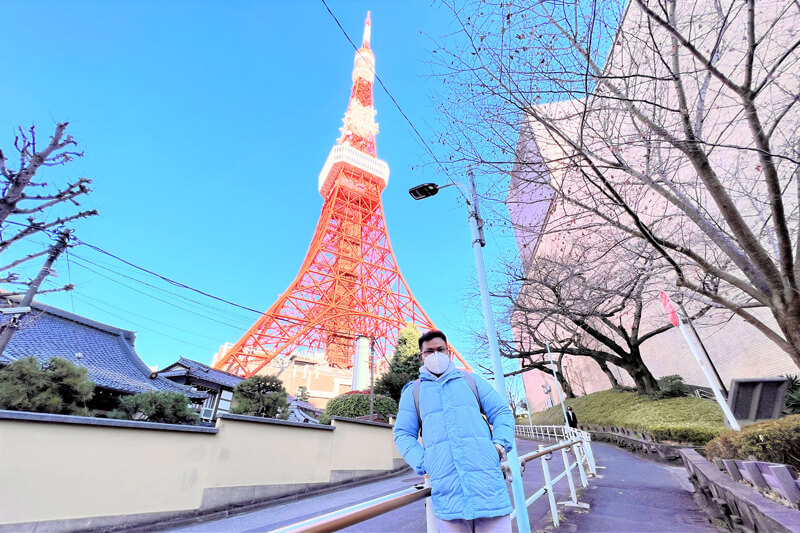
After its completion in 1958, Tokyo Tower became one of the most famous landmarks. At Tokyo Tower, you get a glorious view of the city from its main observation decks. It provides a 360-degree scenic view of hustling and bustling Tokyo, everything from its shopping streets to parks, famous buildings, and shrines, and if the sky is clear, you can even see the Gulf of Tokyo and Mount Fuji in the far distance too!
Tokyo Tower is magnificent at night, too, due to its lighting. It is a great place to visit in Tokyo with your family. The Eiffel Tower in fact, inspires its structure. Another thing, if you are a One-Piece fan, then you must visit Tokyo One Piece Tower, located inside the Tokyo Tower. Don’t forget to bring your camera to capture your memories to take home!
Observatory Admission fees : 1200 yen for adults (19+ years old), 1000 yen for high schoolers (16-18 years old), 700 for middle schoolers (7-15 years old) and 500 for children between the age of 4-6 years.
Timings: 9:00 am to 10:30 pm.
Address: 4 Chome-2-8 Shibakoen, Minato, Tokyo
2. Tokyo Skytree: Visit Tokyo’s Iconic Tower
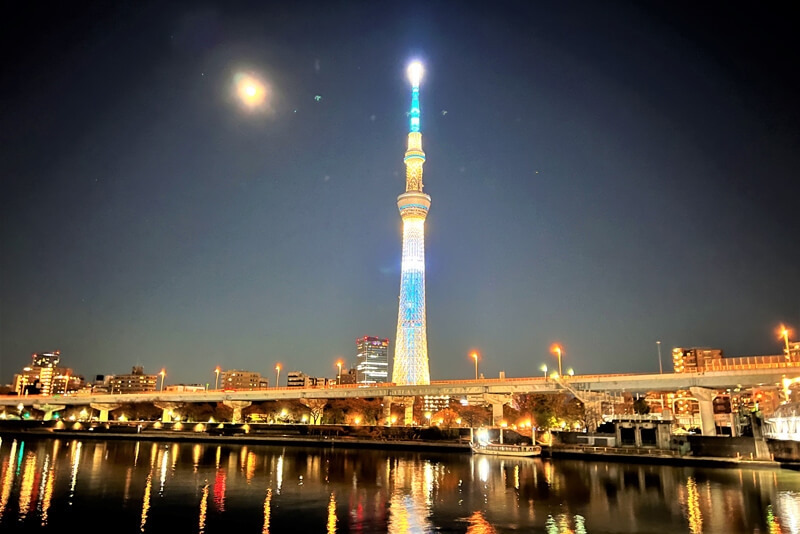
Known as the tallest structure in Japan and third in the World, Tokyo Skytree is another prominent landmark that you just have to add to your list of things to see in Tokyo . It is even taller than Tokyo Tower, and you get another great location to enjoy fantastic views, including Tokyo Bay, Tokyo Tower and even Mount Fuji! Here, you get to enjoy a spiralling skywalk at Tembo Galleria.
While you are here, you can visit the Sumida Aquarium, a public aquarium located on the 5-6th floors of Tokyo Solamachi in Tokyo Skytree. This aquarium also has a penguin tank and with their seasonal digital art show, you can enjoy these cute creatures swimming through gorgeous lights.
To go to the top of the Tower at Tembo Deck and Tembo Galleria, you will need to purchase a ticket, but it is worth every penny for the panoramic view and the chance for photography you get!
Ticket Prices : For adults, it is 2700 Yen for Tembo Galleria and Tembo Deck and 1800 Yen for Tembo Deck.
Timings: 10 am to 9 pm.
Address: 1 Chome-1-2 Oshiage, Sumida City, Tokyo
3. Shibuya Crossing: See Tokyo’s Fantastical Scramble Crossing
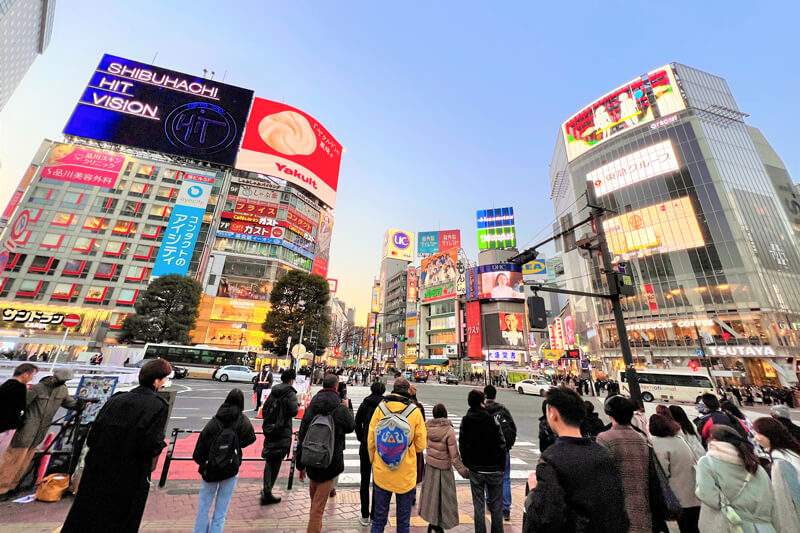
Known as the world’s busiest pedestrian crossing, Shibuya Crossing is a popular tourist attraction and one of the best things to see in Tokyo, Japan . To fully understand this place’s glory, you must go to the surrounding building at Shibuya Crossing and observe the crossing of a massive crowd at this intersection every time the traffic light stops the vehicles.
The entire scramble happens within a few moments, and it is mesmerising and an incredible site to witness. I recommend that you view this from the 11th floor of the Hikarie Building or Starbucks Shibuya Tsutaya.
Another place that offers a great view of Shibuya crossing is the Shibuya Scramble Square tower , providing a bird’s eye view along with an incredible view of Tokyo city.
The best time to visit Shibuya crossing is at dusk when the crowd of people and vehicles here is at its peak, and the lighting is the best for photography!
Address: In front of Shibuya station, Shibuya City, Tokyo
4. Sensō-Ji: Visit Tokyo’s Oldest Temple
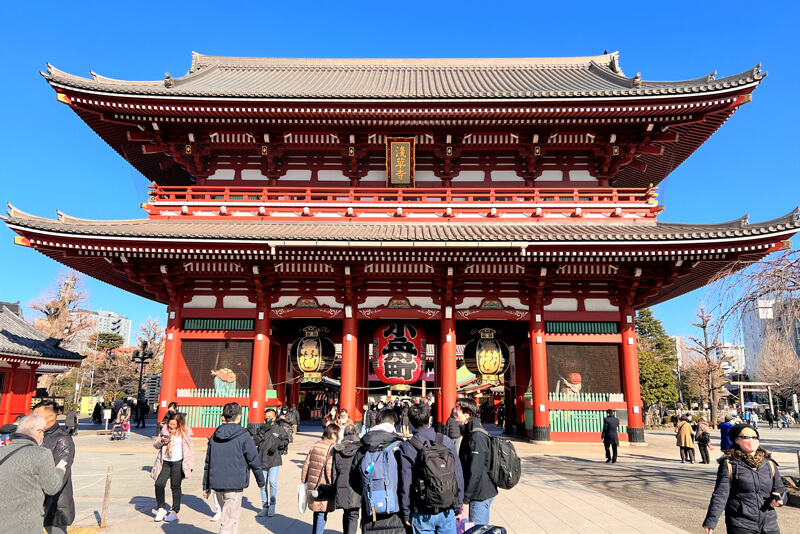
Located in Asakusa, Senso-Ji is another popular place to visit in Tokyo with the family , which has over 30 million visitors yearly. It is the oldest temple in Tokyo and is especially significant too. With its blazing red Kaminarimon Gate, this Buddhist temple is full of the hustle and bustle with its shopping streets.
There is a ginormous cauldron in front of the temple, which has loads of burning incense, which is believed to have many health benefits.
This is a must-visit place in Tokyo where you get to see the beauty of Japanese culture and traditions. At night, this place gets even more extraordinary. I would recommend visiting during the annual festivals and being a part of the lively vibes! Also, if you want to avoid the tourist crowd, try to come here early.
Ticket Price: Free
Timings: the temple grounds are open day and night. However, the main hall opens at 6 am and closes at 5 pm. From October to March, the opening timing changes to 6:30 am.
Address: 2 Chome-3-1 Asakusa, Taito City, Tokyo 111-0032
5. Shinjuku Gyoen National Garden: Best place for Cherry Blossom in Tokyo

Is your reason for visiting Tokyo to experience the Cherry Blossom season? Then, Shinjuku Gyoen National Garden is the perfect place for you and a great place to visit in Tokyo with your family . Located in Shinjuku and Shibuya, Tokyo, Shinjuku Gyoen National Garden is one of the largest and most famous gardens and parks in Tokyo.
It is also one of the most famous Cherry Blossom sites, with over 1000 cherry blossom trees planted here. Shinjuku Gyoen has spacious lawns, lovely walking paths and an overall tranquil atmosphere where you can relax away from city life. It is not only a Japanese garden but has French Formal and English Landscape gardens too.
It is also very close to Tokyo Tower, so you can head over there after visiting here or vice-versa. The entire space is well-maintained, and it’s a popular place to visit in Tokyo that must not be missed!
Ticket Price: The starting price is 500 yen for an adult, 250 yen for students and free for children under 15.
Timings: It is closed on Monday. Timings from Tuesday to Thursday are 9 am to 4 pm. And on Saturdays and Sundays, the timings are 7 am to 4 am.
Address: 11 Naitomachi, Shinjuku City, Tokyo
6. TeamLab Planet: Experience Art’s Futuristic Form
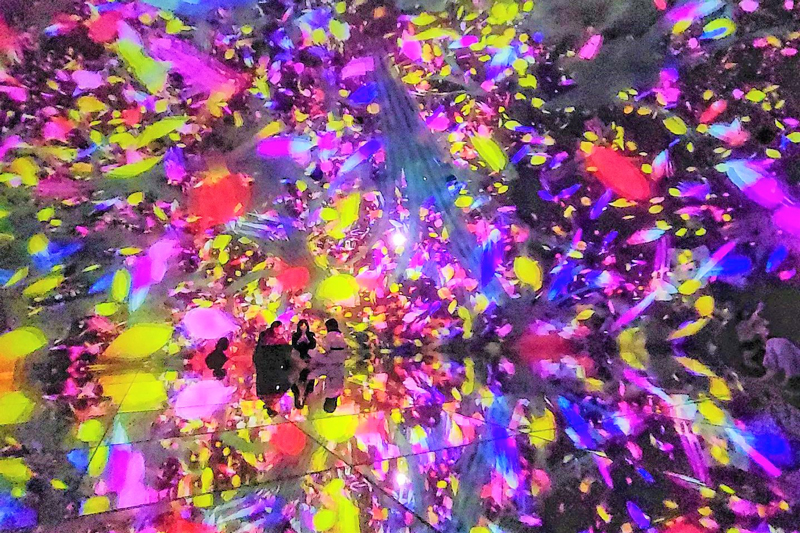
Located right next to Shin-Toyosu Station, teamLab Planet is a digital art museum that has given a new meaning to immersive and sensorial art. If you are searching for things to see in Tokyo , just add this place to the top of your list. This place is full of Instagram-able, breathtaking and surreal collections of many installations.
There is a new addition of a vegan Ramen restaurant here and an indoor/outdoor Garden area. The artworks are in wide-open dazzling spaces and connected by dark, maze-life corridors. You will even have to walk barefoot and through knee-deep water for aquatic imagery.
The art is impossibly fantastic, with some displays like shining mirrored enclaves of limitless crystal lights. If you are an art lover, this place is a must-visit for you because the unique experience with the digital art teamLab Planet provides is sure to become a core memory!
Ticket Price : 3200 yen for adults and 2000 yen for junior high and high school students. For children, it’s 1000 yen and free for disabled and kids below 3.
Timings: 10 am to 8 pm, except On Sunday when the timings are 9 am to 9 pm.
Address: 6 Chome-1-16 Toyosu, Koto City, Tokyo
7. Visit Meiji Jingu Shrine
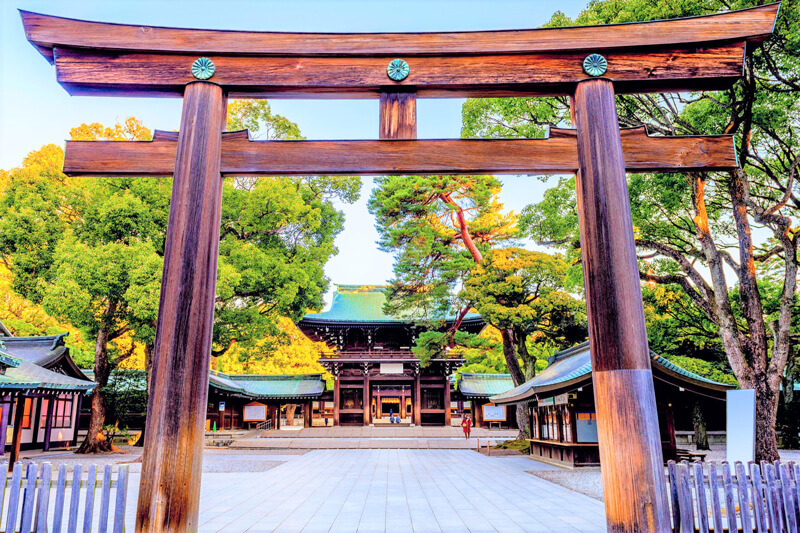
Another excellent best place to visit in Tokyo, Japan , is Meiji Jingu Shrine . It is a famous shrine in Tokyo dedicated to the deity of Emperor Meiji and Empress Shoken, his consort. At Meiji Jingu Shrine, you can enjoy a tranquil walk and feel enlightened and refreshed away from the hustle and bustle of daily life.
This place comes alive at New Year and during festivals hosted by the shrine throughout the year. The main complex of Meiji Jingu is located at a ten-minute walk from its entrances, marked by Torii gate near Harajuku Station and Yoyogi Station. The entire shrine has around 100,000 trees in its forest that were donated from all across the country.
Another place you must visit at Meiji Shrine is the Inner Garden. It is located off the main path to the shrine, and its beauty is at its peak in early summer when the iris blooms. This shrine is definitely among the places to visit in Tokyo with your family to make some amazing memories.
Ticket price: free
Timings: the timings vary from month to month. You can check the opening and closing timings on their website.
Address: 1-1 Yoyogi Kamizono Cho, Shibuya, Tokyo
8. Tokyo National Museum: Visit Tokyo’s Biggest Museum
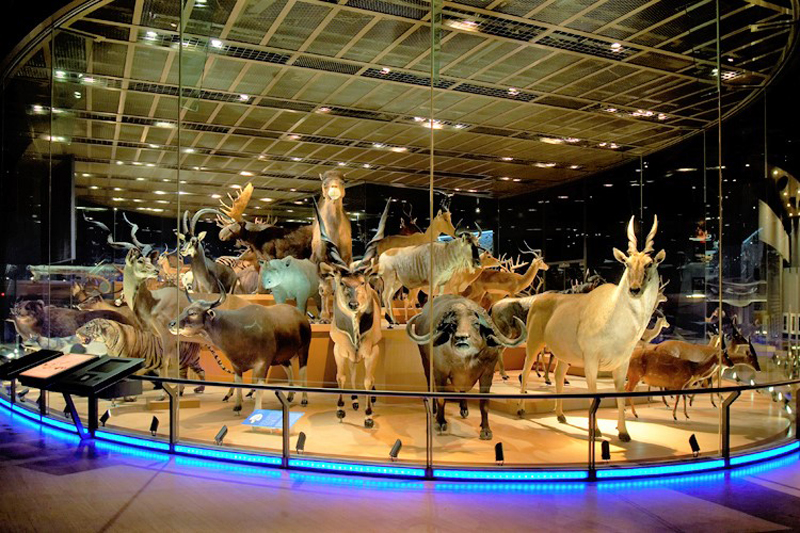
Tokyo National Museum is one of the oldest museums in Japan and another great place to see in Tokyo. In this museum, you will find to see over 110,000 artefacts which include everything from Japanese history like Samurai Swords, Armours, Buddha statues, intricately made kimonos, historical documents, and thousand-year-old ceramics to many other precious artefacts from East Asia and other parts of Asia.
All of these objects have been kept with great professional care. There are a total of six branches that you get to explore, for example, the Heisei Museum and Table Celebration Hall.
Tokyo National Museum also houses a great collection of Japanese art for all art lovers to admire. The management keeps the special exhibitions on constant rotation, which means you will never find this place looking the same, and you will never be bored if you come here over and over again.
If you love visiting museums and learning more about that place’s history, Tokyo National Museum is the perfect place to see you when you visit Tokyo.
Ticket Prices: 1000 yen for adults and 500 yen for university students, and for High School, middle school, and elementary school children, it’s free.
Timings: 9:30 am to 5 pm
Address: 13-9 Uenokoen, Taito City, Tokyo
9. Ueno Park
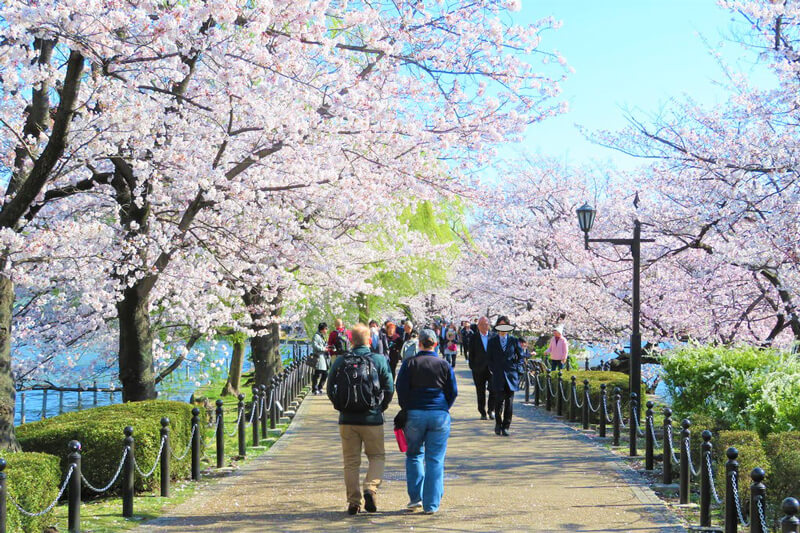
Ueno Park is one of the most beautiful and vibrant parks in Tokyo, Japan! This iconic green space is a must-visit destination for anyone looking to experience the best of the city’s natural and cultural offerings. It is a sprawling 133-acre oasis in the heart of Tokyo, featuring picturesque ponds, lush gardens, and historical landmarks that draw tourists and locals alike.
One of the park’s most famous attractions is the Ueno Zoo, which is home to more than 400 different species of animals, including giant pandas, elephants, and tigers. Visitors can spend hours exploring the zoo’s various exhibits and watching the animals up close. If you wanna know more about this zoo, keep on reading!
Another highlight of Ueno Park is the Shinobazu Pond, a serene body of water surrounded by picturesque lotus plants and beautiful cherry blossom trees. Visitors can take a boat ride on the pond, feed the ducks, or simply relax and take in the beautiful scenery.
For history buffs, Ueno Park is a treasure trove of cultural landmarks and museums. The park is home to several world-class institutions, including the National Museum of Western Art, the National Museum of Nature and Science, and the Tokyo Metropolitan Art Museum. These museums offer visitors an opportunity to learn about Japan’s rich cultural heritage and explore a wide range of exhibits and displays.
Finally, no visit to Ueno Park would be complete without experiencing the park’s stunning cherry blossom season. During the spring months, the park’s cherry blossom trees burst into bloom, creating a spectacular pink and white canopy that draws visitors from all over the world.
Location: Uenokoen, Taito City, Tokyo 110-0007, Japan
Opening Hours: Everyday | 5:00 am – 11:00 pm
10. Ueno Zoo
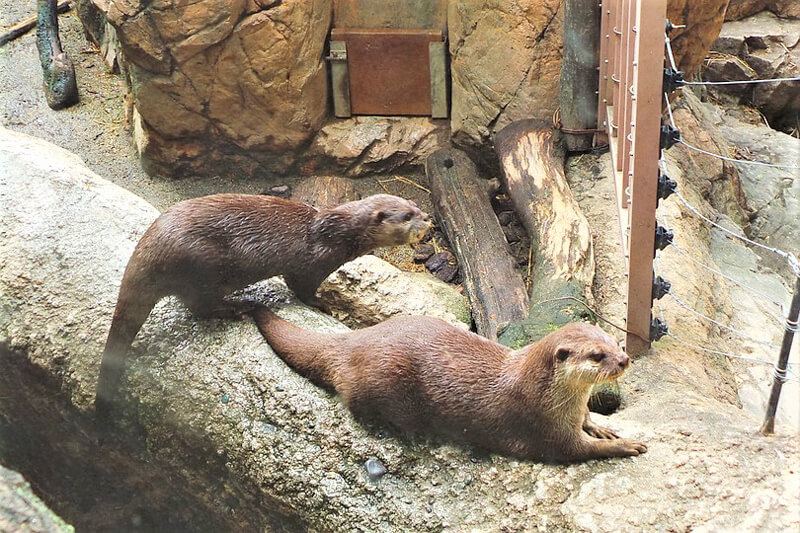
Ueno Zoo is an incredible place to spend a day surrounded by the diverse and exotic animals. One of the most popular attractions in Ueno Zoo is the giant panda exhibit. This zoo is home to several pandas, including a few cubs, and it’s always a delight to see them play and eat bamboo.
There are also several other animals that are native to Japan, such as the Japanese macaque, also known as the snow monkey, and the Japanese serow, which is a type of goat-antelope.
Another highlight of the Ueno Zoo is the petting zoo, which is a great place for families with young children. Here, kids can interact with various farm animals like goats, sheep, rabbits, and even donkeys. It’s a great way for children to learn about these animals up close and personal.
The Ueno Zoo is also committed to conservation and education. There are informative signs and exhibits throughout the zoo that teach visitors about the animals and the importance of conservation efforts. There are also many conservation programs that the zoo supports to protect endangered species.
Location: 9-83 Uenokoen, Taito City, Tokyo 110-8711, Japan
Opening Hours: Tuesday – Sunday | 9:30 am – 5:00 pm
Closed on Monday
Entrance fee:
Adults (16-64): 600 yen
Seniors (65+): 300 yen
Students (13-15): 200 yen
Children (0-12): Free
11. Kabuki-za Theatre
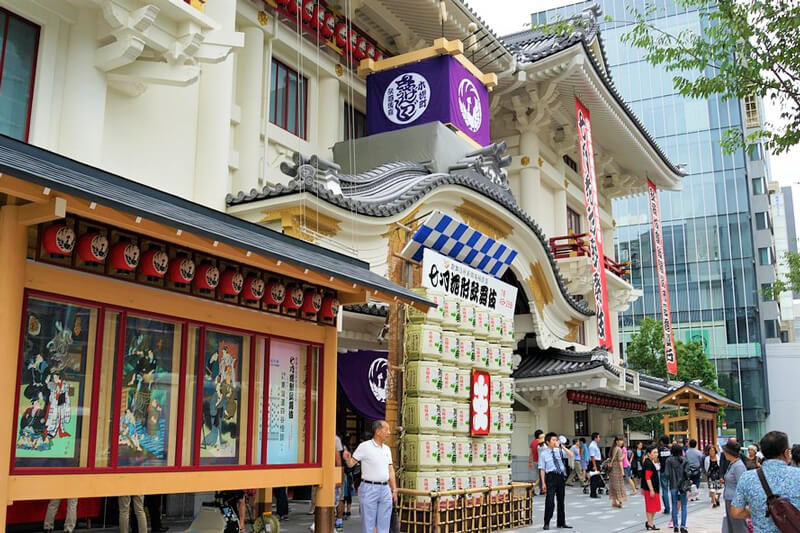
Kabuki-za Theatre is a type of Japanese theatre that has been around for over 400 years. It’s known for its elaborate makeup, costumes, and exaggerated movements. The theatre hosts Kabuki performances, which is a classical form of Japanese dance-drama. Kabuki-za Theatre is the premier venue for Kabuki performances and has been the heart of the Kabuki world since it opened in 1889.
The theatre is located in the bustling Ginza district of Tokyo and has a grand entrance that’s hard to miss. Inside, the theatre is adorned with ornate decorations, reflecting the traditional Japanese architecture. The auditorium has a capacity of over 1800 seats, and the seating is arranged in a unique fashion, with the uppermost seating at the back being the most expensive, while the front seating is the cheapest.
Kabuki-za Theatre presents a wide variety of performances throughout the year, with different productions each month. The plays are typically several hours long, with intricate storylines and themes that reflect Japanese culture and history.
The performances are in Japanese, but the theatre provides translation devices for non-Japanese speakers.If you want to witness one of Japan’s great performing arts that reflects the tastes and fashions of the townspeople, you must visit the thatre and enjoy a show at least for once.
Location: 4 Chome-12-15 Ginza, Chuo City, Tokyo 104-0061, Japan
12. Mount Takao
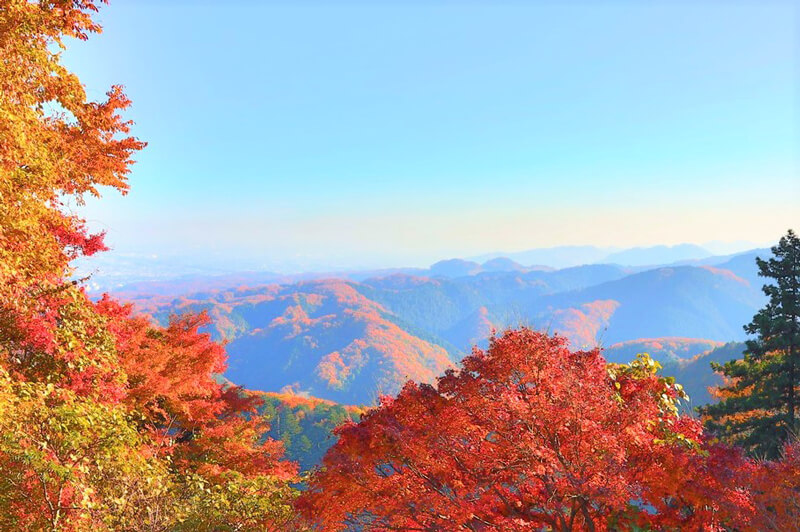
Mount Takao is a beautiful mountain located in the western part of Tokyo, Japan. It’s a popular hiking destination and a great escape from the busy city life. The mountain is easily accessible by train, and there are several hiking trails to choose from, each offering a different level of difficulty.
For those who are not up for a hike, there’s a cable car and a chairlift that take visitors to the halfway point, making the trek more manageable.
One of the unique features of Mount Takao is the diverse flora and fauna. There are over 1,200 species of plants, and the mountain is home to many wild animals like monkeys, deer, and snakes. There are also several shrines and temples located along the trails, adding to the mountain’s cultural significance.
The hiking trails are well maintained and have informative signs along the way, making it easy to navigate. The trails are also surrounded by lush forests, providing a peaceful and calming environment for hikers.
The summit of Mount Takao offers breathtaking views of Tokyo and the surrounding mountains. On a clear day, you can even see Mount Fuji in the distance. The summit also has several shops and restaurants, making it a great spot to rest and refuel before heading back down the mountain.
If you’re a nature lover or just looking for a break from the city, Mount Takao is an excellent destination to add to your itinerary. It’s a unique experience to hike up a mountain in the middle of a city, and the stunning views and serene atmosphere make it an unforgettable experience.
13. Shopping at Ginza
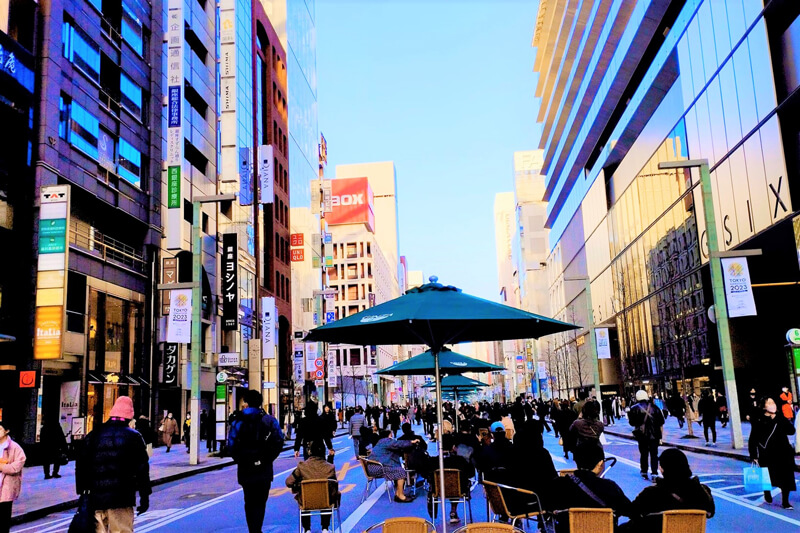
If you’re a tourist in Tokyo, Japan, you cannot miss the opportunity to go shopping in Ginza . Ginza is known for its high-end shopping and is often referred to as the “Champs-Élysées of Tokyo.” As a shopper who has experienced this exciting shopping district firsthand, I can attest to the unique shopping experience it offers.
First, let’s talk about the types of stores you’ll find in Ginza. Ginza has an impressive selection of luxury brand stores like Chanel, Gucci, and Louis Vuitton, to name a few. These high-end stores offer an unparalleled shopping experience with their extravagant window displays and impeccable customer service.
Apart from the luxury stores, there are also department stores like Mitsukoshi and Matsuya, which are worth visiting for their impressive selection of goods ranging from fashion to home appliances. Mitsukoshi, in particular, is an iconic department store in Japan and has been operating for over 300 years.
In addition to the brand stores and department stores, Ginza is also home to numerous specialty stores, selling items like traditional Japanese crafts, electronics, and cosmetics. The district also boasts some of the best restaurants in Tokyo, so be sure to take a break and enjoy a meal or a snack while shopping.
One of the most unique aspects of shopping in Ginza is the “shussai” or “tax-free” shopping. Many stores in Ginza offer this service, allowing tourists to claim back the consumption tax on their purchases. To qualify for tax-free shopping, you’ll need to present your passport, so make sure to have it with you.
If you’re planning on shopping in Ginza, it’s best to allocate a good amount of time to explore the area thoroughly. It’s a shopping experience like no other, and you’ll be spoiled for choice with the vast selection of stores and items available.
No doubt, Ginza is a shopper’s paradise, and as a tourist, it’s a unique experience that you won’t find anywhere else. Whether you’re looking for luxury brands, specialty items, or traditional Japanese crafts, you’ll find it all in Ginza. So, don’t miss the opportunity to visit this vibrant shopping district on your next trip to Tokyo.
14. Odaiba Statue of Liberty
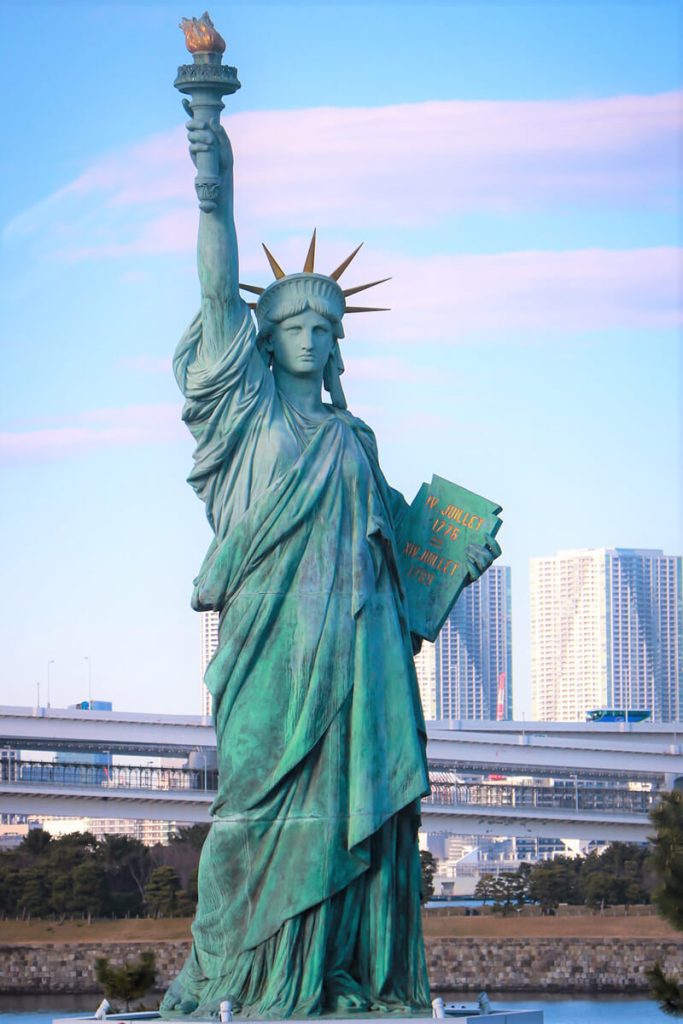
The Odaiba Statue of Liberty is a replica of the famous Statue of Liberty in New York City, located on the artificial island of Odaiba in Tokyo Bay. The statue is one of the most iconic landmarks of Odaiba and has become a popular tourist attraction for visitors to the area.
The Odaiba Statue of Liberty is an exact replica of the original statue, standing at a height of approximately 12 meters (39 feet) tall, including the pedestal. The statue was originally installed in Odaiba in 1998 as part of a French Japanese friendship celebration and has since become a permanent fixture on the island.
The statue is located on a small artificial island in Tokyo Bay, which can be accessed via a pedestrian bridge from Odaiba’s Aqua City shopping mall. Visitors can walk around the base of the statue and take photos with the iconic symbol of freedom and democracy.
In addition to the statue itself, the area surrounding the Odaiba Statue of Liberty offers stunning views of Tokyo Bay and the Rainbow Bridge. Visitors can also take a stroll along the waterfront and enjoy the various attractions in the Odaiba area, such as the giant Gundam robot statue, the Oedo Onsen Monogatari hot spring’s theme park, and the Miraikan science museum.
This iconic landmark offers visitors a chance to see a famous symbol of freedom and democracy in a new and unexpected setting.
Location: 1 Chome-4-2 Daiba, Minato City, Tokyo 135-0091, Japan
15. National Art Center Tokyo

The National Art Center Tokyo , also known as NACT, is a museum and art gallery located in the Roppongi district of Tokyo, Japan. The center was opened in 2007 and is one of the largest art centers in Japan. It was designed by the renowned architect, Kisho Kurokawa, and features a striking, glass and steel façade. With its impressive exhibitions, stunning architecture, and excellent facilities, it is a true gem of the city’s art scene.
NACT is a unique museum in that it does not have a permanent collection of its own. Instead, it serves as a venue for temporary exhibitions, showcasing a variety of art from both Japan and around the world. The center has hosted a wide range of exhibitions, including contemporary art, traditional Japanese art, design, fashion, photography, and architecture.
The building itself is a work of art, with spacious galleries and a large central atrium that lets in natural light. The gallery spaces are flexible, allowing for a variety of exhibition layouts, and are equipped with state-of-the-art lighting and temperature control systems to protect the artwork on display.
In addition to the exhibition spaces, NACT has a number of facilities for visitors, including a museum shop, a café, and a restaurant. The museum shop offers a range of art-related merchandise, including books, prints, and souvenirs. The café and restaurant serve a selection of food and drinks, with a focus on seasonal and locally sourced ingredients.
Location: 7 Chome-22-2 Roppongi, Minato City, Tokyo 106-8558, Japan
Opening Hours: Wednesday – Monday | 10:00 am – 6:00 pm Closed on Tuesday
Places to visit in Tokyo anime
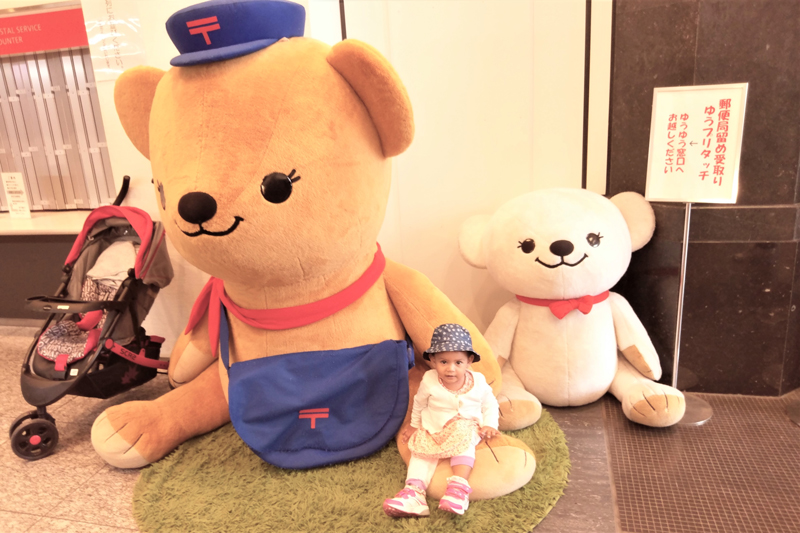
Tokyo is not just the capital of Japan, but it is the most thriving city in the world that uses futuristic technology while staying true to its roots. Provided that Tokyo has come up with some really unique projects that are original and must-visit locations! Here are some of the unique places to see in Tokyo, especially for anime lovers and to have a great time in Tokyo.
Visit a Themed Cafe in Tokyo
One of the best things to do in Tokyo is to visit its uniquely themed cafes. The theme varies from cats to robots, and that’s why I have prepared a list of 6 unique themed cafes in Tokyo that have amazing vibes, a cosy atmosphere and great coffee!
16. Maidreamin Akihabara Honten

One of the largest maid cafe chains in Japan, Maidreamin is one of the cutest places in Tokyo where you get a peek at the cosplay scene in Japan. If you are wondering why, you should visit this place in Tokyo, then let me tell you about the way things work here.
At this theme cafe, you are welcomed by maids and get attentive service from them. These waitresses are, of course, dressed in cute maid outfits. You can even take pictures with the cosplaying waitresses. Maidreamin is also known to collaborate for promotions of video games like Shibuya design firm Teamlab and Goddess Masters.
The overall atmosphere of this place is energetic and vibrant, with incredible performances by the maids. So, put Maidreamin cafe on your list of places to see in Tokyo, Japan and have a unique experience at this cosplay cafe!
Timings : 11:30 to 11 pm on weekdays and 10:30 to 11 pm on weekends.
Address : 3 Chome-16-17 Sotokanda, Chiyoda, Tokyo
17. Eorzea Cafe
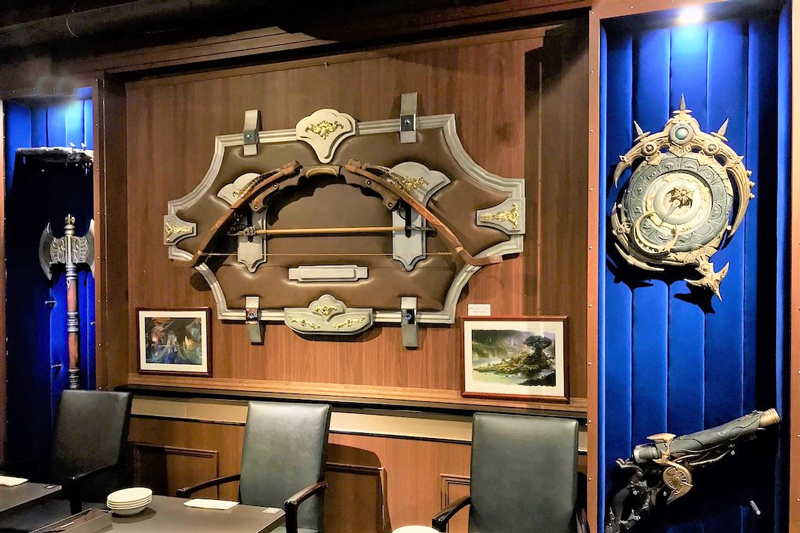
If you are a fan of Final Fantasy video games, then visiting Eorzea cafe should be among the top things to do in Tokyo. Located in Akihabara, this final fantasy-themed cafe makes you feel like you have entered a magical land.
As you enter the cafe, you hand over your ticket to the staff member at the counter, who will provide you with a menu that is available in both Japanese and English. Your ticket will buy you two hours here, along with free drinks.
The decor includes finely crafted weapons with ornate details. Even their menu is Final Fantasy-themed. Also, don’t forget to buy Final Fantasy merchandise here!
Timings: The timings vary on weekdays and weekends. On Saturdays, Sundays, and holidays, there are five sessions between 10:00-12:00, 12:30-14:30, 15:00-17:00, 17:30-19:30, 20: 00-22: 00. On Weekdays, there are only four sessions between 12:30-14:30, 15:00-17:00, 17:30-19:30, 20: 00-22: 00.
Address: Pasela Resorts AKIBA Multi Entertainment 2F, 1-1-10 Sotokanda, Chiyoda-ku, Tokyo
18. Vampire Cafe

A unique place to see in Tokyo is the cafe located in the Ginza district of Tokyo, Vampire Cafe . As the name suggests, it is a vampire-themed cafe that serves Italian cuisine amid spooky decor. So, if you are a fan of spooky and mysterious places, this place is a no-brainer for you.
The food they serve is Halloween-themed, along with unique cocktails. The entire place is decorated with red curtains, candlelight, chandeliers, and even a coffin! Don’t miss out, and make sure to take a break from a chaotic shopping spree in the Ginza district to have delicious food and drinks.
Timings: From Tuesday to Sunday, timings are 17:00-23:00. It is closed on Monday.
Address: 6-7-6 Ginza, Chuo-ku, Tokyo Rape Building 7F
19. Alice in Fantasy Restaurant
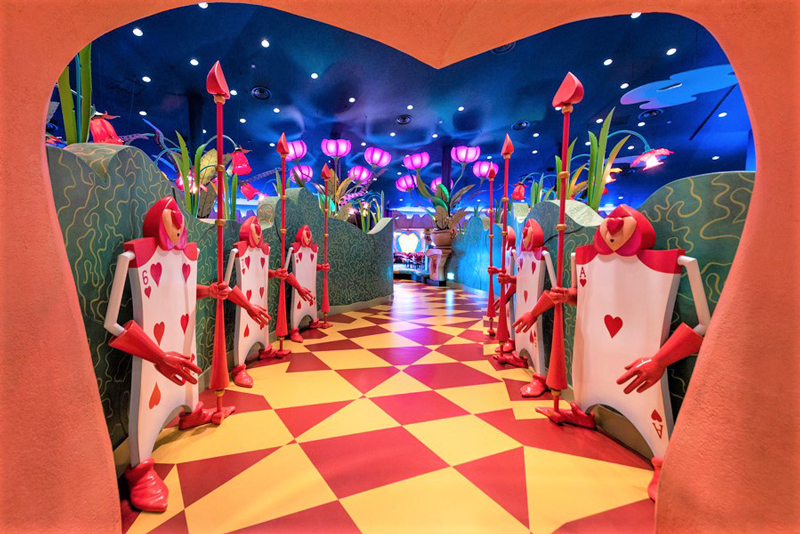
Are you a lover of Alice in Wonderland like me? Because when I heard about an Alice in Wonderland Cafe in Tokyo, I knew I had to visit. When you enter this cafe, you are provided with an Alice or a rabbit-themed hairband to put on when you enter.
The interior perfectly depicts Wonderland with details like the large clock table in the Main Hall’s “Never-Ending Tea Party”. Their menu is also themed, with their ‘cheese fondue’ being the most popular dish. Everyone, children or adults, is bound to have the time of their life at this cafe!
Even if you are not familiar with the book, this cafe is still a great place to visit in Tokyo and have a good time with loved ones at this cute place in Tokyo.
Timings: the timings for the lunch session are 11:30-14:30, and for the dinner session, the timings are 17:00-22:00.
Address: 1-6-2 T-wing Building B2F, Kabukicho, Shinjuku-ku, Tokyo
20. Cat Cafe Nyankoto
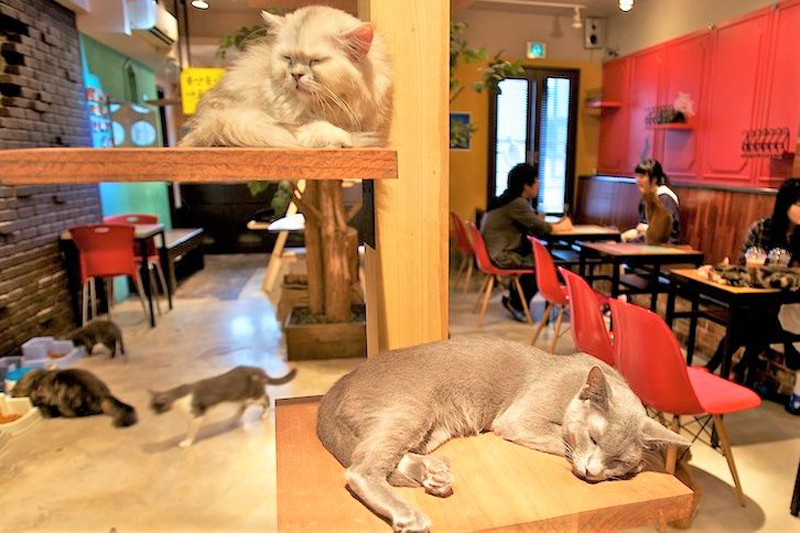
The last one on this list and one of my personal favourite things to do in Tokyo are to visit a cat cafe . If you are a cat lover like me, you must come and have a big cup of coffee with these cute little furry Nekos!
Cat Cafe Nyankoto is a uniquely themed cafe and one of the cutest places in Tokyo that offers you a clean and fresh sitting area. The sitting arrangement is on the floor on fuzzy blankets where cats come to sit on your lap to get their scratches and play with you. These cats are very friendly, and sometimes they even bring out the kittens!
So don’t forget to visit this cat cafe when you are in Tokyo!
Timings: The timings on Weekdays are 12:00~21:00, and on weekends and holidays, it’s 11:00~21:00.
Address: 2 Chome-14-6 Takadanobaba, Shinjuku City, Tokyo
21. Owl Village Cafe Harajuku
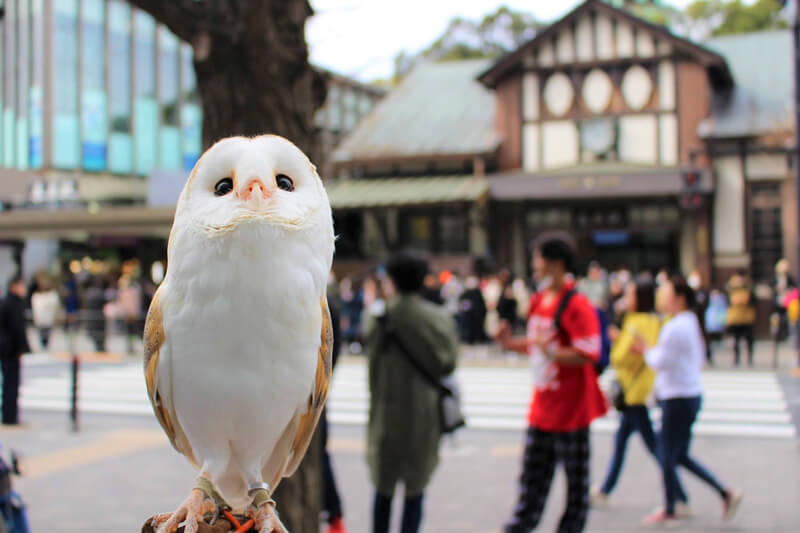
Owl Village Cafe Harajuku is a charming little cafe located in the trendy Harajuku district of Tokyo, and it’s one of the most popular spots for animal lovers and visitors to the city.
As the name suggests, the cafe is all about owls, and you can see them perched on tree branches throughout the cozy interior. The decor is rustic and earthy, with wooden furniture and stone walls, which adds to the serene and natural ambiance of the space.
But the main attraction of the Owl Village Cafe is, of course, the owls themselves. You can interact with them in various ways, such as holding them on your arm, petting them gently, and taking photos with them. The staff is friendly and knowledgeable about the birds, and they’ll gladly answer any questions you might have.
In addition to the owls, the cafe serves a variety of light refreshments and drinks, such as coffee, tea, and smoothies. The menu also includes a selection of sandwiches and pastries, and the food is both delicious and affordable.
But the real highlight is, of course, the opportunity to interact with the owls while enjoying your refreshments. The combination of serene atmosphere, friendly staff, and beautiful owls makes this cafe one of the most delightful places in Harajuku, and it’s an experience you won’t soon forget.
Location: Japan, 〒150-0001 Tokyo, Shibuya City, Jingumae, 1 Chome−21−15 原宿ATMビル4F
Opening Hours: Everyday _ 12:00 pm – 6:00 pm
Go to the Otaku district- Akihabara
Another popular attraction in Tokyo is the Otaku district which is every anime lover’s heaven. If you are a fan of Naruto, Pokemon, and Bleach like me, Akihabara is the best place to visit in Tokyo for Anime fans .
Akihabara is the popular otaku district of Tokyo, also popularly known as Akiba. Akihabara is the central hub of all of Japan’s Otaku/ anime lovers. This place is full of shops that are devoted to anime merchandise, cosplay essentials and mangas, along with electronic shops.
So, here is a list of things to do in Otaku district, Tokyo.
22. Visit the Ghibli Museum
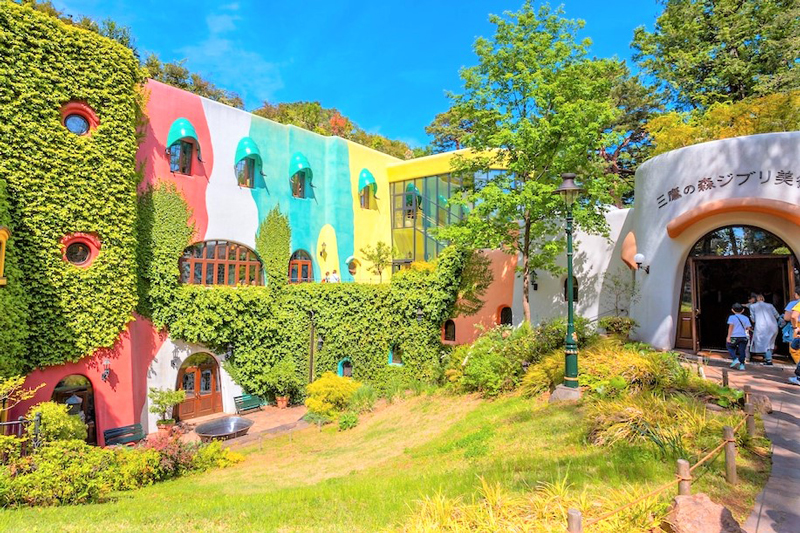
One of the other great places to see in Tokyo for anime lovers is the Ghibli Museum . Hayao Miyazaki has created this incredible Ghibli Museum that is dedicated to the studio that provided all of us with our favourite classic anime like ‘Spirited Away’ and ‘My Neighbour Totoro’.
You will find permanent exhibits here which show the entire journey of the creation of these anime as well as changing exhibits on different topics. There is a cafe called The Straw Hat Museum café here where you can grab a nice cup of coffee afterwards. If you enjoy visiting Museums, especially in other countries, this is a must-visit museum for you!
Timings: 10am-5.30pm. It is closed on Tuesdays.
Address: 1-1-83 Shimorenjaku, Mitaka-shi, Tokyo
23. Visit the Otaku attractions
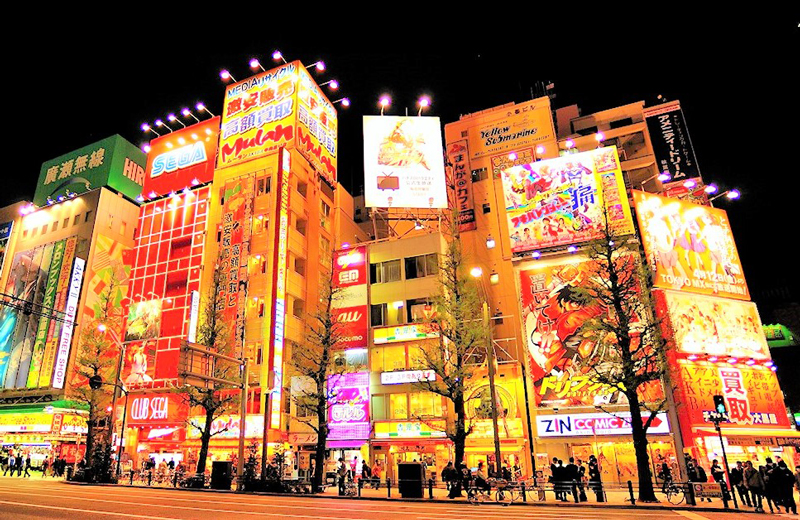
There are many stores in Akihabara that are dedicated to Otaku, and here are the top 5 that I consider the best places to visit in Tokyo for anime fans .
- Don Quijote : it is a discount store chain where you can find everything from toys and electronic groceries to high-end fashion goods.
- Mandarake: It is a second-hand store where you can find the rare manga, figurines, CDs, toys, dolls, posters, and other manga-related goods.
- Radio Kaikan: It is one the most prominent landmarks of Akihabara that has 30 stores which sell anime and electronic goods.
- Super Potato: At this store, you can find practically every kind of video game and video game console, along with used game cartridges, discs and other game accessories.
- Gamers: this store sells a wide range of video games, character goods, CDs, movies, software and stationery that are related to anime and manga.
24. Stay at the Manga Art Hotel

If you love reading manga, you have to come to the Manga Art hotel , which is essentially a capsule hotel that has a manga library where you can sleep in. It contains around 5000 volumes of manga, out of which 20 per cent are in English. You can even purchase manga. The entire place has a modern and sleek interior design with a minimalist approach to its decor. So, add this Hotel to your list of places to see in Japan.
Address: Kanda Terrace 5F, Kanda Nishikicho, Chiyoda City, Tokyo
Something for you to keep in mind: On Sundays, Akihabara’s main street Chuo Dori is officially closed off to all car traffic from 1 pm to 6 pm and 1 pm to 5 pm between October and March.
25. Visit the Kappabashi Street
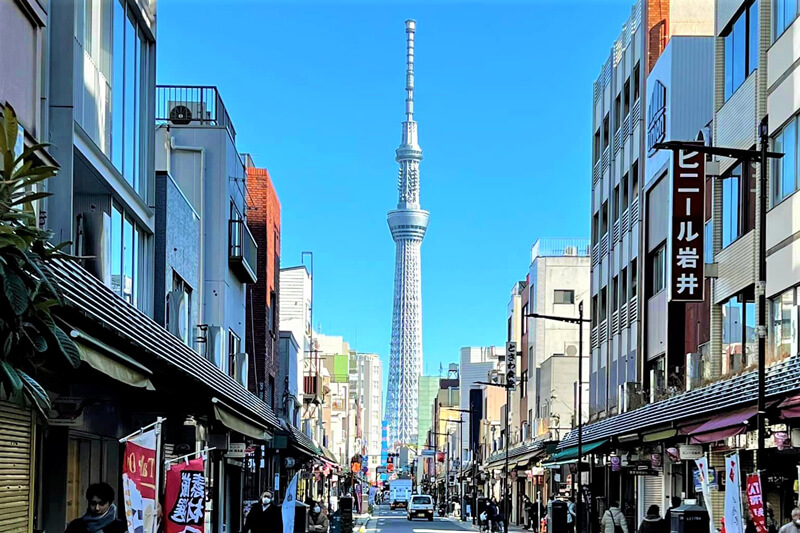
Kappabashi Street is a unique and fascinating destination that any traveler interested in Japanese culture should not miss. Kappabashi Street is a long shopping street that is famous for its selection of kitchenware, restaurant supplies, and plastic food models.
One of the things that struck me about Kappabashi Street was the incredible variety of products available. The street is lined with shops selling everything from traditional Japanese pottery and chopsticks to high-tech kitchen equipment and knives. You might need to spend hours wandering up and down the street, admiring the different products and trying to decide what to buy.
One of the most popular items on Kappabashi Street is the plastic food models. These incredibly realistic models are used by many restaurants in Japan to display their menu items. I was amazed at the level of detail and artistry that goes into creating these models.
Many shops on Kappabashi Street offer the opportunity to make your own plastic food model, which is a fun and unique souvenir to take home. Another highlight of Kappabashi Street is the traditional Japanese knife shops.
These shops sell a variety of knives, including the famous Japanese chef’s knives, which are known for their sharpness and precision. Many of the shops also offer knife sharpening services and will help you choose the right knife for your needs.
In addition to the shops, Kappabashi Street is also home to a number of restaurants and food stalls. The street is famous for its selection of street food, including takoyaki (octopus balls), taiyaki (fish-shaped cakes filled with sweet red bean paste), and other snacks. Whether you are a professional chef or just interested in Japanese culture, Kappabashi Street is a destination that should not be missed.
Location: 3 Chome-18-2 Matsugaya, Taito City, Tokyo 110-0036, Japan
26. Tokyo Ramen Street
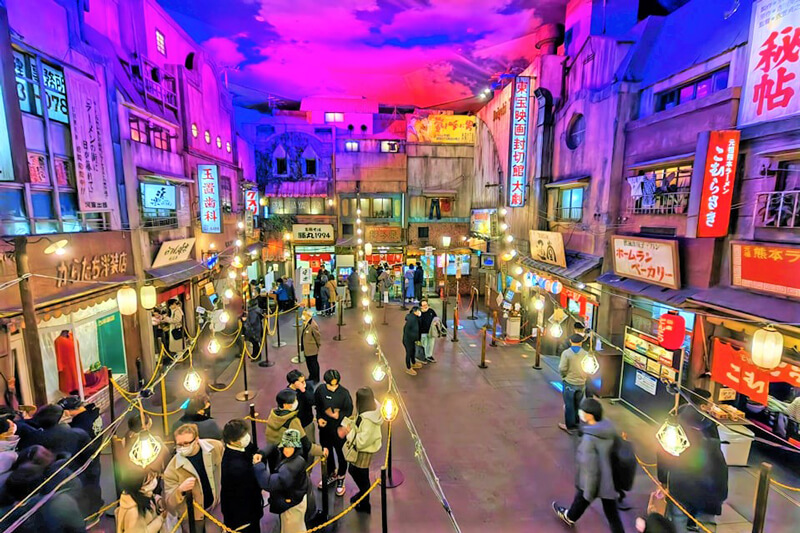
Tokyo Ramen Street is a foodie destination located in the basement of Tokyo Station, the bustling transportation hub in the heart of the city. As the name suggests, this street is dedicated entirely to one of Japan’s most beloved dishes – ramen.
When you step into Tokyo Ramen Street, you’re greeted with the savory aromas of simmering broth and fragrant spices. The street is lined with eight different ramen shops, each offering its own unique take on the classic dish. From hearty tonkotsu ramen to spicy miso ramen and delicate shoyu ramen, there’s a flavor and style to suit every taste.
The shops at Tokyo Ramen Street are all carefully curated, selected based on their reputations for excellence and their dedication to authentic ramen-making techniques. The chefs use only the freshest ingredients and take great care in preparing each bowl of ramen to perfection.
Despite the popularity of Tokyo Ramen Street, the atmosphere is surprisingly calm and relaxed. The interior is clean and modern, with ample seating for diners to enjoy their meals. And despite being located in a busy train station, the noise and hustle of the outside world seem to fade away as you slurp your noodles and savor the rich flavors of the broth.
Whether you’re a ramen aficionado or a first-time visitor, you’re sure to be impressed by the quality and variety of the ramen on offer at this unique and flavorful street.
Location: Japan, 〒100-0005 Tokyo, Chiyoda City, Marunouchi, 1 Chome−9−1 東京駅一番街 B1
Unique Experiences in Tokyo
There are some things about Japanese culture that are very intriguing. Their beliefs and myths are some of the really beautiful things that make you fall in love with Japan.
Two of my favourite myths and beliefs of Japan include the Japanese belief of the ‘red thread of fate according to which the fate of lovers is bound by a red string that is tied to the male’s thumb and the female’s little finger.
My other favourite thing about Japanese culture is their tradition of Japanese tea Ceremonies.
27. Japanese Tea Ceremony
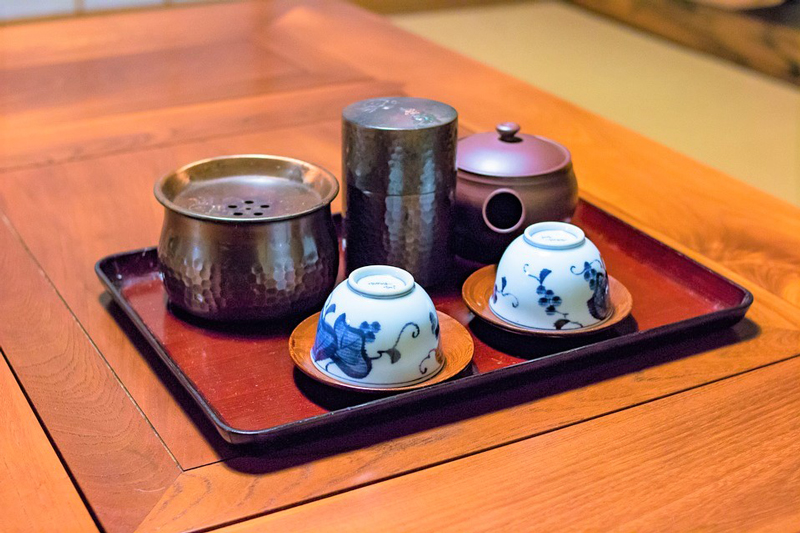
Among other unique places to visit in Tokyo is visiting Tea houses where they perform Tea ceremonies . One of the most unique experiences that you should have in Tokyo, or really any other place in Japan, is attending a Japanese Tea ceremony. The Japanese Tea ceremony is a proper way of preparing and having green tea.
Let me explain why I admire this tea ceremony so much. Japanese Tea Ceremony is done in complete silence; nobody talks on the tatami floor in a traditional tearoom. The entire atmosphere is calm, peaceful, and reflective. You get to experience Japanese hospitality and tradition.
What I really love about this tea ceremony is the motive behind it. The main purpose of the entire ceremony is to spend a few moments in a meditative atmosphere, relaxing away from the fast-paced life, to feel grounded and in touch with yourself, something we don’t really get in busy lives.
I definitely recommend that you add the experience of a Japanese Tea Ceremony to your list of unique things to do in Tokyo, Japan . Here are few places to go for Tea Ceremonies are:
- Happo-En: it is a traditional tea house located in Minato City.
- Maikoya: It is located in the central Shinjuku area, where you get to wear a kimono for a tea ceremony.
- Asakusa Jidaiya: This place provides various traditional Japanese experiences along with tea ceremonies.
- Toko-An : it is located in the Imperial Hotel, Hibiya, where you can enjoy a traditional tea ceremony.
Another unique experience in Japan has to be Sumo Wrestling.
28. Ryogoku Kokugikan National Sumo Arena
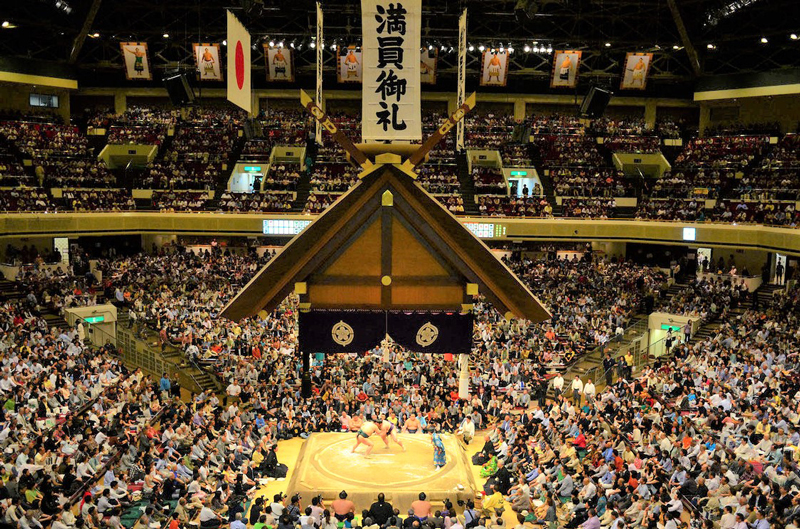
Another unique thing to see in Tokyo, Japan is a Sumo wrestling match. Sumo wrestling is a Japanese sport of heavyweight wrestling in which a Sumo Wrestler has to force his opponent outside a marked circle or make him touch the ground.
So, when you come to visit Tokyo, you have to come and see at least one Smoo Wrestling match at Ryogoku Kokugikan because Sumo Wrestling is another great way to get a unique insight into Japanese culture.
The sumo wrestling matches take place only in January, May and September. Try to make your plan to visit Tokyo during these months because most travelers miss one of the most unique experiences of Tokyo due to uncoordinated timings.
Address: 1 Chome-3-28 Yokoami, Sumida City, Tokyo
29. Japan Media Arts Festival
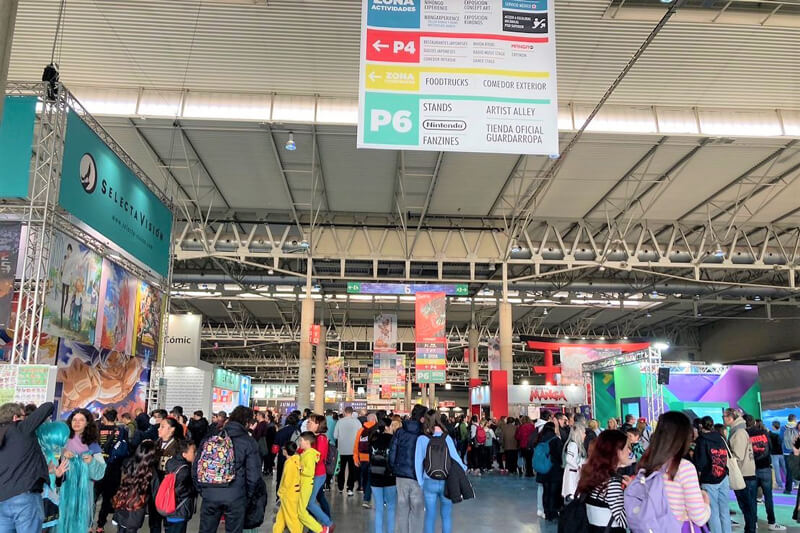
The Japan Media Arts Festiva l is an annual event that celebrates the best of contemporary art and media in Japan. The festival, which started in 1997, is held every February in Tokyo, and it brings together artists, designers, and technologists from around the world to showcase their innovative and thought-provoking work.
This year, the festival will most probably take place during mid to late-September. The festival is divided into four categories: art, entertainment, animation, and manga. Each category features a range of works that showcase the latest advancements in digital media, from interactive installations to virtual reality experiences to video games and more.
One of the key features of the festival is its emphasis on interdisciplinary collaboration. Many of the works on display blend together elements of art, design, and technology to create something entirely new and innovative.
The festival also includes a range of workshops, seminars, and talks, which offer visitors the opportunity to learn more about the creative process behind some of the works on display. Visitors can also take part in interactive exhibits and try out some of the latest digital media technologies for themselves.
The Japan Media Arts Festival is an important event in the world of contemporary art and media, and it provides a platform for emerging artists and designers to showcase their work to a wider audience.
The festival celebrates the diversity and richness of contemporary culture in Japan and around the world, and it provides a unique opportunity to experience some of the most cutting-edge and innovative works of art and media in the world today.
30. Golden Week Japan
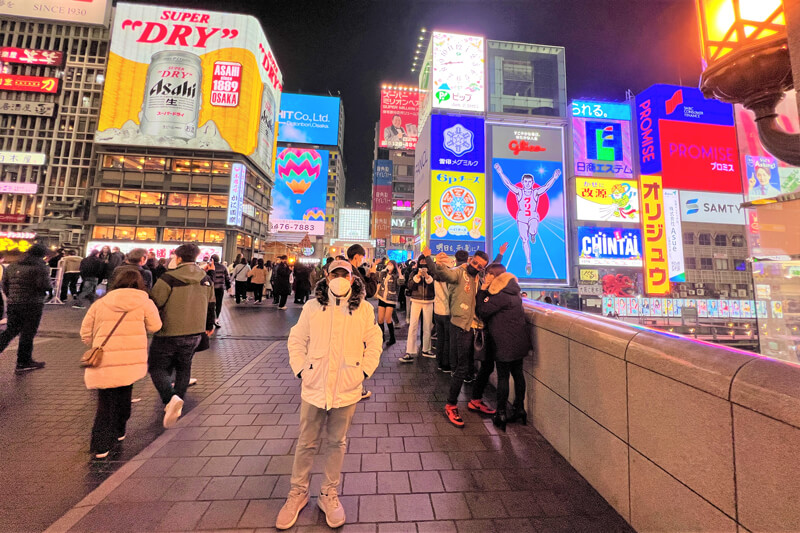
Golden Week is a week-long holiday period in Japan, which is observed annually from April 29th to May 5th. This week is one of the busiest times of the year in Japan, with many people taking time off work or school to travel, visit family, or simply relax.
Golden Week is a time when many Japanese people take advantage of the holidays to travel domestically or internationally. Popular destinations within Japan include Tokyo , Kyoto , and Osaka , while international destinations such as Hawaii, Thailand, and Guam are also popular choices.
The period of Golden Week is also a time when many businesses and shops in Japan offer special sales and promotions. This has become a significant event for retailers and consumers alike, as many people take the opportunity to shop for souvenirs, gifts, and other items during the holiday.
Many cultural events and festivals also take place during Golden Week. For example, the Kanda Matsuri Festival, one of Tokyo’s three major festivals, takes place in early May, and features a parade of elaborately decorated portable shrines through the streets of Tokyo.
Other events include the Takayama Festival in central Japan, the Aoi Matsuri Festival in Kyoto, and the Hakata Dontaku Festival in Fukuoka. If you want a unique opportunity to experience the country’s culture and traditions, you should visit Tokyo during the Golden Week.
31. Learn Taiko Drumming at Studio Hougaku Academy
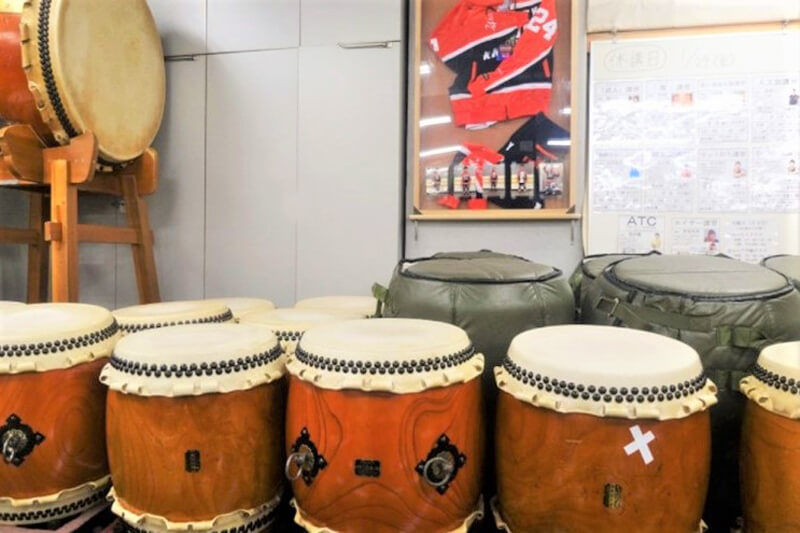
Learning Taiko drumming at Studio Hougaku Academy can be a unique and fulfilling experience for tourists visiting Japan. Taiko is a traditional form of Japanese drumming that involves playing large drums with a variety of sticks and techniques. It is a physically demanding art form that requires both strength and precision.
The Studio Hougaku Academy is a well-regarded school for Taiko drumming located in Tokyo. They offer classes for both beginners and advanced students, and their instructors are experienced and highly skilled. As a tourist, you can sign up for a class and learn the basics of Taiko drumming.
The class usually starts with a brief introduction to the history of Taiko and its cultural significance in Japan. The instructor will then guide you through warm-up exercises to prepare your body for the physical demands of playing the drums. You will learn the proper stance, grip, and posture for holding the sticks and striking the drums.
After the warm-up, the instructor will teach you a few basic rhythms and techniques. You will practice playing these rhythms on your own and with the other students in the class. The instructor will give you feedback and tips to help you improve your technique.
The class will typically last for about an hour or two, depending on the level of the class and the number of students. At the end of the class, you will have the opportunity to perform a short piece with the other students.
This can be a thrilling and memorable experience, as you get to showcase what you have learned and feel the energy of the drums. Even if you have never played drums before, you can still enjoy the experience and learn something new.
32. Visit the Cat Shrine in Setagaya

If you’re a cat lover visiting Tokyo, a trip to the Cat Shrine in Setagaya is a must-see attraction. Known as Gotokuji Temple, this shrine is dedicated to cats and is considered the birthplace of the “maneki-neko” or the “beckoning cat” figurine, which is a symbol of good luck in Japan.
Gotokuji Temple is located in the Setagaya ward of Tokyo and is easily accessible by train. Upon arrival, you will be greeted by a large red torii gate and a stone pathway that leads up to the main shrine. As you walk along the path, you will see hundreds of cat figurines, both big and small, scattered throughout the grounds.
These figurines have been left by visitors as offerings to the cats and are believed to bring good luck and fortune. Once you reach the main shrine, you will see a large statue of a cat with its paw raised in the air, which is believed to be the original maneki-neko.
The statue is surrounded by hundreds of smaller cat figurines and is said to have the power to bring good luck and fortune to those who visit. You can explore the shrine grounds, which include a small garden and a tea house. The tea house is a great place to relax and enjoy a traditional Japanese tea and sweets while admiring the beautiful scenery.
If you’re feeling particularly lucky, you can purchase a maneki-neko figurine from one of the vendors near the shrine. These figurines come in a variety of sizes and colors and are believed to bring good luck and fortune to their owners.
Location: 2 Chome-24-7 Gotokuji, Setagaya City, Tokyo 154-0021, Japan
Opening Hours: Everyday | 6:00 am – 5:00 pm
Entrance fee: Free
33. Enjoy a goKart tour in the streets
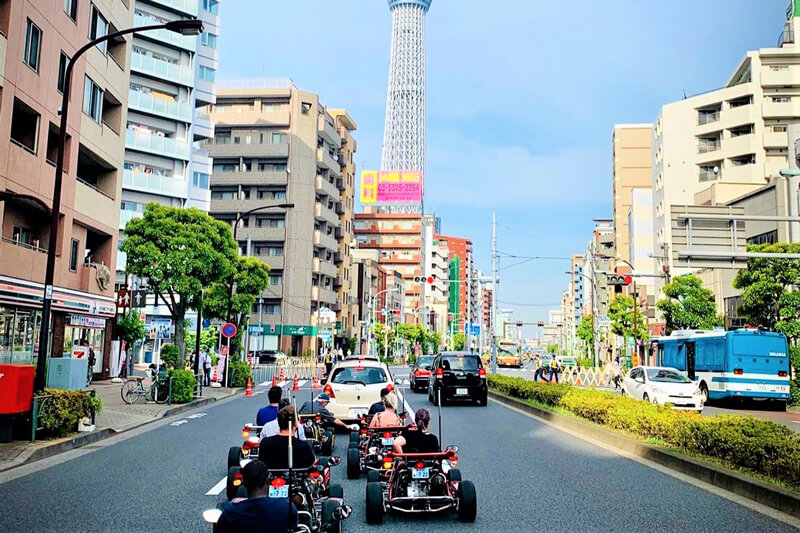
If you’re looking for a unique and exciting way to explore the streets of Tokyo, a go-kart tour may be just the thing for you. Go-kart tours have become increasingly popular in recent years, allowing visitors to drive a go-kart through the streets of Tokyo while wearing costumes, taking in the sights, and experiencing the city in a whole new way.
One of the most popular go-kart tour companies in Tokyo is MariCAR, which offers a variety of tour options ranging from one-hour to three-hour tours. Before the tour, you will be outfitted with a go-kart and a costume of your choice, ranging from superhero costumes to traditional Japanese costumes.
Once you are suited up, the tour will start with a brief safety orientation, where you will learn the rules of the road and how to operate the go-kart. Then, you will hit the streets, following your guide through some of Tokyo’s most famous neighborhoods and landmarks, such as Shibuya, Akihabara, and Harajuku.
One of the most exciting aspects of the go-kart tour is the feeling of freedom and adventure as you zip through the streets of Tokyo. The go-karts are surprisingly fast, and the wind rushing through your hair as you cruise past Tokyo Tower and other famous landmarks is an experience you won’t forget.
In addition to the thrills of the ride itself, the go-kart tour also provides a unique perspective on Tokyo. You’ll get to see the city from a different point of view, experiencing the hustle and bustle of Tokyo’s streets up close and personal.
34. Asakusa Samba Festival
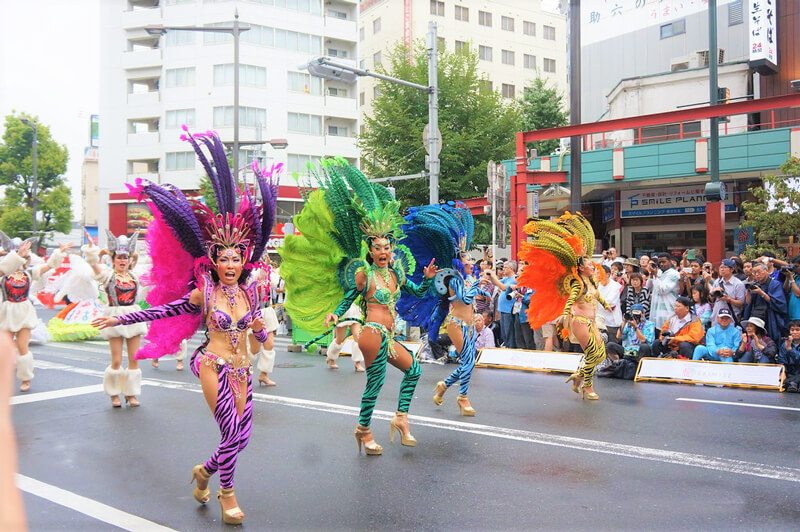
Asakusa Samba Festival is an annual event held in the Asakusa district of Tokyo, usually on the last Saturday of August. The festival is a celebration of Latin American culture and is the largest samba festival in Asia, attracting over 500,000 visitors every year.
During the festival, the streets of Asakusa are transformed into a colorful and lively party, with dozens of samba groups from all over Japan and Latin America performing in elaborate costumes and dancing to the beat of samba music. The festival features a variety of performances, including samba dance competitions, parades, and live music concerts.
One of the highlights of the festival is the samba parade, where the different samba groups compete for the grand prize by performing their choreographed routines along the parade route. The parade is led by the Queen of the festival, who is selected by a panel of judges based on her beauty, grace, and dance skills.
Another popular feature of the festival is the food and drink stalls that line the streets, offering a wide variety of Latin American and Japanese dishes and drinks. Visitors can sample traditional foods such as tacos, empanadas, and churros while enjoying the vibrant atmosphere of the festival.
The festival also includes a number of workshops and events, where visitors can learn to dance samba, play instruments, and participate in other cultural activities. There are also special activities for children, such as face painting and balloon art.
Best places to go for a Day Trips from Tokyo
After you have visited and seen all these amazing places, it would be a true shame if you return without going to these fantastic places which are just one or two hours away from Tokyo. Here is a small list of the best places to visit near Tokyo for a 1-day trip.

Known for its numerous Hot springs, Hakone is a beautiful place to see in Japan that you can visit as a 1-day trip from Tokyo. You should definitely visit Hakone if you want to experience Japan’s natural beauty as well as see the evidence of its rich history.
One of the popular attractions of Hakone is Lake Ashi, also popularly known as Lake Hakone. Lake Hakone is a beautiful crater lake that provides the perfect view of Mount Fuji . Other than that, there are various historical sites, such as the Hakone Open-Air Museum, Hakone Shrine and Ryokan, where you can visit.
If you find yourself with an extra day at hand while in Tokyo, just grab your JR rail pass and visit this amazing location!
Best time to visit Hakone: the best time to visit Hakone is in the spring season (March to May), when the entire location becomes even more picturesque with cherry blossoms. The temperature is also mild and slightly cool, which is perfect for strolling around here.
How to get to Hakone: To get here from Tokyo, you can get on a train from Eifukucho Station. The train will take you to Odawara Station in around 3 hrs. From the station, you can quickly grab a taxi to the location of your choice in Hakone.
Location: Kanagawa Prefecture, Honshū
36. Tokyo Disneyland
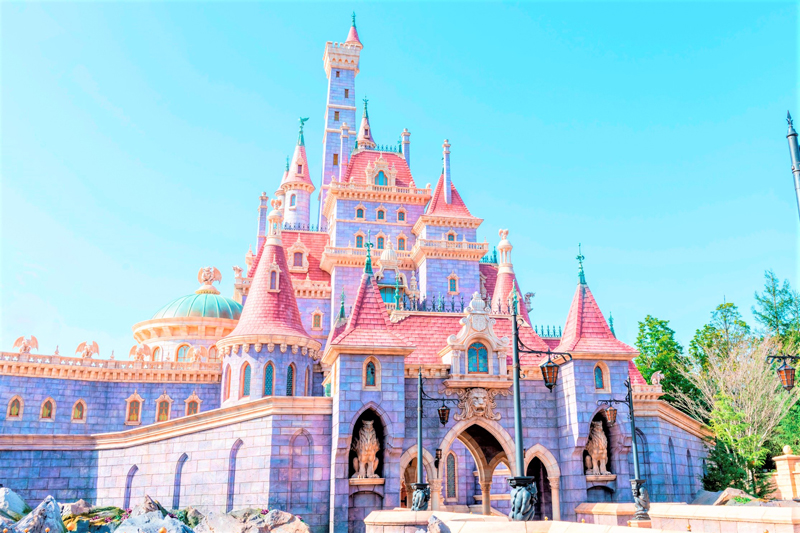
There is something exceptional about Tokyo Disneyland that makes it much better than Disney franchises’ other amusement parks. You must consider this place to see in Japan because Tokyo Disneyland has many rides and attractions that are found only in this park.
Come and meet all your favourite Disney Characters and have a wonderful time. Don’t cross Tokyo Disneyland out of your list of places to visit if you are not a big Disney fan. This amusement park can provide unforgettable memories despite that!
Fun Fact, This Disneyland is, in fact, their first amusement park that is built outside the US.
Price range: The ticket price for adults for one day is 7900-9400 yen; for middle-aged people, 7800-6600 yen and for children, it is 4700-5600 yen.
Best time to visit Tokyo Disneyland: The best time to visit Tokyo Disneyland has to be during the festivals like Christmas and Halloween when the entire amusement park is decorated in festive themes.
How to get to Tokyo Disneyland: You can reach Tokyo Disneyland from Tokyo station, located in Chiyoda City, Tokyo, in only 15 minutes. The train will take you to Maihama station, from where there are many shuttle services to take you to Tokyo Disneyland.
Timings: 9 am to 9 pm
Address: 1-1 Maihama, Urayasu, Chiba, Japan
Places to visit in tokyo with family
37. tokyo disneysea.
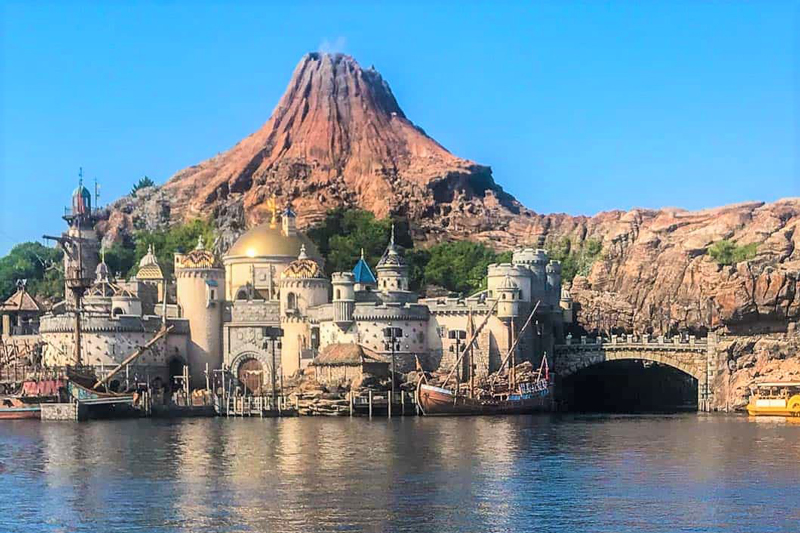
If you are a fan of mermaids, and pirate movies, find seaports fascinating and love nautical stuff in general, Tokyo DisneySea is a must-visit and a place to see in Tokyo with family . Tokyo DisneySea is the sister theme park of Tokyo Disneyland and one of its own kind.
It is located in Tokyo Disney Resort and has more nautical themes, overlooking Tokyo Bay. You are going to have a great time here visiting Its seven theme zones called the Port of calls. Some of these ports are recreations of the world’s most famous harbours, while others are created based on fictional works of Mysterious Island, Arabian Coast and Mermaid Lagoon.
There are many rides and other attractions that make this place a must-visit. So, don’t forget to visit Tokyo DisneySea to experience this unique place near Tokyo!
How to get to Tokyo DisneySea: as Tokyo DisneySea is located at the Tokyo Disney Resort, all you have to do is reach here via train from Tokyo station. This train will take you to Maihama station in 15 minutes, from where you can get on a shuttle to Tokyo Disneyland Resort.
Address: 1-13 Maihama, Urayasu, Chiba, Japan
38. Kamakura
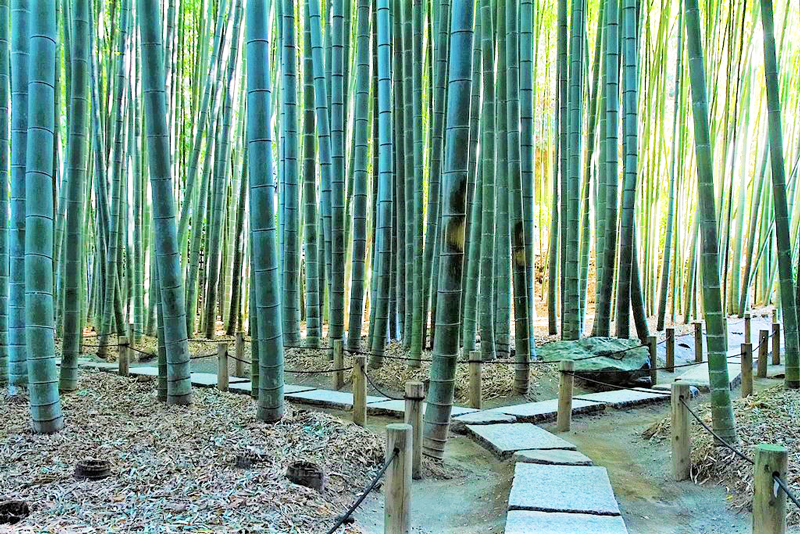
If you want to spend quality time in a place which would give you some relaxation from the chaos of a big city like Tokyo, then add Kamakura to your itinerary right now. Kamakura is the best place to see in Japan. It’s a coastal town in the Kanto region of Japan and is only about a one-hour train journey from Tokyo. It is also popularly known as the Kyoto of Eastern Japan, a top-rated tourist destination.
You are going to love visiting this place because the atmosphere of this entire city is serene, welcoming and relaxing. There are lots of shrines, temples and historical monuments like the Great Buddha of Kamakura- Kotoku-in, Hase-Dera temple, Inamuragasaki, etc. in Kamakura.
If you visit Kamakura in peak Summer, you can also go to its gorgeous beaches!
Best time to visit Kamakura: The best time to visit Kamakura has to be in June, July, September and October. August is one of the hottest months for Kamakura, and it’s too cold here in January and February.
How to get to Kamakura: To reach Kamakura from Tokyo, you can get on a train from Shinagawa Station and reach Kanakura Station in an hour.
39. Hitachi Seaside Park
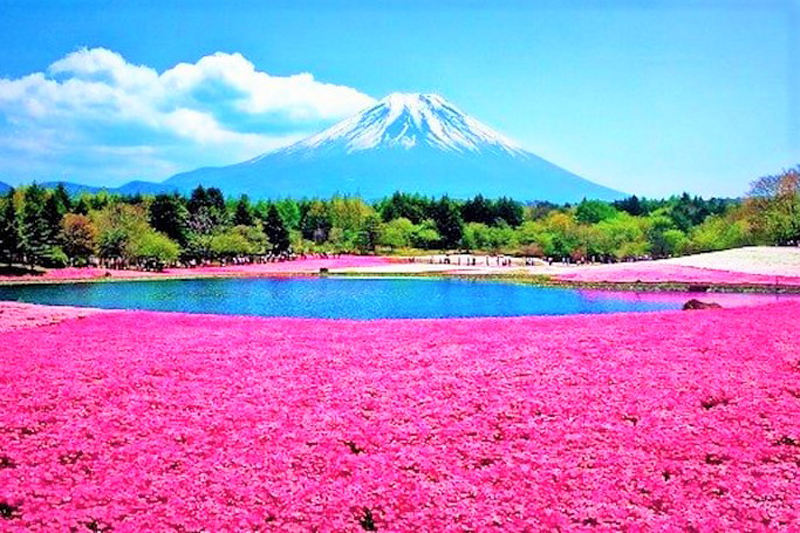
If you enjoy taking long walks in beautiful parks and gardens, then Hitachi Seaside Park is a place that you just cannot skip while visiting Tokyo. Hitachi Seaside Park is one of the best places to see in japan and another great location to visit as a day trip from Tokyo. Located near Mito in Ibaraki Prefecture, this beautiful park is known for its vast expanse of green land where thousands of seasonal flowers bloom.
The most popular flower of this park is the Blue Nemophila which adds beauty to this park during spring. Other flowers like narcissus and lake tulips are grown here. There is also an amusement park here, along with many walking and cycling trails. As the name suggests, this park is situated on the seaside, and you can easily see the Pacific Ocean from the hill.
Make sure that you bring your camera and take some really awesome pictures at Hitachi Seaside Park to post on your Instagram!
Timings: 9:30 am to 5 pm.
How to reach Hitachi Seaside Park: To reach Hitachi Seaside Park from Tokyo, you have to get on a train from Ueno Station to Katsuta Station. Exiting Katsuta Station, you have to grab a taxi to the location of Hitachi Seaside Park.
Best time to visit Hitachi Seaside Park: To see the flowers at their peak, the best time to visit Hitachi Seaside Park is from Late April to mid-May. But you can visit this park at any time of the year. Another time that I would like to visit here is in the fall (October) when green kokia bushes slowly change their colour and turn red.
Address: Mawatari, Hitachinaka, Ibaraki, Japan
40. Capsule Hotel
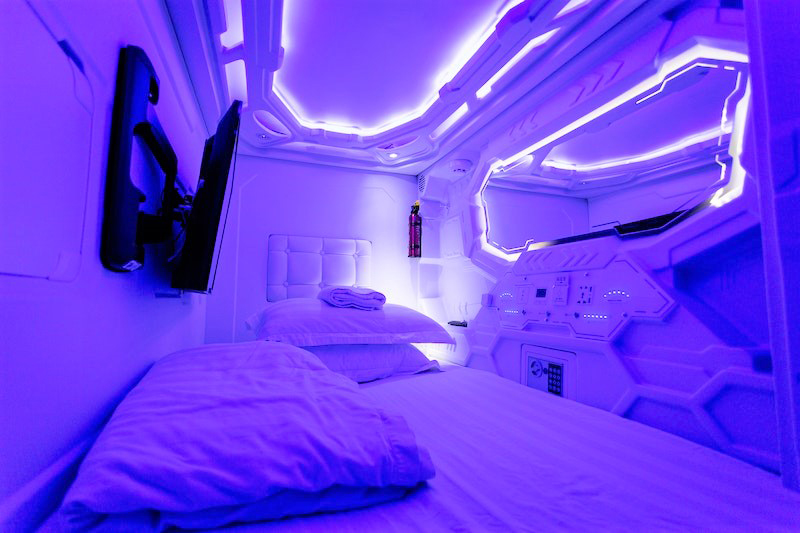
Cheaper as compared to standard hotels, staying in a capsule hotel is a unique thing to do in Tokyo. They can be found near every major transit hub like Haneda Airport and Tokyo Station and in neighborhoods of major tourist attractions like Shibuya and Akihabara.
The capsule hotels basically consist of capsules instead of a four-wall room. One person occupies one capsule that is essentially a bed size pod with a curtain as a door. Depending on which hostel you choose, you can go either to the budget-friendly capsule hotels, or if you want a more luxurious experience, you can stay at a luxurious Capsule hotel too.
Here is a list of the best Capsule Hotels according to your needs:
- Best Capsule Hotel for Couples in Tokyo: Tokyo Kiba hotel
- Best luxurious Capsule Hotel in Tokyo: First Cabin Hotel
- Best Capsule Hotel for back-packers in Tokyo: Nine Hours Otemachi-Imperial Palace
Something You should know: If you are travelling to Tokyo with your family, Capsule Hotel might not be a viable option for you. This is because Capsule hotels have separate bed areas, washrooms and lockers for men and women. Unless you and your family are comfortable staying divided, you might want to look for other good family-friendly hotels in Tokyo .
Price Ranges: from 2000 yen to 5000 yen per night.
41. Imperial Palace Tokyo
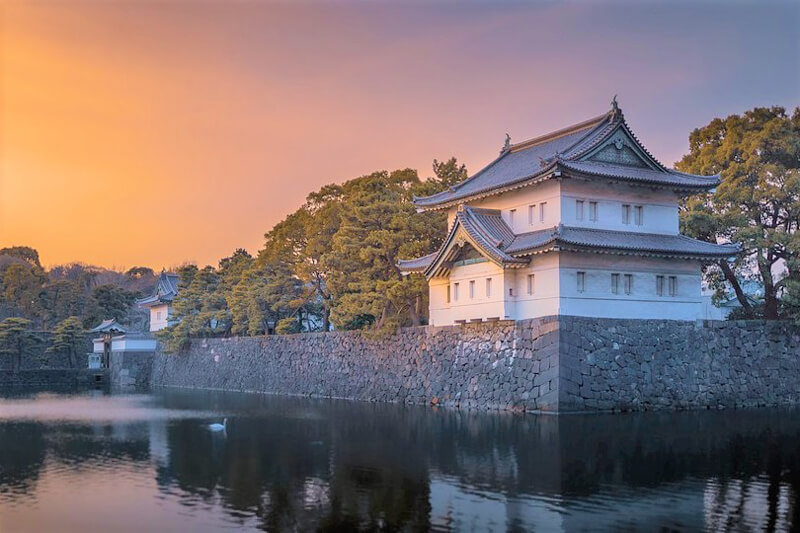
The Imperial Palace Tokyo is the main residence of the Emperor of Japan, located in the Chiyoda ward of Tokyo. The palace is situated on a site that has been used as a residence for the Emperor since the 15th century, but the current buildings were constructed in the 19th century after a fire destroyed the earlier structures.
The Imperial Palace is surrounded by a moat and large stone walls, and its grounds cover an area of over 1.15 square kilometers. The palace itself is not open to the public, except on January 2nd and December 23rd, when the Emperor makes public appearances on the balcony to greet well-wishers.
However, visitors can tour the East Gardens of the palace, which feature a variety of flora and fauna as well as ruins of the old Edo Castle that once stood on the site.
The centerpiece of the palace grounds is the Fushimi-yagura, a tower that was once part of the Edo Castle defenses. Other notable features of the palace grounds include the Nijubashi Bridge, which serves as the main entrance to the palace, and the Chrysanthemum Garden, which is home to many species of chrysanthemums, the imperial family’s official flower.
The Imperial Palace Tokyo is not only a residence but also a symbol of Japan’s history and culture. It is often used as a venue for important national events, such as the Emperor’s coronation ceremony and the New Year’s Greeting. Additionally, the palace is featured on the 10,000 yen banknote, one of the highest denominations in Japan.Its grand architecture, beautiful gardens, and rich history make it a must-visit destination.
Location: 1-1 Chiyoda, Chiyoda City, Tokyo 100-8111, Japan
Opening Hours: Tuesday – Saturday | 9:00 am – 11:15 am, 1:30 pm – 2:45 pm
Closed on Sunday and Monday
Where to Stay in Tokyo
There are many great neighborhoods to stay in Tokyo, depending on your interests and budget. Some popular areas for tourists include:
Picking the Perfect Place to Stay in Shinjuku :
In the heart of Tokyo, Shinjuku is a bustling neighborhood that is known for its vibrant nightlife, shopping, and entertainment options. It’s also one of the busiest transportation hubs in Tokyo, with multiple train and subway lines running through the area.
The towering skyscrapers in Shinjuku provide a stunning backdrop to the neon-lit streets. Not only that, but Shinjuku is also home to one of the most popular landmarks in the area, the Tokyo Metropolitan Government Building, which offers panoramic views of the city from its observation deck. So, if you are a fan of highrise buildings and skyscrapers, why not stay in Shinjuku?
A Unique Look at the Best Places to Stay in Shibuya :
Known for its famous crossing and trendy fashion boutiques, Shibuya is a popular spot for young travelers. It is particularly popular among young people, and it’s home to some of the city’s trendiest shops, restaurants, and bars.
As I’ve already mentioned in the first sentence, one of the most iconic landmarks in Shibuya is the Shibuya Crossing, a massive pedestrian crossing where thousands of people cross the street at the same time. The shopping scene of the neighborhood includes many high-end fashion boutiques, department stores, and streetwear shops. So, if you love vibrant fashion and entertainment scenes, Shibuya is the right place for you to stay in during your Tokyo itinerary.
Best Hotels to Stay in Asakusa, Tokyo :
Known for its beautiful temples, traditional street markets, and old-fashioned charm, Asakusa is a great place for history buffs. Home to the iconic Sensoji Temple, this historic neighborhood is a great place to experience traditional Japanese culture.
Apart from the Sensoji Temple, another popular attraction near Asakusa is the Tokyo Skytree, which is the tallest tower in Japan and offers breathtaking views of the city from its observation decks. The tower is located a short distance from Asakusa and is a popular spot for tourists who want to see the city from above.
Traditional markets that offer a wide range of goods, including traditional Japanese souvenirs, street food, and clothing are available in Asakusa.
Top Accommodations In Ginza to Make Your Stay Unforgettable :
Known for its upscale boutiques, high-end department stores, and gourmet restaurants, you might’ve already guessed that Ginza is a luxurious shopping and entertainment district. The district is home to many luxury fashion brands, including Chanel, Dior, and Louis Vuitton.
Visitors will also find a number of department stores, including Mitsukoshi, Matsuya, and Wako, which offer a wide range of high-end goods, from designer clothing to gourmet food. It’s the perfect destination for those who want to enjoy upscale shopping, explore gourmet dining options, and check out some cultural attractions, all in one place.
Roppongi is a vibrant neighborhood known for its lively nightlife, high-end restaurants, and cultural attractions. The area has a reputation as a hub for expats and is a popular destination for visitors who want to experience Tokyo’s cosmopolitan side.
One of the main attractions in Roppongi is the Mori Art Museum, which is located on the top floors of the Roppongi Hills complex. The museum features a wide range of contemporary art exhibitions, as well as stunning views of the city from its observation deck.
For those who want to experience Tokyo’s party scene, many bars, clubs, and live music venues are available in Roppongi. Overall, Roppongi is a unique blend of cultural attractions, nightlife, and high-end shopping and dining options.
Tokyo Station Area :
The Tokyo Station Area, also known as Marunouchi area, is a ibrant commercial and transportation hub located in central Tokyo. For exploring the main attractions of central Tokyo, this is the best place to stay at. The main attraction in the Tokyo Station Area is, of course, the Tokyo Station building itself, which is a stunning example of Western-style architecture.
The station serves as a major transportation hub, with many train and subway lines connecting the area to other parts of Tokyo and beyond. Surrounding the station, visitors will find a wide range of shopping and dining options, from high-end designer boutiques to popular chain stores and restaurants.
The recently renovated Tokyo Character Street, located in the underground shopping area of the station, is a must-visit for fans of anime and manga, featuring a wide range of themed stores and merchandise. Whether you’re a first-time visitor or a seasoned Tokyo traveler, the Tokyo Station Area, due to its unique blend of historic landmarks, modern architecture, high-end shopping and dining, and convenient transportation connections, might be exactly what you are looking for.
Ueno and Akihabara:
Ueno and Akihabara are two unique neighborhoods in Tokyo that offer visitors a glimpse into different aspects of Japanese culture. While Ueno is known for its park, museums, and markets, Akihabara on the other hand, is known for its electronics, anime, and gaming culture.
Ueno boasts the presence of Ueno Park. It is a large public park that is famous for its cherry blossom trees, which bloom in the spring. Within the park, visitors will find several museums, including the Tokyo National Museum, which houses a vast collection of Japanese art and artifacts.
The Ameyoko Market, located just outside the park, is a bustling outdoor market where visitors can find a variety of goods, including food, clothing, and souvenirs. Akihabara is home to numerous electronics stores, many of which specialize in video games, manga, and anime.
It is also home to many arcades and gaming centers where visitors can try out the latest games and virtual reality experiences. Akihabara is a must-visit for fans of anime and manga, as it is home to several specialty stores that sell a wide range of merchandise. So, these two nearby neighborhoods are perfect for both history buffs and anime fans.
Ultimately, it depends on what you want to see and do in Tokyo. Consider your itinerary and preferences and choose a neighborhood that’s convenient for you.
Travel Tips for Tokyo
To make your vacation in Tokyo even more efficient and wonderful, here are some of the best tips for you:
- Prepare a Japan Rail Pass to travel around Japan at the cheapest rates.
- Have a Portable wifi device and a Japan travel sim prepared beforehand to save time.
- Japan has a Travel visa exemption arrangement with over 60 countries. Make sure, with a Japanese diplomatic mission, whether you will need to obtain a visa or not.
- While you are visiting the popular tourist locations, why don’t you try to take a walk around the back streets of Tokyo and experience Japan from a different perspective? It is another unique thing to do in Tokyo with your family to make unforgettable memories.
- While you are in Tokyo, don’t forget to try out the delicious snacks, drinks and other food items that are sold in the department stores here.
- To encourage shopping, Travel visa holders get an exemption from the 8% consumption tax on all goods. Make sure to check with the shop if you can make a tax-free purchase. For this, all you need to do is bring your passport with you!
- Another thing that you should keep in mind while in Tokyo or any other place in Japan is that there is no tipping culture here. Tipping can be seen as a sign of disrespect too. Also, make sure that while paying the bill, you give the money with both hands and inside an envelope.
How to Stay Safe in Tokyo
Tokyo is generally a very safe city, but as with any city, it’s important to take some basic precautions to stay safe.
Here are some tips:
Be aware of your surroundings: Pay attention to your surroundings and avoid walking alone in unfamiliar or poorly lit areas.
Use common sense: Use common sense when it comes to personal safety, such as not leaving valuables unattended and not sharing personal information with strangers.
Stay alert in crowded areas: Be cautious in crowded areas, especially during rush hour or at large events, as pickpocketing can occur.
Follow traffic rules: Pay attention to traffic lights and crosswalk signals when walking, as traffic in Tokyo can be heavy.
Be mindful of natural disasters: Tokyo is prone to earthquakes, typhoons, and other natural disasters, so it’s important to be prepared and follow the instructions of local authorities in the event of an emergency.
Use caution when drinking: If you choose to drink alcohol, be cautious and avoid drinking to excess, as alcohol-related incidents can occur.
Follow local customs and laws: Be mindful of local customs and laws, such as removing shoes when entering homes and temples, and not smoking in non-smoking areas.
By following these basic safety tips and exercising common sense, you can enjoy Tokyo and stay safe at the same time.
Tokyo Packing Guide
Packing for a trip to Tokyo can be overwhelming, but with a little planning and preparation, you can pack efficiently and make the most of your time in this vibrant city. Here’s a detailed Tokyo packing guide to help you get started:
- Clothing: Tokyo experiences four distinct seasons, so pack accordingly. In general, lightweight clothing is best for the summer months, while warmer clothing is necessary for the winter. Spring and fall can be unpredictable, so it’s best to bring layers. It’s also a good idea to pack comfortable walking shoes, as Tokyo is a city that is best explored on foot.
- Travel documents: Make sure to pack your passport, visa (if applicable), travel insurance documents, and any other important travel documents in a secure place. It’s also a good idea to make photocopies of your passport and other important documents, in case of loss or theft.
- Electronics: Tokyo is a tech-savvy city, so you may want to bring your phone, camera, laptop, or other electronic devices. It’s a good idea to bring a universal power adapter, as the power outlets in Japan are different from those in many other countries.
- Money: It’s important to bring enough cash and credit cards to cover your expenses while in Tokyo. Many places in Tokyo, including smaller restaurants and shops, may not accept credit cards, so it’s a good idea to carry cash with you. You can withdraw cash from ATMs in Tokyo, but make sure to check with your bank beforehand to ensure that your card will work in Japan.
- Toiletries and medication: Pack your essential toiletries, including toothpaste, toothbrush, shampoo, conditioner, and body wash. If you take any prescription medication, make sure to bring enough to last your entire trip, as it may be difficult to get refills in Tokyo.
- Weather-specific items: Depending on the season, you may need to pack weather-specific items, such as sunscreen and a hat for the summer, or a warm jacket and gloves for the winter.
- Luggage: Make sure to pack your items in a sturdy, lightweight suitcase or backpack. Consider packing a smaller, collapsible bag for day trips and excursions.
- Miscellaneous items: Finally, don’t forget to pack any miscellaneous items that you may need, such as a reusable water bottle, snacks, and a travel guidebook.
By following this Tokyo packing guide, you’ll be well-prepared for your trip to this exciting and vibrant city. Remember to pack light and leave room in your luggage for any souvenirs you may want to bring home.
Among the best places to visit in Japan is its capital city, Tokyo. Tokyo is the perfect blend of old traditions and modern technology. Full of skyscrapers, museums and shrines, you must visit Tokyo to experience a unique culture, traditions, delicious cuisine and efficient lifestyle.
Also, visiting Tokyo will make you realise how much we have come ahead in terms of technology. Also, Tokyo is the best place to start with your solo travel journey, and it is safe for female travellers too!
Don’t you also want to visit a place that has efficiently preserved its traditions, language and culture while working on futuristic technology?
Do read our other blogs on travelling through Japan to make the most out of your trip! Please leave a comment and share your travel story with us.
Frequently Asked Questions (FAQs)
What is the prettiest place in Tokyo?
Tokyo is full of stunning places to visit, but some of the most beautiful include the cherry blossom-filled parks of Shinjuku Gyoen and Ueno Park, the traditional gardens of Rikugien and Koishikawa Korakuen, and the iconic Sensoji Temple in Asakusa.
What is the coolest place in Tokyo?
The main attraction behind Tokyo among tourists is its ancient history, Japanese culture and futuristic technology, and unique locations like the main cafes and Otaku district.
Is 7 days in Tokyo too much?
You can visit most tourist attractions in Tokyo in 7 days. But if you can, try to stay longer and explore this city for its hidden gems.
What’s Tokyo famous for?
Tokyo is famous for its bustling city life, delicious food, advanced technology, unique fashion, beautiful temples and shrines, anime and manga culture, cherry blossom season, efficient public transportation, neon lights and nightlife, and its role as a global economic powerhouse.
What are the best places to visit in Tokyo at night?
Some of the best places to visit in Tokyo at night include the Tokyo Tower, Shinjuku’s Golden Gai, the Robot Restaurant, the Kabukicho district, and the Odaiba waterfront. Other popular options include visiting a traditional Japanese izakaya, exploring the city’s vibrant nightlife scene, or taking a nighttime stroll through one of Tokyo’s many parks or gardens.
Do I need a visa to visit Tokyo, Japan?
Yes, you will need to obtain a visa to visit Tokyo, Japan, if your country is not on the list of countries that have travel visa exemption arrangements with Japan.
Is Tokyo cheap for tourists?
Although Tokyo cannot be called a cheap place to visit, it is still relatively cheaper than some other major cities in the world, like London, Paris, New York, etc. The main reason behind this is that Japan places a high value on the quality of products and hence higher prices. If you don’t splurge at high-end places, you can still spend a decent amount on rather memorable things do in Tokyo.
What is the best time to visit Tokyo?
The best time to visit Tokyo is during the spring and fall seasons. This means from March to May to enjoy the spring season in Tokyo when it is also the cherry blossom season here. For fall, come during September, October and November and enjoy leaves changing colours and amazing weather.
Is Japan friendly to tourists?
One of the best things about visiting Tokyo and other locations in Japan is that people here are very welcoming and friendly towards tourists. They even appreciate it when you try to blend in with their culture.
Related Posts
The ultimate guide to the best time to travel to japan, discover the serenity of oshino hakkai village: a complete guide, 10-day japan itinerary: exploring tokyo, kyoto, and osaka, explore asakusa: top 21 things to do and see.
Save my name, email, and website in this browser for the next time I comment.
This site uses Akismet to reduce spam. Learn how your comment data is processed .
Type above and press Enter to search. Press Esc to cancel.
Unveiling Tokyo’s Secrets: The Ultimate Guide on What to Do in Tokyo!

We use affiliate links, and receive a small commission if you make purchases through them. Find out more here .
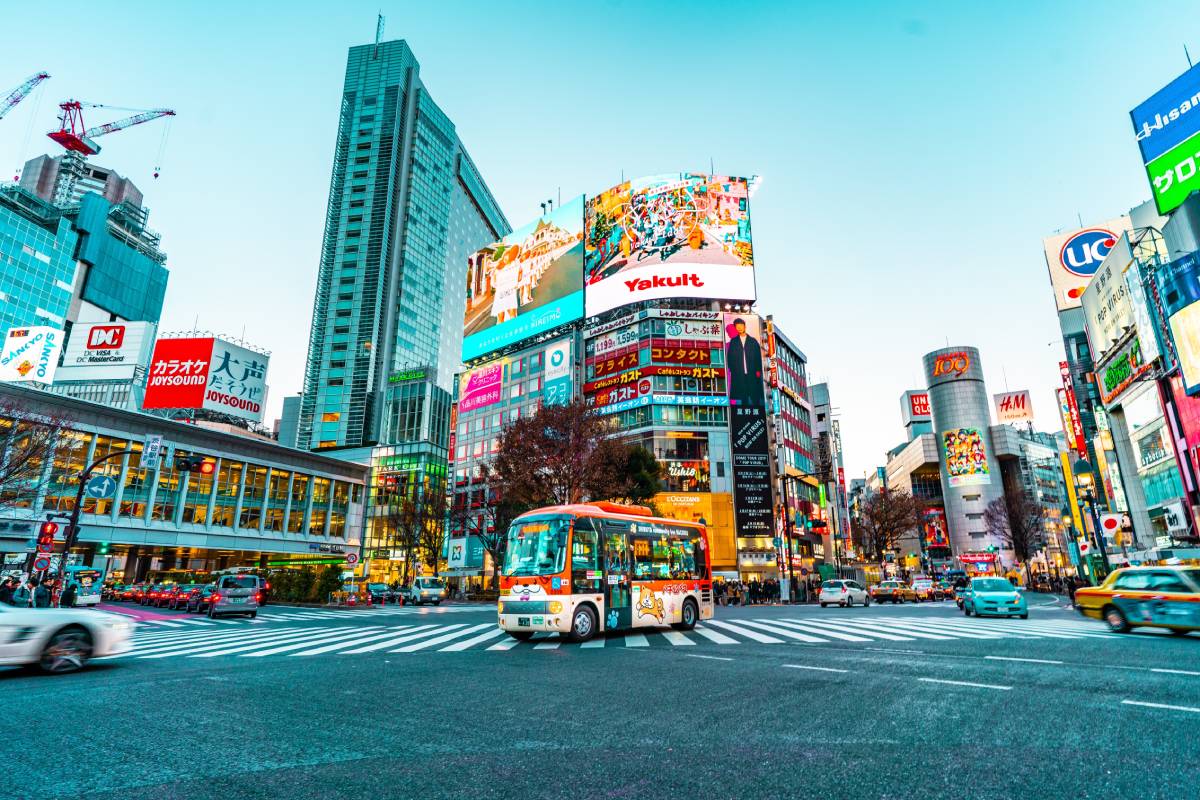
- 31.19 million tourists flocked to Tokyo in 2019.
- Tokyo houses more three-star Michelin restaurants than any other city.
- From historic temples to futuristic art exhibits, Tokyo offers a unique blend of the old and new.
Why Tokyo Reigns Supreme on Global Travel Lists
According to the Japan National Tourism Organization , Tokyo welcomed over 31.19 million tourists in 2019, solidifying its rank as one of the globe’s top travel destinations. But numbers alone don’t narrate Tokyo’s tale. It’s the experiences, flavors, and adventures that do.
The Gourmet’s Paradise
Anthony Bourdain once quipped, “Tokyo would probably be the foreign city if I had to eat one city’s food for the rest of my life, every day. It would have to be Tokyo…” And rightly so! Tokyo boasts 14 three-star Michelin restaurants , more than any other city on Earth. This includes the globally renowned sushi restaurant Sukiyabashi Jiro and the exquisite French-inspired Ryugin .
From Serene Shrines to Electric Streets: Unmissable Tokyo Experiences
Blending tradition with modernity, Tokyo provides a plethora of experiences tailored for every kind of traveler. Let’s dive into some of them:
The Heartbeat of Tokyo: Shibuya Crossing
Perhaps no other location encapsulates the pulsating energy of Tokyo as much as Shibuya Crossing . Often referred to as the ‘Times Square of Tokyo’, this iconic scramble crossing is an epitome of organized chaos. And yet, witnessing and participating in its ballet of moving people is more than just a tourist’s rite of passage—it’s a deep dive into the rhythm of Tokyo .
Located just outside Shibuya Station , the crossing is surrounded by enormous screen billboards and adorned with an orchestra of neon lights. These bright ads illuminate the sky, lending a cinematic backdrop to the scene—a setting that might feel familiar due to its frequent appearances in movies and travel shows. Yet, no film can capture the exhilarating feeling of being right in the middle of it.
Insider Tip by Flora Goodwin : For those seeking the quintessential Shibuya Crossing photo or simply a bird’s-eye view, head to the Magnet by Shibuya 109 building. Their rooftop offers an impeccable vantage point. Alternatively, grab a window seat at the Starbucks across the street—a perfect blend of iconic views and comforting brews.
Asakusa & Senso-ji Temple: A Timeless Sojourn in Tokyo
Asakusa is often described as the heart and soul of Edo (old Tokyo). As one steps into this district, there’s an evident shift in atmosphere. The skyscrapers and neon lights of modern Tokyo transition into low-rise wooden buildings and traditional craft shops—a whisper from the past amidst the city’s constant hum.
The heart of Asakusa is undoubtedly the Senso-ji Temple , Tokyo’s oldest and most significant Buddhist temple. Founded in 628 AD, its rich history stretches back nearly 1,400 years. The temple is dedicated to Kannon , the goddess of mercy, and attracts millions of pilgrims and tourists each year, making it one of the most visited spiritual sites worldwide.
The adventure begins at the Kaminarimon or “Thunder Gate”, where a massive red lantern sways gently, inviting visitors into the temple’s precincts. This gate leads to Nakamise Street, a bustling promenade lined with quaint shops selling traditional goods, from kimonos and folding fans to artisanal sweets. Every step on this street is a dance between the past and the present, an olfactory journey of incense, fresh street food, and aged wood.
Insider Tip by Flora Goodwin: Visit Nakamise in the evening when the crowds thin out. The soft lighting, fewer tourists, and the distant sound of temple bells create a magically serene atmosphere. And, don’t forget to try ‘ningyo-yaki’—a delightful snack shaped like dolls and filled with sweet red bean paste.
TeamLab Borderless: A Digital Dreamscape in Tokyo
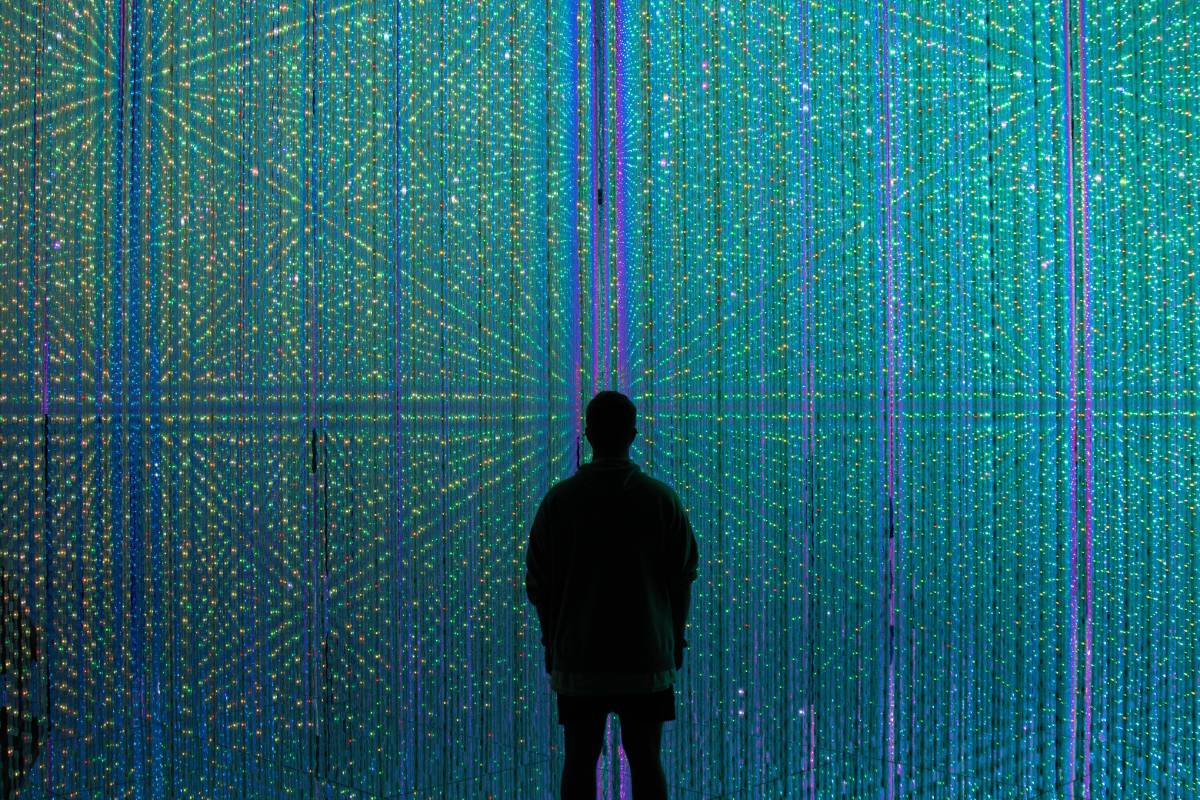
Conceived by the global art collective, TeamLab, Borderless isn’t just about observing art; it’s about becoming a part of it. One moment you might find yourself amidst cascading digital waterfalls , and in the next, you could be chasing projections of butterflies fluttering past you. In this world, art isn’t bound by frames or pedestals; it sprawls across walls, floors, and even one’s body.
Insider Tip by Flora Goodwin: Ensure your phone or camera is fully charged. You’ll want to capture moments, though no photo can truly do justice to the personal experiences you’ll gather. And wear comfortable shoes—you’ll be doing a lot of exploring !
Shinjuku Gyoen: Tokyo’s Tranquil Garden Escape
Amidst the pulsating rhythm of Tokyo’s skyscrapers and bustling streets, Shinjuku Gyoen emerges as an expansive haven of tranquility and natural beauty. Spanning over 58 hectares in the heart of Tokyo’s Shinjuku ward, this national garden stands as a vivid testament to the city’s harmonious blend of modernity and tradition.
Originally established as an imperial garden in the early Edo Period, Shinjuku Gyoen has gracefully evolved over centuries, absorbing influences from different landscaping styles. The garden seamlessly marries three distinct styles: a formal French garden with its symmetric designs, an English landscape garden with wide-open lawns, and a traditional Japanese garden , characterized by tranquil ponds and winding pathways.
As winter fades, the garden bursts into a riot of colors, with over a thousand cherry trees cloaking the landscape in delicate shades of pink and white. It’s a favorite spot for “hanami” (cherry blossom viewing), a cherished Japanese tradition that celebrates the ephemeral beauty of sakura blooms.
Insider Tip by Flora Goodwin: While the cherry blossom season attracts large crowds, visit during the early hours to enjoy a relatively serene hanami experience. And don’t forget your picnic blanket!
Roppongi Hills: The Pinnacle of Tokyo’s Modernity
Nestled in the heart of Tokyo, Roppongi Hills stands as a monolithic testament to Japan’s forward-thinking urban development.
Spanning over 27 acres, Roppongi Hills isn’t just a commercial center; it’s a cultural hotspot. Dominated by the imposing Mori Tower —a 54-story behemoth—it houses office spaces, apartments, restaurants, and boutiques. But more than its commercial facets, it’s the integration of culture that makes Roppongi Hills truly stand out.
Art aficionados are particularly drawn to the Mori Art Museum , which is housed within the complex. Focusing on contemporary art, the museum showcases innovative exhibitions that bridge the gap between the East and the West, traditional and modern, art and life. Its thoughtful curation is a reflection of Tokyo’s position as a global art hub.
Insider Tip by Flora Goodwin: For an unparalleled view of Tokyo, head to the Mori Tower’s observation deck. On a clear day, you can even catch a glimpse of Mount Fuji, juxtaposed against the urban sprawl. The evening vista, with Tokyo’s dazzling lights, is especially mesmerizing.
For those looking to indulge in retail therapy, Roppongi Hills offers a plethora of , ranging from international luxury brands to bespoke local designers. Post-shopping, visitors can retreat to one of the many world-class restaurants and cafes. Whether you have a palate for authentic Japanese sushi or a craving for Italian delicacies, the gastronomic variety is bound to satiate all culinary desires.
In many ways, Roppongi Hills encapsulates Tokyo’s essence—a harmonious blend of the age-old and the avant-garde, the commercial and the cultural, the bustling and the serene.
Insider Tip : While mainstream attractions are mesmerizing, Flora Goodwin highly recommends wandering off the beaten path. Explore alleys in Golden Gai or taste authentic street food in Ebisu Yokocho .
How many days are enough for Tokyo?
Most travelers recommend at least 4-5 days to fully appreciate Tokyo’s magic, but you could easily spend weeks exploring its nooks and crannies!
Is Tokyo expensive for tourists?
While Tokyo can be pricey, budget options for food, accommodation, and attractions are widely available, making it feasible for all types of travelers.
What’s the best time to visit Tokyo?
Spring (March-May) is perfect for cherry blossoms, while autumn (September-November) offers pleasant temperatures and vibrant foliage.
Do I need to know Japanese to get around?
While it’s helpful, many Tokyo residents understand basic English, and there’s ample English signage in popular tourist spots.
Is Tokyo safe for tourists?
Absolutely! Tokyo consistently ranks as one of the world’s safest cities, but as always, exercise common travel precautions.
Wrapping Up Tokyo’s Magic
In the realm of travel, Tokyo is a shimmering jewel that promises unique memories. Whether you’re a food lover, history enthusiast, or a futuristic tech nerd, Tokyo has a little (or a lot) of everything. So pack your bags and let Tokyo surprise you!
- Japan National Tourism Organization
- Michelin Guide
- Quotes from Anthony Bourdain
You Might Also Enjoy

Leave a Reply Cancel reply
Your email address will not be published. Required fields are marked *
Save my name, email, and website in this browser for the next time I comment.
Featured in

GET CONNECTED
Follow Clever Journey on social media for travel tips, packing hacks, and latest updates!
SUB TO NEWSLETTER
Subscribe to our newsletter to get the latest travel tips, packing hacks, gear reviews, and bargain deals straight to your inbox. We hate spam, so we’ll send only the most important stuff.

The Most Iconic Anime Landmarks You Can Visit in Real-Life Japan
W hat if we told you that you could actually see real Studio Ghibli movie sets in real life? Well, not all of them—the iconic Howl's Moving Castle isn't, technically, a real place… But some buildings and landmarks featured in the world-famous movie actually are, and the same goes for many other fan-favorite anime films and shows.
If you needed yet another reason to visit Japan , anime-inspired travel should definitely be on your list. From iconic TV shows to legendary movies, many anime creators took inspiration from real Japanese locations to create their compelling narratives, and some of the most famous ones are actually easy for fans to visit.
To help anime fans experience their favorite shows and films in real life, the team at Japan Rail Pass just put together a comprehensive guide of the best real-life locations mirroring some of the most iconic settings.
"Visiting Japanese anime locations in real life is an incredible experience that allows fans to step directly into the worlds they've adored on screen," Haroun Khan, founder of Japan Rail Pass, said in a statement. "These places aren't just settings; they're living, breathing parts of Japanese culture. Exploring them offers a chance to feel the same excitement and wonder as your favorite characters and create unforgettable memories that will stay with you long after the trip is over."
Death Note aficionados will be very pleased to learn that, by heading to the Hibiya Park Seagull Fountain in Tokyo, they will find themselves in a key location of the series. It's where Light Yagami, the protagonist, tests the Death Note—and this site is imprinted in the memory of many fans.
If you'd like to experience some Higurashi no Naku Koro ni (in English, Higurashi: When They Cry ) in real life, instead, just head over to Shirakawa-go, in the Gifu Prefecture. Walking through the streets, you'll soon realize that the place looks familiar, and for a good reason. The fictional village of Hinamizawa was actually inspired by Shirakawa-go.
Studio Ghibli fans won’t be disappointed, either. Remember the bathhouse frequented by spirits and monster-like creatures of all sorts? Well, it kind of exists—but you won’t run into No-Face there. It’s Dogo Onsen, located in Matsuyama in Ehime Prefecture, and it's an actual hot springs and bathhouse center where visitors can take a pleasant soak surrounded by traditional Japanese style features and decorations.
Take a look at 15 top real-life Japanese anime locations below:
Location : Hibiya Park Seagull Fountain, Kasumigaseki, Chiyoda City, Tokyo
Location : Suga Shrine Staircase, Tokyo
Location : Radio Kaikan, Akihabara, Tokyo
Location : Harajuku, Tokyo
Location : Dogo Onsen, Matsuyama, Ehime Prefecture
Location : Chichibu, Saitama Prefecture
Location : Yokohama Chinatown
Location : Takayama, Gifu Prefecture
Location : Tokyo Metropolitan Government Building
Location : Odakyu Line West Entrance Railway Crossing, Shibuya City, Tokyo
Location : Nishinomiya, Hyogo Prefecture
Location : Hijiribashi Bridge, Kanda River, Chiyoda City, Tokyo
Location : Shirakawa-go, Gifu Prefecture
Location : Lake Motosuko, Yamanashi Prefecture
Location : Omi Jingu, Otsu, Shiga Prefecture Want more Thrillist? Follow us on Instagram , TikTok , Twitter , Facebook , Pinterest , and YouTube .
Serena Tara is a Staff Writer on the News team at Thrillist. She will beg you not to put pineapple on pizza. Follow her on Twitter and Instagram .


IMAGES
VIDEO
COMMENTS
Some parts of the palace is open to the public, and you can enjoy a relaxing walk in the huge park called Kokyo Gaien National Garden. 2. Sensoji Temple Asakusa. Sensoji Temple is a Buddhist temple in Asakusa, Tokyo. It is known as the oldest temple in Tokyo with the long history dating back to 628.
There's so much to see in and around the Imperial Palace so a visit to one of the most important historical places in Tokyo should be firmly on your list. While most of the areas in the palace have been restored or recreated, one of the oldest locations is the Fujimi-Yagura Watchtower in the Edo Castle area.
Rich in historical landmarks, Tokyo has no end of castles, temples, tea shops, and houses to help you step back into an age long past. From warriors to writers, the daily lives of the public or the well to do, echoes of their existence still ring throughout Tokyo. With so many spots to visit, consider booking a special walking tour that focuses ...
I Walking down the main street is a great way to visit the many restaurants and shops in the area and helps break up... See tours. 2024. 9. Tokyo National Museum. 2,263. Points of Interest & Landmarks • Art Museums. Ueno, Asakusa.
Historical Sites in Tokyo - Akasaka Palace. Akasaka Palace occupies what was once an area of the Kishū Domain in the Tokugawa Period of Japan. The parcel of land was presented to the Imperial Household following the end of the Meiji Restoration. Construction of the Akasaka Palace commenced in 1899 and followed a Neo-Baroque design.
Historic Sites in Tokyo, Japan. 1. Tokyo Central Railway Station. The exterior is a architecture delight, beautiful and stunning design, the inside is a bit like a maze and you deffin... 2. The East Gardens of the Imperial Palace (Edo Castle Ruin)
11. Visit the 1923 Great Kanto Eartquake Memorial Museum. On September 1, 1923, Tokyo was hit by one of the worst earthquakes ever. Tens of thousands of inhabitants lost their lives and a large part of the city went up in flames as a result of the force.
Japan's capital and largest city. Tokyo (東京, Tōkyō) is Japan's capital and the world's most populous metropolis. It is also one of Japan's 47 prefectures, consisting of 23 central city wards and multiple cities, towns and villages west of the city center. The Izu and Ogasawara Islands are also part of Tokyo. Prior to 1868, Tokyo was ...
Tokyo National is a must to visit if you are in Tokyo. It has a large collection of objects of all kinds, from old ceramic to 19th Century paintings. Well organized, very informative displays, a lot to learn. It is really easy to spend there the whole day, especially in the summer heat.
4. Meiji Shrine. 📍 1-1 Yoyogikamizonocho, Shibuya City, Tokyo 151-8557, Japan. Meiji Shrine is certainly a worthwhile experience, especially when exploring the myriad places to visit in Tokyo. Nestled in a serene, evergreen forest, this Shinto shrine offers a peaceful retreat from the bustling city.
19 The Hakone Open-Air Museum. The Hakone Open-Air Museum, established in 1966, aims to blend nature and art seamlessly. It spans across 77,000 acres of Japanese countryside and showcases an extensive collection from renowned international and local artists such as Miro, Rodin, and Yoshitatsu Yanagihara.
清澄庭園. Address 3-3-10 Kiyosumi, Koto-ku, Tokyo-to 135-0024. Kiyosu Bridge. 清洲橋. Address 7-1 Nihonbashinakasu, Chuo-ku, Tokyo-to 103-0008. 2. Shibamata: Travel Back to the Edo Period. Cobblestones and wood are the main characteristics of the streets of Shibamata, a shitamatchi old town area in Tokyo's northeast.
The neighborhood is still lined with traditional-style snack stores and retail stores, but the sacred Taishakuten Temple is the most impressive old-Tokyo feature. The temple was constructed in 1692. Around the area is a traditional garden complex that also features a 500-year-old pine tree, which some say looks like a dragon, so keep an eye out!
Tokyo - a vibrant city where the past meets present in an eclectic mix of traditional history and modern trends. Renowned as the birthplace of various cultures, the city also is known to the world for its famous sightseeing spots, delicious gourmet food, and accessibility to an abundance of interesting experiences, from the olden to the modern! With so many things to do and so little time, it ...
Pick the best sights and create your daily travel itinerary. Sync your plans to mobile apps, get offline maps and hit the road. ... Must Visit Historical Places in Tokyo. Fujimi-yagura (Mt Fuji… @ WPPilot Tokyo Imperial Palace. The stunning residence of the Japanese emperor located on the former site of Edo Castle. See on map.
Free admission for junior high students and under. 4. The Japan Folk Crafts Museum. Opened by Soetsu Yanagi in 1936, the Japan Folk Crafts Museum is the ultimate location to celebrate mingei (folk crafts). The museum's collection is made up of around 17,000 craft works, including textiles, woodwork, paintings and other crafts.
Historical Places in Tokyo. Chosen as the world's most satisfying city for travel, Tokyo will surprise you with its diverse offerings, including spiritual sites, historical locales, natural sceneries, cultural experiences and lip-smacking food.
There's so much to see in and around the Imperial Palace so a visit to one of the most important historical places in Tokyo should be firmly on your list. While most of the areas in the palace have been restored or recreated, one of the oldest locations is the Fujimi-Yagura Watchtower in the Edo Castle area. The three-storey watchtower ...
Kanda Myojin. 4.3 (995 Votes) Religious Site, Temple, Historical Site. If you want to experience something really different and historically significant then head on to Kanda Myojin. The place is a Shinto shrine located in Chiyoda, Tokyo, Japan. The shrine is almost 1,270 years old and has been rebuilt many times due to fires and earthquakes.
Tokyo is famous for its countless landscapes, historical sites, monumental architectural works, bustling shopping centers or beautiful peaceful green parks. Besides, Tokyo is also the cultural and historical center of Japan with traditional museums, historical temples, shrines or areas with unique cultural features. ... top places to visit in ...
Tokyo Tourist Attractions Map 1. Explore Senso-ji Temple: Discover Tradition and Seek Omamori. Sensō-ji Temple, also known as Asakusa Temple, is one of the oldest temples in Tokyo.Founded in 628 AD, it has a rich history and is a must-visit destination for many tourists coming to Tokyo for the first time.The temple's architecture, sculptures, and traditional festivals showcase the rich ...
Top Attractions in Tokyo. See all. These rankings are informed by Tripadvisor data—we consider traveler reviews, ratings, number of page views, and user location. 2024. 1. Shinjuku Gyoen National Garden. 6,264. Gardens. Tranquil gardens with a fusion of traditional Japanese elements and open spaces, known for cherry blossoms and historic trees.
Here's our pick of 10 essential historic sites in Japan. 1. Meiji Jingu. Meiji Jingu is a sacred shrine to Emperor Meiji, modern Japan's first emperor following the fall of the Samurais, and his wife, Empress Shoken. Made up of three sections, Meiji Jingu consists of a series of shrine buildings, inner and outer gardens, and a Meiji ...
Sensō-Ji: Visit Tokyo's Oldest Temple. Located in Asakusa, Senso-Ji is another popular place to visit in Tokyo with the family, which has over 30 million visitors yearly. It is the oldest temple in Tokyo and is especially significant too. With its blazing red Kaminarimon Gate, this Buddhist temple is full of the hustle and bustle with its shopping streets.
Senso-ji Temple, Asakua, Japan. getty. Just a short train ride away is the historic district of Asakusa, where travelers can step back in time and explore the city's more traditional side.
From historic temples to futuristic art exhibits, Tokyo offers a unique blend of the old and new. Why Tokyo Reigns Supreme on Global Travel Lists According to the Japan National Tourism Organization , Tokyo welcomed over 31.19 million tourists in 2019, solidifying its rank as one of the globe's top travel destinations.
Discover the real-life landmarks and buildings featured in iconic Studio Ghibli movies and other popular anime films during your visit to Japan.
Being a young mother comes with benefits and challenges, as highlighted by a man whose story recently gained attention on Reddit. In a post from August 22, which has racked up 8,600 upvotes, u ...